

The Cost of Travel in South Korea: My 2024 Budget Breakdown

I was so excited to return to South Korea.
I haven’t been to many places where I’ve felt such a cohesive blend of old and new, but South Korea is one of them. Steeped with 5000 years of culture and history, but integrated with modern music, technology, and infrastructure, it’s a country that surprised and delighted me at every turn.
And Seoul? It’s one of my favourite cities in the world. If you think New York City is the place that never sleeps, just wait until you arrive in Seoul. During my first visit to the country, I landed in the South Korean capital expecting to spend three or four days in town, but ended up leaving after three weeks . Yes, I loved this city so much that I simply couldn’t bring myself to leave.
I’d be walking the bustling streets of popular neighbourhood Hongdae in the early hours of the morning and realise that there was nowhere on earth quite like it. Street performers are sharing their best routines to the latest K-pop songs, shops are bright and open, karaoke is everywhere, and clubs have lines out the door. Talk about a sensory overload, but in the best possible way.
On my return visit, though, I knew I needed to see more of this wonderful country. South Korea is so much more than it’s biggest city.
From the colourful houses in Busan to the scenic coastal views and tea plantations on Jeju Island to the towering mountains of Seoraksan National Park: I loved each and every destination I visited in the country. Get ready to be swept away by all that Korea has to offer, from Korean BBQ, K-pop, karaoke, palaces, temples, and arcades.
But how are the prices? In this post-pandemic world, the cost of travel has been skyrocketing, but this country has managed to remain relatively inexpensive.
Today, I’m going to be revealing exactly how much you can expect to spend on a trip to South Korea.
I’ve been recording every single dollar, peso, and baht that I’ve spent on my travels since 2011 (I now have over 65 budget breakdowns on the site !), aiming to give you an accurate picture of how much you can expect to spend in every country around the world. Today, it’s South Korea’s turn and I’m so excited to start sharing.
Grab yourself a cold bottle of soju because this post’s a long one!
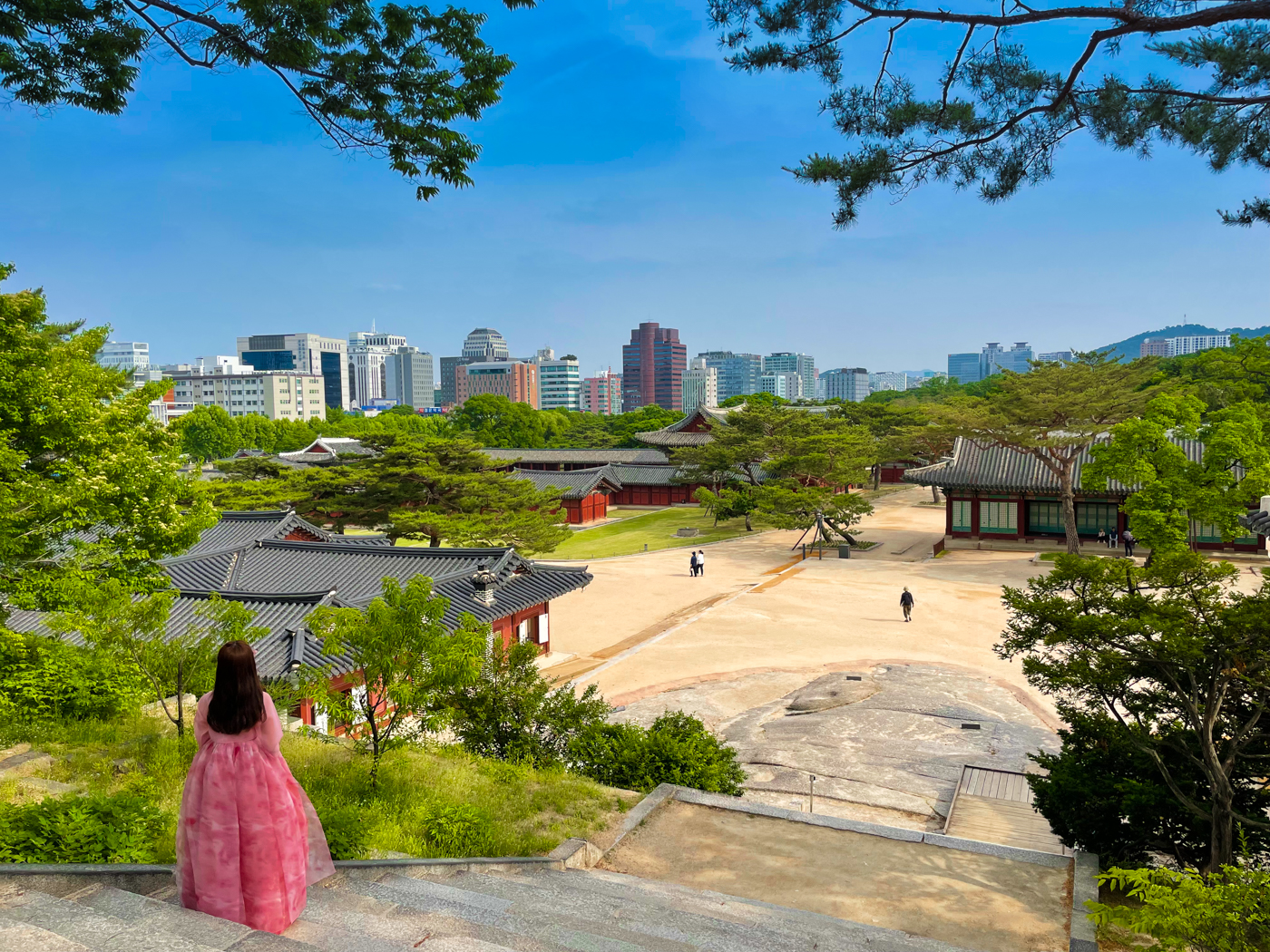
What’s Included in this Post
This budget breakdown covers how much I spent on accommodation, transportation, activities, and food during my trips to South Korea.
The amounts in the guide are listed in U.S. dollars, simply because the vast majority of my readers are from the U.S. I’ve also included prices in the South Korean won (KRW) — the local currency — as you’ll be using that throughout your time in the country.
At the time of writing (February 2024):
- 1 USD: 1,300 KRW
- 1 EUR: 1,450 KRW
- 1 GBP: 1,675 KRW
- 1 AUD: 875 KRW
Yes, this does make calculating the prices of things rather tricky when you’re in South Korea! For me, I kept in mind that 10,000 KRW is roughly 8 USD (€7, £6, or 11.50 AUD) and it made figuring out the prices of things far easier.
One quick note I do want to make about travel in South Korea is that it’s kind of complicated to pay for things! Korea is, these days, a cashless society — everybody pays with cards and there aren’t a lot of places that are happy to accept cash.
Now, that would be all well and good if it wasn’t for the fact that the vast majority of payment terminals don’t accept foreign bank cards. Apple Pay is very limited and Google Pay doesn’t exist at all.
Yes, really.
I’d say that we were able to successfully use our debit/credit cards 30% of the time in South Korea — and it made no difference whether we were using our U.K., Australian, or New Zealand cards.
So, what to do?
Honestly, there isn’t an elegant solution. Expect that every time you try to buy something, you might need to try four cards until one of them works. Carry a lot of cash with you in case none of your cards are accepted. It didn’t end up being a huge problem for us, as we were able to pay with cash whenever our cards were declined, but it was frustrating to have to continually deal with payment rejections everywhere we went!
Okay, let’s get started! Up first: accommodation!
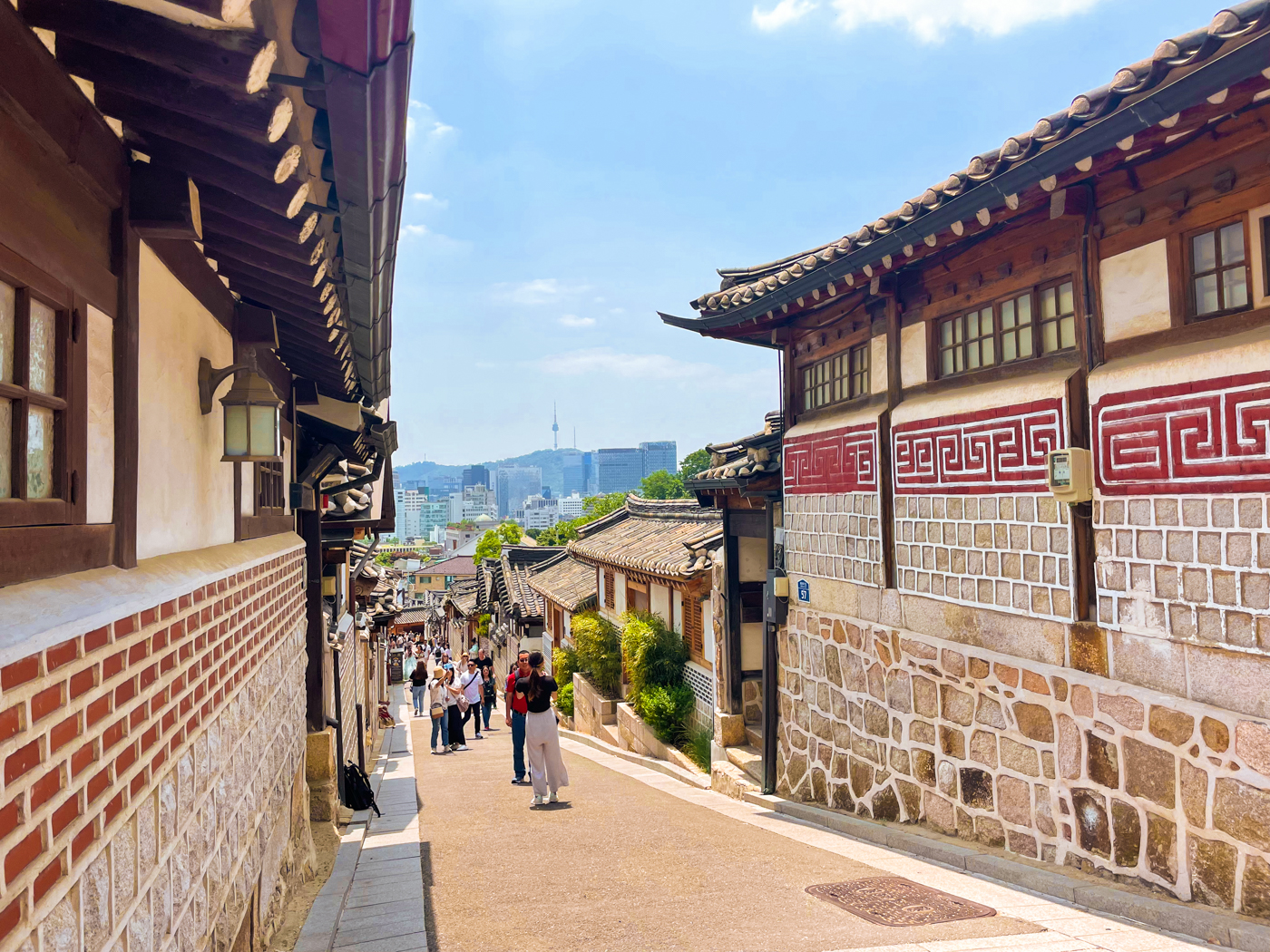
The Cheapest Accommodation Options in South Korea
Like practically every country in the world, prices have increased post-pandemic in South Korea, so you’ll be paying a little more for everything than you would have done a few years ago. Despite that, costs are lower than most Western countries, so accommodation in the country still offers up good value for money.
Let’s start on the lower end of the spectrum. If you’re willing to put in the time and effort, it’s possible to avoid paying for accommodation entirely.
Couchsurfing exists in South Korea and allows you to stay with a local for free, usually sleeping on their sofa and enjoying a local’s insight into life in their country. It’s not the most comfortable of living situations, but if your budget’s tight, it’s worth sending out a few requests to hosts to see if anything comes of it. You can browse through the 150,000+ Korean hosts on the Couchsurfing site .
Housesitting is a more upmarket option, aimed at mid-range and luxury travellers. Housesitting involves taking care of somebody’s house for free while they’re away, often (but not always) looking after their pets, too. It’s best for long-term travellers or retirees, as you can’t pick and choose dates and destinations, so you’ll need to have a lot of flexibility as to where you go and at what time of year. If you do have that freedom, though it’s a wonderful way to cut down your travel expenses, soak up some home comforts, and live like a local for a while. Trusted Housesitters is the best site for getting started with housesitting, as they have the highest number of listings.
And then we have hostels . In South Korea, you’ll come across hostels all over the country, finding them on tiny islands, large cities, and even within the national parks. They’re one of your best options for saving money.
All prices are in U.S. Dollars, by the way, as that’s where the vast majority of my readers are from.
Hostels in Korea are on a par with the rest of major cities in East Asia, and you can expect to spend between $18 a night for a dorm bed for a well-reviewed hostel, with the price increasing slightly to about $24 a night for the absolute best of the best.
When it comes to private rooms in hostels, you’ll be looking at $30 a night for a clean, basic room in a good location, so if you’re travelling with friends or with your partner, you may find it cheaper to grab some privacy over settling for two beds in a dorm room. $70 a night will get you an exceptionally well-reviewed private room in a hostel.
I use HostelWorld to find the cheapest hostels, as they tend to have the greatest number of listings at the lowest prices.
And then there are hotels, which I’m going to jump into next.
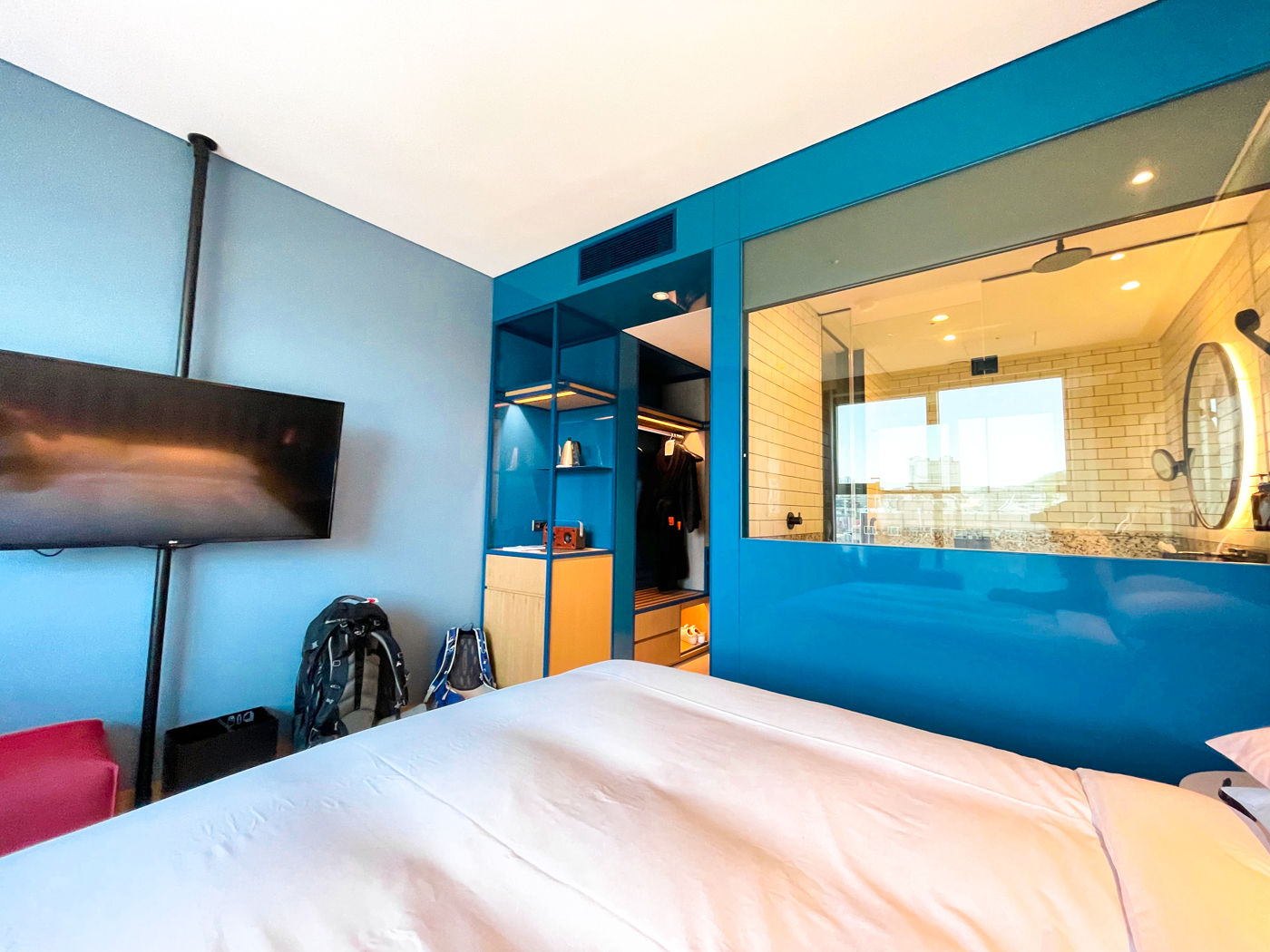
The Cost of Accommodation in South Korea
I found hotels in South Korea to be pretty reasonably priced. You won’t get the cheap, cheap rates that you do in places like Southeast Asia, but prices are generally lower than more expensive countries in Western Europe.
- As mentioned, well-rated hostels come in at an average price of $18 a night for a dorm bed, while private rooms are around $30 a night .
- Inexpensive guesthouses are typically around $50 a night .
- Four-star hotels are between $150 and $200 a night
- And five-star hotels are $250-350 a night
As always with these posts, I like to share where I personally stayed in the country and what I thought of each of my accommodation choices. On my most recent trip, I splurged in Seoul because I wanted to stay in two of the best-rated hotels in the country, but kept my accommodation costs relatively low in the other destinations I visited.
Seoul (Hongdae): RYSE Hotel (240,000 KRW, or $183 per night)
If you’re going to stay anywhere in Hongdae (my favourite Seoul neighbourhood), RYSE Hotel is the place to be. It’s one of the best hotels in the city! It’s in the perfect location, in the heart of Hongdae’s cafe-and-nightlife scene, but so well-insulated that you don’t hear any of it. The rooms had a modern, industrial design, great views over the city, and there were tons of gifts, from facemasks (this is Korea, after all!) to local games to even a bottle of wine. There’s a rooftop bar with some of the best views in Seoul, one of the best equipped hotel gyms I’ve ever used, and the staff were amazing. I’d absolutely stay here again on future visits!
Seoul (Myeongdong): Hotel 28 (189,000 KRW, or $144 per night)
Our itinerary in South Korea saw us spending two separate stints in Seoul, so for our second visit, I dragged myself away from my beloved Hongdae and gave Myeongdong a try — this is the neighbourhood to head to if you want to shop ’til you drop then eat ’til you’re… replete! We chose Hotel28, which is the best-rated option in the area; one of the Small Luxury Hotels of the World. It’s a cinema-themed hotel (you get bags of free popcorn when you check in!) in one of the best areas for eating in the city. The rooms are spacious, the bathroom had the best bathtub ever, and the staff were so sweet. It’s right by one of the city’s best night markets, too, which was so much fun to eat my way around! The hotel gym was great, too.
Gyeongju: Maison Mini Hotel (62,000 KRW, or $49 per night)
Dave and I loved our stay at the adorable Maison Mini Hotel in Gyeongju and found it to be a fantastic mid-range accommodation option. The rooms were spotless and cleaned everyday throughout our stay. The owner was so sweet and welcoming, and the shared kitchen and laundry facilities were definitely appreciated. Having access to a proper coffee machine was particularly useful! The guesthouse is a 10 minute walk from all of the wonderful sights of Gyeongju and a five minute walk from the main bus station, so it made for a great base while we were in town. I can’t recommend this place highly enough!
Busan: Urbanstay Seomyeon (61,000 KRW, or $47 per night)
Like Seoul, Busan is a big old city with plenty of neighbourhoods to choose from. Seomyeon, however, is the best spot for new visitors to town — it’s in a convenient location for visiting all of the most popular spots and has plenty of vibrant nightlife and restaurants to explore. Urbanstay is right beside a metro station, which makes getting around even easier. The rooms are clean, modern, and basic — very minimalist! — with lightning-fast Wi-Fi. There actually aren’t any staff at the hotel, so you’ll be emailed a key code to get into your room, which works well. The washing machines are, as always, very much appreciated!
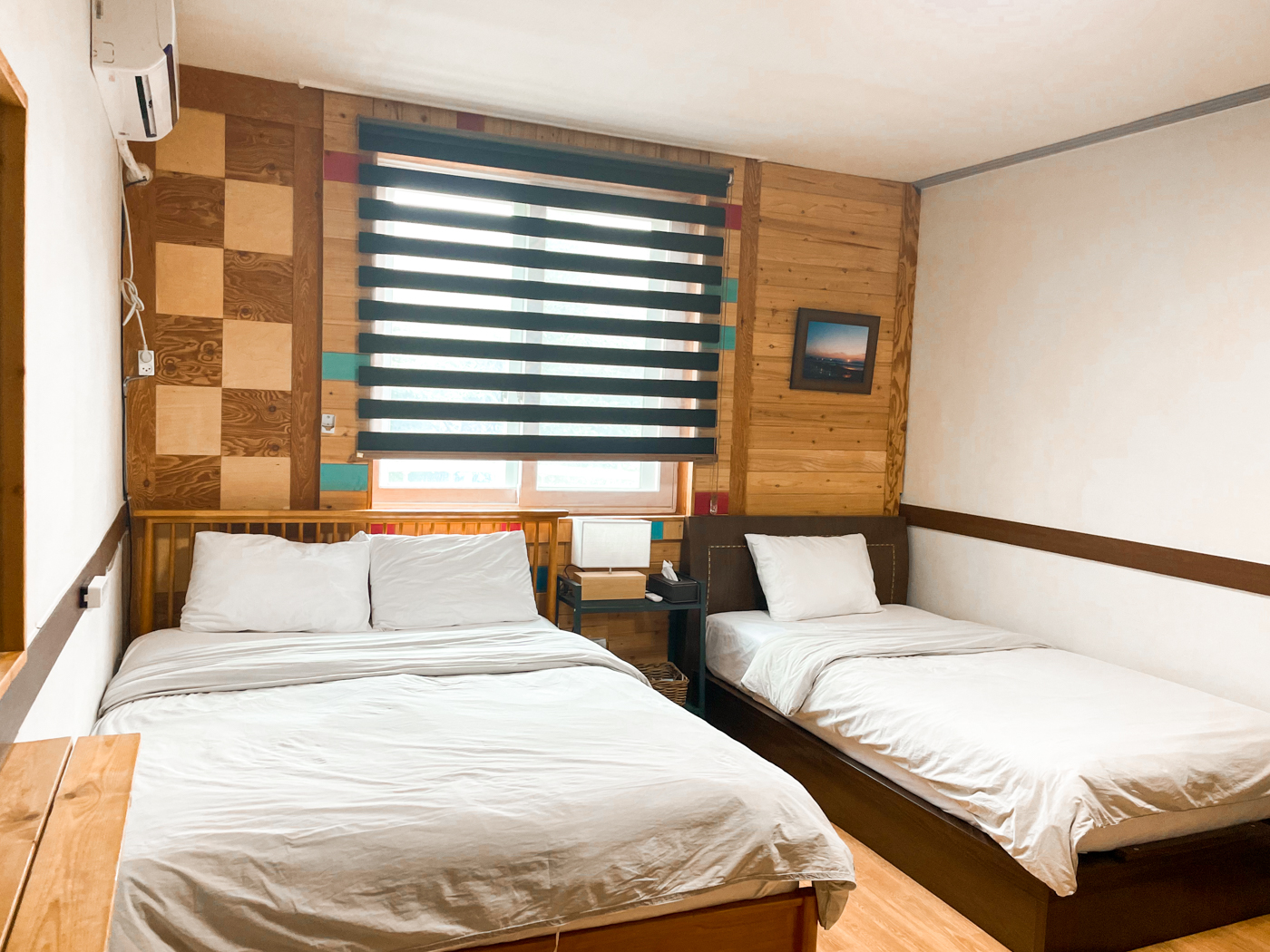
Seoraksan National Park: Smile Resort (70,000 KRW, or $53 per night)
If you’re going to be hiking in Seoraksan National Park, you’ll want to be staying as close to the park entrance as possible. Unfortunately, this area of South Korea seems to be full of mediocre accommodation options. Still, Smile Resort was the best option that was close to the entrance while not being obscenely expensive. While the interior was a little old and tired, it was a perfectly acceptable place to stay! The owners were welcoming and kind, the free breakfast (a rarity in South Korea) was definitely appreciated before a big day of hiking, and it’s just a five-minute walk from the bus that takes you to the national park entrance. Rooms also have a private kitchenette and fridge, which was useful for keeping our water cold overnight.
My partner, Dave, wrote an in-depth itinerary on how to spend 10 days in South Korea after our most recent trip, so do check that out if you’re looking for advice how to structure a trip to the above places!
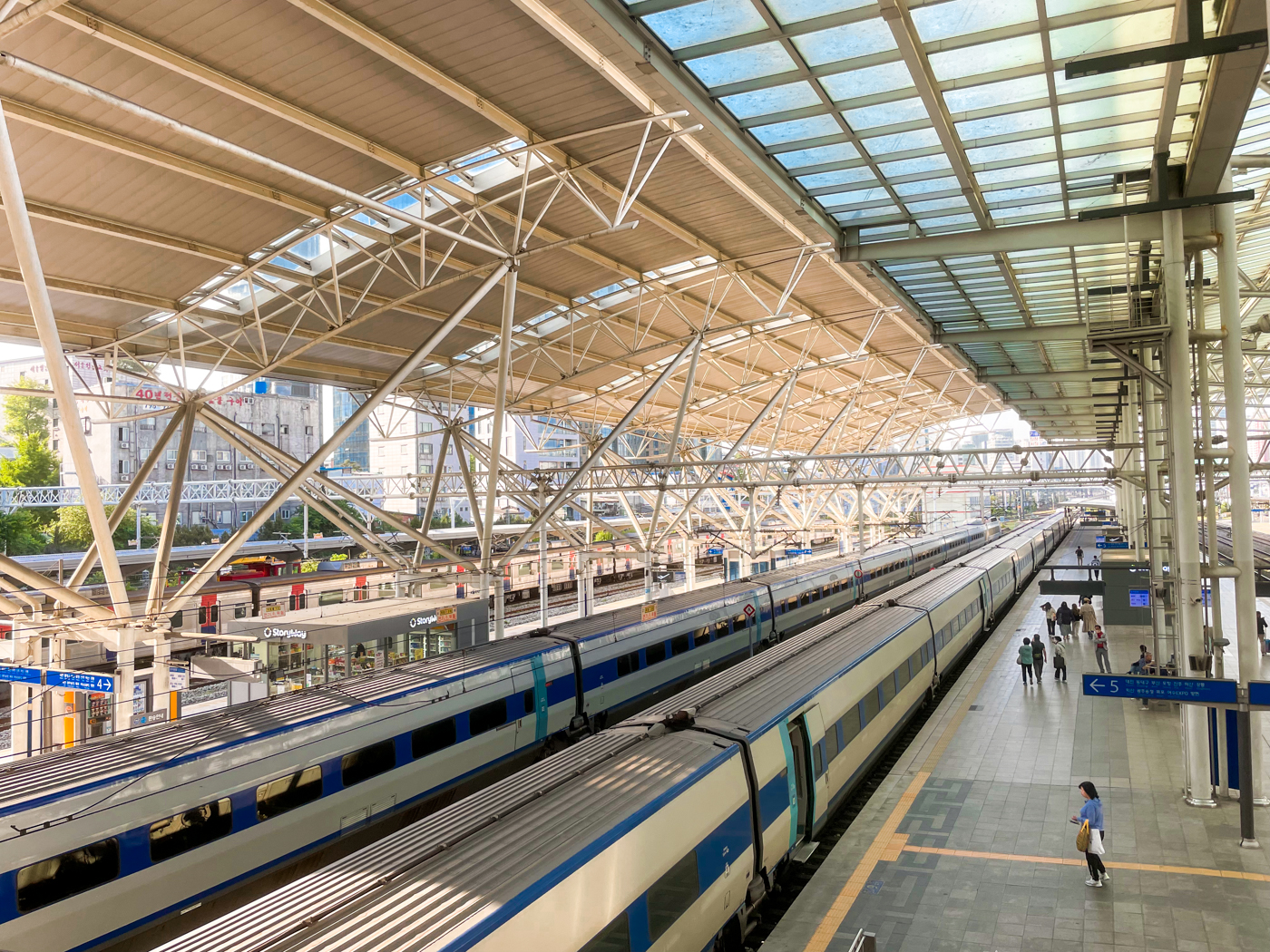
The Cost of Transportation in South Korea
I’m somebody who doesn’t get an awful lot out of travel days in unfamiliar places, but even I can admit that travelling around South Korea is a joy! From the buses to the high-speed trains to the comprehensive subways: getting around this country is convenient, comfortable, and hassle-free.
Your first encounter with the transportation system will be at the airport. There’s two options for getting the train from Incheon International Airport to Seoul: the Airport Railroad Express (AREX) or the All Stop Train. The former takes 43 minutes and costs 9,500 KRW ( $7.20 ), while the latter is half the price at 4,150 KRW ( $3.15 ) and takes 53 minutes.
I recommend jumping on the All Stop Train, then, as it’s cheaper, takes just 10 minutes longer, and runs more frequently than the AREX so will most likely get you into Seoul faster anyway.
I wouldn’t recommend taking the bus or the taxi, as both are more expensive and slower than the train. The bus costs 10-15,000 KRW ( $9 ) and takes around 80 minutes, while taxis cost a whopping 70,000 KRW, or $55 , and take around an hour.
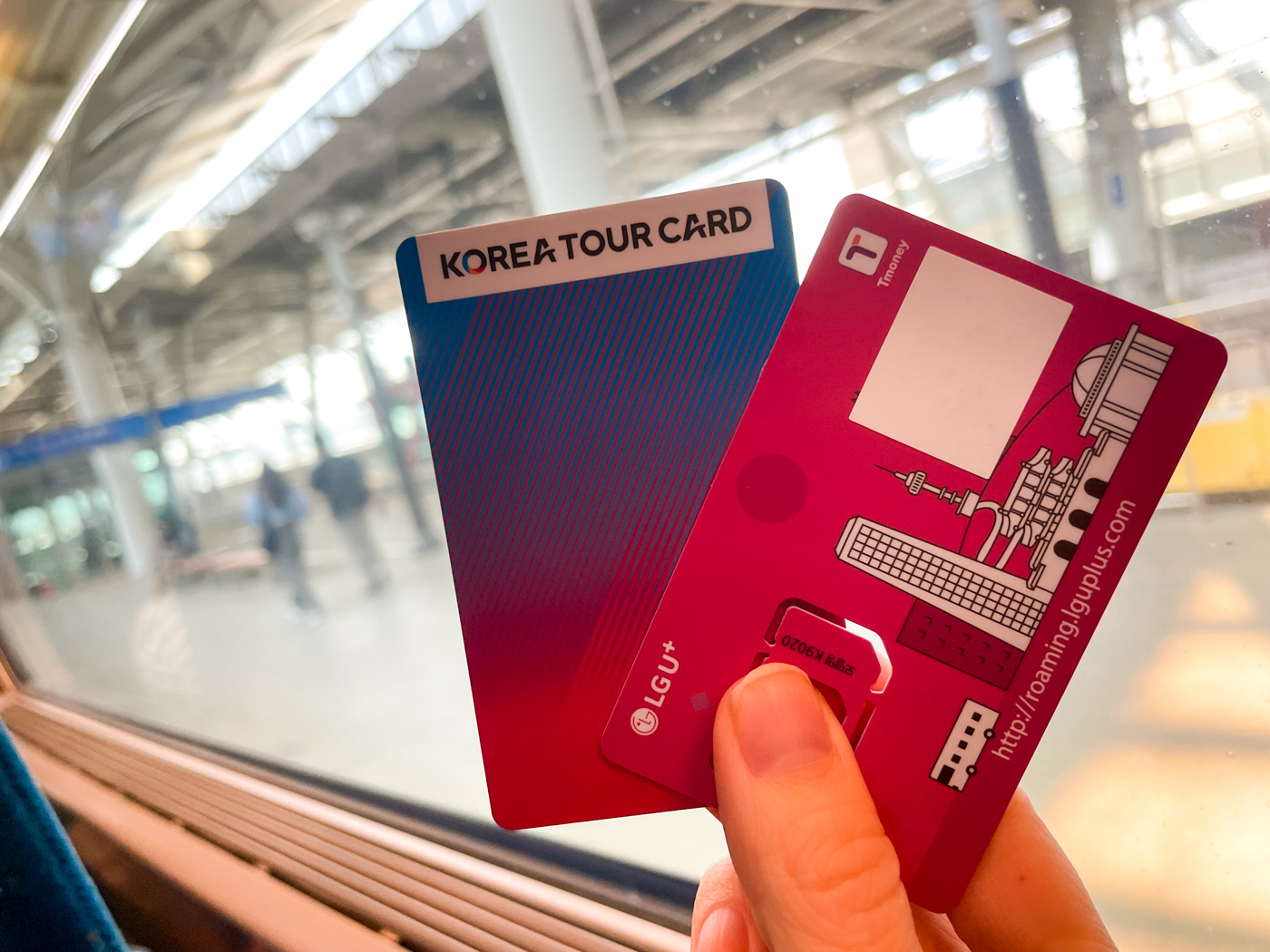
What to Know About T-Money Cards
Before we go any further, it’s time for a primer on T-Money! This is my one travel essential in South Korea and I highly recommend getting your hands on one before you leave the airport.
A T-Money card is designed to make your public transportation experiences seamless. You simply buy your T-Money card from any convenience store, or the vending machines at the airport, and then you can use it on subways, buses, taxis, and even vending machines and grocery stores — all across the country. Simply tap your card on the T-Money scanner and you’re good to go!
I recommend buying yours at the airport, where there are T-Money vending machines located beside the All Stop Train (and then you’ll pay for said train journey with the card). You’ll pay 4,000 KRW ( $3 ) for the card.
Once you’ve bought your card, remember to top it up with some cash. I topped-up with 40,000 KRW ( $30 ), which was the perfect amount for two weeks in the country — I had 2,000 KRW left over at the end. If you do end up with any money left on your T-Money card at the end of your trip, you can get that refunded to you at any subway station (including the airport) in Seoul.
I mentioned in the photo caption above that Dave’s T-Money card came free with his SIM card purchase. He bought his SIM card in advance from LG and picked it up in the arrivals hall at the airport. The SIM card included unlimited data (35,000 KRW or $25 for 10 days of usage) plus a Korean phone number — the latter of which is surprisingly useful in Korea (you often need a local phone number just to join a queue for a restaurant!) but tricky to get from many other providers.
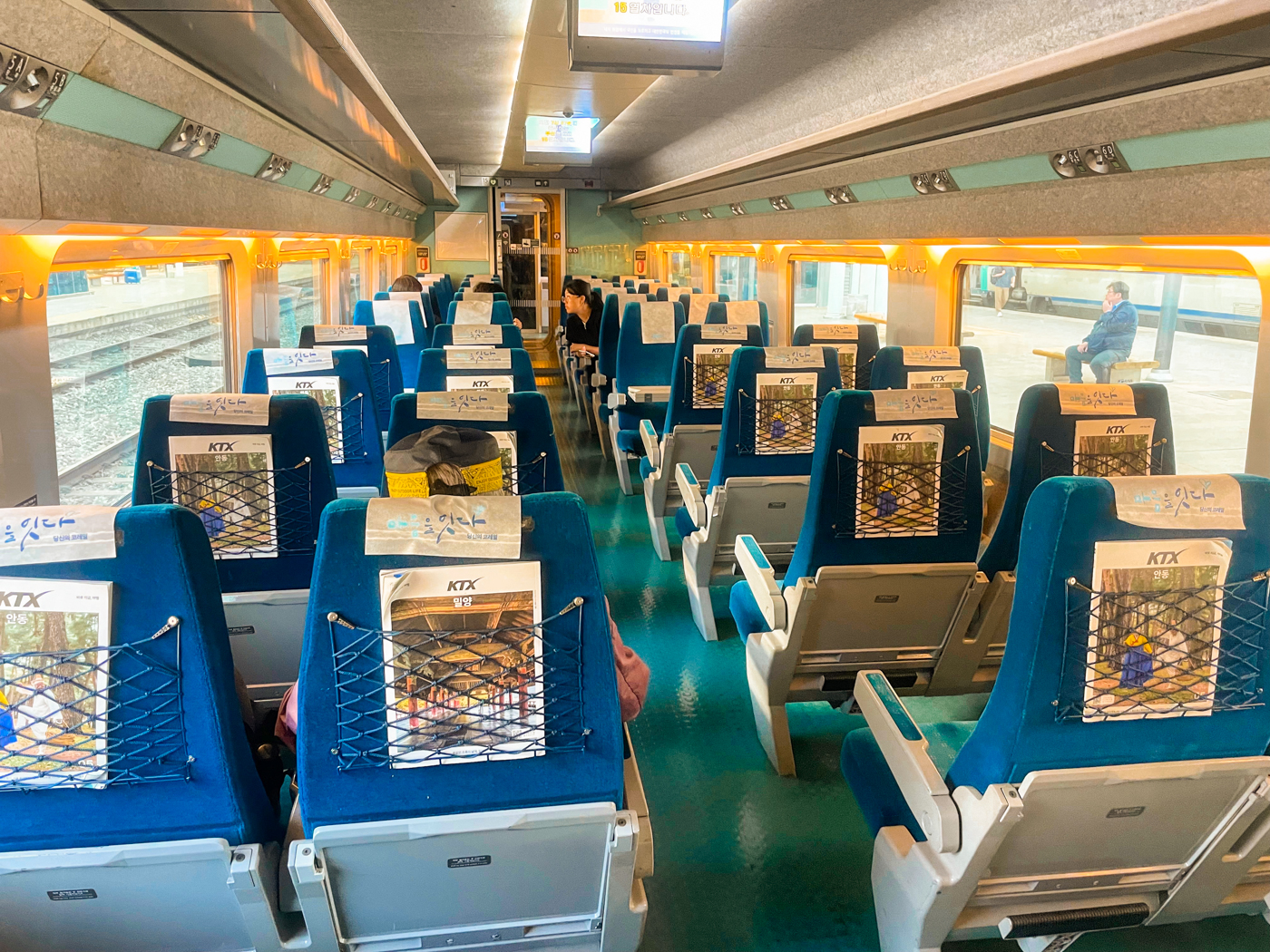
The Cost of Trains in South Korea
If you’ll be venturing outside of Seoul then odds are, you’ll be travelling by train. This is one of the best ways to explore the country, thanks to the modern carriages and speedy services. And expect your trains to be punctual — just as in nearby Japan , this country thrives on an on-time departure.
I’m a huge fan of the KTX — the Korean Travel Express — which whips you up and down the length of the country at speeds of 300+ kilometres an hour (190 mph). It’s the priciest option, for sure, but the amount of time you’ll save will likely make it worth it.
As an example, the KTX from Seoul to Busan — running from the top to the bottom of the country — takes just over two hours (at a price of 59,800 KRW/$45 ). In comparison, the equivalent buses and slower trains complete the journey anywhere between four and six hours (but costing 28,000 KRW/$21 ).
Buy your KTX tickets through the official Korail website to score the cheapest fare — we had no problems using it with our foreign debit/credit cards.
I’ll briefly mention the existence of the Korea Rail Pass (KR Pass) here, which works similarly to the Japan Rail Pass or a Eurail Pass. You can choose from either a consecutive pass or a flexible pass, but to be honest, the prices are around the same amount as the individual tickets, so I didn’t see the point. If you’ll be racing around the country and visiting multiple places in a single day, it may be worth it, but it wasn’t for us.
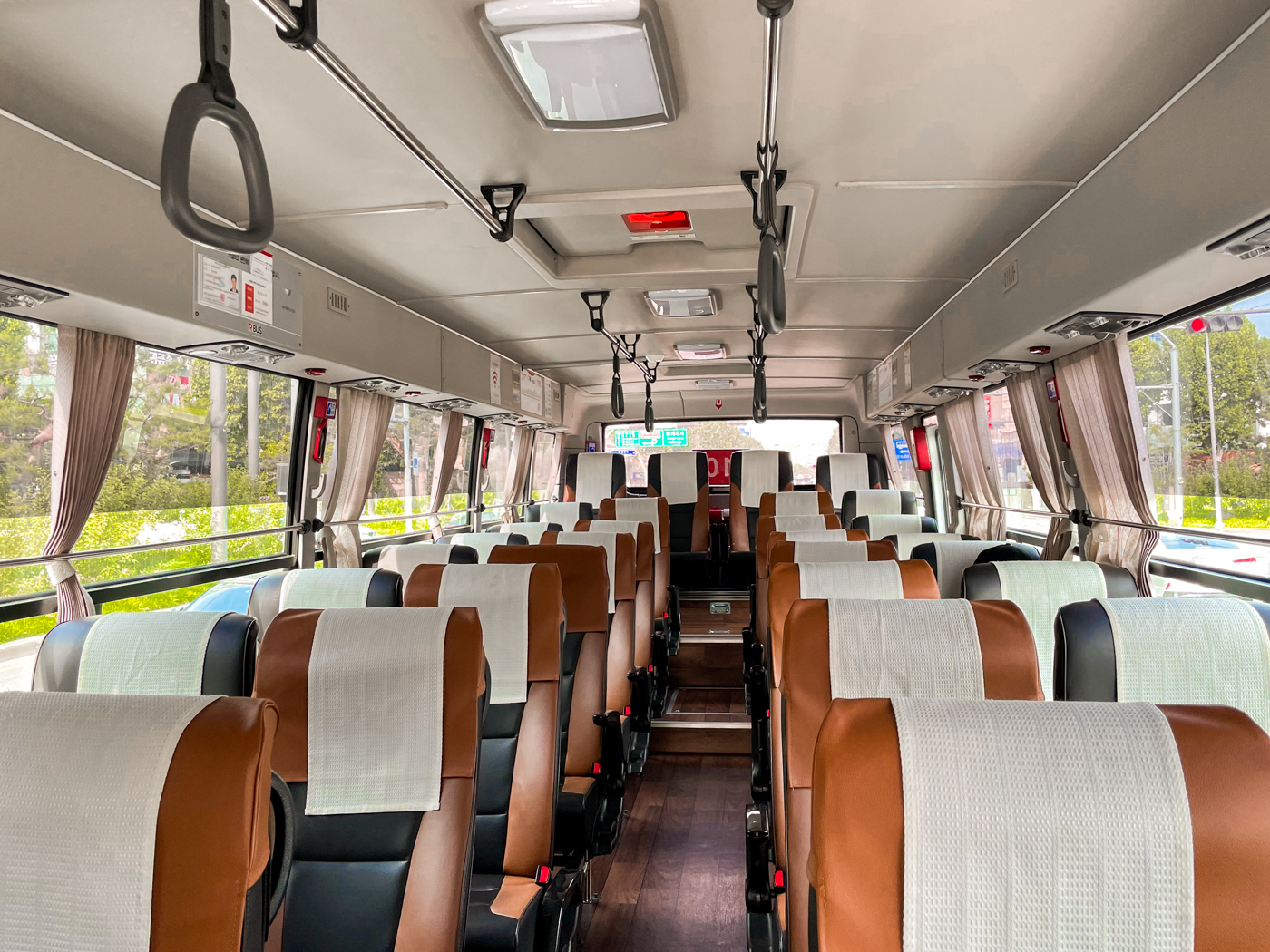
The Cost of Buses in South Korea
You can take the bus to just about anywhere in South Korea.
There are two types of long-distance buses in the country: express and intercity; due to time constraints, we opted for the express option for every journey we took (intercity buses are cheaper but take way longer because they make stops all along the way; express buses take you directly to your destination). Our two-hour express bus from Seoul to Sokcho ( 21,000W, or $16 ) was bordering on luxurious with wide, comfortable reclining leather seats, tons of legroom, and even power sockets.
You can find bus departures either through Kobus (express buses only) or Bustago (express and intercity buses). However , you can only purchase through these sites if you have a Korean bank card and a local number — yes, it’s frustrating and only the tip of the iceberg when it comes to Korea making travel difficult for foreign visitors.
We used these booking sites, therefore, to see which departure time we wanted to aim for and to check there were still tickets available. We then bought the tickets from the bus station an hour or so beforehand — departures typically run multiple times an hour so you don’t have to worry too much about buses being booked.
To give you a sense of ticket prices, here are some average one-way costs for a few routes you might take:
- Seoul to Busan: 33,000 KRW ($26)
- Seoul to Gyeongju: 20,000 KRW ($15)
- Busan to Daegu: 12,000 KRW ($9)
- Seoul to Jeonju: 20,000 KRW ($15)
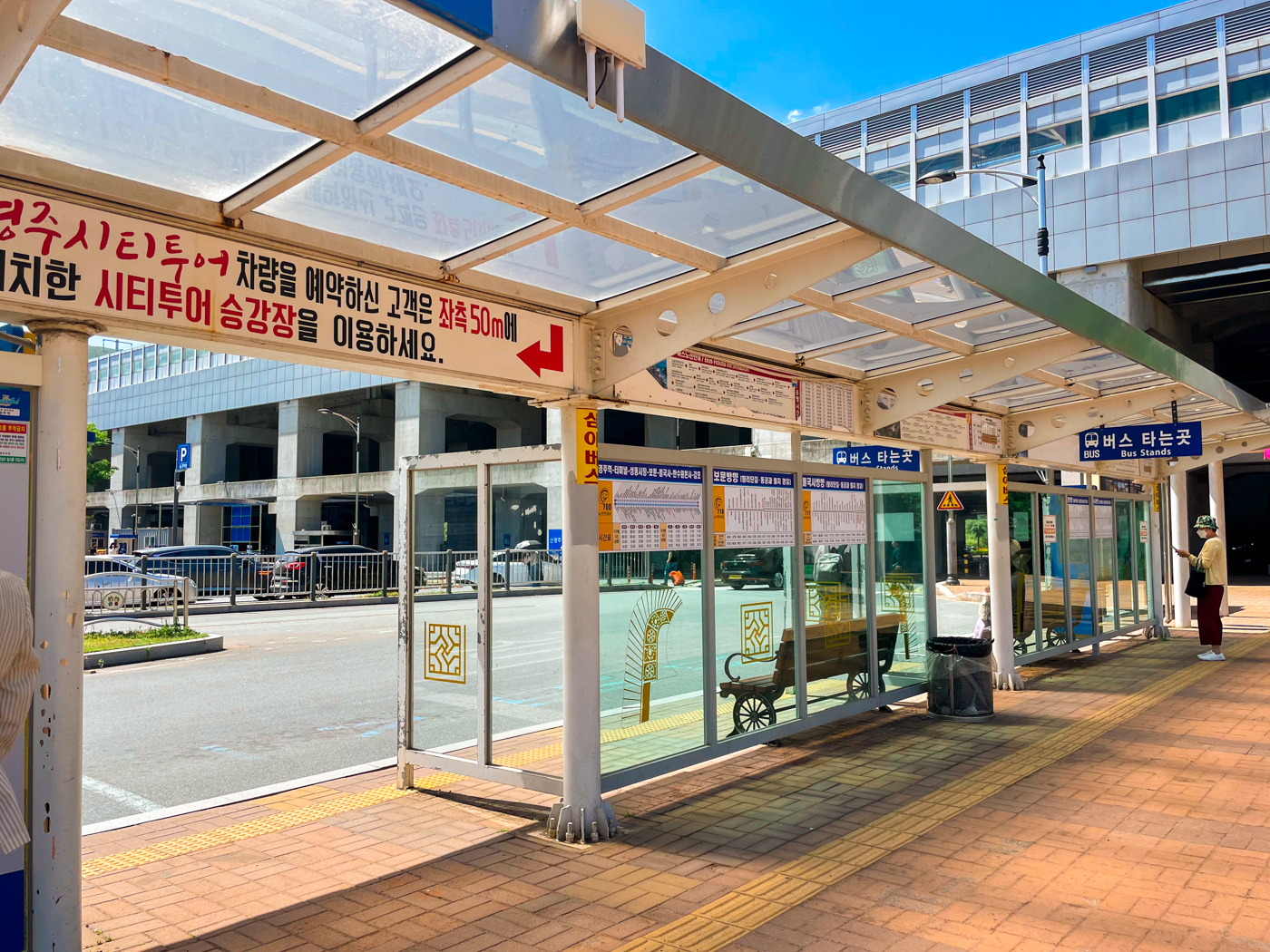
The Cost of Flying in South Korea
South Korea isn’t a gargantuan country. And with fast and frequent overland options available throughout, you probably won’t need to fly very often — if it all. But if you plan on going to wonderful Jeju Island (which you should), then flying is the easiest way to get there.
A one-way direct flight from Seoul to Jeju will cost around $42 , and if you’re flying from Busan, a one-way fare is roughly $33 .
In terms of alternative options to flying, you do have the ferry from Busan. At a journey time of around 12 hours, though, and a cost of 60,000W ($45) , there’s no real reason to put yourself through the discomfort.
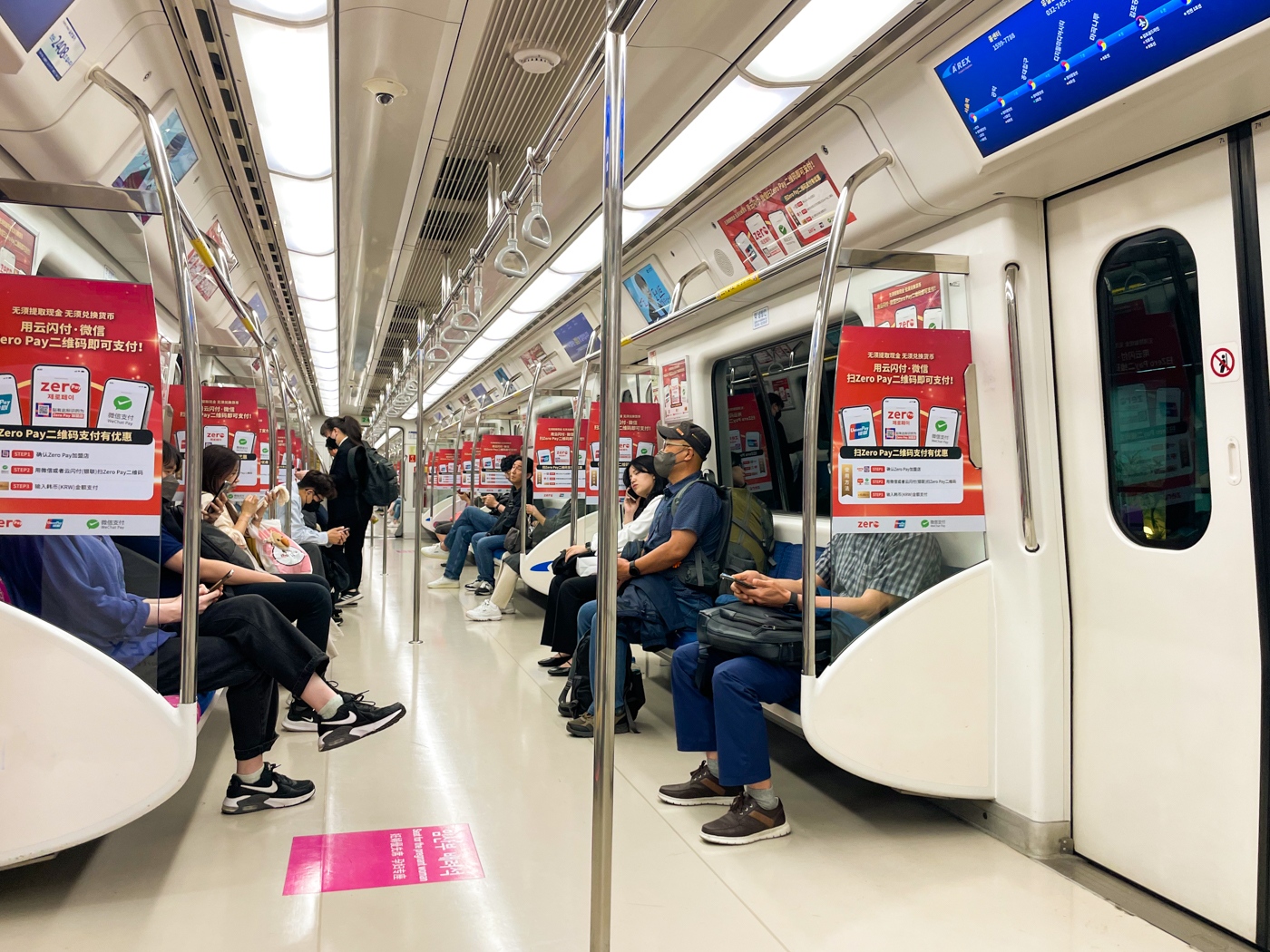
The Cost of the Metro in South Korea
The underground systems in Seoul and Busan are in a league of their own. In fact, Seoul has one of the most extensive subway systems in the world — it’s clean, modern, and safe. If you don’t have to use it during rush hour, it’s pretty calm, too. It’s one of the best and most efficient ways to get around Seoul, and with the exception of a couple of local bus trips, I relied on the subway during my entire stint in the city.
Fare is calculated by distance, so a subway ride of less than 10 km will cost 1,350 KRW ($1) with 100 KRW added on for every additional 5km (you’re unlikely to take a journey this far, though). When taking the subway over a typical day of sightseeing, I usually averaged around 5,000 KRW ($4) per day .
Overall, my daily transportation costs in South Korea worked out to: $10.20 per day
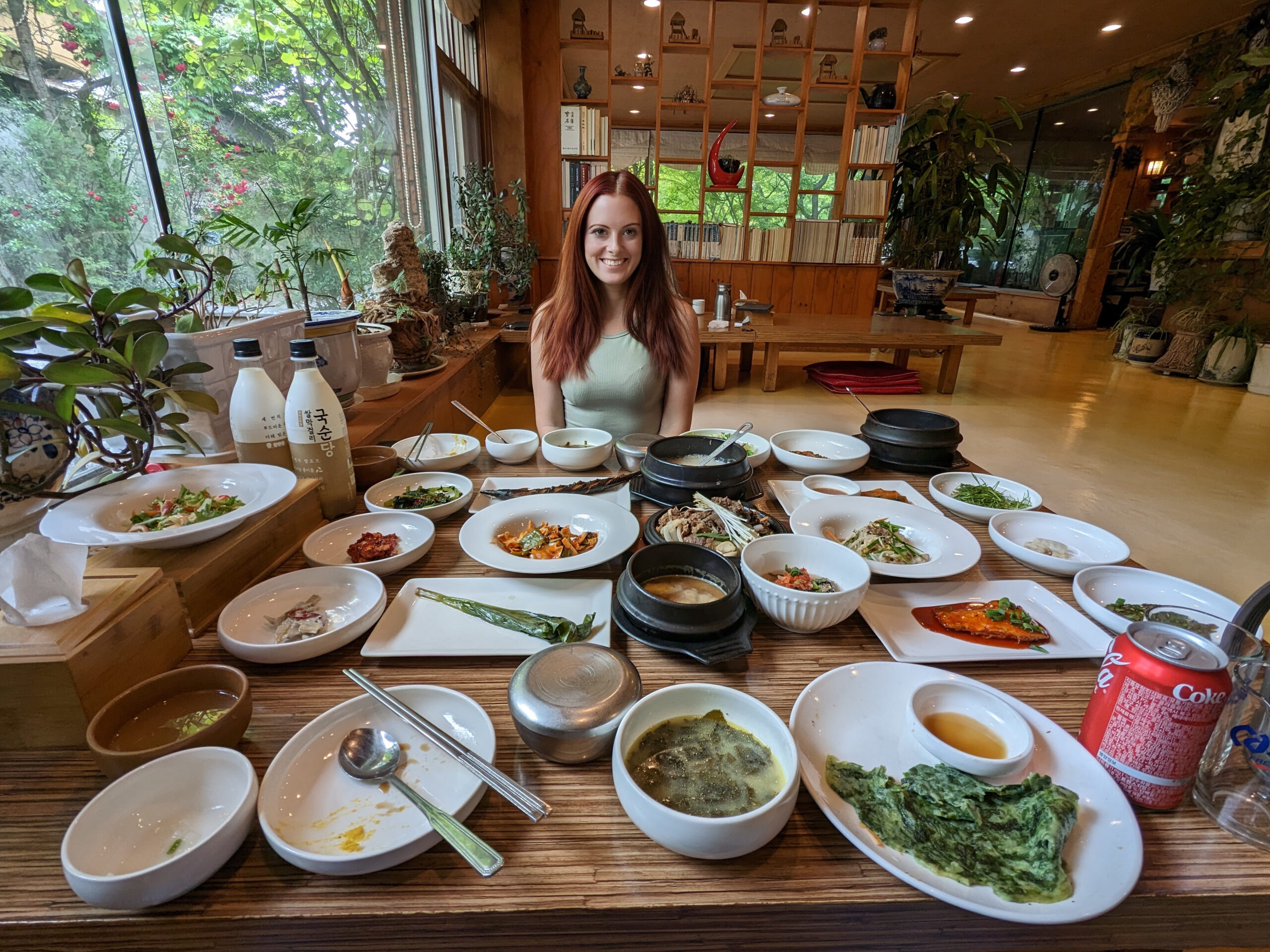
The Cost of Food in South Korea
Long-time readers of the site will already know that food is my primary driver to travel. It won’t come as any surprise, then, to learn that my favourite thing to do in Korea was eat .
There are so many incredible local dishes to sample in this country that I often found myself panicking that there weren’t going to be enough meals in the day. By the end of my weeks in the country, I was officially inducting South Korea into my list of the top five places to eat in the world (the others being India, Vietnam, Mexico, and Greece).
Yes, you’ve got all the classics you’ve probably come across before, like kimchi, bibimbap, and bulgogi, and you’ll be able to find them on practically every street you walk along. But for me, the delight came in wandering into a crowded restaurant without any idea what was on the menu, sitting down and being presented with one of the best dishes I’ve ever tried. Yes, I’m looking at you, samgyetang.
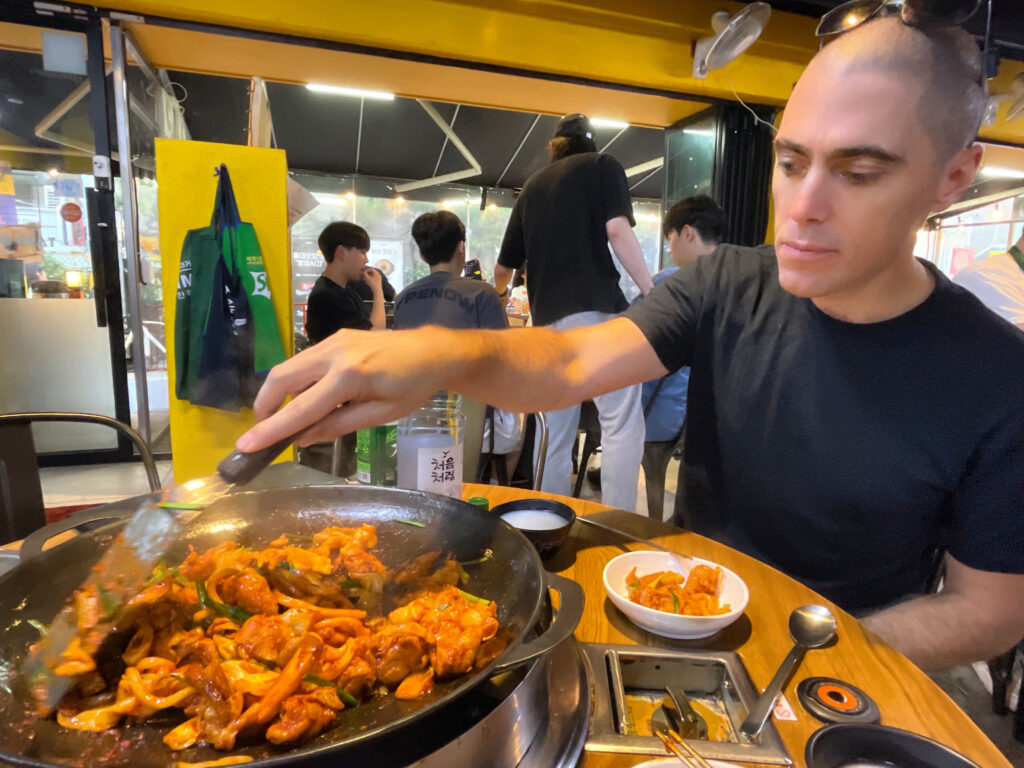
Of course, Korean BBQ reigns supreme and provides a super-fun food experience — I definitely recommend trying it at least once while you’re in the country. Gather around a table with a group of friends, order yourselves an inordinate amount of meat, marinate it in a variety of sauces, then cook it up at your table on your own little grill.
And let me tell you that Korean fried chicken may have ruined me for all of my future fried chicken experiences. Before arriving in the country, I’d made a vow to never eat the same thing twice while I was there. After my first taste of crispy fried chicken, however, I found myself meekly eating it again a couple of days later. It was just so freaking good!
The kimchi in South Korea is amazing and I was regularly blown away by the depth of flavour that was contained in such a simple dish. You’ll be given a couple of versions of it (cabbage and radish) as a free side with practically every meal you order, and it was nearly always a flavourful highlight for me.
One particularly epic food experience we had in the country is depicted in the photo at the very top of this section — the one where I’m surrounded by about 35 different dishes! Hongsi Hanjungsik in Gyeongju offers up a traditional Korean banquet, run out of the owner’s home, with so many high-quality, tasty things to try. And despite the multitude of dishes, we didn’t come away feeling overly full. At a price of 20,000W (or $15.50) each, it felt like phenomenally good value!
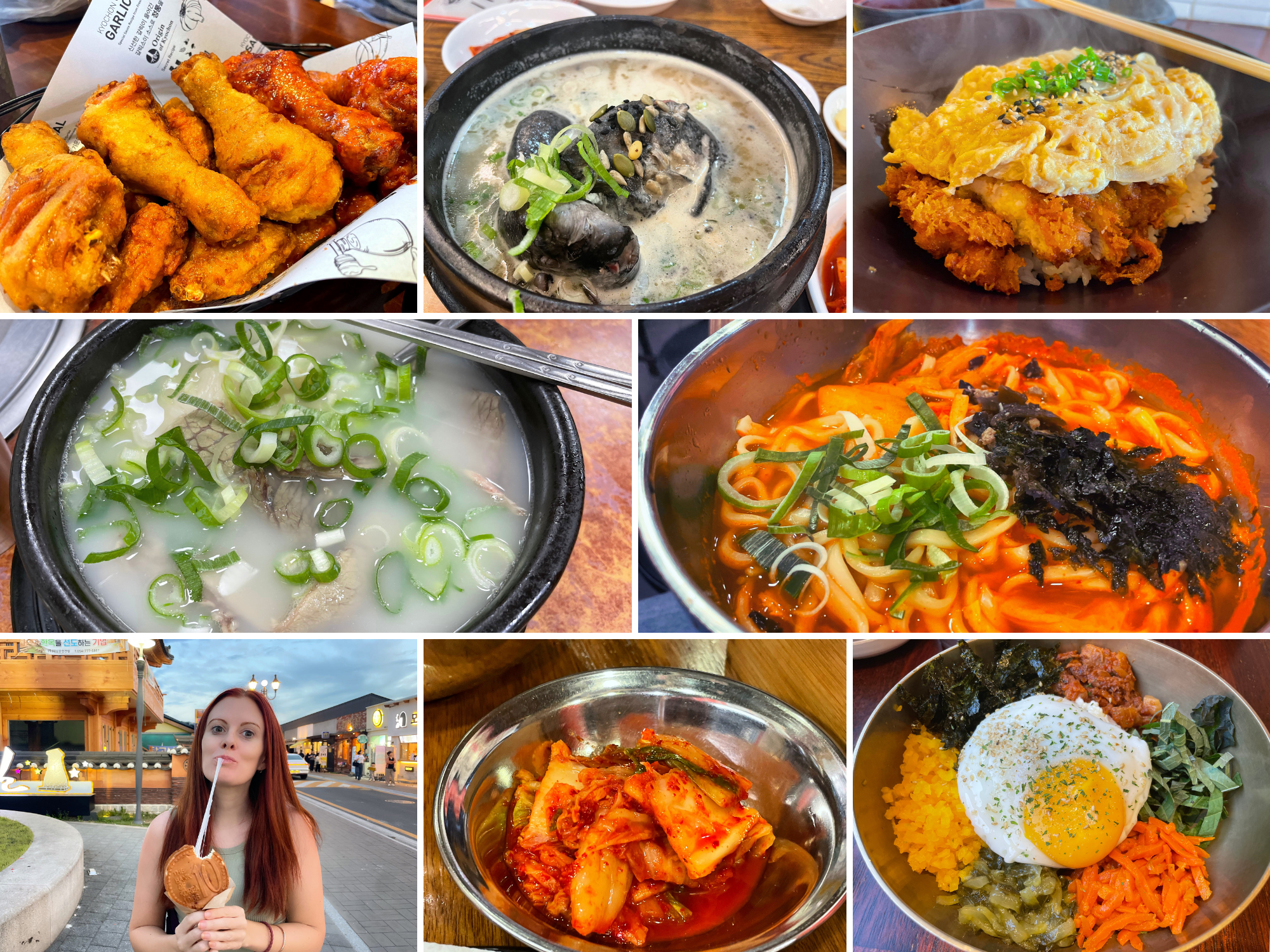
So let’s get into the food prices.
In general, if you’re eating out at a Korean restaurant, look to spend around 10,000 – 15,000 KRW ($7.50 – $11.50) for a meal. When eating at a more Western restaurant (which you absolutely should not do because the Western food in Korea is probably the worst I’ve ever eaten — a ham and cheese sandwich I ordered was drizzled with condensed milk!) then you might spend 20,000 KRW ($15) for a meal. Fast food, street food, or a smaller meal will range around 5,000 – 7,000 KRW ($4 – $5) .
Here’s some examples of what we spent on some of the various dishes we tried:
- Fried chicken for lunch: 10,000 KRW ($7.50)
- Bibimbap for lunch: 9,500 KRW ($7)
- Bindaetteok (mung bean pancake) as a street food snack: 5,000 KRW ($4)
- Dakgalbi (stir-fried chicken) for dinner: 6,500 KRW ($4.50)
- Unlimited Korean BBQ on a weekday lunch: 15,000 KRW ($11.50)
- Samgyetang (chicken ginseng soup) at a fancy restaurant for lunch: 19,000 KRW ($14.50)
- Street food snacks: 3,000 KRW ($2) each
- A pint of local draft beer in a restaurant: 4,000 KRW ($3)
- A bottle of soju in a restaurant: 4,000 KRW ($3)
- A 750ml bottle of makgeolli in a restaurant: 4,000 KRW ($3)
- An extremely fancy cocktail in a world-class bar: 23,000 KRW ($17.50)
Dave and I are usually intermittent fasters when we travel, so we rarely opted for breakfast while we were travelling in South Korea. Instead, we’d have a large meal for an early lunch and often hit the street food carts for dinner. Our daily meal costs were sometimes then as little as 15,000 KRW ($11.50) a day but averaged out at 25,000 KRW ($19) a day .
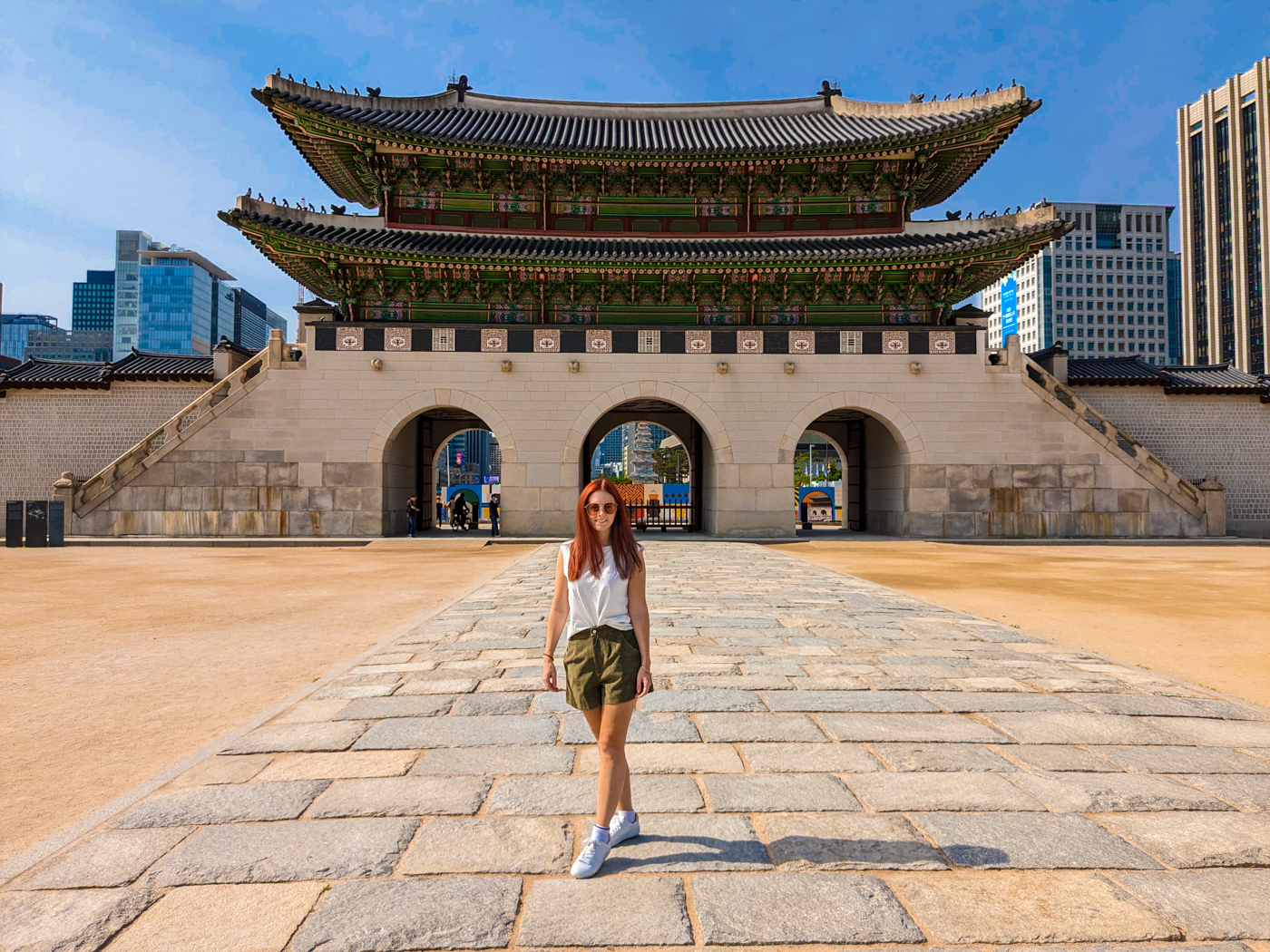
The Cost of Activities and Entrance Fees in South Korea
When it comes to activities in South Korea, there’s so much to keep you entertained — and it’s pretty affordable, too.
If there’s one activity to cross off your list when you’re in Seoul, it has to be the royal palaces. For just 10,000 KRW , you can purchase a combo ticket that gives you entrance to Gyeongbokgung, Changdeokgung (and its separate secret garden), Deoksugung, Changgyeonggung, and Jongmyo Shrine. To visit each of these individually would cost 14,000 KRW , so it’s well-worth getting the combo and crossing all of them off. We managed to see all of them in a single day of hardcore sightseeing, and while we were undoubtedly templed-out by the end of it, we were still glad we’d made the effort to do so.
If you only have a limited amount of time, then just head to Gyeongbokgung and Changdeokgung — the two most impressive of the palaces. You’ll be able to catch the impressive changing of the guard in the morning at Gyeongbokgung, then take a tour of the wonderful secret garden at Changdeokgung in the afternoon.
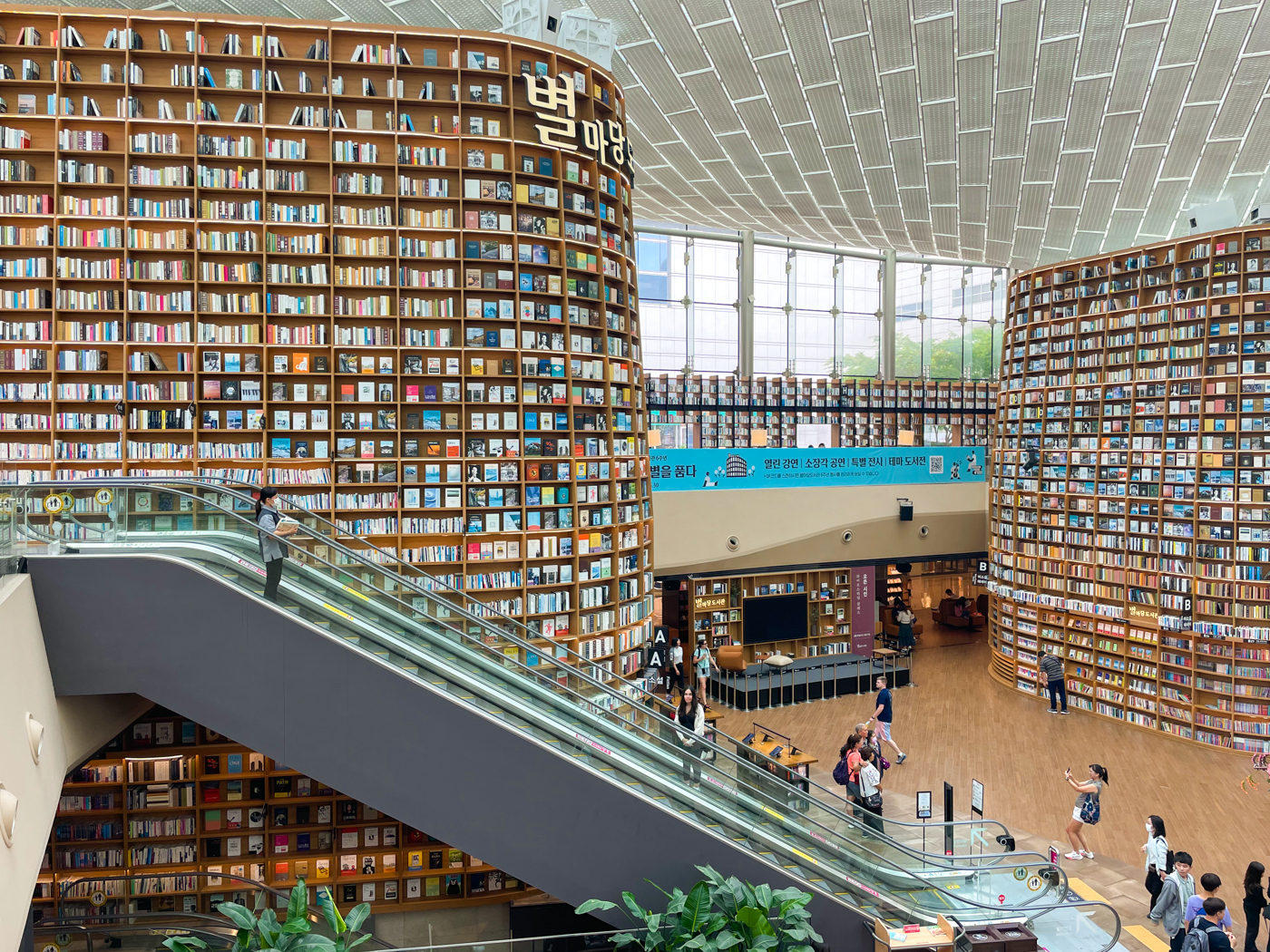
Many visitors to Seoul spend their time shopping, eating, and partying. This is one livable, lively city, crammed full of excellent skincare products, world-class vintage stores, delicious street eats, and more karaoke bars than you could possibly imagine. There’s lots to keep you entertained.
Simply strolling through the different neighbourhoods provides a way to keep costs down. I loved spending my time cafe-hopping in student-filled Hongdae, shopping in bustling Myeongdong, picking up traditional souvenirs in Insadong, and admiring the street art in Itaewon.
One particular highlight from my most recent trip was walking the 10 kilometre, or seven mile, Cheonggyecheon Stream, which runs through downtown Seoul from Cheonggye Plaza to Dongdaemun. Once a busy highway, it has since been transformed into a peaceful oasis, where friends come to chill beside the water, surrounded by plants, trees, and fun water features.
Most visitors to South Korea want to hit up the DMZ: the border between South and North Korea, and specifically the Joint Security Area (JSA) — those famous blue barracks where North and South Korean soldiers stand face-to-face. It’s the closest you can get to North Korea without actually entering it.
You’ll want to be careful, then, when you do book your DMZ tour. There are plenty of these general DMZ tours running (priced at 76,000 KRW/$56 ), but the closest you’ll get to North Korea is standing on a hill and looking into the country from afar with binoculars. You won’t visit the JSA on these trips. It is, however, a third of the price of the JSA tours, so a great option for budget travellers. These non-JSA tours are incredibly popular, so do book early to ensure you manage to get a space. You can check availability for your travel dates using the widget below:
The JSA-specific tours are even more popular, but unfortunately, they’re currently (as of early-2024) on pause. This is a common occurrence, especially during these post-pandemic years. It’s only been open to tourists for about three months in total since 2020!
VVIP Travel and Hana Tour are the two JSA tour operators to go with, so do check out their websites before your trip, just in case the tours are up and running again. Tours cost 195,000 KRW ($150) per person and last for a full day.

I knew I wanted to get out into nature while I was in South Korea, as I didn’t want my entire trip to focus around gigantic, bustling cities. This country, after all, is 70% mountains. Seoraksan National Park provided the perfect opportunity to do just that. It’s a two-hour bus ride from Seoul and when you arrive, you’ll feel as though you’re in a whole other country.
With an entrance fee of just 3,500 KRW ($2.50), this was an affordable way to see a part of the country that few tourists opt to explore. The scenery was incredible and a couple of days in town enabled us to tackle all of the most popular hikes.
Speaking of gigantic, bustling cities: Busan!
Busan often ends up being most people’s favorite spot in South Korea and there’s plenty to do while you’re there. From beach-hopping your days away (my favourite free activity!) to hitting up bustling fish markets; eating allll the street food then exploring amazing colourful villages, blanketed with murals. Busan is well-worth visiting, that’s for sure. But for us? We quickly realised that nearby Gyeongju was more our type of place.
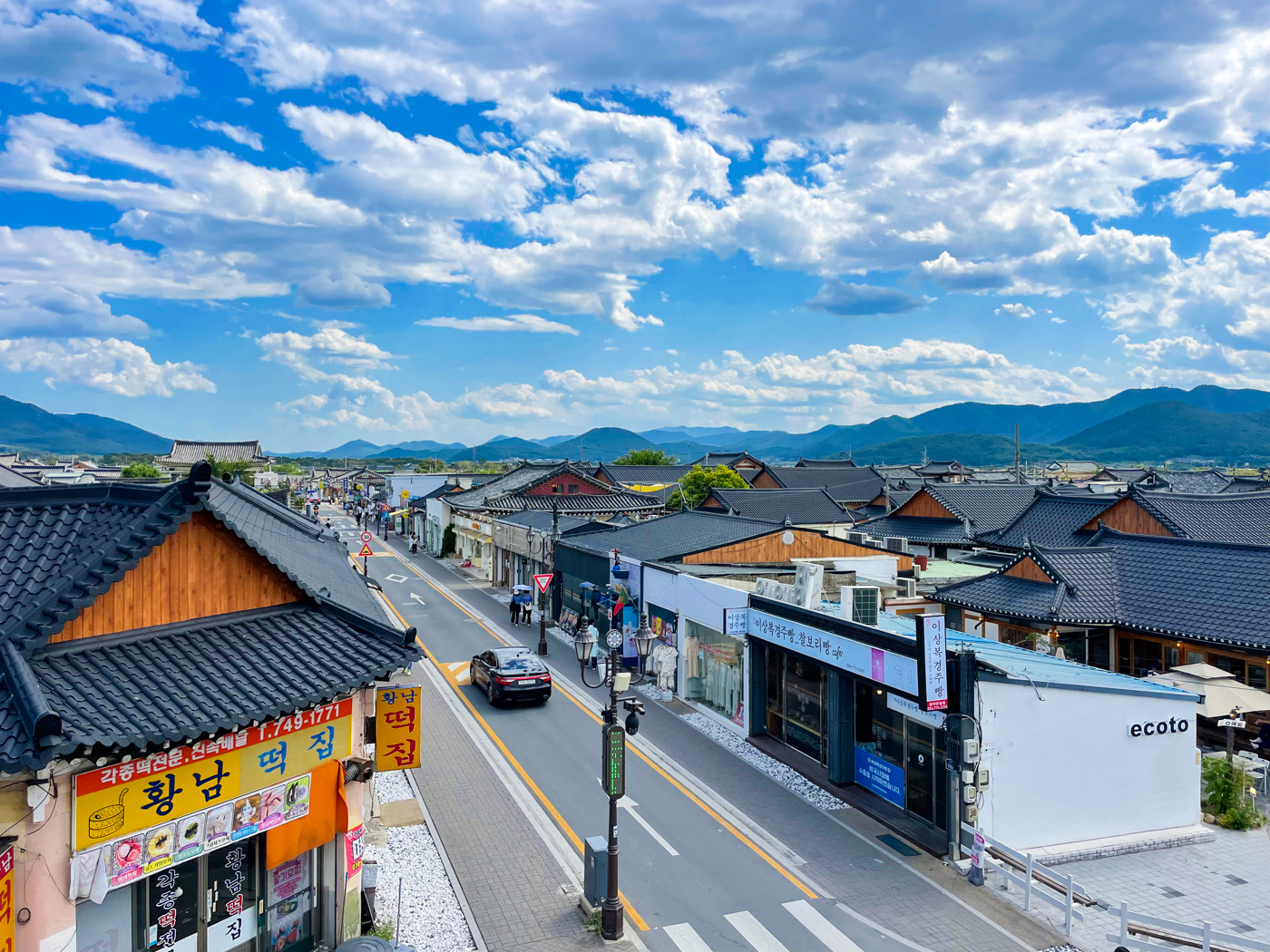
Dave and I adored Gyeongju, a compact city that’s perfect for some respite after a few days in Busan. Gyeongju is crammed full of cultural sites and attractions, from royal tombs to ancient observatories, to one of the most impressive Buddha statues we’ve ever seen. The vast majority of attractions in town were free to visit, so we spent very little money while we were there, too — an added bonus!
And I can’t write about South Korea and not include beautiful Jeju Island — the iconic volcanic island off the southern coast of the country that’s known for its beaches, waterfalls, and mountains, as well as its local delicacies. Just wait until you try the local black pork! There’s tons to do on the island — you could spend two weeks on Jeju alone — but so much of it is focused around landscapes and scenery (so much hiking!) that you can easily visit on a budget.
With all that being said, here’s a breakdown of the main activity costs you may encounter in South Korea:
- Entry to Donggung Palace, Gyeongju – 3000 KRW ($2)
- Bulguksa Temple & Seokguram Grotto, Gyeongju – 5,000 KRW ($4)
- Gyeongju Expo Park – 8,000 KRW ($6)
- Daereungwon Tomb Complex, Cheomseongdae Observatory, Woljeonggyo Bridge, Gyochon Traditional Village – Free
- Royal palaces combo ticket, Seoul – 10,000 KRW ($7.50)
- N Seoul Tower – 21,000 KRW ($16)
- Kimchi Museum entrance – 5,000 KRW ($4)
- Nanta cooking show – 44,000 KRW ($34)
- Lotte World entrance – 62,000 KRW ($47)
- Bukchon Hanok village, Dongdaemun Design Plaza, Cheonggyecheon Stream, War Memorial of Korea, National Museum of Korea, Seoul – Free
- Entrance to Seoraksan National Park – 3,500 KRW ($2.50)
- Busan Sky Capsule – 15,000 KRW ($11.50)
- Songdo cable car, Busan – 15,000 KRW ($11.50)
- Busan Tower Observatory – 7,000 KRW ($5)
- Haedong Yonggungsa Temple, Gamcheon Cultural Village, Busan – Free
- Jeongbang Waterfalls entrance, Jeju Island – 2,000 KRW ($1.50)
- Camellia Hill entrance, Jeju Island – 7,000 KRW ($5)
- Jeju Folk Village, Jeju Island – 12,000 KRW ($9)
As you can see, there’s very little that’s going to break the bank in South Korea — there’s tons of free attractions and any entrance fees are reasonable.
Over my two weeks in Korea, I averaged just $3 a day on activities and entrance fees.
The Cost of Miscellaneous Expenses in South Korea
An eSIM: A few years ago, I made the switch to eSIMs and it’s an act that’s significantly improved my travels.
I used to hate having to spend my first few hours in a new country wandering around in search of a way to get connected. There’s locating a store that will sell you one, language barriers to deal with (I was surprised to discover South Korea has one of the highest language barriers I’ve ever encountered!), various forms of ID and information you might need to bring, scams to navigate, and… well, it’s a headache.
These days, I buy my SIM cards in advance through AloSIM , which sells local e-SIMs for travellers. What that means is that you can buy your SIM card online before you arrive in South Korea, and then as soon as you land in Seoul, can switch on your phone and be online before the plane’s even come to a halt. It’s worked flawlessly for me in over a dozen countries, including South Korea.
I paid $15 for 5 GB of data for 30 days in South Korea. Readers of Never Ending Footsteps can get a 5% discount on AloSIM eSIMs by using the code FOOTSTEPS.
There’s one small detail I need to mention. Before arriving in South Korea, I read dozens of articles insisting that you need a local Korean phone number to successfully travel in the country.
Most of the taxi apps require a local number (especially if you want to pay by card in the app), and most popular restaurants operate a waitlist where they call or text you on a local number when a table is ready — if you don’t have one, you can’t join the queue!
Dave specifically bought an LG SIM card that gave you a local phone number and… we used it close to zero times. It turned out, we didn’t need to call a taxi even once and none of the restaurants we went to had waiting lists. A couple of takeaway joints that we went to required a local number to place an order, but that was it. I’m glad we had at least one SIM card with a Korean number for peace of mind but we also didn’t really need to use it, so I don’t think it’s as much of a travel essential as people say.
Travel insurance : If you’ve read any other posts on Never Ending Footsteps, you’ll know that I’m a great believer in travelling with travel insurance. I’ve seen far too many Go Fund Me campaigns from destitute backpackers that are unexpectedly stranded in a foreign country after a scooter accident/being attacked/breaking a leg with no way of getting home or paying for their healthcare. In short, if you can’t afford travel insurance, you can’t afford to travel. These costs can quickly land you with a six-figure bill to pay at the end of it.
Travel insurance will cover you if your flight is cancelled and you need to book a new one, if your luggage gets lost and you need to replace your belongings, if you suddenly get struck down by appendicitis and have to be hospitalised, or discover a family member has died and you need to get home immediately. If you fall seriously ill, your insurance will cover the costs to fly you home to receive medical treatment.
I used SafetyWing as my travel insurance provider in South Korea. They provide worldwide coverage, don’t require you to have a return ticket, and even allow you to buy coverage after you’ve left home. If you’re on a long-term trip, you can pay monthly instead of up-front, and can cancel at any time. Finally, they’re affordable, and have a clear, easy-to-understand pricing structure, which is always appreciated.
The cost of two weeks of travel insurance with SafetyWing was $21, or $1.50 a day.
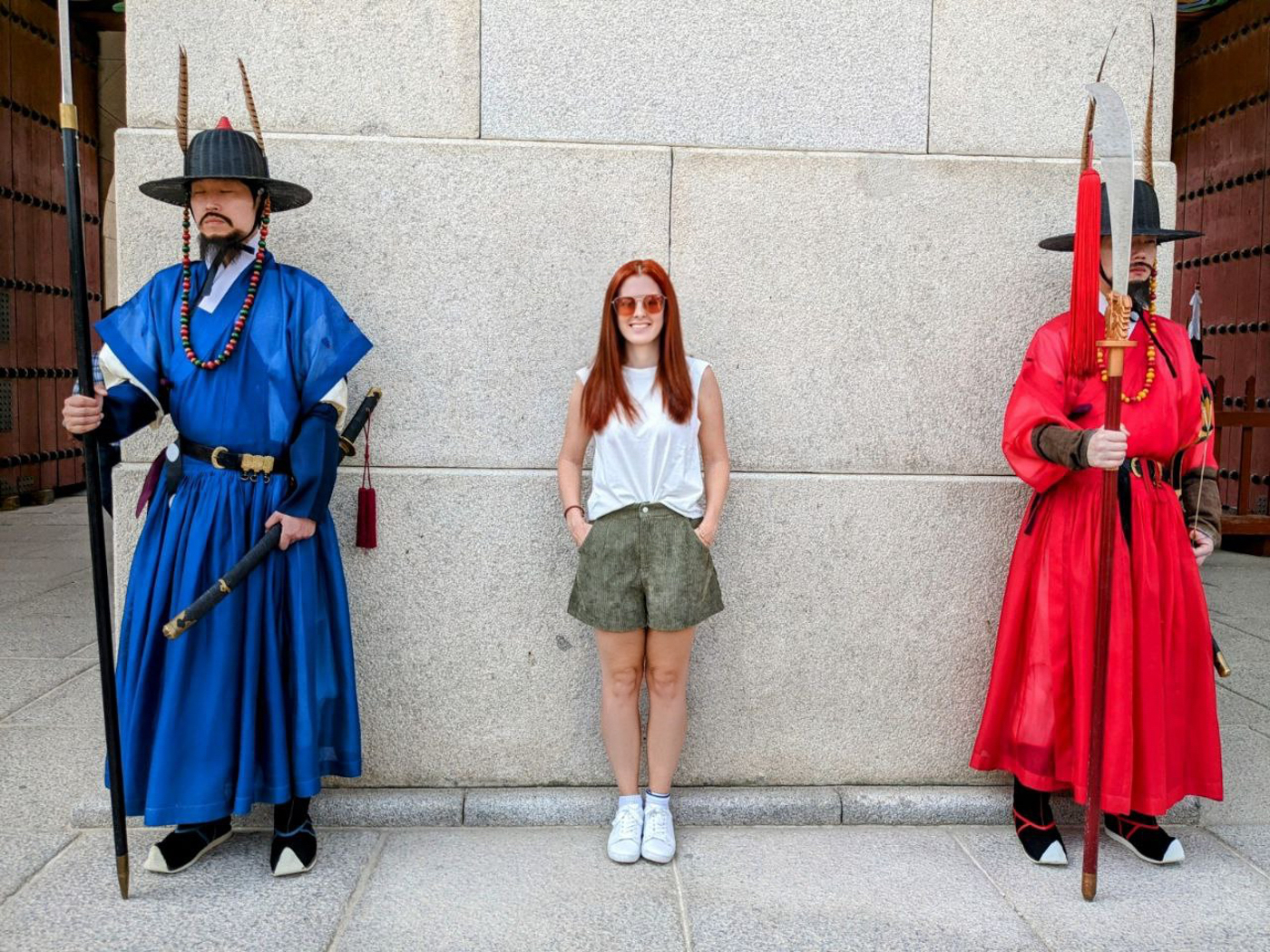
How Much Does it Cost to Travel in South Korea?
It’s time to tally up all of my expenses to see my total travel costs! In U.S. dollars, my average daily costs in South Korea were:
- Accommodation: $104.50 per day
- Transportation: $10.20 per day
- Food: $19 per day
- Activities/Entrance Fees: $3 per day
Average amount spent in South Korea: $137 a day!
As I mentioned in the accommodation section, I did splurge a little when it came to accommodation, so if you’re on a tighter budget, that’s where you’ll be able to cut costs.
For example, if you’re a backpacker who plans on staying in dorm rooms, you can expect to spend $18 a night on accommodation, making your total daily costs around $50 a day .
Alternatively, if you’re part of a couple and staying in budget-to-mid-range guesthouses, you’ll be looking at $50 a night for accommodation, which will make your daily total costs $82 a day .
So what do you think? Is South Korea more or less expensive than you expected? Let me know in the comments below!
Lauren juliff.
Lauren Juliff is a published author and travel expert who founded Never Ending Footsteps in 2011. She has spent over 12 years travelling the world, sharing in-depth advice from more than 100 countries across six continents. Lauren's travel advice has been featured in publications like the BBC, Wall Street Journal, USA Today, and Cosmopolitan, and her work is read by 200,000 readers each month. Her travel memoir can be found in bookstores across the planet.
Related Posts

The Cost of Travel in Mauritius: My Detailed Budget Breakdown

The Cost of Travel in Thailand: My Detailed Budget Breakdown

2023: My Travels in Review

How to Spend Three Perfect Days in Delhi: An In-Depth Itinerary

Pushkar Travel Guide: 11 Things to Do in Pushkar

The Cost of Travel in Peru: A 2023 Budget Breakdown
11 comments.
Thank you so much for sharing all your infos, they are always clear and straight to the point which makes it really handy, i have been reading you for a while and always enjoy, i am now doing a 3 months trip through bali, south korea and japan, and your infos on south korea are going to be usefull, once again, Lauren,thank you!
Thanks a lot for your excellent article Lauren! South Korea is much more affordable than I thought it was. And apparently there’s nature too :) We just decided against a South Africa trip this September due to the safely situation and power outages, but now adding South Korea to the wishlist for when the boy is a little older and traveling purely by public transport is more feasible.
We’ve been living in the SoKorea for almost 2 years now. A couple things …
* DMA/JSA tours ARE available through visitjsa.com. US military and USDoD-associated individuals have first dibs, but we booked the end of July as “general tourists” without an issue. These tours leave from right OUTside several US military bases in SoKorea, include lunch and are half the price of just DMZ tours from Seoul. There is a dress code, which is STRICTLY enforced.
* In regard to the language barrier. Many Koreans – especially “younger” generation Koreans – DO know English. They, as a whole, are EXTREMELY shy about using it, though. I have found most have excellent English skills – much better than my Korean skills!! Give grace here, folks. And, download the Papago app as EVERYONE (Koreans & foreigners) uses this to communicate. Don’t be shy – just Papago it!
* Korean phone number – during covid, you needed a Korean number to register at restaurants and retail shops for contact- tracing/tracking purposes. We haven’t been anywhere lately that required a Korean # to get a table or anything.
* For taxis, subway directions/maps, download Kakao – there are various Kakao apps – 1 for subway, 1 for taxis, etc.
* Credit cards – AMEX tends to work more places than my Chase or Citibank VISA cards. I carry a couple hundred kwon with me just in case my cc doesn’t work. If you have significant leftover kwon when you leave, I’d suggest looking for Americans at the airport and strike up a conversation – with so many US military bases here, there’s a good chance someone will buy your kwon off you at a reasonable exchange rate.
Thanks for all the extra information!
The language barrier wasn’t a criticism or complaint — just in case you interpreted it as one! I came across a few younger Koreans who spoke excellent English and I didn’t personally have any problems with the lack of English spoken. It was just a brief sidenote that after travelling to 100-odd countries, the language barrier was higher in South Korea than the vast majority of other places I’ve visited.
I used Papago and Naver and Kakao, etc while I was in the country, but as this is an article about the cost of travel, I didn’t want to turn it into a travel guide and add too much detail that was unrelated to the costs. I’ll definitely publish a more general travel guide over the coming months!
The Korean phone number thing wasn’t a reference to COVID contact tracing but rather that the popular restaurants operate waitlists — and to join those waitlists, you’ll sometimes be asked to give your phone number so that they can text/call/KakaoTalk you when your table is available. I had one restaurant turn me away because Dave wasn’t with me so I couldn’t give them a local number, and a couple of takeaway places, where you ordered from a screen, required a local number to confirm the order. I read about this on r/KoreaTravel ( example ) quite a bit before getting here — it wasn’t as bad as expected but it does still seem to be a good idea to get a local number just in case.
Good to know that AMEX works well — the one bank we don’t have accounts with! I’m not American so wasn’t sure if US cards would fare better than ours.
Great to see new articles again! Cant wait to hear what you have been up to!
Thanks so much! I’m relieved to see I still have readers after my extended break! Lots to share from the past year, but the biggest news is probably gaining my Australian permanent residency and setting up a new home base in Melbourne! Other than that, lots of travel in Southeast Asia, as always :-)
Hi! Thanks so much for this :) we are travelling in October to South Korea & Tokyo and I too have read about needing a korean number. Do you happen to know if you need a local number for Kakao app? Thank you!
Hi Lucy! Yes, you can use an international number to sign up for Kakao, but the app won’t let you add a credit or debit card. You’ll need to pay the driver directly with cash.
Just wanted to let you know I found this post incredibly helpful as I´m planning a South Korea trip for later this year! Great to have an idea of costs, and you´ve made me consider putting Jeju island on our itinerary (would mean cutting time in other countries on the way – still figuring it out!).
Thank you so much for all the info! I just have one more question: Do you happen to know of any budget travel agency that organizes Korean land tours for a week or so? I found a few, but the prices are rather high.
wow..learnt so much from your article. thanks a ton. planing a 4day trip to S.Korea and 4 days in Taiwan… do you have any info on taiwan? also is S.Korea clean and safe? Im planning to stay in Seoul. would love to know where i can do some clothes shopping……..also are there any night markets around?
Leave a reply Cancel reply
Your email address will not be published. Required fields are marked *
Meet Lauren Juliff
- Meet the Team
- Work with Us
- Czech Republic
- Netherlands
- Switzerland
- Scandinavia
- Philippines
- South Korea
- New Zealand
- South Africa
- Budget Travel
- Work & Travel
- The Broke Backpacker Manifesto
- Travel Resources
- How to Travel on $10/day
Home » Asia » Is South Korea Expensive? (Insider’s Guide for 2024)
Is South Korea Expensive? (Insider’s Guide for 2024)
South Korea is a fascinating place to visit. This East Asian nation is a whirlwind of food, culture, history, serene landscapes, and frenetic cities. One moment you could be touring the DMZ, the next kicking back on a beach on Jeju Island – safe to say this tiny country is absolutely loaded with adventure!
A dream is all good, but when it comes to the logistics of the trip, you have to ask yourself: Is South Korea expensive? Well, not necessarily!
Of course, we are all going to have different expenses based on our own circumstances when we hit the ground. But broadly speaking there are a few main categories to your budget, and tips and tricks to saving money in each of them. From food and accommodation to sightseeing and tipping culture, this guide has everything you need to plan an epic whirlwind of a trip to South Korea – all without breaking the bank.

Do You Want to Travel FOREVER??
Pop your email in below to get a FREE copy of ‘How to Travel the World on $10 a Day!’.
So, How Much Does a Trip to South Korea Cost on Average?
Cost of flights to south korea, price of accommodation in south korea, cost of transport in south korea, cost of food in south korea, price of alcohol in south korea, cost of attractions in south korea, additional costs of travel in south korea, some final tips for saving money in south korea, so is south korea expensive, in fact.
So, the cost of a trip to South Korea depends on a whole load of different factors. First of all, there are the basics – accommodation and flights. Throw on top of that everything else – the sightseeing, transport, food, drink, even souvenirs, and things can really add up. That’s where budgeting comes into its own. You want to make sure you have adequate funds for getting through your epic adventure in South Korea !
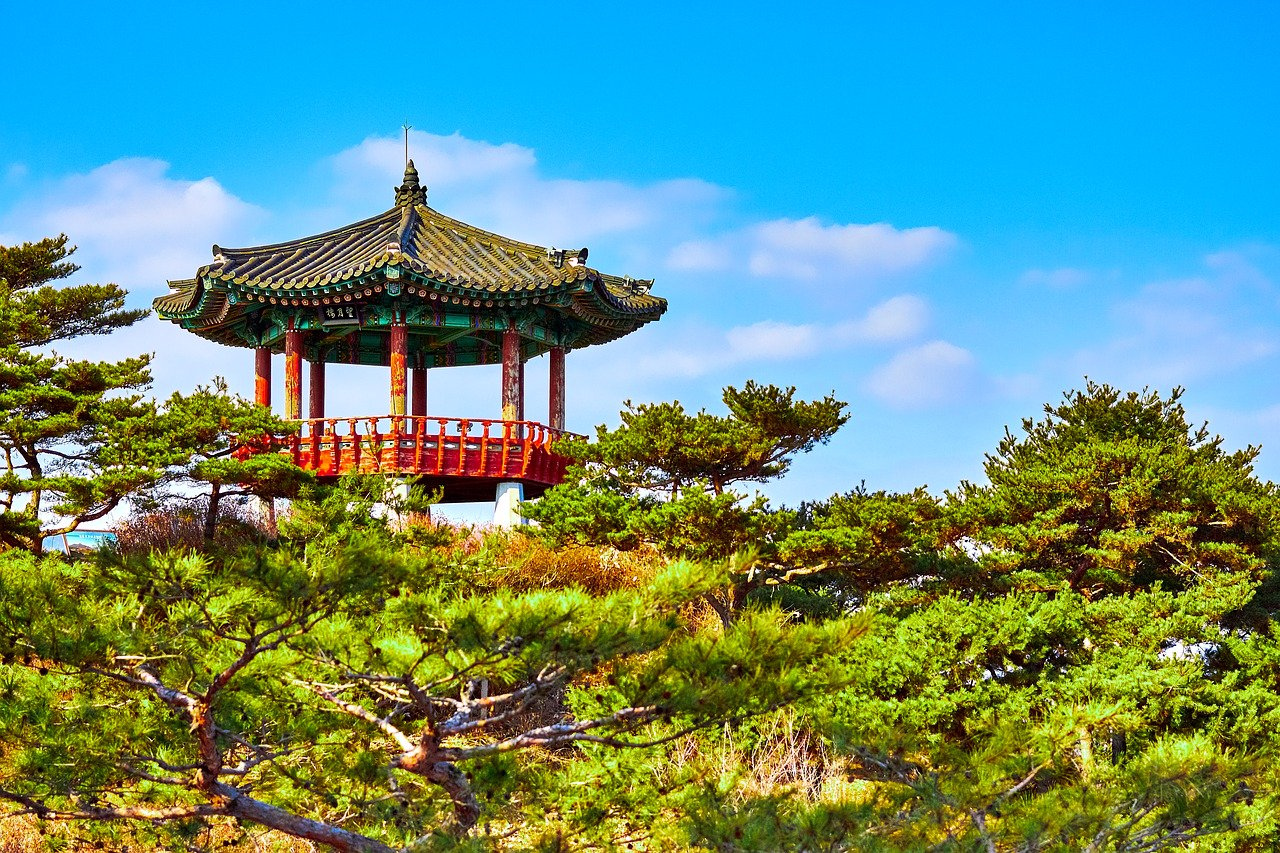
Travel costs we list throughout this guide are estimates and are subject to change. Prices are listed in US Dollars (USD).
South Korea uses the South Korean Won (KRW). As of March 2021, the exchange rate is 1 USD = 1112.36 KRW.
See below for a handy table summarizing the general costs for a two-week trip to South Korea.
2 Weeks in South Korea Travel Costs
ESTIMATED EXPENSE : $490 – $1133 USD for a roundtrip ticket.
Is flying to South Korea expensive? Mostly, it depends on where in the world you’re flying from, and also when you are flying. During the high season (June, July) flights into the country are more expensive. The cheapest month to fly into South Korea is April.
South Korea’s main airport is Incheon International Airport (ICN), which is situated in the capital Seoul. Make sure to factor in transport to and from the airport into the cost of your trip to South Korea. Some hotels may offer complimentary shuttles, otherwise prepare to pay for public transport or a taxi.
Here’s a rundown of the average costs of flying to South Korea from a selection of worldwide transport hubs:
- New York to Incheon International Airport: 490 – 1054 USD
- London to Incheon International Airport 590 – 720 GBP
- Sydney to Incheon International Airport: 854 – 1,334 AUD
- Vancouver to Incheon International Airport: 865 – 1,432 CAD
If you think that’s expensive, don’t sweat it! You can fly into South Korea more cheaply by using online services like Skyscanner . This allows you to scroll through various deals, last-minute bargains, and early-bird tickets, too.
Another tip: the cheapest option is often the longest! Yes, that means multiple connecting flights, but if you’ve got the time, the savings can do wonders for your budget and you will be able to hit the ground with more coin in yuor pocket!
ESTIMATED EXPENSE: $9 – $80 USD per night
We’re going to let you in on a secret – South Korea is a very inexpensive destination! Accommodation in South Korea is not expensive (unlike Japan, which it is often conflated with). And the digs are good quality for the price too – just because it’s cheap, doesn’t mean it’s sub-par.
You can expect to find every accommodation type across South Korea – hostels, urban Airbnbs, and all manner of hotels. There’s something to suit everyone! If you’re on a shoestring, or on your own, pop on into a hostel. If you have it in your budget to splurge a little, there will be something incredible here too!
But how do each of these options fit in with your budget? Good question. Let’s get into the details of each of them now.
Hostels in South Korea
There is a sizeable selection of hostels in South Korea. More often than not, they’re the cheapest option going, as is the case in other countries. But don’t expect to find them everywhere – outside of the big cities like Busan and Seoul they are few and far between.
The cheapest hostels in South Korea cost as low as $10 per night.
Along with those wallet-friendly prices, hostels are packed with other perks. With communal kitchens and common rooms, they tend to lean towards being sociable places, hubs for international travellers exploring this East Asian nation. Free breakfasts, evening events, and walking tours put on by staff make them valuable for backpackers.
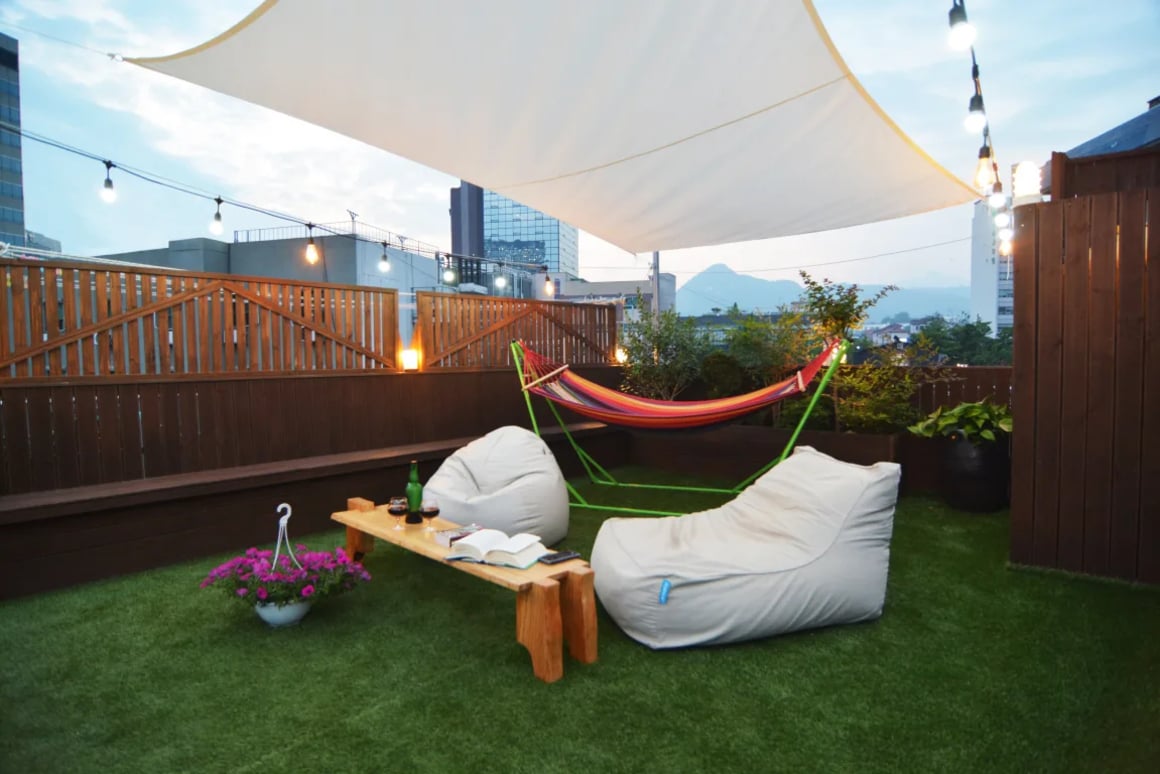
(If you’re already sold, check out our guide to the best hostels in South Korea !)
Here are a few of the top hostels in South Korea to inspire your trip:
- Seoul Cube Itaewon – This cool hostel in Seoul boasts female dorms, male dorms, and free breakfast among its many perks. Add to this its location just two minutes’ stroll from Itaewon Station, and it’s a solid option.
- Insa Hostel Insadong – A backpacker-friendly hangout, Insa Hostel Insadong has colorful interiors and a rooftop terrace where you can mingle with other guests over drinks on a backdrop of city views. Breakfast is included.
- INNO Guesthouse and Bar Hongdae – One major perk of this hostel is that it comes with its very own on-site pub, which is a great place to meet fellow travellers. Dorms are clean and spacious.
Airbnbs in South Korea
Airbnbs are plentiful in South Korea. Unlike hostels, you’ll find them everywhere – and often, they’ll be situated in modern apartments in high-rise buildings. A lot of the time they’re fairly compact, but they come packed with all you need to enjoy a very local stay almost anywhere in the country.
They can be priced as a low as $20 per night.
Privacy is a big part of staying in an Airbnb anywhere in the world. The independence afforded by staying in an actual apartment as opposed to a hotel (or hostel) is highly valued too, and a kitchen to cook your own meals in keeps costs low. Plus, they’re often in areas that other accommodation isn’t , meaning you get a more authentic experience of the place you’re visiting. What’s not to like?
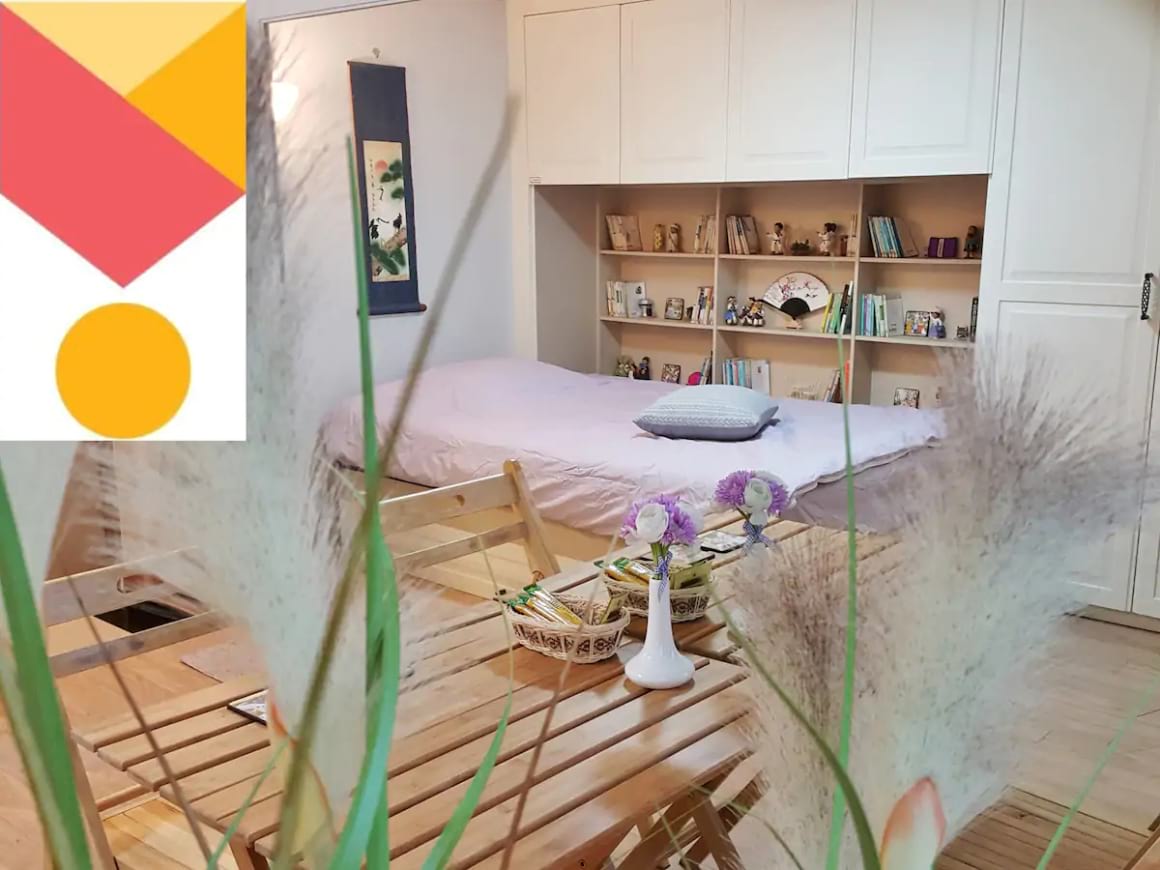
Here are some of our favourite Airbnbs in South Korea:
- Beautiful Apartment in Hongdae – This is a cosy, homely kind of apartment that’s perfect for a solo traveler or a couple. Decorated in warm, relaxing colors, it comes with its own kitchen and laundry facilities for extra convenience.
- Bright Modern Apartment – Bright and contemporary furnishings mingle with whitewashed walls and wooden floors for a stylish stay. In addition, it’s close to bars and restaurants.
- Charming City Apartment – With enough room to sleep up to four guests, this studio apartment is ideal for small groups or a couple. It comes with a compact kitchen and all the amenities you’ll need for a comfortable stay.
Hotels in South Korea
While the most expensive accommodation option in South Korea, they’re still relatively cheap. In fact, you can enjoy a stay in a modern, mid-range hotel in Seoul for around $50. That’s a bargain compared with many other countries! In other cities within the country, you can expect even cheaper room rates.
Hotels can be the way to stay in style in South Korea. You won’t have to lift a finger, thanks to housekeeping, concierge services, complimentary breakfasts, and on-site amenities like gyms and restaurants. If you thought traveling in South Korea cheaply meant missing out on hotel stays, think again!
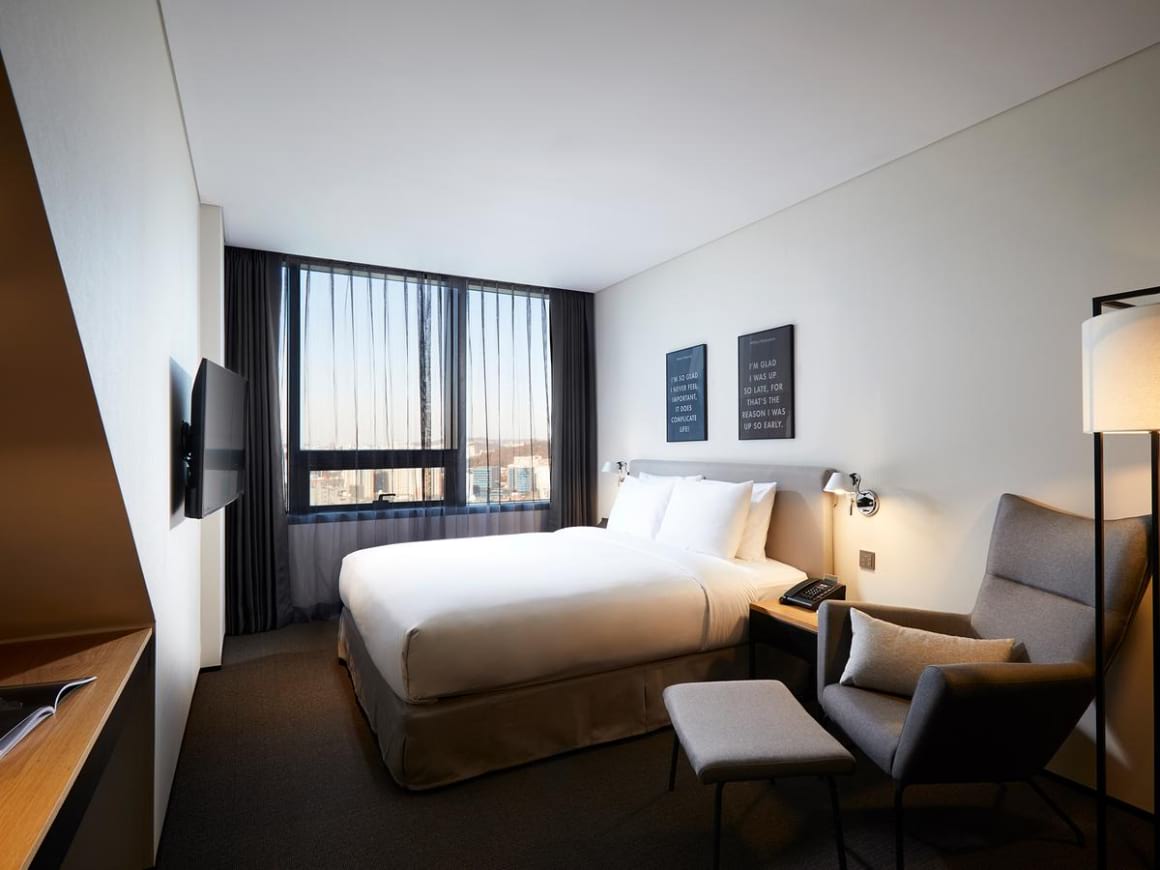
Here are some of the top hotels in South Korea:
- GLAD Mapo – This contemporary hotel is situated right in front of Gongdeok Station in Seoul. Guests here can enjoy convenience and comfort, thanks to the onsite fitness center and bar.
- Tong Tong Petit Hotel – Boasting a bar and garden, this hotel offers a selection of different rooms to suit travelers’ needs, and all at a budget-friendly price.
- Metro Hotel Myeongdong – A modern hotel with polished rooms, Metro Hotel Myeongdong has a fitness center, outdoor terrace, and is a stone’s throw from a metro station.
Jjimjilbang in South Korea
If you wanted to stay somewhere a little more authentic, look no further than this jjimjilbang. Translating literally as “steamed-quality room” these bathhouses are a one-stop-shop for food, accommodation, and a spa experience.
Often multi-level, these 24-hour spa resort complexes boast swimming pools, baths, saunas, bars, computer rooms, and restaurants – you name it. Sleeping in a jjimjilbang is definitely unique, and a bargain too, costing as little as $13 per night (though rooms are communal).
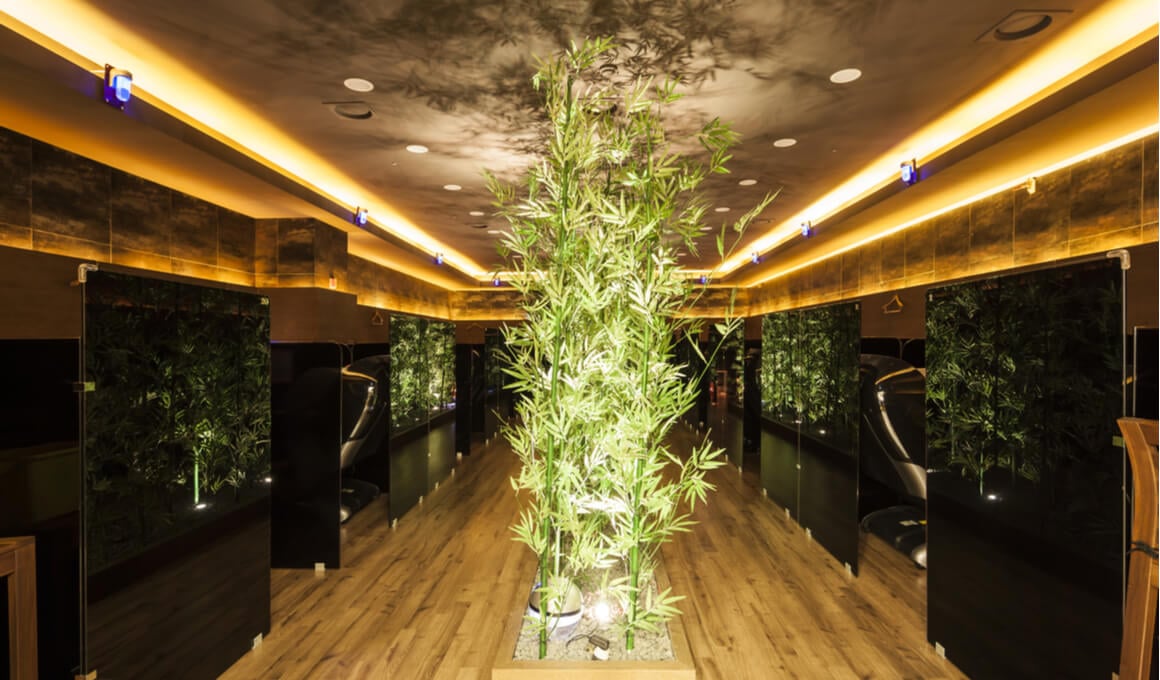
Despite the budget-friendly prices, they’re often glossy and polished, but don’t expect them all to be up to scratch. And note – they can’t be booked in advance.
Here are a few of the top jimjilbang in South Korea:
- Dragon Hill Spa – A famous spa in Seoul, this jjimjilbang is spread across eight floors and boasts various recreation facilities, including a movie theater, fitness center, and restaurants. The sleeping floor is spacious; the all-inclusive nightly rate is $30.
- Spa Lei – With its welcoming atmosphere, this place really is cheap (around $14 per night). It’s located in Seoul’s upscale Gangnam and boasts multiple sleeping areas.
- Riverside Spa Land – This more traditional jjimjilbang is situated right next to Dong Seoul Bus Station, making it easy for arrivals and departures. It costs around $6 dollars to use the facilities (including sleeping).

We’ve tested countless backpacks over the years, but there’s one that has always been the best and remains the best buy for adventurers: the broke backpacker-approved Osprey Aether and Ariel series.
Want more deetz on why these packs are so damn perfect? Then read our comprehensive review for the inside scoop!
ESTIMATED EXPENSE : $0 – $10.00 USD per day
South Korea is a relatively small country – around 100,000 square kilometers. That means you can comfortably traverse its relatively small area during a 2-week trip.
Transport in South Korea is not expensive either. That combined with its fairly compact size means adventuring is a very viable option, even on a shoestring budget. You can choose from affordable high-speed trains, and even more affordable intercity buses, to get you from A to B.
Then once you’re in the cities, you can use cheap metro (or bus) networks to get around.
All in all, public transport in South Korea is comprehensive, budget-friendly, and really opens up the country beyond its much-touted cities. Now let’s take a more detailed look at how each of those transport options works out.
Train Travel in South Korea
South Korea has a pretty excellent train network, but it isn’t always the most extensive. Used for long-distance travel around the country, trains in South Korea are safe, comfortable, and most definitely affordable.
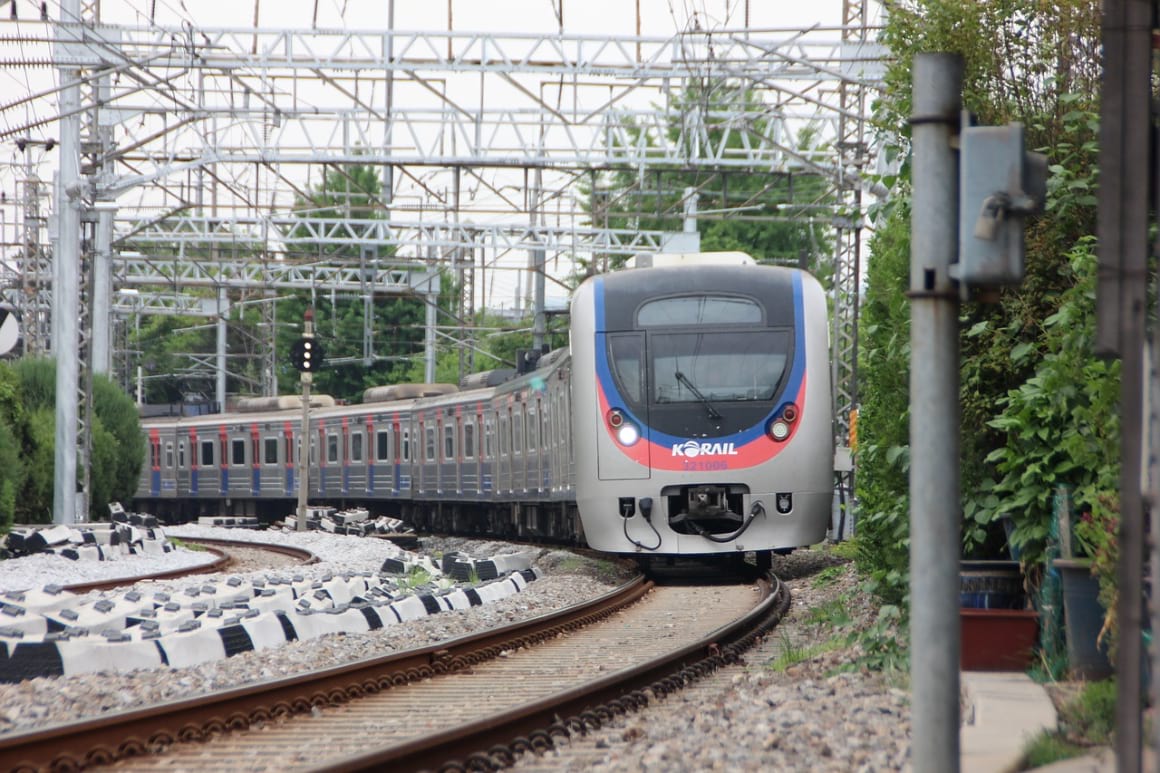
There are various options to suit your budget and schedule. KTX refers to high-speed express trains, ITX are regular train services, and KORAIL offers trains run for tourists.
The fare you pay depends on how far you travel and what type of the above train services you use. For example, KTX trains are 40% more expensive overall than regular ITX trains.
Booking in advance gets you a discount – trains are also cheaper by 15% if you travel Monday to Friday. Standing tickets called ipseokpyo are 15-30% cheaper than assigned seat tickets, depending on the route – you’re still allowed to sit in an empty seat using an ipseokpyo , however.
You may want to consider the KORAIL Pass, allowing for unlimited rail travel across South Korea (including KTX/ITX services) within selected time blocks. These include:
- 3 days: $100
- 5 days: $150
- 7 days: $174
There’s also the option to select either two or four-day KORAIL Passes to be used within a 10-day window, giving you more flexibility. Those aged 13-25 get a 13% discount.
Bus Travel in South Korea
Bus travel in South Korea is very affordable. The network of long-distance buses connects every town and city in the country, and reaches areas that the trains don’t go.
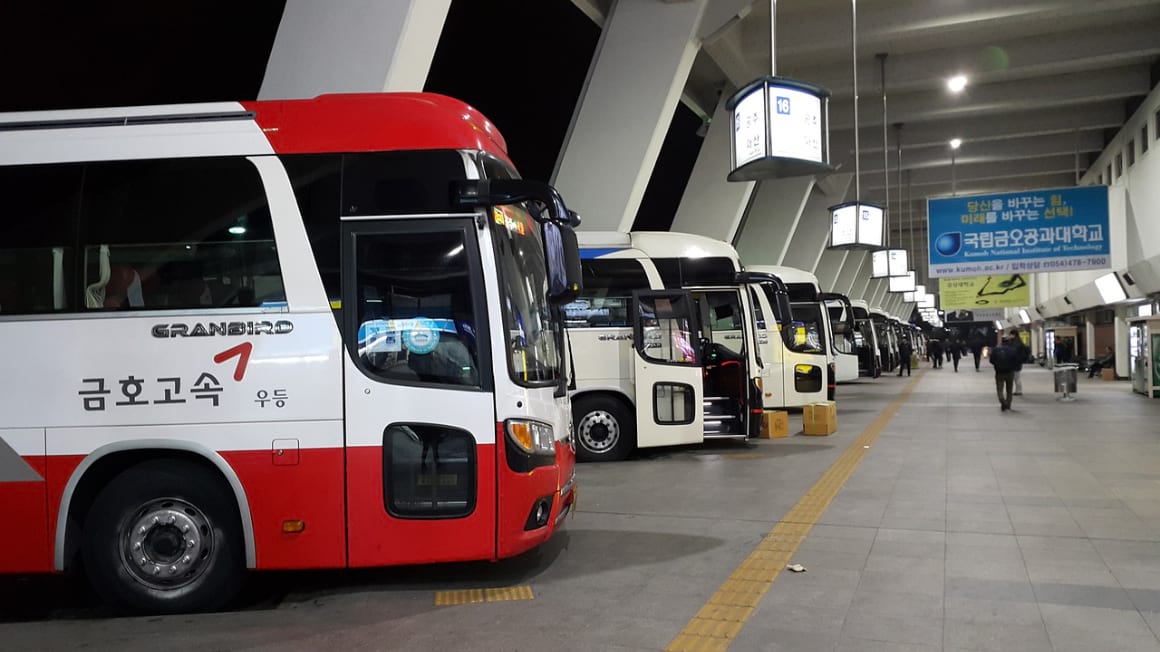
These long-distance buses are frequent, leaving every 15-30 minutes from large, well-organized bus stations. In smaller towns, they’re more likely to leave/arrive hourly.
It’s easy to just turn up at a bus station and buy a ticket on your day of travel. Simply go to the window and state your destination.
Express buses ( ilban ) are the quickest ways to get between larger cities. Expressways even have dedicated bus lanes to reduce delays. Buses almost always leave on time, and are pretty speedy to say the least.
There are also udeung . These “superior” buses have three separate seats across, as opposed to the regular two pairs of seats in ilban . You’ll have to pay around 40-50% more for the privilege, however.
A ticket for an hour-long journey on a regular express bus will cost approximately $3.60. It’s unlikely that you’ll pay any more than $10 for a single bus journey (unless you opt for an udeung service).
Getting around cities in South Korea
City transport in South Korea is affordable and extensive, allowing you to get around cheaply. For one thing, six of its big cities have their own metro networks – in all cases, they’re affordable and convenient. These are Seoul, Busan, Daejeon, Daegu, Gwangju, and Incheon.
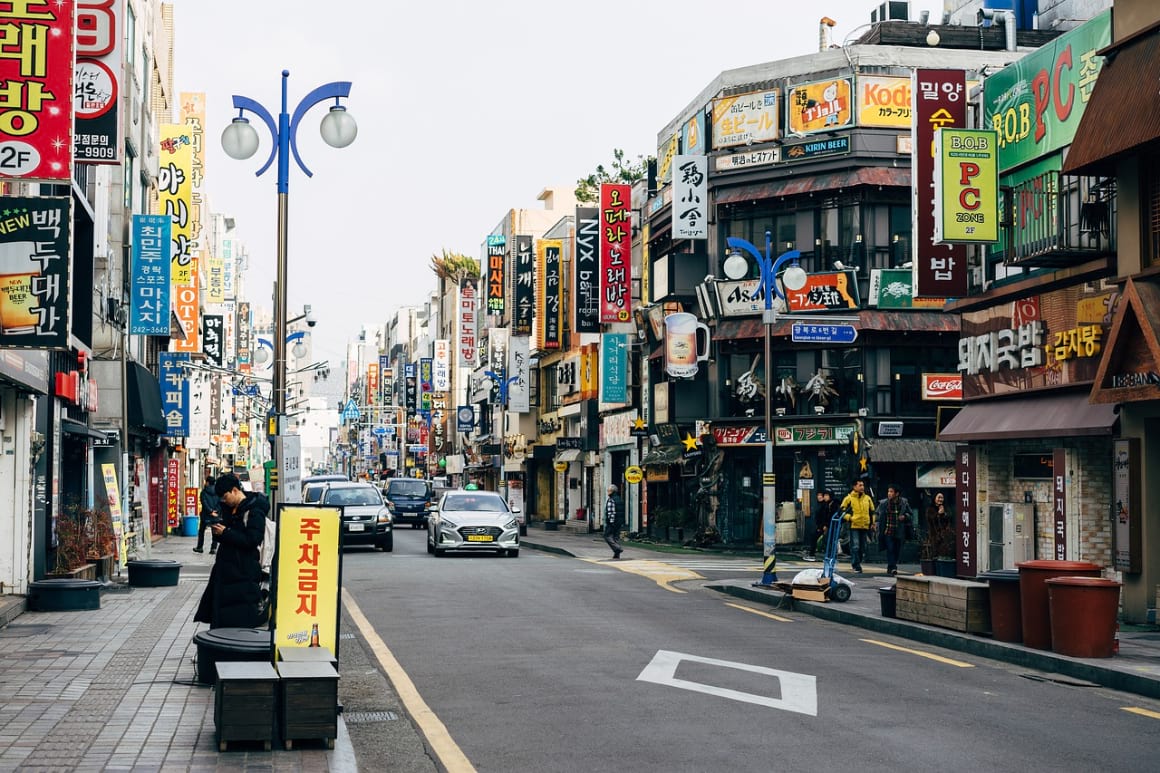
The average cost for a single ride on any of these subways is approximately $1.60.
Then there are city buses. Frequent and budget-friendly, a single ride costs $1.10 for one trip (no matter how far you travel). Make sure you have the correct fare though, as the machines on buses don’t give change.
Taxis are ubiquitous and inexpensive in South Korea, and practically make up part of any given city’s public transport network. A regular taxi ( ilban ) costs around $3 for the first two kilometres.
Like the metro and bus services, you can use a prepaid contactless travel card to pay for your journeys in taxis. The main one is the T-Money card. It gives you around a $0.09 discount on every trip and costs $2.70 to purchase.
Renting a Car in South Korea
Driving in South Korea is not recommended, especially if it’s your first time visiting. The country’s public transport will have you in most places you’ll want to visit without any hassle.
Plus, the roads can be pretty hair-raising at times, too – it seems like everyone’s in a big rush to get wherever they’re going!
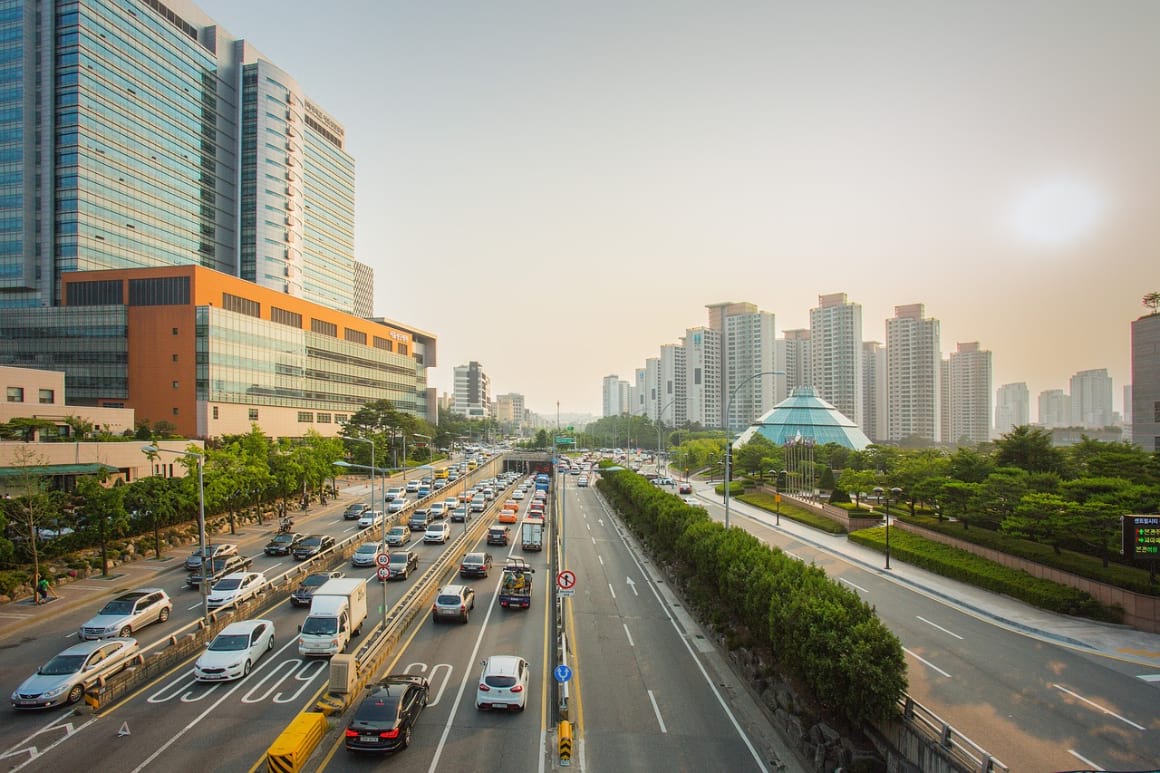
Even if you want to drive, and you’re an experienced driver, it’s not the most economic way to get around. The standard rate for a standard car is around $60 per day – compared with the cost of long-distance bus travel, it’s very expensive.
Insurance is compulsory and costs around $10 a day .
On top of that, you’ll also have to pay tolls to use the expressways, which makes renting a car in South Korea even less of a budget option.
The cost of petrol in South Korea is around $1.32 per liter, diesel about $1.14.
Rental costs do get cheaper if you rent the car over multiple days, but not by much. Renting a car in advance may also yield discounts. In conclusion, however, renting a car is not a good way to travel around South Korea cheaply.
Want to save some cash and explore South Korea by rental car? Use rentalcar.com to find the best deal possible. There are some great prices on the site and they aren’t difficult to find.
ESTIMATED EXPENSE: $5-$20 USD per day
Whether it’s grabbing some street food, or dining on high-end multi-course extravaganzas, food is always a centerpiece to life in South Korea.
Korean food revolves around bap (rice) and a variety of banchan (side dishes), as well as soup and the ubiquitous kimchi. Expect big, bold flavors with plenty of garlic and chili, soy sauce, hot chili paste, and fermented soybean paste.
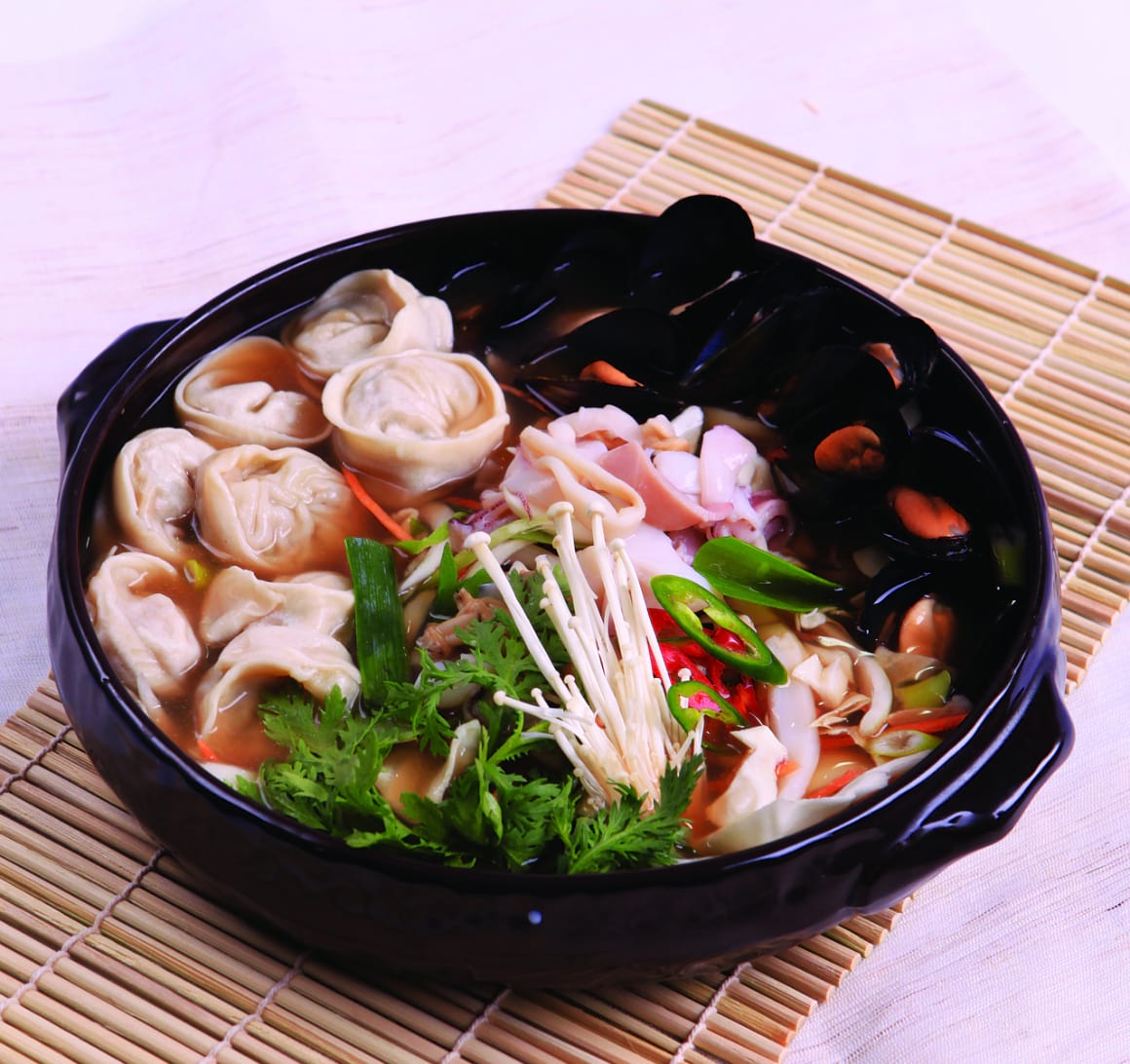
And for the most part, food is not expensive in South Korea. Unless you’re trying so-called royal cuisine, it’s affordable up and down the country. Make sure you don’t miss out on:
- Korean Barbecue – Now popular all over the world, Korean barbecue is a lively way to enjoy food in South Korea. Cook yourself an array of meats served up alongside vegetables and side dishes. Can be enjoyed for as little as $11 per person.
- Bibimbap – The country’s most famous rice dish, bibimbap consists of rice, vegetables, egg, and sometimes meat, served up in a hot stone bowl with lashings of gochujang (chili paste). One bowl can cost as low as $5.
- Dakgalbi – Delicious dakgalbi is a spicy concoction of chicken and tteok (rice cakes), as well a variety of other ingredients thrown in depending on the establishment – even cheese. This can cost around $8.
Keep the cost of your trip to South Korea even lower with these foodie tips:
- Look for noodle joints – Noodles are cheap and plentiful in South Korea. They serve up things like nangmyeon (buckwheat noodles) served in a cold broth, popular in the summertime. Noodle joints are honestly everywhere and offer bowls for as little as $2.50.
- Street Food – You can sample an array of delights through Korean street food. This means anything from snacks at $0.50 to full-on meals for $1.80.
- Opt for a buffet – This is a great way to eat a lot, try a lot, and not pay very much for the privilege. These are all-you-can-eat and offer different combinations – for Korean hotpot or barbecue, it’s around $13.
Where to Eat Cheaply in South Korea
Eating out in South Korea is normal. It’s a national pastime. Usually done with a bottle of soju (rice vodka) on the side, dining takes hours and is a big social event. A visit to South Korea would not be complete without enjoying this gastronomic scene.
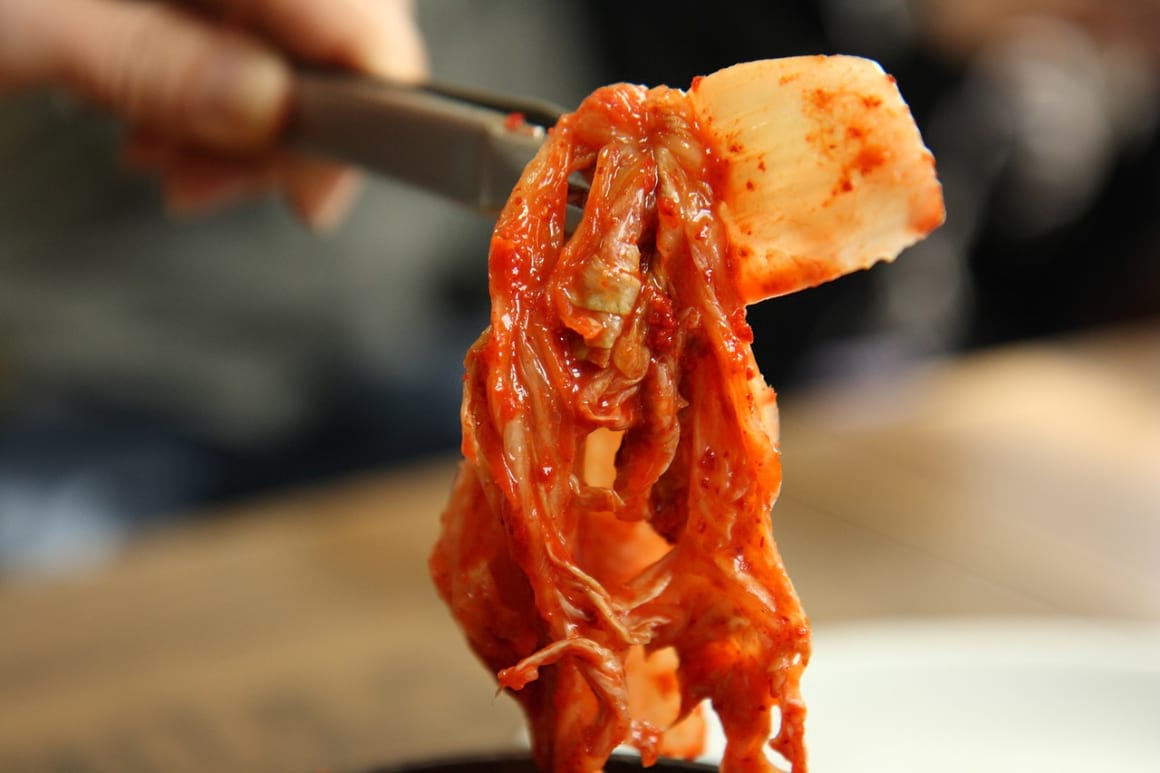
Joining in doesn’t have to cost the world. In fact, eating out in South Korea isn’t that expensive. There are a lot of options for budget-minded travelers, including these hotspots:
- Look for orange tents : Called pojangmacha , these roadside eateries might look a bit ropey, but honestly, they’re amazing. Usually bright orange (sometimes blue), all you do is duck in, pull up a chair, and point to something. They’re usually quite rowdy with plenty of alcohol-induced silliness.
- Discover Isaacs Toast: Not all Korean food is “traditional”, as evidenced by its wide-reaching chain of toasted sandwich stores, Isaacs Toast. Combos of cheese, sausagemeat, bacon, eggs, potato, and chicken, are served hot, dripping with sauce, between toasted bread. Super inexpensive and a great hangover cure to boot.
- Korean meal sets: Set meals are a big deal in South Korea. Head to side streets and food courts alike and there’ll be places serving these. For around $5, you get a bowl of rice, soup, and various banchan .
Eating out may be cheap in South Korea, but sometimes cooking meals for yourself is even more affordable. If you feel like rustling up some grub, here are some great spots to pick up fresh ingredients:
- Lotte Mart: This big chain of supermarkets and department stores can be found all over the country. They sell a wide range of groceries, international food, and even clothes and electronics.
- E-mart: One of the largest retailers and oldest supermarket chains in South Korea, E-mart stocks everything from coffee and seaweed to cosmetics and alcohol. They also serve a load of Western brands if you’re missing home comforts.
ESTIMATED EXPENSE: $0-$15 USD per day
Like eating, drinking is a big part of socialising in South Korea. And not just “normal” drinking, but drinking quite heavily is a regular part of Korean social life. On any given weekend, bars and barbecue restaurants overflow with friends enjoying copious amounts of soju and beer to wash down sizzling slices of beef and pork belly.
So, as you may be imagining, South Korea is not expensive for alcohol.
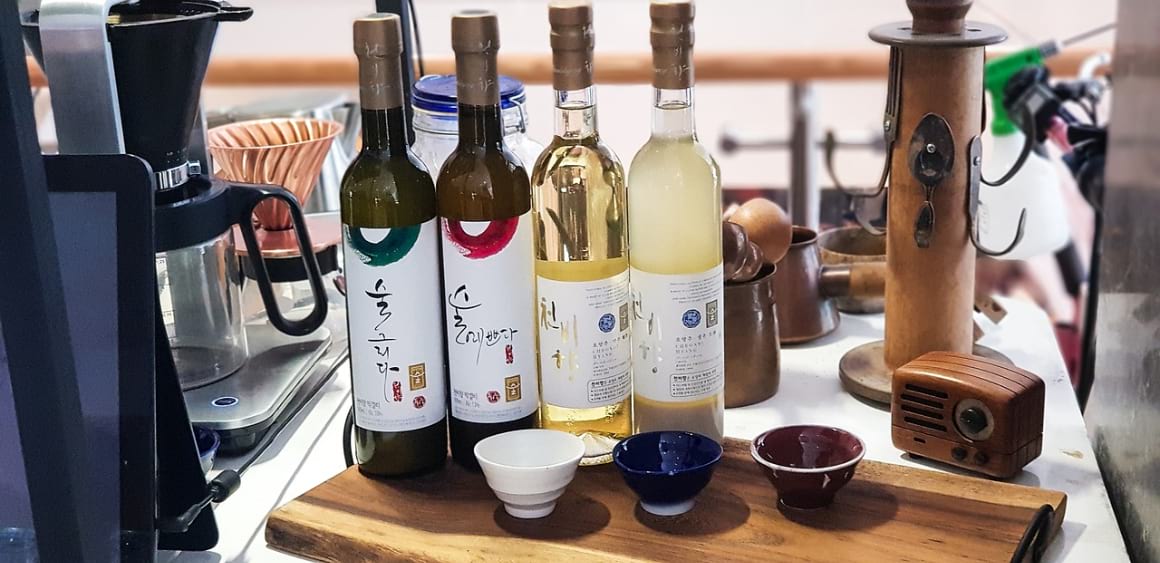
Whether it’s a restaurant, a trendy bar, or a boisterous streetside drinking den, chances are the alcohol is going to be relatively cheap.
A glass of Cass (the local beer) will cost you between $2.70 and $4.50. For a craft beer, expect to pay more – between $4 and $6. Cocktails cost upwards of $6.
Happy hours aren’t much of a thing, but a good option to enjoy some inexpensive drinks is to go to a Hof. These German-inspired establishments serve inexpensive fried snacks and draft beer for around $2.60.
Here are some beverages to stick to if you like bargain prices:
- Soju – You must try this if you like your beverages. This rice (or potato)-based drink is super popular, super alcoholic, and super cheap. It’s sold in 0.36-liter green bottles that’ll cost you between $2.60 and $4 in a bar, but as little as $1.30 in a convenience store.
- South Korean Beer – Local brands of beer include Cass, Max, and Hite. These can be picked up in supermarkets for around $2. If you really love beer, you should try out South Korea’s burgeoning craft beer scene.
A very cheap way to drink in South Korea is to join the locals at seating areas outside 24-hour convenience stores (pyeonuijeom). We’re not joking – this is actually a thing. Pick up a bottle of cheap soju or low-cost beer and enjoy the ambience!
ESTIMATED EXPENSE : $0-$25 USD per day
South Korea has an array of attractions to keep you entertained during your trip. From the charming centuries-old palaces in the capital city to historic villages in Jeonju and sleepy seaside in Jeju .
As well as cultural attractions, there are other fascinating sights where you can learn more about the South Korea of today. These include the DMZ, a multitude of museums, fish markets in Busan, and modern-day city districts, like the Cheonggyecheon – a beautified river district in Seoul.
Thankfully, the cost of attractions in South Korea is pretty cheap. Entry into museums – such as the National Museum of Korea – ranges from free to as little as $5. Elsewhere, many of the historic sites are free to enter – you can even peer into South Korea’s imperial past at Changdeokgung Palace for $2.70.

There’s plenty of free activities too, try the following:
- Hiking – Hiking is uber-popular in South Korea. With seemingly countless mountains with well-marked trails and amazing views (often boasting historic and cultural sites, too), it’s no wonder that hiking is viewed as an unofficial national sport.
- Hanok villages – Often free of charge, these renovated historic villages featuring hanok (traditional wooden houses) are amazing to explore. One example is Bukchon Hanok Village in Seoul, which boasts around 900 houses to wander around freely.

A new country, a new contract, a new piece of plastic – booooring. Instead, buy an eSIM!
An eSIM works just like an app: you buy it, you download it, and BOOM! You’re connected the minute you land. It’s that easy.
Is your phone eSIM ready? Read about how e-Sims work or click below to see one of the top eSIM providers on the market and ditch the plastic .
Now that you’ve got the basics of your budget figured out, you may think that you’re ready to take your hard-earned cash to South Korea and adventure for a couple of weeks. Well, that’s almost true, but there are still more financial factors to bear in mind.
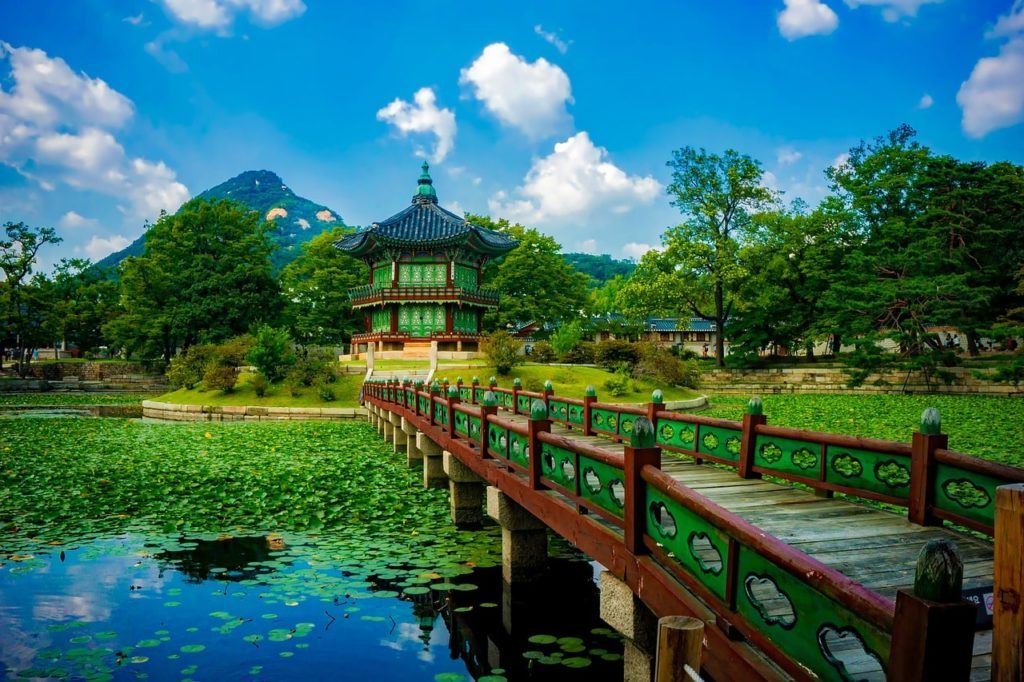
Unexpected costs are just that – unexpected. You may want to buy a book, a touristy T-shirt, a map, a souvenir, some medicine, or simply pay for luggage storage. It could be anything . Factoring around 10% of your original budget for such expenses should cover you though, thus preventing unforeseen purchases to eat into your allowance.
Tipping in South Korea
Tipping is just not the done thing in South Korea. Much like in Japan, tipping is not part of the culture in South Korea and is therefore not expected.
In fact, if you tried to leave a tip on a table in a restaurant in South Korea, it would, most likely, be returned to you.
In some restaurants, however, they will accept a tip. These are usually more Western-oriented establishments. And in upscale restaurants, there may be a 10% service charge included in your bill.
Though it is not uncommon for some South Koreans to outright refuse a tip, generally the more high-end the establishment – and the more “used” to Westerners it is – the more likely it is that they will accept a tip.
In hotels, for example, you can offer money to bellboys if you receive a high level of service. When it comes to tour guides, offering a gift is a more culturally approved way to show your appreciation.
It is not customary to tip in taxis either, so just pay the amount on the meter.
Get Travel Insurance for South Korea
If you’re truly a fan of budget travel , then take note of these additional money-saving tips to help you travel around South Korea cheap:
- Get out into nature – Whether it’s hiking in South Korea’s many mountains, as the older generations of love to do here, or if it’s more watery activities like snorkelling, nature is free. Even if there are costs involved (in travel or equipment rental), exploring South Korea’s natural world is very affordable and very rewarding.
- Use intercity buses – These are crazy cheap. They may be hair-raising at times, but because of that, you’ll often be where you need to be quicker than you’d expect! In all seriousness though, if you want to save money and travel around South Korea, buses are where it’s at.
- Go couchsurfing – Couchsurfing is a social experience for any traveler looking to meet locals and learn about their country through their hosts. There is a surprising number of these in South Korea’s cities, and using Couchsurfing is a very budget-friendly option, but we realise it’s not for everyone.
- Eat street food – When you’re hungry, opt for street eats. This is a very normal thing to eat in South Korea. You can spend your time just wandering around, filling up on various tasty snacks from food stalls for a snip of a restaurant meal.
- Have a water bottle : Don’t waste money on plastic, bottled waters; carry your own and refill it in the fountains and the tap. If you’re worried about potable water, get a filtered bottle, like the GRAYL, which filters out 99% of viruses and bacteria.
- Earn money while you travel: Teaching English while traveling is a great way to make ends meet! If you find a sweet gig, you may even end up living in South Korea.
- Become a volunteer with Worldpackers: Give back to the local community and, in exchange, you’re room and board will often be covered. It’s not always free, but it’s still a cheap way to travel in South Korea.

Our GREATEST Travel Secrets…
Pop your email here & get the original Broke Backpacker Bible for FREE.
Not at all. South Korea is not expensive. Flights taking up the vast majority of your budget. Once you’re on the ground, you’ll marvel at just how budget-friendly this East Asian nation is.
You don’t have to stay put, either – the relatively low cost of pretty much everything makes traveling around and actually seeing the country easy on the wallet too.
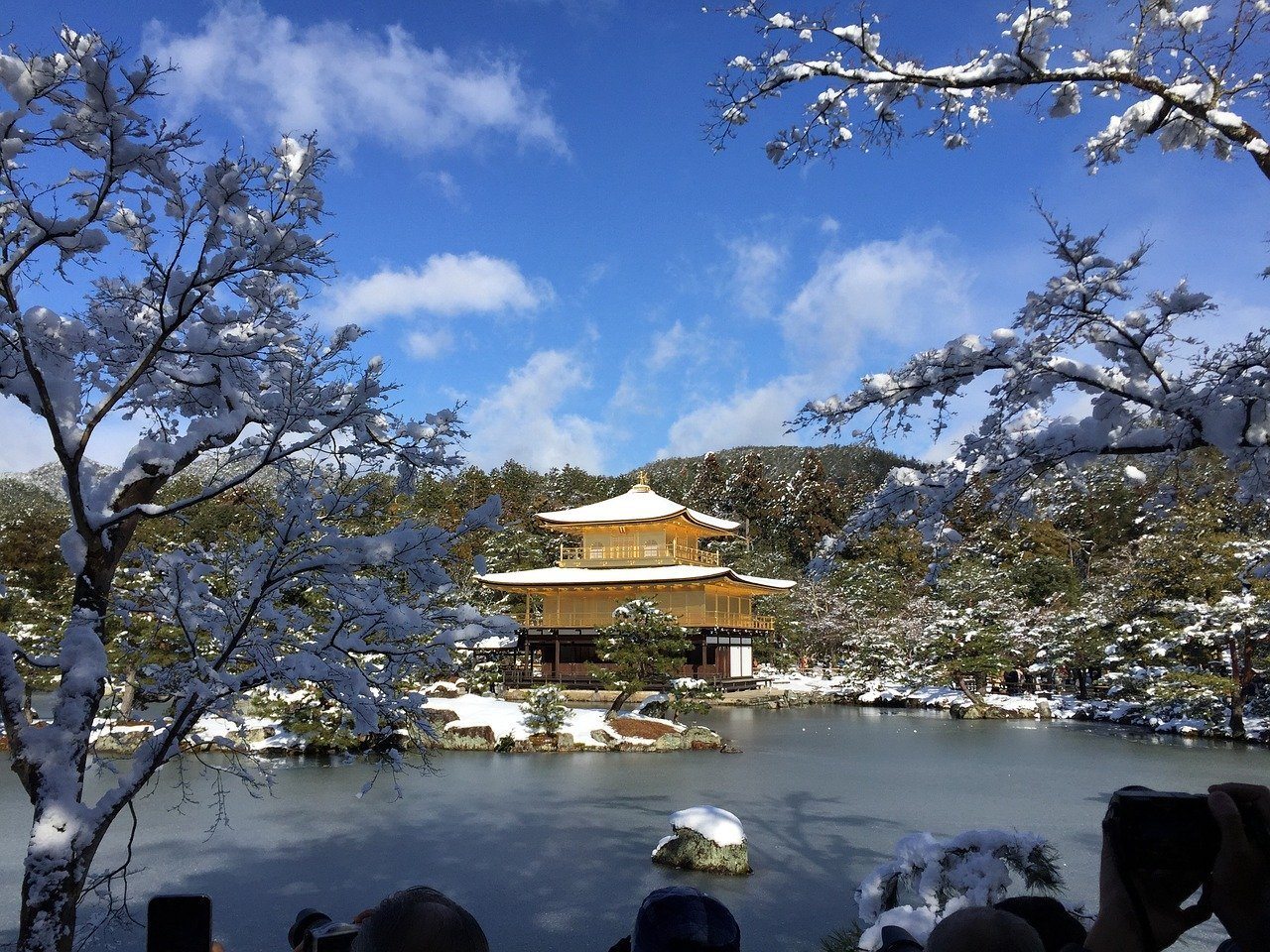
We’re ending with a round-up of the best tips to keep the costs of your trip to South Korea even lower:
- Go where locals go – There are various places throughout South Korea where locals congregate to drink, play music and generally hang out. These can consist of tables and chairs outside convenience stores, or it can be situated along a stretch of coastline – Haeundae Beach in Busan, for example. Grab a bottle or two of soju and join in!
- Enjoy jjimjilbangs – Possibly more value for money than hostels (and definitely more of a “local” experience), jjimjilbangs have affordable accommodation that includes access to a range of spa amenities. A game-changer for budget travel.
- Hike – Hiking is all the rage in South Korea. If you’re stuck for things to do, simply head out into the mountains and hills surrounding its cities for a breath of fresh air, exercise, and awesome views.
- Get buses – We’ve said it before and we’ll say it again, buses are super cheap in South Korea. They make the cost of getting around pretty much negligible to your budget, which means you can make a whirlwind tour of the country on a two-week trip. Also, like almost everything in Korea, they are very safe.
- Hit up convenience stores – These have cheap very Korean snacks, cheap coffee, and cheap alcohol, and they’re everywhere. Any budget-minded traveller should definitely get involved.
With our money-saving tips, you can travel South Korea on a budget between $30 to $75 USD per day.
Before you go, check out our essential packing list . Forgetting something important means having to buy it when you’re in South Korea, which isn’t ideal for your overall travel costs!

And for transparency’s sake, please know that some of the links in our content are affiliate links . That means that if you book your accommodation, buy your gear, or sort your insurance through our link, we earn a small commission (at no extra cost to you). That said, we only link to the gear we trust and never recommend services we don’t believe are up to scratch. Again, thank you!
Share or save this post

Leave a Reply Cancel reply
Your email address will not be published. Required fields are marked *
Save my name, email, and website in this browser for the next time I comment.
Notify me of followup comments via e-mail.

10 Best South Korea Budget Tips + Travel Costs (2024)
Are you wondering how much a trip to South Korea will cost? Here’s our in-depth travel guide on the 10 best South Korea budget tips you should know before your trip. We’ll show you how to plan your South Korea travel costs and many ways to make your trip more budget-friendly. We also share all of our costs for a 2 week trip to Korea from accommodation and snacks to transport and activities.
South Korea is ultimately one of the best countries we’ve travelled to. The country blew us away with its beautiful culture, rich history and delicious food.
Have you been wondering if South Korea is expensive to visit? Depending on the prices of your home country, it’s really not too bad. Compared to the UK it is much more affordable and it’s even slightly less expensive than beloved Japan!
We’ve created this budget guide to share our South Korea travel costs of travelling the country for 2 weeks. We visited Seoul, Gyeongju, Golgulsa Templestay, Busan and Jeonju!
Honestly, we had a great time and can’t wait to go back in the future and we’ll probably still stick to a budget. For now, we’ll show you that South Korea can be done on a budget and what travel costs you can expect.
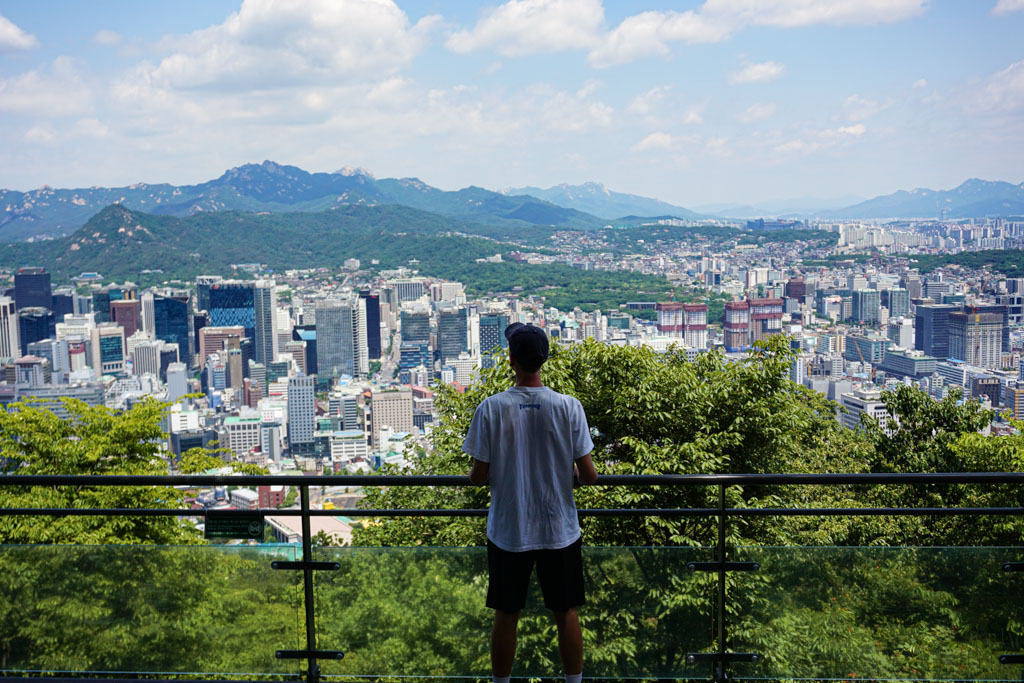
This post may contain affiliate links. We will receive a small commission if you make a purchase using these links, at no additional cost to you .
10 Best South Korea Budget Tips
Table of Contents (Skip to a section!)
Here are our top 10 South Korea Budget tips to help you plan the best trip! After these tips, you’ll find our full South Korea travel cost breakdown split into separate categories.
1. Swap Restaurants for Markets & Street Food
One of the best ways to travel to South Korea on a budget is to choose your food carefully. The price to eat somewhere in South Korea is very reasonable, but some places will be expensive too.
Throughout our 2 weeks in South Korea we ate our food at restaurants, markets, street stalls, convenience stores and grocery stores ! It definitely helps the bank to cook your own food and you can try the endless supply of ramyeon!
Places to eat in South Korea on a budget
- Myeongdong Street Food (Seoul)
- Maru – Budget-friendly Korean street food in the heart of Insadong (Seoul)
- Gwangjang Market – Our favourite! (Seoul)
- Haeundae Market (Busan)
- Gwangbokdong Food Street (Busan)
- Fast-food chains – Places like Lotteria, No Brand Burger and Subway
We highly recommend visiting Gwangjang Market whilst visiting Seoul. Grab a mung bean pancake, bibimbap and dumplings and you’ll be very full ( this food will feed two people )!
A few Korean dishes to try to keep your South Korea travel costs low:
- Ramyeon (The easiest food to grab at a convenience store) 1,500 ₩
- Bibimbap (Very popular with a variety of toppings) 6,000 ₩
- Gimbap (Korean Sushi, you can find these everywhere)! around 2,000 ₩
- Mandu (Korean Dumplings) 5,000 ₩
- Tteok-bokki (Spicy & saucy Rice Cakes) 3,000 ₩
You’ll be surprised by how good the food is in the convenience stores in South Korea. Locals grab food from here all the time and it’s perfect for those in South Korea on a budget.
If there are some restaurants you’d like to try, just add that to your budget and eat at convenience stores the next day. International and Western food will also usually cost more than Korean, but Korean food is very good!
Osegye Hyang is our favourite traditional Korean restaurant with affordable prices. We’ve even created a Vegan in South Korea Guide – Best Restaurants & Snacks (2024) !
Note – There is no tipping culture in South Korea. It’s likely the staff will kindly decline your tip! This is common throughout East Asia.

2. Stay in Budget Accommodation in South Korea
Accommodation can take up a big part of your South Korea travel budget. Especially if you choose amazing hotels! Although it’s nice to feel comfortable, maybe take the time to look at some other options before spending more than your budget.
Hostels and small private rooms are going to be the most affordable places to stay in South Korea. Most hostels offer private rooms that are still cheaper than hotels.
It’s really down to preference, but we didn’t stay in one bad accommodation on our South Korea trip and we stayed in private rooms!
Hostels usually cost around 25,000₩ per person with male, female or mixed dorms available. A private room in a hoste l is around 40,000₩ per room and hotels are usually 70,000₩ or more!
Where to stay in South Korea on a budget
- Seoul – Hostel Tommy – A lovely hostel with dorms & private rooms! – Find here on Booking.com !
- Seoul – Kimstay 9 – Basic private rooms! – Find here on Booking.com !
- Busan – Dynamic Guesthouse – A shared penthouse with great views – Find here on Booking.com !
- Gyeongju – Doobaki Guesthouse – The best hostel in South Korea! – Find here on Booking.com !
There are also a few ways to get free accommodation in South Korea :
- Couchsurfing – Stay in a local house, for free! Find out more here !
- Workaway – Exchange work/volunteering for free accommodation and food!
- Worldpackers – Volunteer for free accommodation and food!
- Trusted Housesitters – Look after a locals pet whilst they’re out of town
It’s also important to note that accommodation will be more expensive in the peak time of year such as the Cherry Blossom season, spring and fall. Winter is usually the cheapest time to visit South Korea on a budget.

3. Do you need a Sim Card in South Korea?
When you start to Google about sim cards or wifi in South Korea, there’s a lot of information telling you to get one! We agree, but it’s definitely possible to travel the country without one.
We have a solution to help your South Korea budget. Pick up an E-Sim for 15,000₩ ! (€10.99 for 12 days)
E-sims are the perfect option if you only need internet or mobile data. You don’t even need to buy them in advance like other sims or wifis.
As we visited South Korea for 2 weeks, we purchased our sim on Day 3 of our trip. This made us realise how much easier it is to have the internet on the go, but luckily Seoul is a very easy place to get around and we downloaded offline Maps.
If there’s more than one of you, it’s also possible to hotspot the E-sim data from one phone, although you’ll have to check your data allowance! The instructions come with the E-sim, but you simply install it into your phone settings. The customer service team answer quickly if you have any problems!
There’s also some great deals if you do need a Korean phone number. Here’s a few other options ranging in price:
E-Sim – Here’s a 12 Day E-Sim (15,000₩, €10.99 for 12 days and 6gb of data)
Prepaid Sim – Purchase ahead of time and pick up at the airport. This sim has a Korean number! The price changes depending on how long you need it. Find a sim card on Klook here ! (£15 for 10 days)
Portable Wifi – The most expensive option is portable Wifi and this is usually what travellers get if they’re not worried about their South Korea travel costs. Find a portable Wifi on Klook here ! (£20 for 10 days) Also, pick it up at the airport.
It’s also a good idea to carry around a portable charger for your phone so you always have enough battery to last the day. We recommend Anker Power Bank and just charge it up every few days if you’ve been using it a lot.

4. Use Buses to get around South Korea on a Budget
The transport in South Korea is some of the best in the world! It’s reliable, well connected and quite affordable considering how good it is.
If you want to stick to your travel budget in South Korea, we recommend catching Intercity and Express Buses around South Korea. They are so comfy and you can book your seats in advance.
Here’s the prices we paid for transport around South Korea on a budget
- KTX (Fast Train) Seoul to Gyeongju – 2 hours – 49,000₩ (£32)
- Express Bus – Gyeongju to Busan – 45 minutes – 5,000₩ (£3.30)
- Express Bus – Busan to Jeonju – 3 hours – 25,000₩ (£16.40)
- Express bus – Jeonju to Seoul – 2.5 hours – 14,000₩ (£9.20)
The buses from Seoul to Gyeongju will take around 4-5 hours and usually cost around 22,000₩ £46.40 . We took a train as we wanted to arrive in Gyeongju early and also wanted to experience a train in South Korea as we only used buses in Japan.
If you want to add Jeju Island to your South Korea travel costs, then it’s best to book a flight from Seoul or Busan. The ferries are often more expensive and they will take longer.
It’s possible to book trains in advance, but you can only book buses in advance if you have a Korean number. We booked our bus tickets as soon as we arrived at a new destination, usually booking them 2-3 days in advance.
Express & Intercity Buses – Have a look at bus times on the official Korean website – Kobus tickets
Trains – Book your train tickets in advance here – Korail tickets here (or a Korea Rail Pass )
Flights – Flights to Jeju Island from Seoul or Busan – Check Skyscanner for flight times and prices !

5. Get a T-Money card
This is another great way to stick to your South Korea budget. A T-Money card is a discounted transport card that works all over South Korea in cities and towns. It’s for local transport to each destination, not for long bus journeys.
Using a T-Money card is not just about saving money, but saving time too! You won’t need to purchase a local ticket every time you use the bus or subway. Simply tap your card when you get on and off transport and you’ll be good to travel around South Korea!
A T-Money Card costs 2,500 ₩ . There’s also tourist cards and designed cards that cost 4,000₩
How to get a T-Money Card?
T-Money cards are available to purchase at the airport, at major stations and convenience stores (such as CU, GS25, 7-Eleven and Ministop).
How to top up my T-Money Card?
You can only top up a T-Money card with cash and not by debit or credit card. Make sure you grab money out of an ATM if you arrive in South Korea without Korean Won! Here’s how you can top up using cash:
- At Convenience Stores! Hand your card over, give the employee the cash and it’s all done!
- Some other local newsstands or shops offer top-ups. Look out for the T-Money logo!
- At major stations, find a ticket machine and choose how much you want to add to your card. The machines can be changed to English!

6. Use Local Buses and Subway instead of Taxis
Local buses are always the most affordable way to travel around any city and it’s the same with South Korea. However, the subway is also very budget-friendly too!
As the transport is well connected, you won’t need to use taxis anyway! The best way to feel comfortable about using public transport in South Korea is to download the app – Naver Maps . Google Maps doesn’t work in South Korea, so it’s best to use the local navigation app!
It costs 1,250₩ to use the Subway in South Korea which is £0.82p ! For reference, in London, it costs £2.60 to take one journey. We used subways and buses all around Seoul, Gyeongju, Busan and Jeonju without any issues! Naver Maps is perfect with timing and where to go.
7. Shop at Convenience Stores
One of the best South Korea budget tips is to eat and shop at the convenience store! Food and meals are well priced and you can usually heat the food inside the shop too! It makes travelling around South Korea on a budget so much easier!
The tax in South Korea is included in the price, so you don’t have to worry about extra prices at the checkout (like in Canada or the US).
Our favourite convenience store snacks are Ramyeon, Lotus Biscuits, Chocolate Soy Milk (it’s okay to laugh), Japanese Onigiri and Frozen dumplings (to add to your Ramyeon back in a hostel kitchen).
There are plenty of lunches to find in convenience stores based around rice or noodles. The best part is convenience stores are everywhere!

8. Make use of the Free Things To Do
This South Korea budget tip may be obvious – activities don’t always have to cost money. There are so many free things to do around the country and some of them are highlights of our trip! Here’s a list of great things to do for free if you’re in South Korea on a budget.
Seoul – A city filled with unique neighbourhoods, hikes and parks. There are so many free things to do in Seoul to help your South Korea budget. Check out our 5 Day Seoul Itinerary !
- Explore neighbourhoods such as Insa-dong, Ikseon-dong, Myeongdong, Hongdae, Itaewon & Gangnam
- Walk around the beautiful Bukchon Village & Ihwa Mural Village
- Feel the nature at Namsan Park
Gyeongju – Some of the best things to do in Gyeongju are free! Browse our 11 Best Things to do in Gyeongju: Itinerary (2024) ! Here’s a few suggestions:
- Admire Woljeonggyo Bridge, Donggung Palace & Wolji Pond
- Visit Cheomseongdae & Gyerim Forest
- Window shop in Hwangnidan-Gil & explore the Hanok Village
Busan – Another great city for finding budget-friendly activities! We also have a 3 day Busan Itinerary !
- Gamcheon Culture Village (yes it’s free!) & watch the sunset at Lotte Department Building
- Walk along the Igidae Coastal Walk & relax at Haeundae Beach
- Discover Nampo-dong & Haedong Yonggung Temple
Jeonju – Walk through the famous Hanok village and check out the murals, markets and shrines!
- Explore Jeonju Hanok Village & Jaman Mural Village
- Walk through Nambu Market & visit Gyeonggijeon Shrine
- See the views from Omokdae
Jeju Island – Filled with natural wonders, Jeju is filled with free things to do. You’ll just need transport to get around!

9. Use Klook to Save Money on Activities
Klook is one of the best companies to book activities, tours and things to do in South Korea. It’s similar to GetYourGuide, but Klook is used more in Asia. We’ve used this website in South Korea and Japan to buy discounted tickets such as Disneyland, Seoul Tower and Hanbok rentals .
It’s also a great place to find sim card or portable wifi deals! When using Klook, you can easily book your activity in advance and sometimes there’s an option to pick up the ticket at the airport on arrival.
Activities to buy on Klook in South Korea:
- Seoul Tower – Go to the top of Seoul Tower in Namsan Park – Buy your ticket in advance!
- Hanbok Rental – ( Gyeongbokgung Palace as it’s the perfect size to explore and there’s a great rental shop nearby! Find the link on Klook here – Hanbok Rental Klook
- DMZ Tour – Visit part of North Korea – Book tickets with Klook here !
- Korea Rail Pass – If you decide to use the train, consider a rail pass – Here’s more info !
- Everland 1 Day Pass – One of South Korea’s theme parks – Buy your tickets here !
- Nami Island – Take a trip to Nami Island from Seoul – Find out more info here !
Staying in a temple is another fantastic activity that can’t be missed on your South Korea trip! It can be booked on Korea’s temple stay website ! Also, check out our Golgulsa Templestay Review !

10. Travel Off Peak
If you’re planning your travel budget for South Korea, one of the first steps is to figure out which time of year you want to visit.
The most popular time to visit South Korea is between April and May due to the beautiful cherry blossom season. Prices for accommodation and flights will most likely be more expensive and it will also book up fast. There will be more tourists and locals around, especially in the parks.
If you’re travelling to South Korea on a budget, it may be best to avoid these months and visit off-peak.
The off-peak months to travel to South Korea are January, February, late October , November and early March. If you can find good deals on flights and good accommodation prices outside of these months, then go for it! January is usually the cheapest month to travel as it’s cold, but it’s perfect if you want to ski!
Summer isn’t the best time to visit South Korea due to the hot and humid weather, but it’s still a popular time to visit due to worldwide holidays.

How to Budget in South Korea
So that’s our 10 South Korea budget tips! There are many ways to travel on a budget, it all depends on how comfortable you are. We love hostels, but some people we know would never stay in them. For us, they’re budget-friendly, comfortable and just a place to sleep or meet new people!
Ultimately it comes down to food, accommodation, transport and activities. Check accommodation in advance before you book your flights just to get an idea of prices for that month. Here’s a few more tips on how to budget in South Korea:
- If you want to shop, Namdaemun and Dongdaemun are filled with discounts in Seoul
- Tours will cost money, so make sure you add must-do activities to your budget
- Eat more street food and at markets
- Check prices for your visa ( every country is different )
- Use Skyscanner to browse flight prices for different times of the year
Accommodation in South Korea – We use Hostelworld and Booking.com to find accommodation in South Korea. You can filter to the lowest price and check reviews from previous guests.
Travel Insurance – Don’t forget travel insurance whilst planning your South Korea budget. SafetyWing is a flexible monthly-rolling travel insurance to help you stay safe on your trip. You can add more months to your trip too! – Find out more here!
E-Sim – Here’s the E-sim we used on our South Kore trip – 12 Day E-Sim (15,000₩, €10.99 for 12 days and 6GB of data)

Costs compared to other countries in Asia
We have only visited countries in Southeast Asia, South Asia and Japan.
After visiting both Japan and South Korea, we have to admit that South Korea is slightly cheaper! The country is more affordable meals out and transport (especially the train!)
Comparing South Korea to countries such as Thailand, Sri Lanka or the Philippines, we have to say that South Korea is more expensive on every level. Accommodation is almost three times the price compared to countries in Southeast/South Asia. Food and activities are more too.
A full breakdown of our South Korea Travel Costs
Here’s the full breakdown of our South Korea travel costs. We both shared the same card and cash, but for this breakdown, we’ll show you roughly how much the same trip would cost for one person too.
Our full South Korea travel costs for 2 people (2 weeks)
- Korean E-Visa – 20,600₩ (£14)
- Intercity Transport -186,800₩ (£123)
- Local Subway & Buses – 88,000₩ (£58)
- Activities – 225,800₩ (£148)
- Restaurants & Markets – 345,600₩ (£227)
- Groceries – 109,110₩ (£72)
- Snacks – 120,300₩ (£79)
- Accommodation – 586,200₩ (£385)
- Miscellaneous – 20,500₩ (£13.50)
Total Cost – 1702,910₩ (£1,120)
Our Transport Costs – 274,800₩ (£181) – prices for two people
T-Money Cards – We accidentally bought the Korea Tour Cards at the airport so spent 4000₩ instead of 2500₩. We topped up our cards with 80,000₩ (£52.60) to get around the cities in towns during our 2 week trip. There’s a chance we may have a bit of money leftover on our cards too!
Accommodation – 586,200₩ (£385) – prices for two people
- 5 nights in Seoul (private room in a hostel) – 260,000₩ / £171
- 2 nights in Gyeongju (private room in a hostel, Korean style beds) 72,000₩ / £47
- 3 nights in Busan (private room in a shared apartment, shared bathroom) 117,000₩ / £77
- 1 night in Jeonju (private room in a Hanok with free breakfast) 52,200₩ / £34
- 2 nights in Seoul – different place – (private room in a guesthouse) 85,000₩ / £56
- Seoul – 52,000₩ (£34.20) per night / 26,000₩ (£17.10) per person
- Gyeongju – 36,000₩ (£23.50) per night / 18,000₩ (£11.75) per person
- Busan – 39,000₩ (£25.60 per night / 19,500₩ (£12.80) per person
- Jeonju – 52,200₩ (£34 per night / 26,100₩ (£17) per person
- Seoul – 42,500₩ (£28) per night / 21,250₩ (£14) per person
Our accommodation costs came to 586,200₩ (£385) which is 293,100₩ (£192.50) per person for 2 weeks! One of our nights we spent at Golgulsa Templestay which we’ve included as an activity.
Activities – 225,800₩ (£148) – prices for two people
- Golgulsa Templstay – 120,000₩ (£79)
- Archery at Golgulsa Temple – 20,000₩ (£13.20)
- Palaces – 26,000₩ (£13.20)
- Hanbok Rental – 24,000₩ (£15.80)
- Seoul Tower – 8,300₩ (£5.50)
- Photo Booth – 4,000₩ (£2.60)
- Bukchon Observatory with free drinks – 6,000₩ (£4)
- Gamcheon Map – 2,000₩ (£1.30)
- Arcade games – 15,500₩ (£10.20)
Shopping & Miscellaneous – 20,500₩ (£13.50) – prices for two people
- Laundry / Laundry Detergent ( 2 washes ) – 4,000₩ (£2.60)
- Socks & Lip Balm – 12,500₩ (£15.15)
- Plasters – 4,000₩ (£2.60)
Restaurants & Markets – 345,600₩ (£227.40)
We ate at multiple restaurants and markets during our 2 weeks in South Korea, we also revisited a few if we loved the food. Osegye Hyang is our favourite restaurant (traditional Korean)! Here’s a few examples of our meals:
- Lunch at a Traditional Korean Restaurant – 27,000₩ (£17.80)
- Lunch at a Hot Pot Restaurant – 26,000₩ (£17.15)
- Lunch at 7-Eleven – 83,00₩ (£5.50)
- Lunch at Lotteria – 14,200₩ (£9.40)
- Lunch at a Bibimbap Restaurant- 16,000₩ (£10.55)
- Lunch at a Korean Street Food Restaurant 19,000₩ (£12.50)
- Dinner at a Japanese Restaurant – 18,000₩ (£18.90)
- Dinner at Gwangjang Market – 12,000₩ (£7.90)
- Dinner at a Korean Restaurant – 16,000₩ (£10.55)
Snacks – 120,300₩ (£79.15)
In the snack category, we’ve included random snacks at convenience stores or street food. Here are a few examples of snack prices in South Korea.
- Lotus Biscuits – 3,800₩ (£2.51)
- Sweet Potato Street Food – 1,000₩ (£0.65)
- Chocolate Soy Milk – 1,200₩ (£0.79)
- Onigiri – 1,200₩ (£0.79)
- Mochi – 2,500₩ (£1.65)
- Red Bean Bun – 3,000₩ (£2)
- Bakery (4 Doughnuts) – 13,100₩ (£8.65)
- Korean Rice Cakes – 4,000₩ (£2.65)
Groceries (which include meals) 109,110₩ (£71.80)
Our grocery section is very close to snack selection but we tried to split it up into food that we took home or cooked for meals. We bought a lot of instant noodles, frozen dumplings, inari sushi and soy milk.
- Bread – 2,250₩ (£1.49)
- Inari Sushi Pack – 4,500₩ (£3)
- Bananas – 4,900₩ (£3.20)
- Ramyeon – 2,400₩ (£1.60)
- Frozen Dumplings – 6,400₩ (£4.20)
Total Food Costs – 575,010₩ (£378.40)- prices for two people
Food Costs per day in South Korea – 41,072₩ (£27) – prices for two people
Total Cost of a 2 week trip in South Korea for 2 people – 1702,910₩ (£1,120) & 141,909₩ (£93) per day
Our total cost doesn’t include flights in and out of the country, but for reference, we flew from Manila to Seoul for £135 each with Jeju Air and Seoul to Bangkok for £105 each with Air Asia. Our flights worked out well as we were already travelling in Asia at the time, we booked them 2 months in advance.
We hope this helps you plan your South Korea budget! We think that £46 per person, per day, is a pretty good price to travel around South Kore. We also had the best time and didn’t feel like we lost out on anything.
Korean food is amazing and we ate at restaurants and markets a lot more than cooking our own food. If we cooked more, our South Korea travel costs would be even less!

Is South Korea expensive to visit?
After looking at all of our South Korea travel costs, we’ve concluded that South Korea isn’t expensive to visit compared to the UK. Depending on your home country, the prices may be more, but we were pleasantly surprised with the prices of food.
The accommodation we booked was also really great! If you’re visiting South Korea on a budget, you’ll need to watch your spending when shopping or eating at fancier restaurants.
How much money to bring to South Korea for 2 weeks?
If you’re planning a travel budget for South Korea, we always recommend budgeting more than you think you need. We spent 1702,910₩ (£1,120) for two people during our 2 weeks in South Korea and although we ate a lot of instant noodles, we did everything we wanted to do!
We recommend budgeting at least 1215,715₩ (£800) if you’re a solo traveller with the addition of flights.
Travel Essentials for a South Korea Trip
Here are a few travel essentials we always bring with us:
- Amazon Basics Packing Cubes – The best way to pack your bag!
- Anker Power Bank – Keep your phone charged on the go!
- Stainless Steel Water Bottle – The water in Korea is drinkable, bring a reusable bottle and fill it up!
- Rain Mac in a Bag – Carry a lightweight raincoat or umbrella around Korea!
- Worldwide Travel Adaptor – The ultimate travel plug when travelling to different countries!
- Joby GorillaPod 3K Pro Kit – The best lightweight tripod to take anywhere in South Korea! We have a Joby GorillaPod and use it for our Sony A600 . There’s also a Joby Phone Tripod if you take photos on your phone.
Let us know if you have any more South Korea budget tips and we’ll have to keep adding to this guide! We highly recommend visiting South Korea even on a budget. Make sure you have extra money just in case anything goes wrong and always have travel insurance! Now you know how to create a travel budget for South Korea!
Don’t forget about Travel Insurance! – SafetyWing Nomad Insurance
SafetyWing is a flexible monthly-rolling travel insurance to help you stay safe on your trip anywhere in the world. Find out more here!
More South Korea guides:
- Ultimate 2 week South Korea Itinerary: Best Places (2024)
- 5 Day Seoul Itinerary – Best Things To Do (2024)
- Staying in Golgulsa Temple: The Best Templestay in Korea (2024)
- 25+ Best South Korea Travel Tips: What to Know
- 3 day Busan Itinerary: What to do in Busan (2024)
- 11 Best Things to do in Gyeongju: Itinerary (2024)
Ultimate South Korea Bucket List: 20 Best Things To Do
- Vegan in South Korea Guide – Best Restaurants & Snacks (2024)
- All our South Korea posts!
That’s the end of our 10 Best South Korea Budget Tips + Travel Costs (2024)! Have the best time in South Korea on a budget and if you need any more help planning – send us a message on Instagram (@thesunrisedreamers) or leave a comment below!
LIKE THIS POST? PIN IT FOR LATER & SHARE IT WITH OTHERS!

Amy & Dan are the founders of The Sunrise Dreamers. They are travellers from the UK who have been on the road since 2017 whilst living in places like England, Canada, Thailand and the Canary Islands. They share their knowledge of travelling the world with detailed travel guides and tips. They're experts in vegan travel and show their audience how to travel on a budget.
Similar Posts

3 day Ella Itinerary: What to do in Ella, Sri Lanka
Ella is Sri Lanka’s amazing mountain town, located between Kandy and the south coast. There are many great things to do…

1 Month Thailand Itinerary: Best Places to Visit (2024)
If you want to plan a 1 month Thailand Itinerary, you’ve made it to the right place! Here’s our in-depth…

Looking for the best things to do in South Korea? Enjoy our South Korea bucket list full of great ideas…

The Ultimate Southeast Asia Packing List | 2024
Wondering what to pack for Southeast Asia? Here’s our tried and tested Southeast Asia packing list created for travellers who…

Top 50+ London Travel Tips to Know
London is one of the best cities to visit in the world, it’s got famous monuments, iconic film locations and…

3 Days in Toronto on a Budget | Toronto Itinerary
Are you planning a trip to Toronto on a budget? This high-rise city is definitely worth a visit and we’re…
Thank you so much for such awesome tips. Planning a trip for early next year so these tips will definitely be useful.
Amazing! You’ll have a great time! 🙂
Thank you this has really helped with my planning a budget travel trip to South Korea. I was just wonder if you, or any other readers used a WOW pass, it seems to get a lot of good reviews?
Hi Ashley! Thank you so much 🙂 Personally, we haven’t used a WOW Pass but know it’s an all-in-one prepaid card for foreign travellers! As we’re from the UK, we just use a debit card that has no foreign charges. (example, Starling or Revolut) Sorry I can’t share more info about it! Safe travels.
Leave a Reply Cancel reply
Your email address will not be published. Required fields are marked *
Save my name, email, and website in this browser for the next time I comment.
Nomadic Matt's Travel Site
Travel Better, Cheaper, Longer
South Korea Travel Guide
Last Updated: July 17, 2023
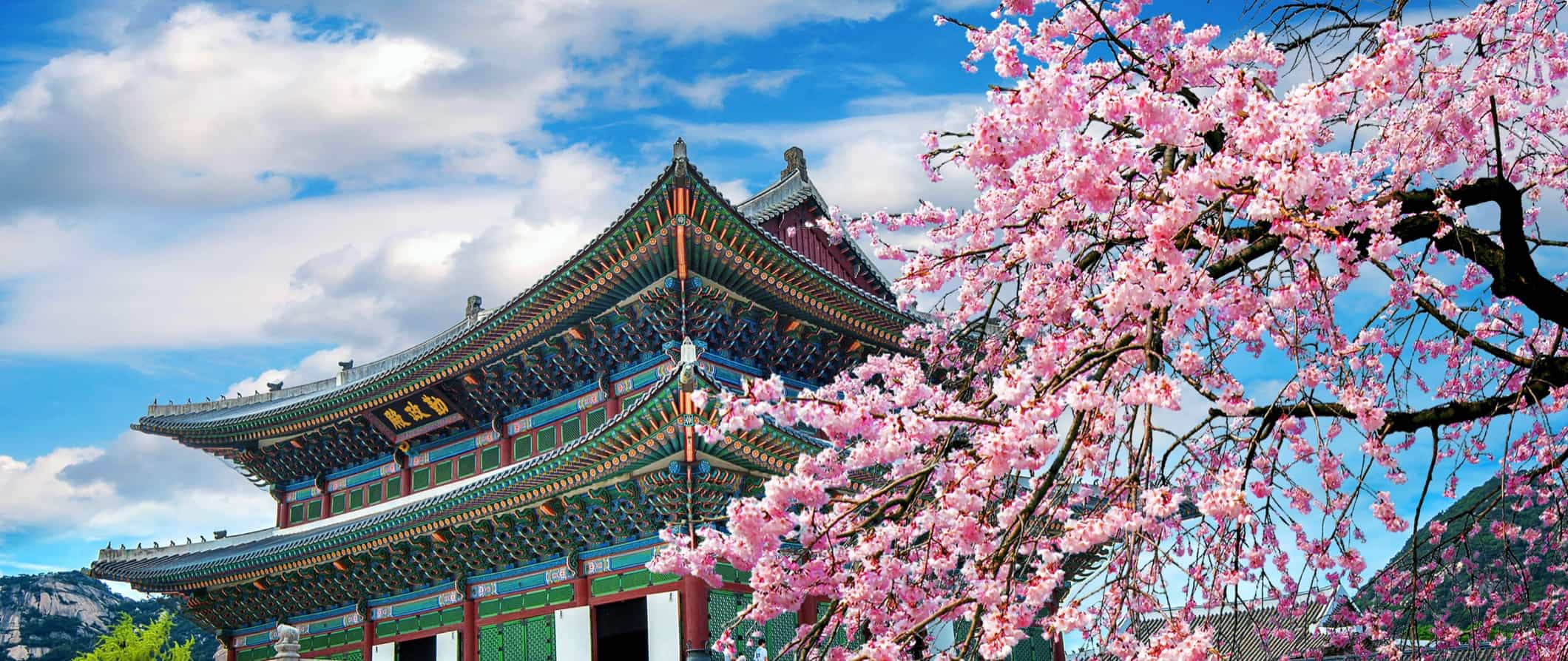
Though South Korea is small (about the size of the US state of Indiana), it punches well above its weight in terms of things to see and do. Boasting a vibrant culture, incredible history, natural beauty, delicious food, and a wild nightlife, it’s home to both major cities and untouched nature, offering something for every traveler.
Seoul, the capital city and fourth-largest metropolitan area in the world (over half the country’s population of 50 million is concentrated here), is a lively hub for food lovers and partying. But while it gets all the attention, there is much more to explore, including 22 national parks, lush Jeju Island, and the infamous Demilitarized Zone (DMZ) bordering North Korea.
Best of all, since South Korea is a manageable size, you can see a good portion of it in a limited amount of time. The transportation here is modern, clean, and efficient, so it’s easy to get around quickly.
The country is also a foodie’s paradise, with cheap street food and delicious dishes like bibimbap, kimchi, and the famed Korean barbecue.
It’s one of my favorite countries in the world and one that I think is super under the radar and often overlooked by travelers. You never see the tourist crowds found in other Asian countries.
This travel guide to South Korea can help you plan your trip, save money, and make the most of your visit.
Table of Contents
- Things to See and Do
- Typical Costs
- Suggested Budget
- Money-Saving Tips
- Where to Stay
- How to Get Around
- How to Stay Safe
- Best Places to Book Your Trip
- Related Blogs on South Korea
Top 5 Things to See and Do in South Korea
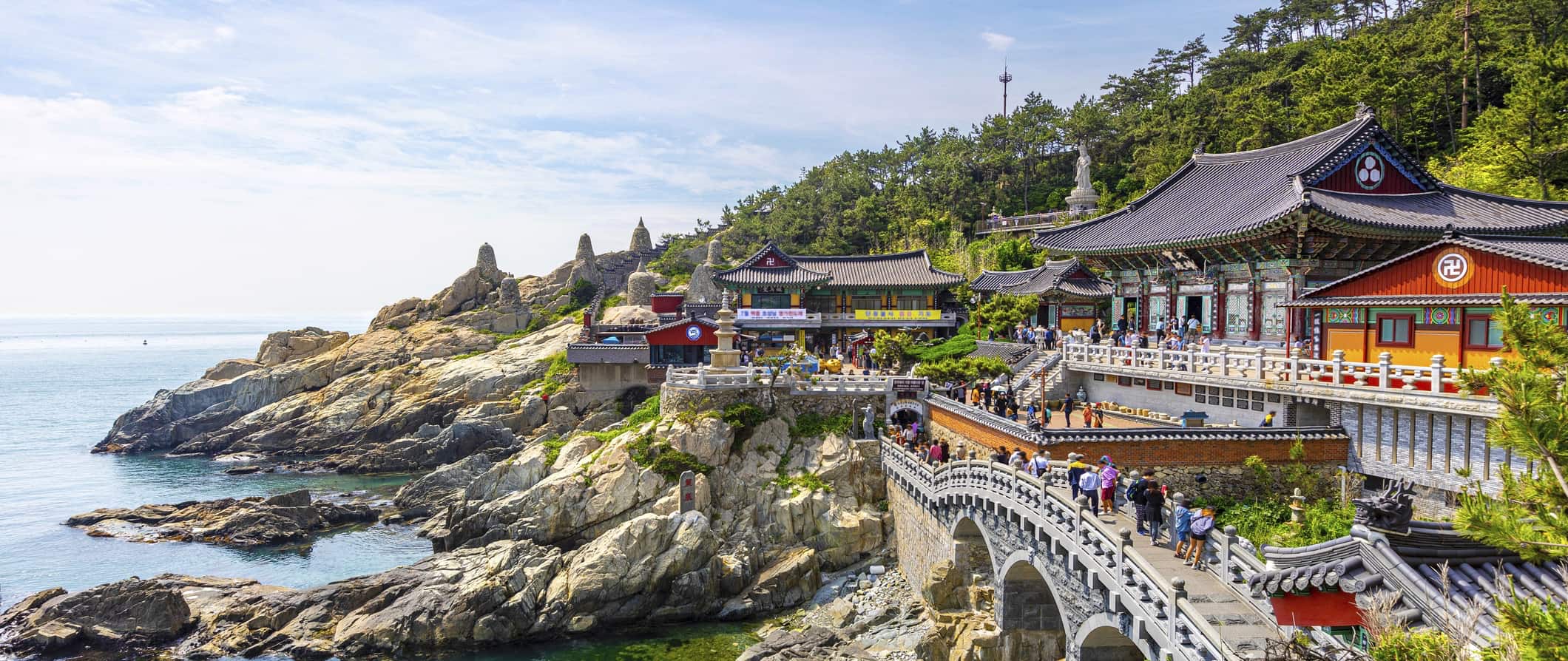
1. Explore Seoul
Korea’s capital has a little bit of everything. It’s a bustling metropolis and global technology hub, with sleek and modern neighborhoods like Gangnam and iconic sights like the Lotte World Tower, the sixth-tallest building in the world. Yet there is a lot of history here too, including many museums, palaces, and temples, among them five UNESCO World Heritage Sites. When you’re done exploring for the day, Seoul has a robust street food scene, countless trendy restaurants, and fast-paced, soju-driven nightlife. You could easily spend weeks here and never get bored.
2. Tour the DMZ
The Demilitarized Zone (DMZ) separates North and South Korea and, despite the name, is the most militarized border in the world. You can only visit the Joint Security Area (JSA), which has military personnel from both sides, on a guided tour, but it’s a unique experience and an important way to learn about this ongoing conflict (the war started in 1950 and has not officially ended). On the tour, you’ll be able to actually stand in North Korea, visit the Third Tunnel of Aggression (which North Korea dug to sneak soldiers across the border), see the Freedom Bridge, and catch glimpses of North Korea from the Unification Observatory. Guided tours of the DMZ start from 80,000 KRW.
3. Visit Jeju Island
This volcanic, semitropical island is a popular domestic vacation spot. It’s accessible via cheap daily flights from Seoul that take just one hour. Known as “the Hawaii of Korea,” it’s a natural paradise, home to the tallest mountain in Korea (Mount Hallasan), lava tubes, beautiful beaches, and countless hiking and walking trails. Other attractions include visiting mythic Jeju Stone Park, wandering the Yeomiji Botanical Gardens, and watching the haenyeo divers — women who dive without any protective equipment to gather underwater treasures like shellfish and seaweed, which they then sell on the beaches. You can visit the Jeju Haenyeo Museum as well to learn more about this cultural practice that dates back centuries.
4. Sing karaoke
Known as noraebang , this is a cultural phenomenon and something worth experiencing at least once while visiting Korea. While the karaoke machine was originally invented in Japan, Koreans have adopted the pastime and made it their own. Here, you rent out a private room with a group of friends (instead of singing in a public bar, as is often the case in Western countries). Pricing is determined by the hour, with rates varying wildly depending on the number of people, time of day, day of the week, and whether snacks and drinks are included. Average group karaoke rates range from 5,000 to 15,000 KRW.
5. Step back in time at a hanok village
Other things to see and do in south korea, 1. visit changdeokgung palace.
One of the Joseon dynasty’s Five Grand Palaces, this 15th-century complex in Seoul was built in harmony with the natural environment at the foot of Bugaksan Mountain. Changdeokgung, or “Palace of Prospering Virtue,” was the main royal residence for 13 kings over the course of three centuries. The complex sprawls over 110 acres, 60% of which is taken up by the beautiful Huwon Secret Garden, home to over a hundred species of trees, flowers, and other plants (some of the trees here are over 300 years old!). The main draw is wandering around the exterior, with its restored buildings and gates, though you can also go inside Injeongjeon Hall, the palace’s throne room. Admission to the complex is 3,000 KRW; the Secret Garden is an additional 5,000 KRW. There are guided tours in English as well.
2. Explore Busan
Korea’s second-largest city is located just two hours from Seoul on the KTX high-speed bullet train. A coastal city, Busan boasts great beaches, such as Haeundae Beach, with its miles of sand, and Gwangalli Beach, known for its sunsets. Gamcheon Culture Village, the “mural village of Korea,” is a hillside neighborhood rich in street art and covered in murals, and nearly all the houses are painted bright colors. It’s a great place to wander around for a few hours, popping into the unique shops, cafés, and restaurants.
3. See the National Museum of Korea
If you visit only one museum in Korea, make it this one. Located in Seoul, it covers all aspects of Korean culture, art, and history, from prehistory to the early modern era. It also contains many national treasures and artifacts that have been designated as having special importance and value in Korean culture and history. Some of the most important ones include the sixth-century inscribed Bukhansan Monument, detailing military expansions; sixth-century gilt-bronze Buddhist statues; and the 10-story Gyeongcheonsa Pagoda, which dates to the 14th century. Don’t miss the exterior gardens, which feature indigenous plants, reflecting pools, and traditional Korean sculptures and lanterns. Admission to the main exhibitions and children’s museum is free.
4. Take a food tour
As a foodie, learning about a culture through its food is one of my favorite things to do while traveling. Korea has an incredible variety of amazing dishes to try, as well as a bustling (and delicious) street food scene. Taking a food tour with an experienced guide is one of the best ways to gain a deeper understanding of Korean cuisine. O’ngo Food offers a variety of tours in Seoul, Busan, Jeonju, and Jeju, with prices starting from 70,000 KRW per person.
5. Visit Gyeongbokgung Palace
Originally built in the 14th century by the kings of the Joseon dynasty, this palace in Seoul served as the seat of the government for two hundred years until it was destroyed by a fire and abandoned for centuries. Since the 19th century (and still today), it has been undergoing renovations to restore the complex to its former glory. It is considered the most stunning of all five royal palaces in Seoul, featuring grand gates, open courtyards, and terracotta-topped buildings set against the backdrop of Mount Bugak. In addition to wandering through the complex, you can also go into the many administrative halls and residential chambers set up to resemble the palace’s heyday. You can watch the changing-of-the-guard ceremony as well, every day except Monday. The National Palace Museum and the National Folk Museum are also located in the complex. Admission is 3,000 KRW.
6. See the cherry blossoms
While cherry blossoms are often associated with Japan, festivities surrounding the blooms are incredibly popular in Korea as well. Here, the season runs from late March to late April, with many festivals throughout the country. Just be prepared for crowds at the more popular ones, like the Yeouido Cherry Blossom Festival in Seoul.
7. Try taekwondo
Korean’s native martial art, taekwondo, is characterized by high kicks and punches and, like all such disciplines, emphasizes mental training. An Olympic event since 2000, taekwondo has only grown in popularity in recent years and is a point of pride in Korean culture. Kang’s Global Taekwondo in Seoul offers classes to adults and foreigners that cost around 43,000 KRW for one hour.
8. Learn to cook classic Korean foods
If you’d like to take your knowledge of Korean food one step further, take a cooking class, where you’ll learn to prepare classics like bibimbap, kimchi, bulgogi, and Korean pancakes. Hello K Cooking in Seoul offers a class where you’ll learn how to cook three main dishes and one stew — recipes and skills that you can bring home with you. Classes are 107,000 KRW.
9. Go hiking
Korea is an incredibly mountainous country, so hiking is a favorite pastime for locals. Be sure to immerse yourself in nature while visiting this lush land. There are even hiking spots near the bigger cities if you don’t have enough time or don’t want to venture too far afield. Bukhansan National Park, just outside Seoul, is a popular place to go hiking, offering panoramic views over the capital (expect crowds due to its proximity to the city, though). Yet with 22 national parks spread across the country, there are plenty of opportunities to escape the crowds (including lots of guided hikes if you don’t want to organize one yourself). For a multiday hike, the Jirisan Ridge Trek in Jirisan National Park is one of the most famous — a four-day walk from mountain shelter to mountain shelter.
10. Wander around Seoul Olympic Park
In 1988, Seoul hosted the Summer Olympics, which was only the second time the summer games had been held in Asia (the first was in Tokyo in 1964). Today, you can visit the massive park where the games were staged, and while Olympic Park does have many sports facilities, there’s much more to explore here as well. The park is divided into four sections, focusing on the arts, history, nature, and sports. In the arts section, you’ll find the SOMA Museum of Art and a park with over 200 sculptures, while in the history section, you can see the third-century defensive Mongchontoseong Earthen Fortifications, excavated dugout huts and storage pits left in the state in which they were uncovered. You can easily spend an entire afternoon here. Admission to the park is free.
11. Discover Jirisan National Park
Located in the southern part of the country (Namwon is the nearest city), this park is named after Jirisan (Mt. Jiri for short), the tallest mountain on mainland Korea. As it’s South Korea’s first national park (as well as its largest), hiking trails and cultural sites abound. You can visit seven major Buddhist temples and see several of Korea’s national treasures of ancient carved stonework from the seventh to the tenth centuries. One of the most important sites here is Samseonggung, or Three Sages Palace, a mountainside shrine dedicated to the legendary founders of Korea. Admission to the park is 1,600 KRW.
South Korea Travel Costs
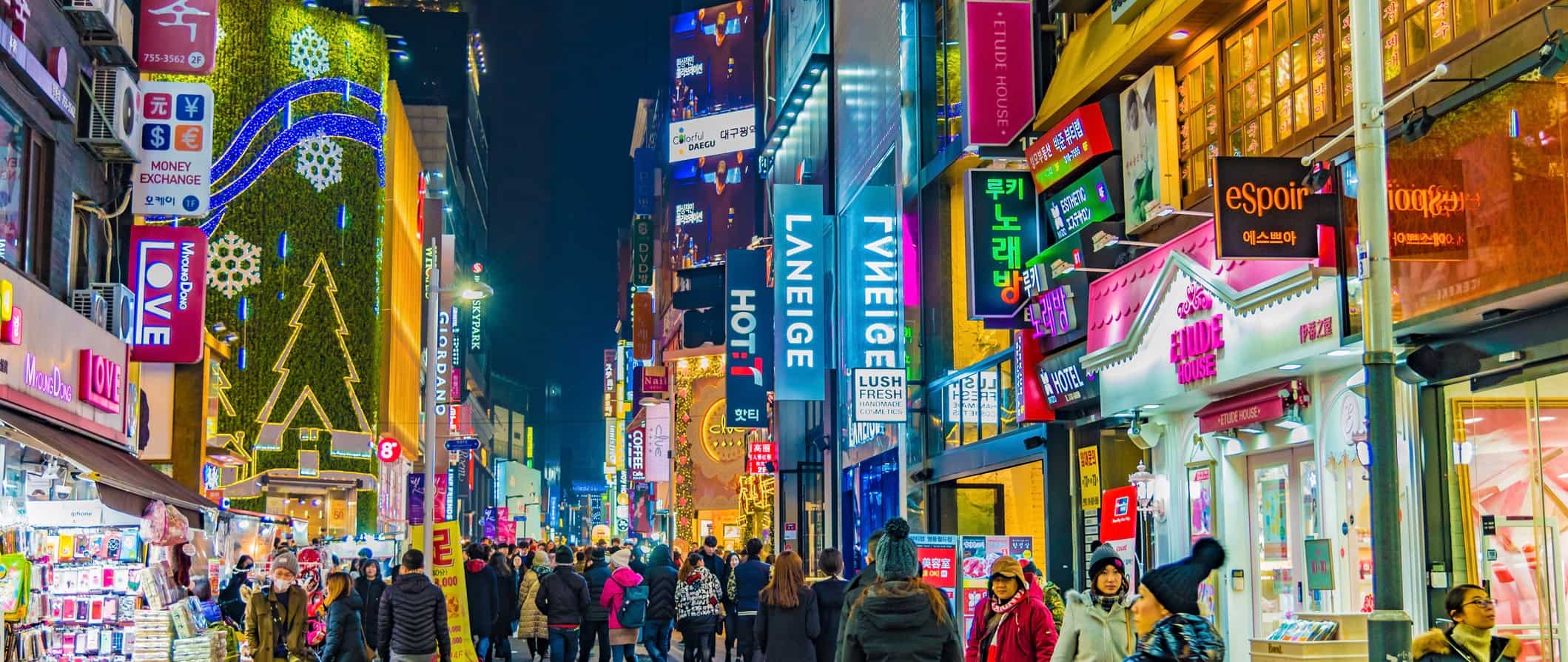
Cheap hotel rooms start at 28,000 KRW for a room that sleeps one, while a double room generally costs at least 40,000 KRW. Expect basic amenities like Wi-Fi, a TV, air conditioning, and an electric teapot. Breakfast is usually not included at budget hotels.
Airbnb is available around the country, with private rooms starting at 25,000-30,000 KRW. For an entire home or apartment, expect to pay at least 50,000-70,000 KRW per night.
While wild camping is illegal in Korea, there are plenty of campgrounds should you want to pitch a tent. Expect to pay 7,000-20,000 KRW for a plot with access to bathroom and shower facilities, and usually even Wi-Fi.
Food – Korean cuisine has developed its own traditions and flavors over the centuries, with a unique emphasis on using uncooked, fermented, and pickled vegetables. Traditional Korean meals are often composed of a variety of side dishes, eaten with short-grain rice. A meal isn’t considered complete unless there’s kimchi on the table.
Common dishes include bulgogi (marinated, grilled beef), samgye-tang (chicken and ginseng soup), bibimbap (a mixed rice bowl), chap chae (a glass noodle dish), and many other noodle and rice dishes. Popular street foods include hotteok (a sweet, filled pancake), tteokbokki (spicy cylindrical rice cakes), and bungeo-ppang (a fish-shaped pastry filled with red bean paste).
Dining out in South Korea is relatively inexpensive. A meal at a casual restaurant serving traditional Korean food is around 9,000-15,000 KRW, while a three-course meal at a mid-range restaurant is around 25,000-30,000 KRW. Expect higher prices in larger cities.
Western food is more expensive. Expect to pay at least 20,000 KRW for a pasta dish at an Italian restaurant.
In terms of fast food, a combo meal (think McDonald’s) is around 7,000 KRW, while a burger is around 4,500 KRW. A typical Korean street food dish is 1,500-3,000 KRW.
A pint of beer is 4,000-5,000 KRW, a glass of wine is 6,000 KRW and up, and a cocktail is 7,000 KRW and up. A latte or cappuccino is 5,000 KRW.
If you cook your own food, expect to pay 50,000-70,000 KRW per week for basic staples like rice, pasta, vegetables, and some meat. Shopping at local markets is the best way to get great fresh produce for cheap.
Backpacking South Korea: Suggested Budgets
On a backpacking budget of 75,000 KRW per day, you can stay in a hostel dorm, cook all your meals, use public transportation and intercity buses to get around, skip the alcohol, and do mostly free activities like walking tours and hiking.
On a mid-range budget of 135,000 KRW per day, you can stay in a private Airbnb or cheap hotel, eat out for most meals at casual restaurants, enjoy a few drinks, take the occasional taxi as well as trains between cities, and do more paid activities like museum visits and food tours.
On a “luxury” budget of 255,000 KRW or more per day, you can stay in a nicer hotel or entire Airbnb apartment, eat out pretty much anywhere you want, drink at the bar, get a high-speed rail pass, and do as many guided tours and activities as you want. This is just the ground floor for luxury, though. The sky is the limit!
You can use the chart below to get an idea of how much you need to budget daily. Keep in mind these are daily averages — some days you’ll spend more, some days less (you might spend less every day). We just want to give you a general idea of how to make your budget. Prices are in KRW.
South Korea Travel Guide: Money-Saving Tips
I find South Korea to be one of the best value countries out there. It’s a really affordable place to visit. Accommodation can add up but food and drinks are generally cheap. Here are some ways to save money when you travel around South Korea:
- Visit the free attractions – With countless museums, shrines, temples, historic neighborhoods, and parks, Korea is filled with opportunities to become immersed in its culture. Many of the nation’s museums and cultural attractions are free, so don’t pass them up!
- Purchase a KORAIL Pass – If you want to travel by train, getting a rail pass is the most economical way to do so. You’ll get unlimited train travel for the time period you choose (2-5-day increments). Prices start at 121,000 KRW.
- Get a transit pass – Most major cities in Korea offer a day pass for public transit, which means great savings if you plan to hop around using buses and subways. Seoul’s day pass costs 15,000 KRW, though the longer you stay, the more you’ll save (a seven-day pass is 64,500 KRW).
- Buy a city pass – If you plan on visiting a lot of attractions, buy a city pass . Seoul and Busan both offer ones that include admission to popular sights, a transit pass, and discounts to restaurants and other attractions. A one-day pass starts at 33,000 KRW.
- Eat from the convenience stores – Convenience stores in Korea offer not only snacks and drinks but prepared boxed meals and cheap alcohol. If you’re on a tight budget, shop in those.
- Take the bus – While the trains are fun, the cheapest way to get around Korea is by bus. They take longer but are much cheaper, so if you have the time, opt for long-distance buses. Just show up at the bus station to reserve your tickets in advance, as most websites and apps are in Korean.
- Stay with a local – Couchsurfing lets you stay with a local for free, cutting your accommodation costs drastically. You’ll get to spend time with someone who can share their tips and advice in exchange for your own travel stories and culture. You can also use the app to meet people for activities (coffee, museum visits, etc.) if you don’t feel comfortable staying with a stranger.
- Drink like the locals – Soju, the national alcohol of Korea, is incredibly cheap, as is domestic beer. Just be careful to not let it sneak up on you — both monetarily and physically. Korea’s drinking culture is infamous!
- Stay in capsule hotels – If you don’t want to Couchsurf or stay in hostels but still want to save money, capsule or pod hotels are great options. These offer just what you need to sleep (a small, basic pod) yet can be surprisingly comfy and much more affordable than a traditional hotel. Prices start as low as 45,000 KRW per night.
- Bring a water bottle – The tap water here is safe to drink, so bring a reusable water bottle to save money and reduce your plastic use. LifeStraw is my go-to brand, as its bottles have built-in filters to ensure that your water is always clean and safe.
Where to Stay in South Korea
South Korea has plenty of budget-friendly hostels and guesthouses. Here are some of my recommended places to stay when you visit:
- Time Travelers Relax Guesthouse (Seoul)
- Zzzip Guesthouse (Seoul)
- Time Travelers party Hostel (Seoul)
- INSIDE Busan (Busan)
- Jeju Hiking Inn (Jeju)
- Backpacker’s Home (Jeju)
How to Get Around South Korea
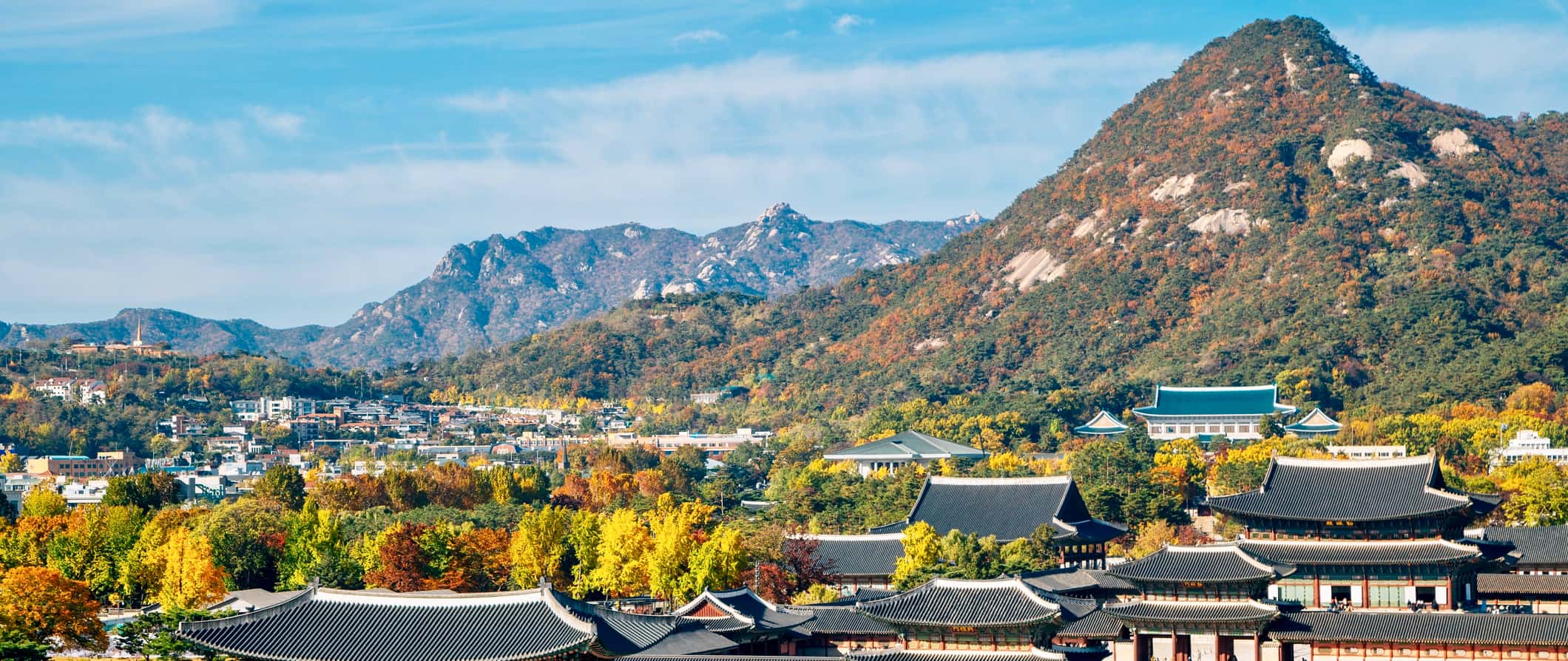
Bus – Taking a long-distance bus is the cheapest and most popular way to get around the country. There are two types: express (which makes few to no stops) and intercity (which travels between smaller destinations and makes more stops).
Your best bet for reserving tickets in advance is to go directly to the bus terminal, as most bus websites and booking apps are in Korean and only accept Korean credit or debit cards.
Pricing depends on what class ticket you choose: standard, luxury, or premium. The four-hour bus ride from Seoul to Busan costs around 36,000 KRW for a standard ticket, Incheon to Busan takes just over four hours and costs 38,000 KRW, and Seoul to Daegu is 29,000 KRW and takes just under four hours.
Train – South Korea has a robust train system that can take you all over the country. Korean Train Express (KTX) is the country’s bullet train, regularly running at speeds up to 305 kilometers (190 miles) per hour. However, these only go between major cities, have limited schedules, and are more expensive, so KTX may not always be the most convenient choice.
KORAIL (the national railway service) operates slower-speed, intercity trains that offer a wider range of schedules and destination choices. You can also get the unlimited KORAIL Pass, which is offered exclusively to international tourists. A two-day adult pass is 121,000 KRW; a five-day adult pass is 210,000 KRW.
As a comparison of the two train types: the journey from Seoul to Busan on a KRX train costs around 90,000 KRW and takes 2.5 hours, while on a regular intercity train, it takes 5.5 hours and costs 47,500 KRW.
The further out you book, the cheaper KTX train prices get, while intercity prices stay about the same. You can book up to a year in advance.
Flying – South Korea is so small that flying around the country doesn’t really make sense. Trains can get you anywhere pretty quickly. However, if you’re very pressed for time and have cash to burn, there are a few budget airlines offering domestic flights between major cities. Most are around one hour long.
The flight from Seoul to Busan is around 30,500 KRW, Seoul to Jeju is 55,000 KRW, and Busan to Jeju is 22,000 KRW. However, you can find flights even cheaper when you book further in advance.
Low-cost airlines in South Korea include the following:
Car rental – Renting a car isn’t incredibly cheap in South Korea. However, it is one of the best ways to explore all the natural wonders that the country has to offer, many of which are inaccessible by public transportation. Expect to pay around 50,000-55,000 KRW per day on a multiday rental. Drivers need to be at least 21 years old.
When to Go to South Korea
Generally, the best times to visit South Korea are March-May and September-November. During these periods, the weather is mild, with temperatures of 10-24°C (50-75°F); prices for accommodation and transportation are lower; and there are fewer crowds.
In the spring, the cherry blossoms are in bloom all over the country, while the fall brings the beautiful colors of the changing leaves. Also, if you plan on doing a lot of hiking, the fall is the best time to visit.
The summer starts with monsoon season, from June through mid-July, and the rest of the summer is hot and humid in the cities (though it cools down in the mountains and along the coasts). Prices for accommodation are also very high during this time.
Winters in South Korea get very cold, with temperatures dipping as low as -6°C (21°F), so unless you plan on skiing, visiting from December through February might not be the best option (though the temples and landscapes look beautiful covered in snow).
How to Stay Safe in South Korea
South Korea is an incredibly safe place to backpack and travel around. Petty crime is rare here, though it never hurts to be cautious on public transportation and around popular tourist landmarks. Always keep your wallet and valuables secure and out of reach, just in case. Violent crime is even more rare.
Solo female travelers should feel safe here. However, the standard safety precautions apply as always. For specific tips, consult one of the many solo female travel blogs on the web.
While scams are super rare in South Korea, to avoid getting ripped off, you can check out this list of common travel scams to avoid .
When hiking, always bring water and sunscreen. Be sure to check the weather before you depart and dress accordingly.
Earthquakes occur regularly in the region, so it’s best to be prepared and download the Emergency Ready app, which the Korean government developed to provide information in English to foreign residents and tourists. It has all kinds of advice and tips for natural disasters, shows you where nearby emergency shelters are, and sends out warnings and notifications should a disaster occur.
If you do experience an emergency, dial 112 for assistance.
Always trust your gut instinct. Make copies of your personal documents, including your passport and ID, and forward your itinerary along to loved ones so they’ll know where you are.
South Korea Travel Guide: The Best Booking Resources
These are my favorite companies to use when I travel. They consistently have the best deals, offer world-class customer service and great value, and overall, are better than their competitors. They are the companies I use the most and are always the starting point in my search for travel deals.
- Skyscanner – Skyscanner is my favorite flight search engine. They search small websites and budget airlines that larger search sites tend to miss. They are hands down the number one place to start.
- Hostelworld – This is the best hostel accommodation site out there with the largest inventory, best search interface, and widest availability.
- Booking.com – The best all around booking site that constantly provides the cheapest and lowest rates. They have the widest selection of budget accommodation. In all my tests, they’ve always had the cheapest rates out of all the booking websites.
- Get Your Guide – Get Your Guide is a huge online marketplace for tours and excursions. They have tons of tour options available in cities all around the world, including everything from cooking classes, walking tours, street art lessons, and more!
- SafetyWing – Safety Wing offers convenient and affordable plans tailored to digital nomads and long-term travelers. They have cheap monthly plans, great customer service, and an easy-to-use claims process that makes it perfect for those on the road.
- LifeStraw – My go-to company for reusable water bottles with built-in filters so you can ensure your drinking water is always clean and safe.
- Unbound Merino – They make lightweight, durable, easy-to-clean travel clothing.
- Top Travel Credit Cards – Points are the best way to cut down travel expenses. Here’s my favorite point earning credit cards so you can get free travel!
South Korea Travel Guide: Related Articles
Want more info? Check out all the articles I’ve written on Asia travel and continue planning your trip:
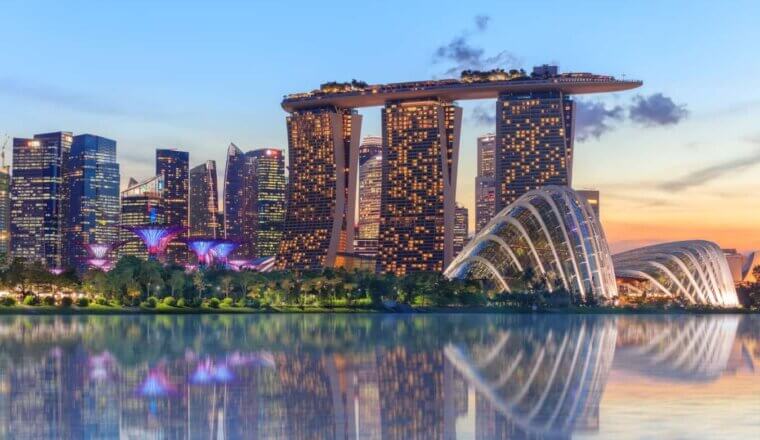
The 5 Best Hotels in Singapore
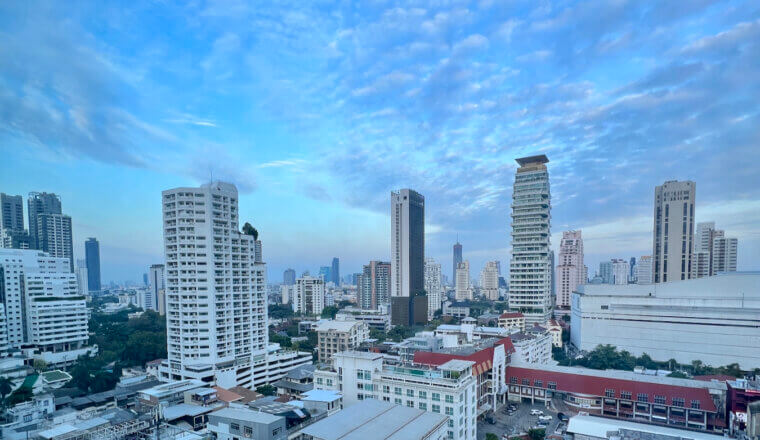
The 7 Best Hotels in Bangkok

The 4 Best Hostels in Singapore
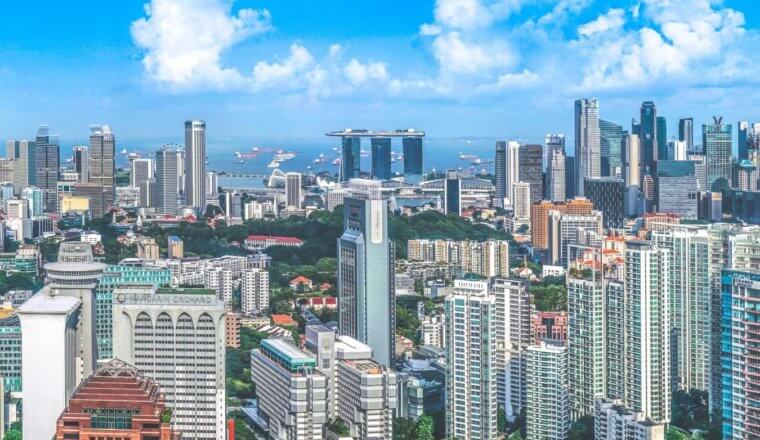
Where to Stay in Singapore: The Best Neighborhoods for Your Visit
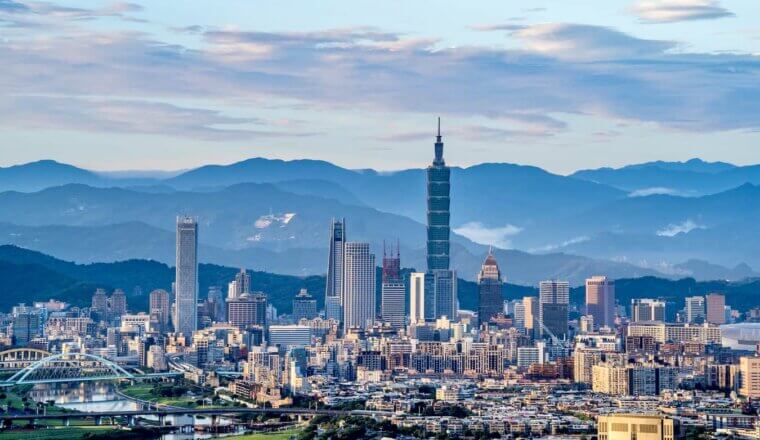
The 13 Best Things to See and Do in Taipei

The 23 Best Things to Do in Hong Kong
Get my best stuff sent straight to you, pin it on pinterest.
- Where To Stay
- Transportation
- Booking Resources
- Related Blogs
- Work with me
- Privacy policy

- Years in review
- United Kingdom
- Bosnia & Herzegovina
- North Macedonia
- Philippines
- South Korea
- South Africa
- Africa Overlanding
- Central America
- New Zealand
- Solo Travel
- Budget travel
- Travel tips
- Travel itineraries
- Hidden gems
- Bucket list
- Travel resources
- Digital nomadism
- Blogging tips
- Start a travel blog
Budget travel , South Korea
Is korea expensive south korea trip budget.
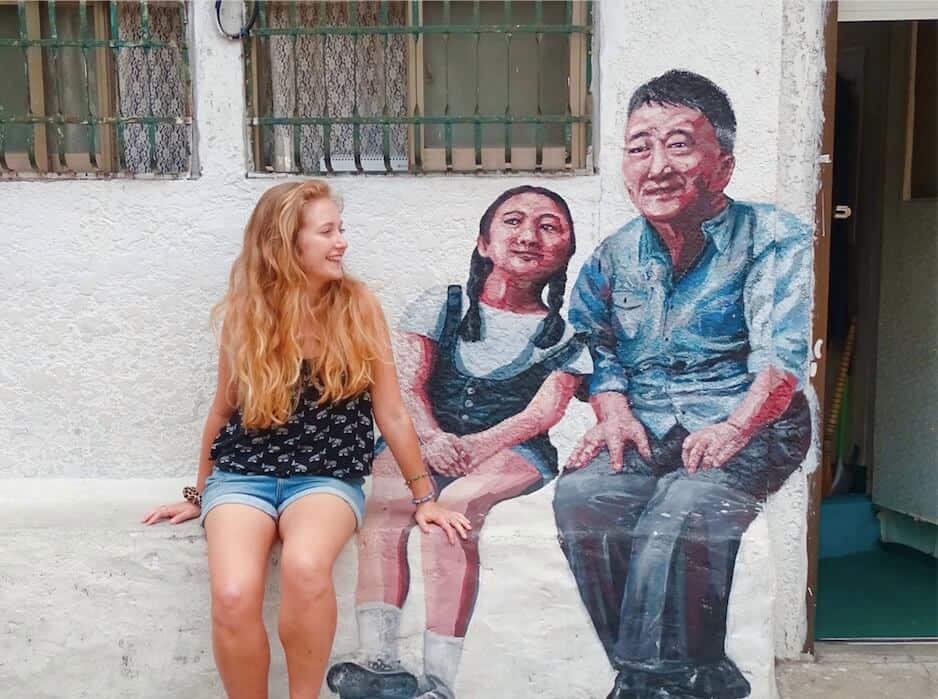
Table of Contents
This post may contain affiliate links to things like tours, hotels, Amazon associates and products. These help me earn a small commission at no additional charge to you.
Before my trip, I was wondering is Korea expensive? and I have to say the answer is yes… but it depends where you’re comparing it to. In this guide, I’ll share my Korea trip budget as well as my South Korea budget tips and tricks. Before my 2 weeks in Korea , I’d heard it was an expensive place to travel. I was expecting high prices and for that reason, it wasn’t sas bad as I’d anticipated. Maybe if I’d expected Southeast Asia costs, I’d have been horrified. Hopefully, by the end of this guide, you should have a good idea of what to budget for a Korea trip.
KOREA ESSENTIALS Accommodation: Booking.com / Hostelworld Activities: Viator / GetYourGuide Getting there: air ( Skyscanner ) Getting around: Train ( Trip.com ) / bus Pre-book private airport to hotel transfer Travel insurance: True Traveller (European travellers) / Hey Mundo (other nationalities) / Safety Wing (digital nomads)
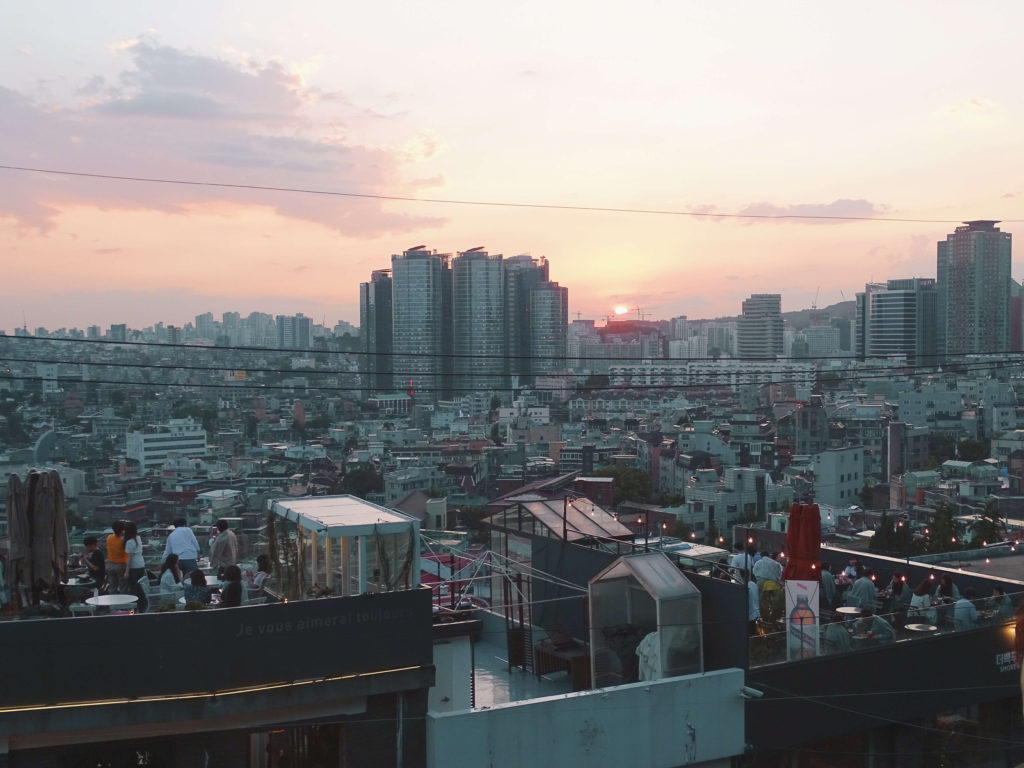
Is South Korea expensive?
Without doubt, South Korea is expensive to visit when accommodation is concerned. Food and transport aren’t dirt cheap but also aren’t bank-breaking. Your South Korea trip budget will be increased if you eat in upmarket areas of Seoul like Hongdae. With a little effort and my South Korea budget tips, you can find ways to travel affordably.
Read next: 30 South Korea travel tips
Korea budget travel compared to other Asian countries
If you’re used to travelling in Southeast Asia, the cost of Korea travel will hit hard. Calculate your Korea trip budget by doubling what you’d take to Thailand, Vietnam or Indonesia. It’s well over double the cost of travel in India ! Travelling in Korea is also double the cost of travelling in Taiwan , despite the two islands being so close together. The cost of travelling in Japan is similar to South Korea although, having been to both, I consider Japan slightly more expensive. If you’ve been to Japan before, consider a similar Korea travel budget.
Korea travel budget overview
So let’s get down to the nitty-gritty, how much did I spend during 3 weeks in South Korea?
My South Korea trip budget for 3 weeks was 1,300,000 KRW (£860 / $1,100). Korea budget travel is possible at 60,000 KRW (£41 / $51) per day.
This figure is based on a budget travel style of staying in dorms, eating cheaply where possible, and doing activities independently rather taking day tours. You’ll need to add to this figure if you plan to eat in restaurants each night and stay in hotels.
Note – this total doesn’t include return flights to Jeju Island from Seoul, a day tour to the DMZ and two day tours on Jeju Island which were hosted thanks to this blog.
Things that make Korea affordable
1. There are hostels everywhere. If you want to keep your Korea budget down, you can usually find dorms even in smaller cities. 2. There’s lots of street food in Seoul . Despite the high prices of the city, eating cheaply is something you don’t have to worry about. 3. Efficient public transport. Seoul has one of the most efficient subways in Asia with over 23 lines. There are also underground train networks in Incheon, Busan, Daegu, Gwangju and Daejeon. You never need to pay for taxis.
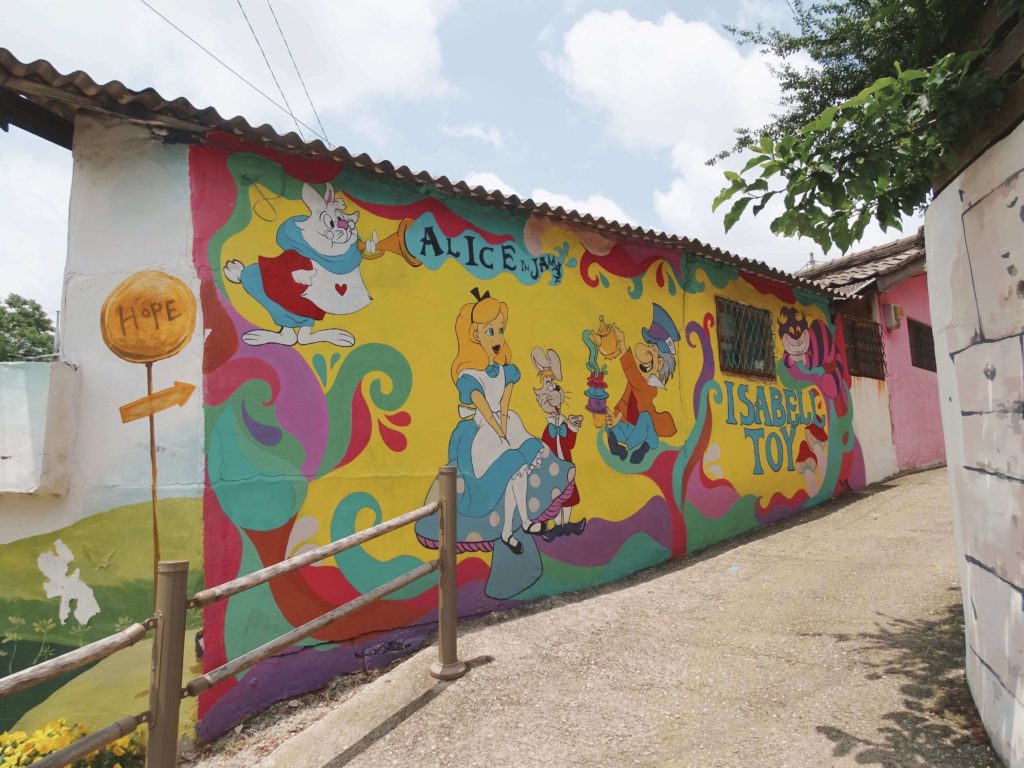
Things that make Korea expensive
1. In cities outside of Seoul, there wasn’t as much street food as I’d expected. Markets were more like wet markets selling fresh produce rather than ready-to-eat street food. 2. Some meals are more expensive for solo travellers. At Korean barbecue restaurants, they’ll only seat tables of two or more, although luckily you can find places that charge a solo surcharge. For that reason, dining out can be expensive unless you’re travelling with another person. Learn more about travelling solo in South Korea with my blog post. 3. Visiting the DMZ is impossible without paying for a DMZ tour . On Jeju Island, the public transport is limited so hiring a car or taking day tours will increase your Korea budget.

Next, let’s break down your Korea budget by category …
Cost of a South Korea visa
This varies depending on what passport you’re travelling with. UK citizens can enter South Korea for 90 days visa-free.
South Korea budget travel – accommodation
So we can fully answer the question, is Korea expensive?, let’s start with accommodation as this will be your greatest expense. The average price of a hostel bed per night: 22,000 KRW (£15 / $19). The average price of a private room in a hostel per night: 32,000 KRW (£22 / $30) Hotels in South Korea start at 45,000 KRW per night (£30 / $40) a night and like anywhere, go up into the hundreds.
Best hostels in South Korea
If you’re taking a South Korea budget trip, you’ll probably want to stay in hostels. These were some of my favourites… Bunk Guesthouse, Hongdae, Seoul – This is one of my favourite hostels I’ve ever stayed in. The friendly owner, Brian, learns every guest’s name and offers helpful recommendations and group Korean bbq and soju nights. There are small dorm rooms with private kitchens and lounge rooms, right in the middle of the coolest neighbourhood in Korea. Check availability for 22,000 KRW (£15 / $19) per night . Blue Backpackers, Seomyeon, Busan – I enjoyed my stay in this friendly, family-run hostel which is located down a peaceful side street in the coolest area of Busan which has lots of shops, street food, markets and restaurants. Check availability from 17,000 KRW (£12 / $16) . Rainbow Inn, Jeju Island – this hostel in Jeju City was a good base for exploring the island. It was pretty swish with a comfy lounge area, private bunks with their own curtains and chargers and a delicious buffet breakfast. Check availability . Santa Guesthouse – in Korea’s ancient capital, Gyeongju, this guesthouse is pretty basic but definitely the best place to meet other backpackers. The friendly owner offers lots of local tips. Check availability for 15,000 KRW (£10 / $13) .
I use Hostelworld to browse hostels and find the best-priced accommodation.
South Korea budget travel – transport
You can get around fairly cheaply in South Korea providing you don’t take the fast train. Here’s a breakdown of transport prices in Korea:
Korea budgets for getting between cities
Slow train: I was pleased with the low cost of transport as my first couple of journeys cost just 5,000 won each (£3.30 / $4). This included a ride from Gyeongju to Daegu on the slow train which took just under 2 hours.
Fast train: Increase your Korea trip budget to take the fast train. I paid 30,000 won (£20 / $30) from Jeonju to Seoul on the fast train. I could have travelled cheaper on a slow train or bus but wanted to meet friends for lunch so had an ah, screw it moment. It took less than 2 hours to travel 200km and included snacks.
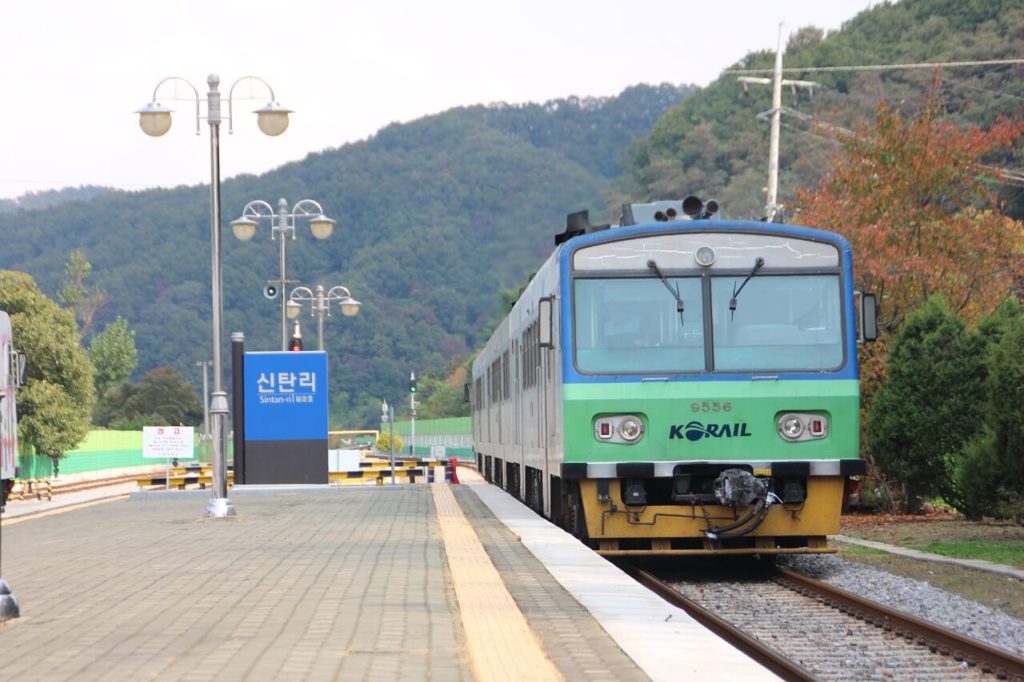
Bus: There’s also an efficient bus network running around South Korea. I took two: one from Busan to Gyeongju (5,000 KRW) and one from Daegu to Jeonju (10,000 KRW). These are similar in price to the slow train so I weighed up the prices for individual journeys and took whichever was cheaper.
Booking tip – you can usually just show up at the station and get a ticket. But to secure a seat on trains , use Trip.com , partner of Korail (the official railway network of Korea). The website accepts international payment options, unlike Korean rail websites. Click the three stripes in the top right corner then the flag to change it to English.
To summarise, shorter journeys of a few hours are affordable in South Korea whereas longer journeys on fast trains are more expensive. If you have enough time when it comes to these longer journeys, taking a bus will cost half the price of a fast train.
Korea budget for travelling around cities
Getting around Korean cities is affordable and straightforward although it’s worth noting Google Maps doesn’t work properly anywhere in South Korea. It’s best to use a Korean app like Naver instead. Over all, in terms of public transport and affordability, South Korea is great for budget travellers. The only places without efficient public transport networks are those small enough to explore on foot. The main ways to get around include:
Metropolitan Subway: In cities like Seoul and Busan, you can travel around affordably via underground train. Tickets operate on a tier system and cost 1,250 KRW for journeys of 10km or less (teenagers 720 / children 450). Faires go up 100 won for every addition 5 km travelled. Purchase a ticket by selecting your destination on touch screen machines.
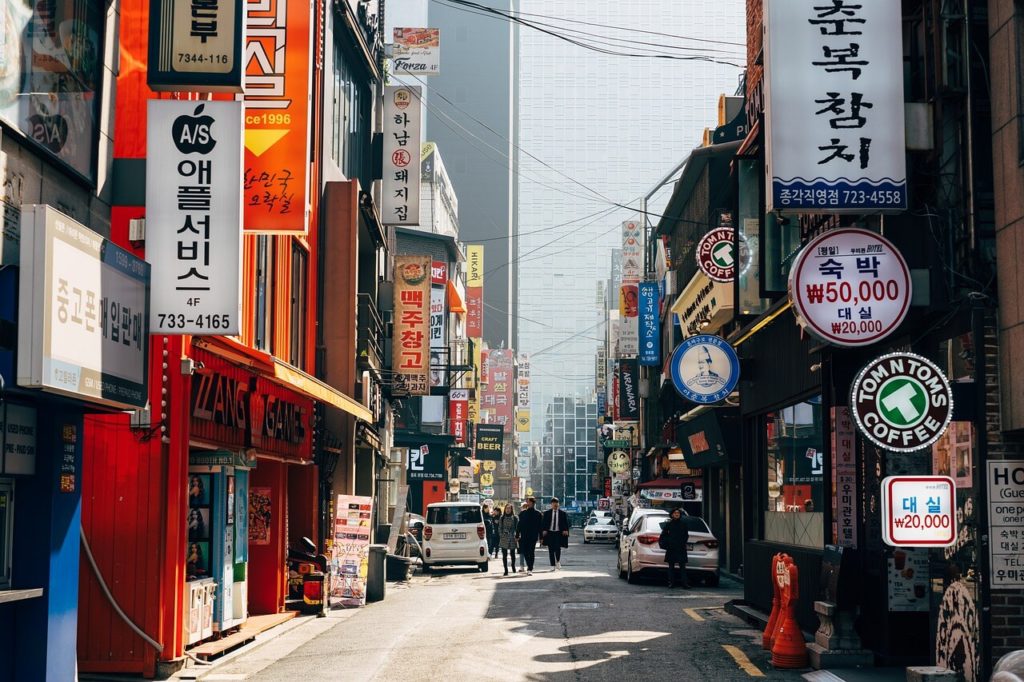
Bus: In Seoul, buses cost either 1,000 or 1,300 won depending on the colour of the bus. When you board, there will be a metal bucket next to the driver specifying the amount. Pay in coins or notes but don’t expect any change. Unlike the subway with its clear map and colour-coded lines, buses can feel confusing but I’d encourage you to hop on them. They’re efficient and a great way to see the city as you move about. The schedules are listed on Google Maps.
South Korea budget travel tip – pick up a Korea Tour Card, cashbee or Tmoney card. These save you 100 won per journey. You pay a 4,000 won deposit (of which 3,500 is refundable) and top up via subway station machines. Queuing to buy individual tickets is time-consuming so it’s really convenient to tap in and out quickly as you travel. You can use them on buses, too.
Korea travel budget – flights
Major airports in Seoul and Busan are well-connected globally. From London – flights begin at £500 return. These take 11 hours. From Australia – flights begin at $100 (AUD). They take 15 hours. From the US – return flights begin at $600. They take 15 hours. If you’re visiting Korea from elsewhere in Asia, you can get affordable tickets with various Asian airlines. I flew from Taipei (Taiwan) to Busan for $100 and departed Seoul for Hanoi (Vietnam) for $150. Use Skyscanner to browse deals on flights.
Cost of getting to & from the airport
I’ve been including this section in my blogs since my Cuba budget was blown by spending $50 getting to and from the airport in Havana! In comparison, getting to and from the airport won’t blow your Korea travel budget. Gimhae Airport to Busan : This costs 2,800-3,300 KRW (depending where you’re staying) on Line 2 Metro, or 6,000 KRW on a bus. Incheon Airport to Seoul : It costs 8,000 KRW to get from Incheon to Seoul on the Airport Railroad Express (AREX) which runs until 9.45pm or 9,000 KWR on the bus. A taxi costs around 45,000 KRW so avoid this if travelling Korea on a budget.
South Korea travel budget – food & drink
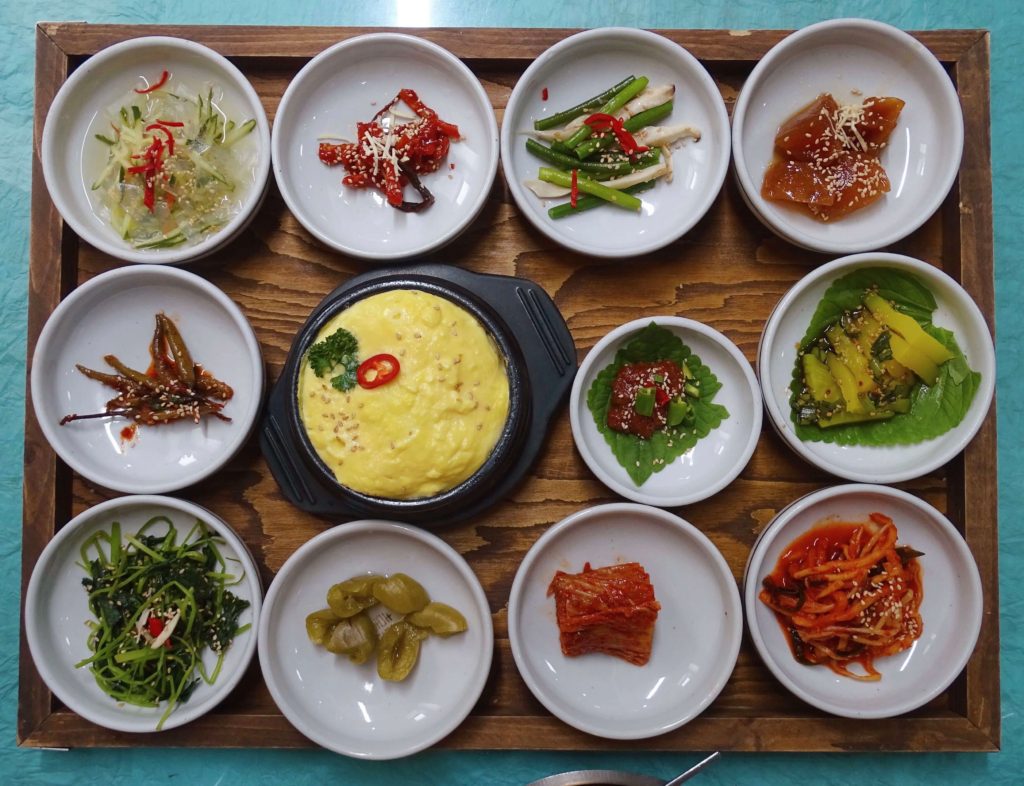
My favourite topic – Korean food ! The cost of this varies a lot in South Korea. I found restaurants to be much more expensive in Seoul which isn’t surprising given that capital cities are often more expensive. Street food prices: You can eat street food for as little as 2,000 KRW (£1 / $1.50) which is ideal if you want to keep your Korea budget low. I can’t promise you’ll have the most nutritious diet but it’ll still be tasty. Cheap street food dishes to look out for include tteokbokki (sticky rice cubes in a hot chilli sauce), gimbap (sticky rice rolled in seaweed with fillings like ham and kimchi), tempura and Korean pancakes made with leek, kimchi or seafood. Restaurant prices: In modest local restaurants you can eat sit-down dinners like bibimbap for as little as 5,000 KRW. This dish usually includes a few veggies so it was my go-to when I wanted to eat cheap while still getting some nutrients. If you want a wider variety of dishes at better quality restaurants, dishes go up to 20,000 KRW. For another affordable option, seek out Japanese restaurants where you order at the screen then grab a table until the chefs call out your number. Not only is this an informal and affordable way to dine with dishes for 5,000 KRW, but Japanese food is delicious and doesn’t carry the same guilt as eating pizza in Asia.
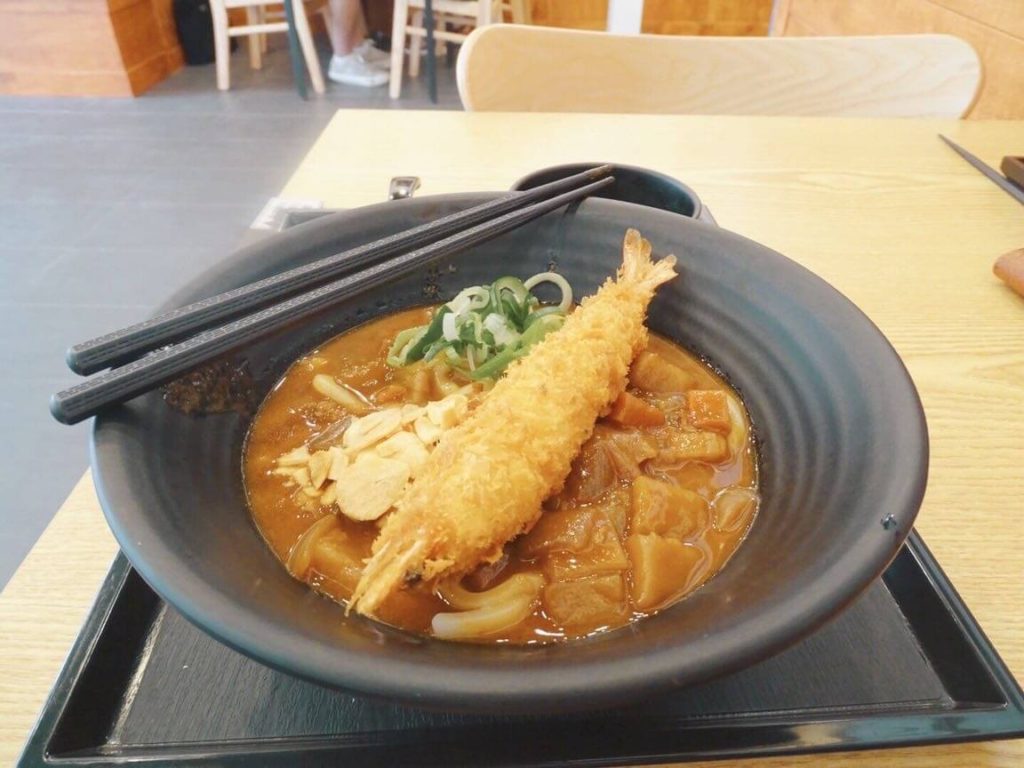
Stylish restaurants in Seoul: I can’t tell you anything about fine dining or Michelin star restaurants but I can tell you about quirky cafes and modern eateries. I was surprised by the cost of these. Dishes popular with young people like fried chicken is served with beer at Chimeak restaurants for as much as 20,000 KRW. If you’re travelling Korea on a budget, I would suggest escaping hip neighbourhoods like Hongdae unless you’re eating street food!
Tipping in South Korea
Something that will reduce your South Korea dining budget is the fact that tipping isn’t customary. It’s just not part of the culture in the same way it is in the US or Europe. Even if it feels rude by your standards, don’t sweat it – no one in Korea will think you’re being rude.
South Korea trip budget – SIMs and data
SIM cards nearly blew my South Korea travel budget! I assumed they’d be affordable like elsewhere in Asia but on my first day, locals told me the only place I could get one was the airport… where I’d just been. Ahh. This is because SIMs aren’t really available for foreigners unless they have a residency card. I ended up not getting one as I couldn’t afford it. If you really want a SIM, you’re best off getting a tourist one at a major airport.
Click here get a tourist SIM (4g) to collect at Seoul airport .
A cheaper option is to rent a portable pocket Wi-Fi (also from the airport) which you rent and return at the end of your trip.
Rent a pocket Wi-Fi device to collect at Seoul airport .
Cost of South Korea travel – tours & trips
Is South Korea expensive when it comes to tours? It depends. Many half-day tours start from $30 but can go up to $200 for bucket list experiences in South Korea including transport and food. There are plenty of day tours on offer in South Korea but it’s easy to go without them. I took a day tour to the DMZ which was essential because you can’t visit unless you’re in an organised tour group. Other than that, I travelled independently to keep the cost of travel in South Korea down.
South Korea travel budget – Jeju Island
I found the cost of travel on Jeju Island more than the cost of travelling South Korea generally. Firstly, you’ll have to budget for flights which cost around $50 return and secondly, getting around on Jeju is tricky as public transport is limited. Hiring a car on Jeju Island costs around $40 a day, which is indeed cheaper than taking day tours. As I don’t drive and was travelling solo, I took a couple of day tours for $90 (100,000 KRW) a day.
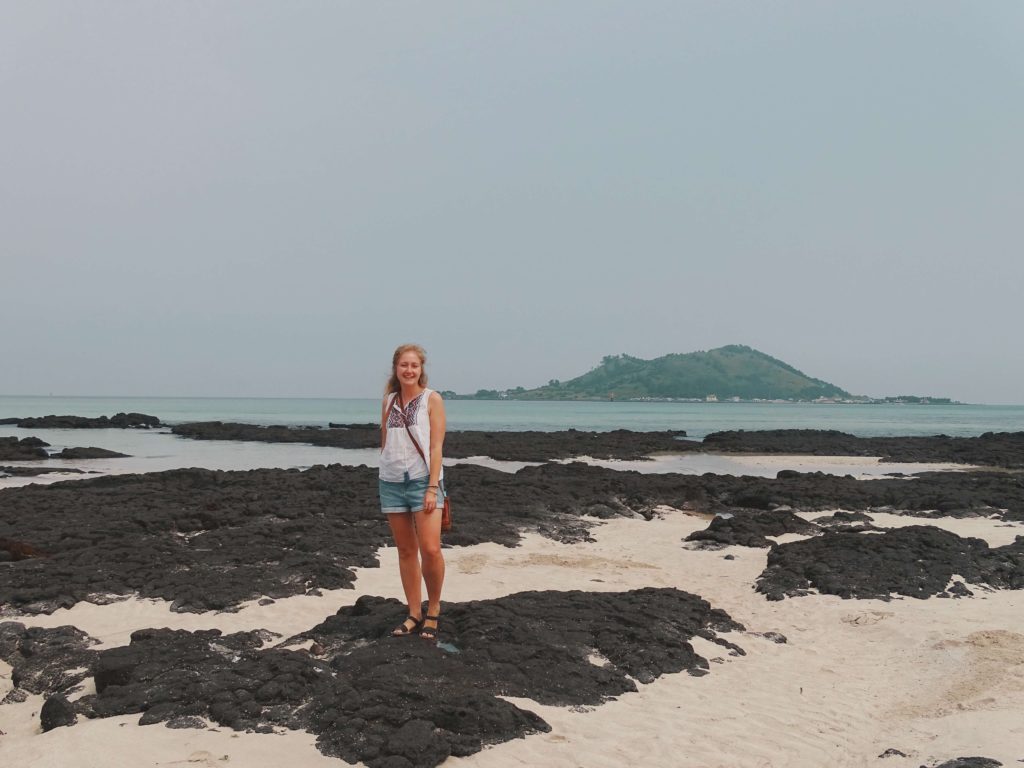
Read next: How to visit Jeju Island without a car
Bottom line – if you want to visit Jeju Island, consider increasing your Korea budget!
South Korea budget tips
1. Use Wi-Fi rather than a SIM card. There are public hotspots everywhere in South Korea. 2. Find hostels with kitchens! These are much more common than in other places in Asia. 3. Seek out local produce markets. Here you can pick up sweet potatoes and other healthy veggies for your meals. You can’t find much fresh stuff in convenience stores like the 7-Eleven unless you want a lone banana swapped in styrofoam. 4. Although they don’t sell much healthy food, don’t overlook the 7Eleven for Korea budget eats. Gimbap rolls are only 2,000 KRW; two make a decent lunch. You can even buy lunchboxes and ready meals. I can’t promise they’re healthy but I can promise they’re cheap!
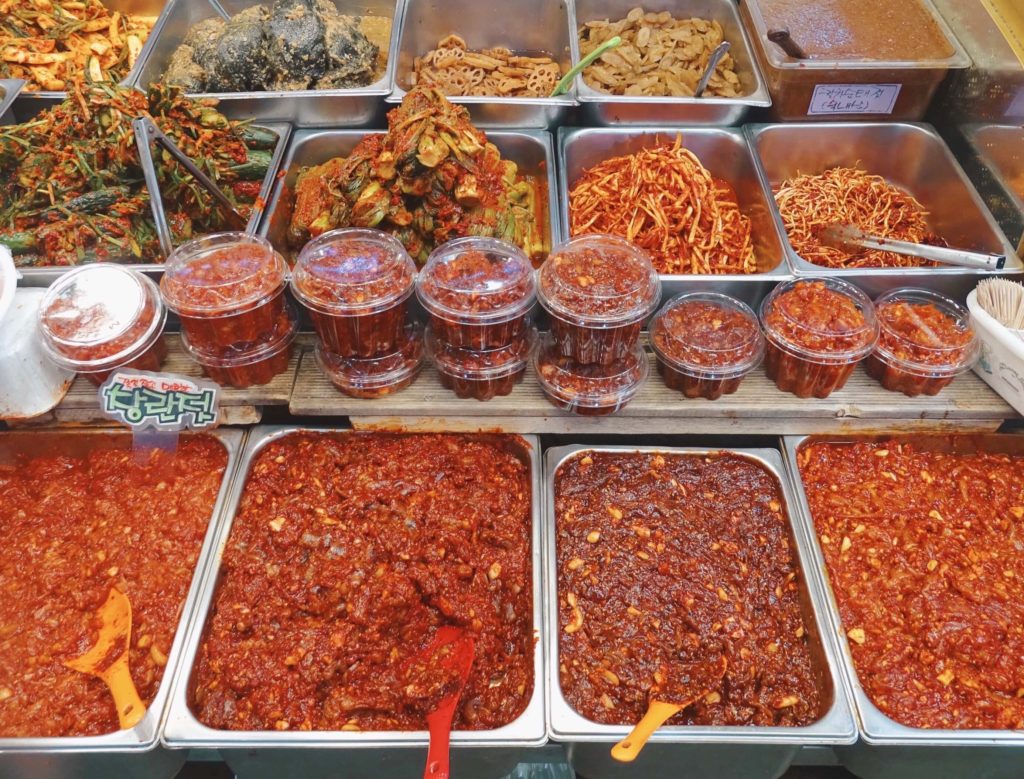
Best places to travel on a South Korea budget trip
There’s one place I’d say not to visit on a Korea budget trip which is Jeju Island. Better options include: Daegu – this was one of the cheapest places I visited in South Korea, partly because I filled up on free pastries at Schumann and Clara cafe (they’re unlimited when you buy a coffee!). There are a few free hikes around Daegu including to Apsan Observatory in Apsan Park and Gatbawi Rock at Mount Palgong. Both these can be reached cheaply by local bus.
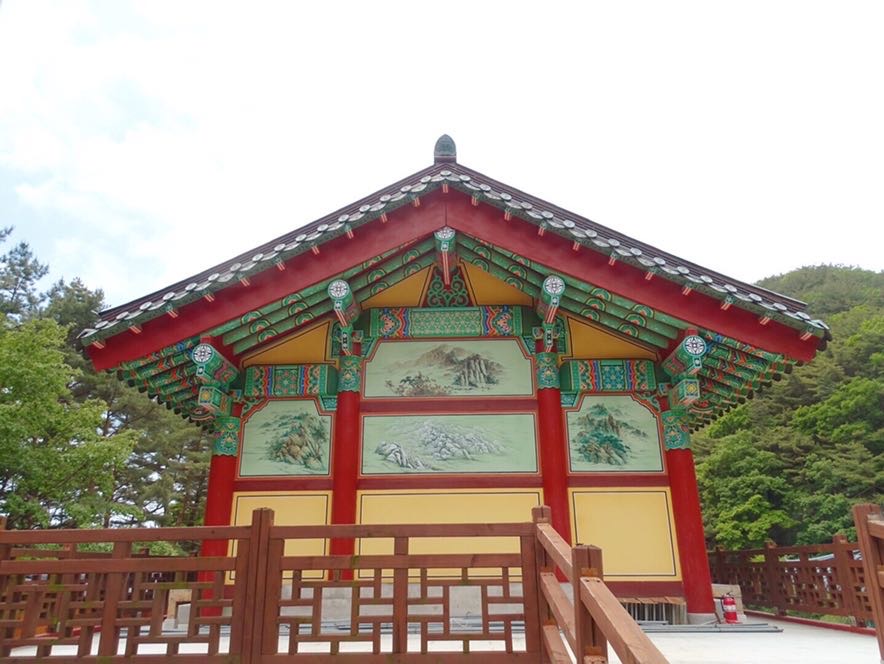
Gyeongju – this city on the east coast of South Korea is walkable so you never need to pay for taxis. As the historical capital, there are plenty of palaces and tombs, few costing more than 5,000 KRW to enter. You can also take a cheap bus ride to Buddhist temple, Bulguksa, and hike to the giant stone Buddha at Golgulsa Temple. Overall, it’s a great destination to keep your Korea travel budget low. Seoul – even though Seoul is an expensive city, there are lots of free things to do during a South Korea budget trip. If you’re visiting Seoul on a budget , you can visit many various museums and eat cheap street food at the many markets.
Free things to do in Seoul on a budget
- Visit museums like the National Folk Museum of Korea and Seoul Museum of Art
- Wander around the colourful murals at Ihwa Mural Village
- Go hiking in Bukhansan National Park
- Wander around Bukchon Hanok Village
- Hang out by the Han River
- Walk along Cheonggyecheon Stream
- Hike along the 19km city wall
- Tour ancient Bongeunsa Temple (pictured below).
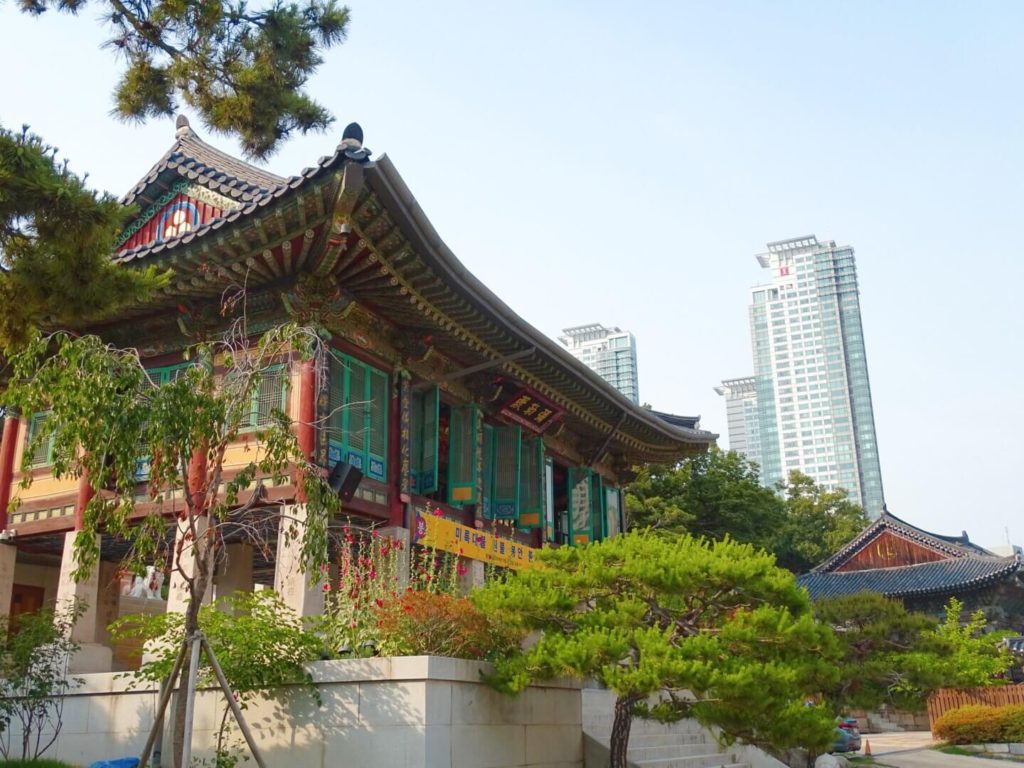
Free things to do in Busan on a budget
- Hang out on Haeundae Beach and check if you’re visiting for a free festival like the Sandcastle Festival
- Explore colourful houses, murals and outdoor art exhibitions at Gamcheon Culture Village
- Take a cheap bus to Yonggungsa Temple by the bus
- Hike along Igidae Coastal Walk.
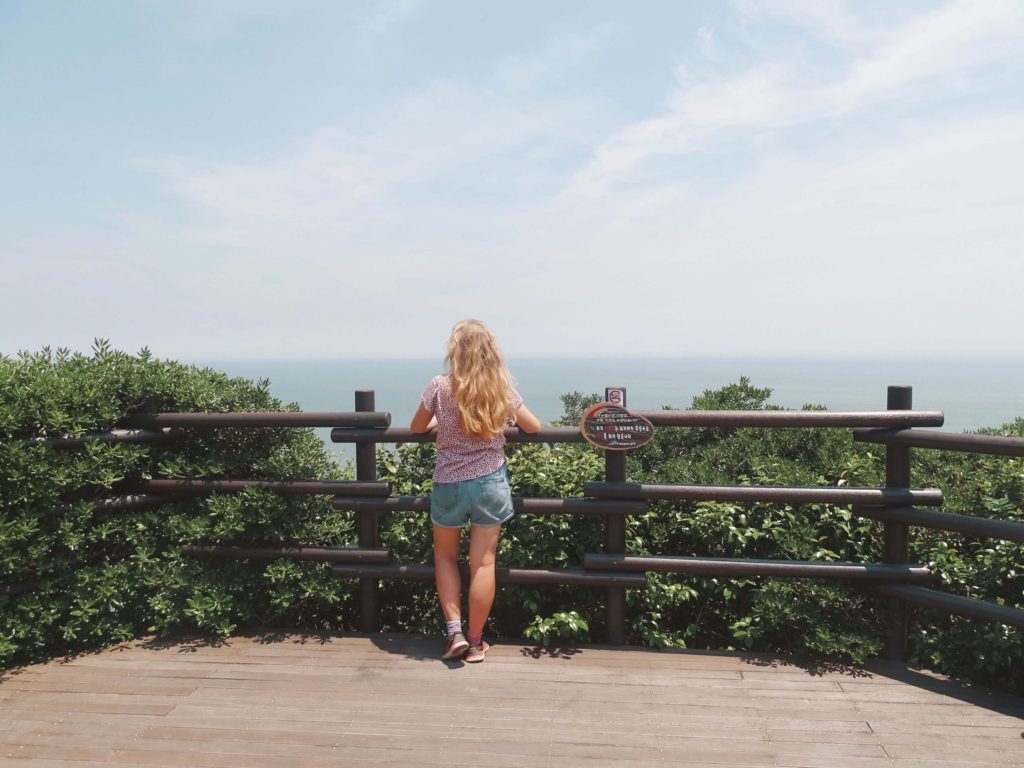
Mini Korea budget itinerary
Days 1-5: Seoul. While spending 5 days in Seou l , I would suggest a day visiting the DMZ, a second day visiting Bukchon Hanok Village and hiking in Bukhansen National Park, a third day at Iowa Mural Village and Gwangjang Market, a fourth day exploring cool neighbourhoods like Gangnam and Hongdae, and a final culture day exploring the museums and galleries. Days 6-7: Visit Sokcho and spend a couple of days hiking in Seoraksan National Park OR visit Jeonju and explore its picturesque Hanok Village.
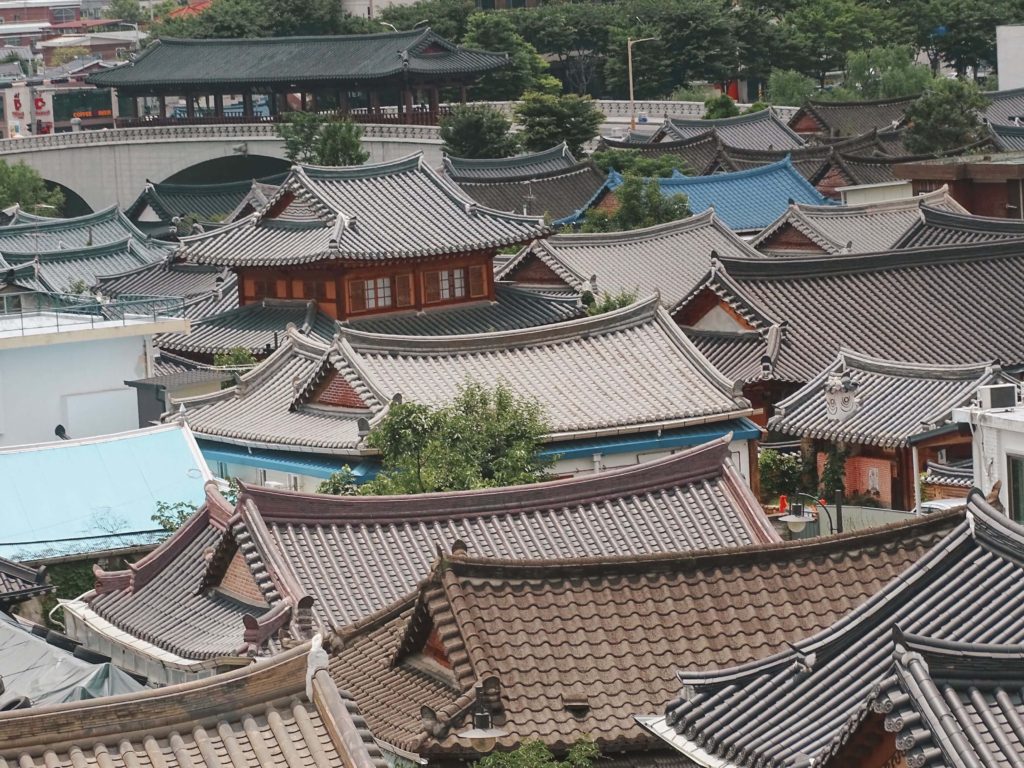
Days 8-10: During 3 days in Busan , you can visit Gamcheon Culture Village, relax on Haeundae Beach, explore Nampo neighbourhood, hike along Igidae Coastal Walk or within Taejongdae Park and finally, unwind at a Korean jjimjilbang (nude hot pool area) such as Spa Land in Shinsegae Centum City. You can also take a few fun day trips from Busan . A specific Korea budget tip for Spa Land – visit after 8pm or before 9am on weekdays for discounted tickets. Visiting on a weekday is cheaper than a weekend generally; you’ll pay 15,000 KRW rather than 18,000 KRW.
Essentials for a budget Korea trip
- Copy of Lonely Planet Korea .
- A Korean phrasebook & dictionary .
- A handy bumbag to keep your belongings secure.
- Reusable coffee cup (collapsable) for hot takeaway drinks.
- A reusable water bottle that you can fill up with filtered water (your accommodation will have this).
- Alternatively, a filtering water bottle that allows you to safely drink tap water.
- Metal straw and cloth bag set to reduce the use of plastic straws.
- Travel luggage – I use I recommend the Osprey Farpoint ( men’s ) ( women’s ).
- A camera – I use the Sony DSC-HX350 Digital Compact Bridge Camera which I think is one of the most affordable options based on the zoom and quality of photos.
- A GoPro if you’re into making videos – I use the HERO8 Black .
- Solo travel pick: a tripod or mini GorillaPod to get yourself in the shot – I use the Manfrotto tripod and Joby GorillaPod .
Thanks for reading my South Korea budget guide!
I hope I’ve answered your questions and got you excited about your South Korea budget trip 🙂 Ask me any questions in the comments.
Follow for more Korea content on Instagram , Facebook , Twitter and YouTube .
Check out my other South Korea blogs:
- Ultimate 2 week South Korea itinerary
- Solo travel in Korea
- 30 Korea travel tips
- South Korea bucket list
- South Korea food guide & best foods to try
- Ultimate Seoul itinerary
- Seoul street food guide
- Jeonju travel guide
- Best things to do in Busan
- Day trips from Busan
- Visiting Jeju Island without a car
- Tips for visiting the DMZ from Seoul
See you next time for more adventures,
For more travel content, follow me on Instagram , Facebook , Twitter and YouTube .
Ps. Liked South Korea budget guide? Pin it for later!
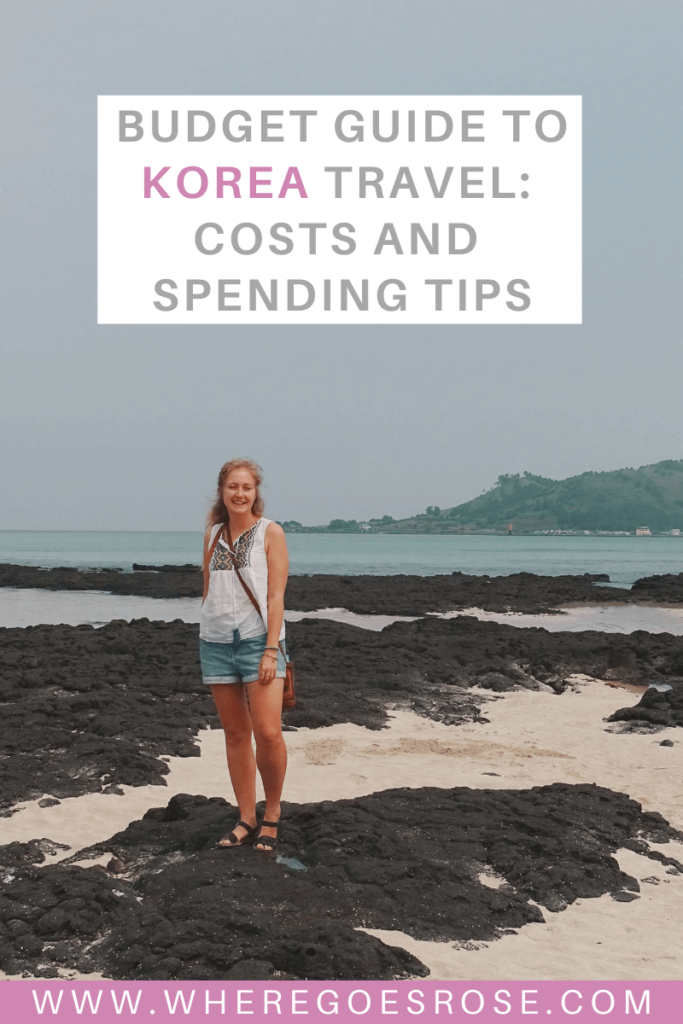
VISITING SOUTH KOREA? These are my trusted resources: Getting around by air – I use Skyscanner to find the best-value flights, using the ‘search by month’ tool to find the cheapest dates. You can also use the ‘to anywhere’ feature if you’re flexible on where you’re going. Buses – buses are comfy and efficient. It’s tricky for foreigners to book online so it’s best to turn up on the day. Trains – use Trip.com , partner of Korail (the official railway network of Korea) to book your trains in advance. The website accepts international payment options, unlike Korean rail websites. Click the three stripes in the top right corner then the flag to change it to English. Driving in Korea – use Rentalcars.com to compare car rentals. Hiring a car will be especially useful on Jeju Island. For hotels in Korea, I use Booking.com – they also have self-catering apartments. You can filter by review score and price to find the best-rated budget places. For hostels, I use Hostelworld . To save money on accommodation, I use Trusted Housesitters , a website that connects homeowners going away and travellers who can sit their homes & pets. Browse South Korea tours and activities on GetYourGuide . I also check Viator and Klook in case they have a better price. For food tours with passionate local chefs and foodies, check out EatWith . Need travel insurance ? I use True Traveller (for UK & Europe residents) since it’s affordable but covers everything you’d need including various activities, valuables and pre-existing conditions. Unlike some companies, they insure you if you’re already travelling / don’t yet have your flight home booked. Get a quote . For travel insurance for other nationalities, I recommend Hey Mundo and for long-term digital nomad travellers, I suggest Safety Wing . Check out my resources page for more travel discounts and tips!
Rose is a solo traveller from the UK who has been on the road since 2015. She wants to show other women that solo travel isn't scary and doesn't have to be expensive! Rose has lived in Mexico, Canada and all over Asia, seeking out food, bubble tea and street art wherever she goes!
2 thoughts on “ Is Korea Expensive? South Korea Trip Budget ”
What a great article! We’re currently dreaming of going to South Korea again – we’ve been there before and we love, love love it! Here’s to a year with loads of travel plans and new experiences!
+ thank you for running this blog, found some great travel tips through you. May good karma come your way 🙂
Leave a Reply Cancel reply
Your email address will not be published. Required fields are marked *
You can see how this popup was set up in our step-by-step guide: https://wppopupmaker.com/guides/auto-opening-announcement-popups/
13 tips for visiting South Korea on a budget

Feb 19, 2024 • 8 min read
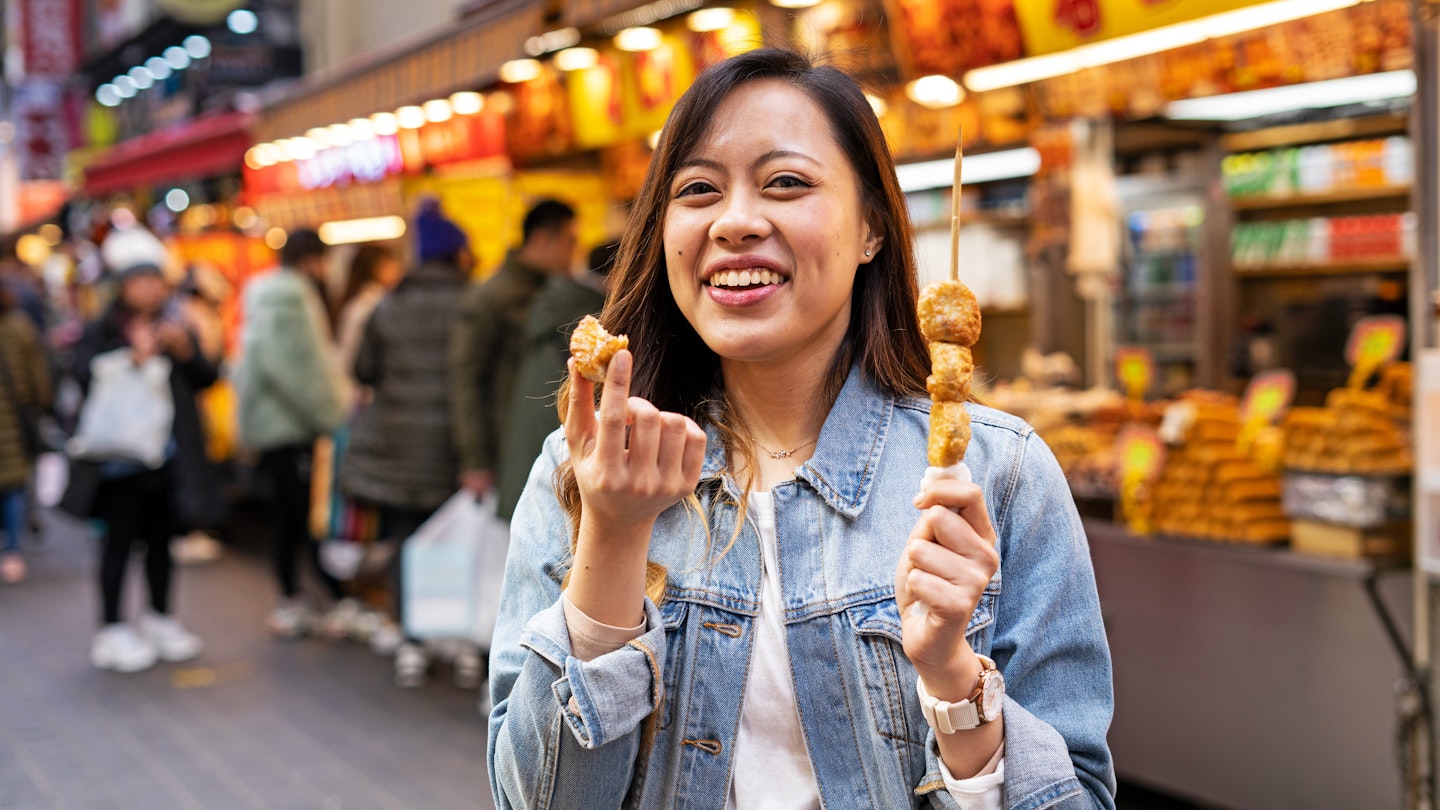
Do as the locals do and grab a bite to eat at street food stalls at the market © Carlo A / Getty Images
South Korea's cost of living is on the rise, but it's definitely still possible to visit on a budget. Between its vast and affordable transit system , wide range of dining options and abundance of low-cost activities and attractions, South Korea can prove a relatively inexpensive travel destination.
To maximize your savings, here's a guide full of helpful pointers to visiting South Korea on a budget.
Consider whether you need a SIM card
South Korea is one of the most connected countries in the world, with many cities offering free wi-fi in busy public areas, in public transport stations and aboard buses and subways. Almost every cafe will provide customers with free wi-fi, and most accommodations, even small places, are likely to have internet access.
With so much free Internet around, it's entirely doable to forgo the SIM card altogether and rely on the nation's robust wi-fi infrastructure and pre-downloaded maps and translation apps instead. But if you want to guarantee that you'll always be connected, buy a SIM card in advance through sites like Trazy, Klook or Korea Sim and then pick it up at the airport. If your phone supports an electronic SIM card, purchase a short-term plan through eSIM Korea for as little as ₩1000 per day.

Fly to South Korea in January, November, October or March
Winter weather enthusiasts, rejoice! January is the cheapest month for airfare to South Korea, and it's a prime time for avoiding the crowds and partaking in winter sports activities. But if below-freezing temperatures are not your thing, the next most affordable (non-winter) months to fly are November, October and March. For the best deals, be sure to book your tickets at least five weeks in advance.
Leave the airport by bus or airtrain
Taxis from the airport are expensive and no faster than the bus or airtrain. The AREX train (departing from level B1F of the airport) to Seoul Station costs ₩4150 to ₩9500 for an adult ticket, depending on whether you select the 60-minute all-stop or the 45-minute express. From there, transfer to the subway to get around the capital . Or if you're heading beyond Seoul, buy a Korail railway ticket.
Even more affordable than the Korail are the airport buses, which leave directly from the airport (1F from Terminal 1, B1F from Terminal 2) and go to many major cities across the country.
Buy a Korail Pass for unlimited travel by train
If you plan on traveling to several cities in a short time span, look into purchasing a Korail Pass . Available in two varieties – a consecutive three- or five-day duration period or a flexible two- or four-day duration period – the Korail Pass ranges from ₩131,000 to ₩244,000 for adults. If you're traveling in a group of two or more, that price drops by ₩10,000, and if you're 27 or younger, you qualify for the youth price, discounted even further to ₩105,000 to ₩195,000. The Korail Pass is specifically for international travelers and works for both the high-speed KTX and slow trains.
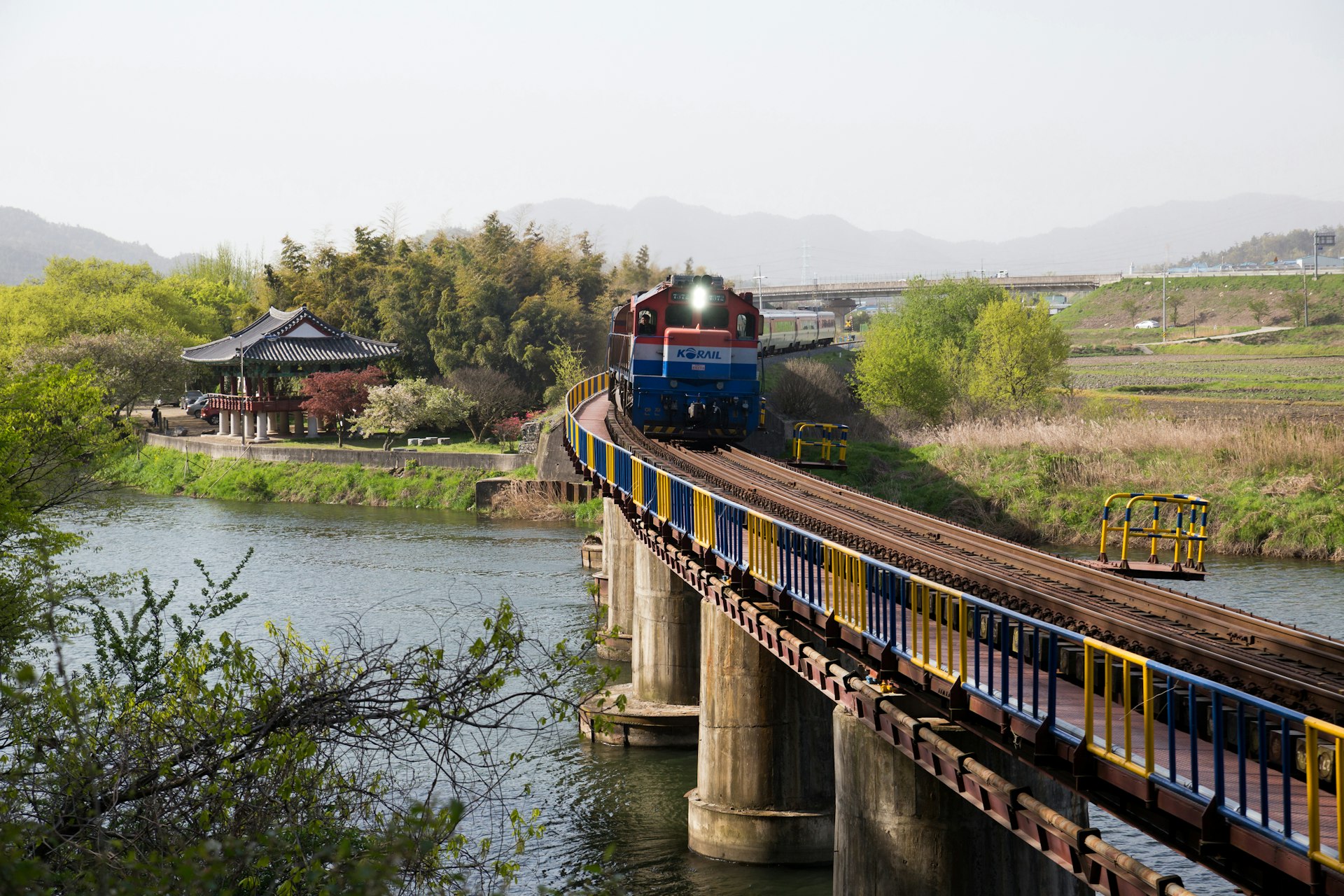
Ride the slow rail
If you don't expect to ride the train more than a handful of times within a five-day period, it's better to buy tickets a la carte. Look for the budget friendly Mugunghwa trains. As the most sluggish class of trains, they'll slow down your journey considerably (Seoul to Busan , for example, takes an extra three hours by Mugunghwa than by KTX), but they offer a chance to take in the stunning scenery out the window at a more leisurely (and less nauseating) pace.
To save even more, buy a train ticket for the dining car or the standing-room only spaces between cars. These sections have a limited number of stools or folding seats, so board early for your best chance of snagging one. Or, hit the pavement and use the intercity bus system instead.
Use transportation cards for discounted bus and subway fares
Instead of purchasing single-journey subway tickets or using cash to board the bus, buy a Tmoney transit card for ₩4000 and load it up with money at any subway station or major convenience store, including 7-Eleven, CU, GS25 and Ministop. The Tmoney card reduces both subway fares (by ₩100) and bus fares (by varying amounts, depending on the type of bus) and also provides discounts on transfers within 30 minutes.
Tmoney cards work anywhere in the country, but if you're visiting just Seoul and Jeju and you plan to get around primarily via public transit, you might want to consider the tourist-only regional MPASS card. This pass can be purchased in varying durations (ranging from ₩15,000 for one day to ₩64,500 for seven days) and allows for 20 rides per day.
Opt for local accommodations over international hotels
With international hotel chains costing upwards of ₩250,000 a night in South Korea, budget-conscious travelers should aim for small local lodgings instead. In Seoul, cute boutique options abound. Outside major centers, though, these can be hard to find, so consider a minbak or pension , which are usually ondol -style rooms equipped with underfloor heating and often sleeping mats rather than beds. When possible, book directly with the lodging as opposed to through a middle-man aggregator site, as proprietors often have to drive up their nightly rates to cover the platform's service fees.
If you're in a pinch and feel comfortable with sleeping in a shared space, there's always the possibility of staying in a 24-hour jjimjilbang (bathhouse).

Eat at traditional markets, street stalls and mom-and-pop restaurants
For homey, satisfying eats, head to the traditional markets, where you can find heaping portions of noodles, soups and fried snacks at reasonable prices from the restaurants and food stalls tucked inside. Budget travelers should keep an eye out for pojangmacha (tented dining areas), where you can order dishes like meat skewers, fish cake soup and tteokbokki rice cakes (as well as soju and beer) while seated outside at a plastic table. Small mom-and-pop places also provide big bang for your buck, serving up your main course with a bowl of rice and a table full of (refillable) banchan side dishes.
Search for tourist coupons
For travelers interested in doing a lot of sightseeing on their trip, several different tourist savings cards discount or waive admission to many of the country's most popular attractions. The Discover Seoul Pass (ranging from ₩50,000 for one day to ₩90,000 for three days) offers more than 200 deals, including free use of the city's public bicycles and a free ride on the AREX. The Korea Tour Pass (₩4000) comes with benefits from 182 brands.
Both passes can be loaded just like Tmoney cards for use as a transportation card, and they also have mobile apps. For travelers who don't intend on visiting so many attractions, it's worth stopping into a tourist information center to see what one-off coupons are available. Check out the Korea Tourism Organization's website or app for a list of special promotions.
Visit museums, movie theaters and other attractions on Culture Day
If you happen to be in South Korea on the last Wednesday of the month, check to see whether any of the venues you're interested in participate in Culture Day. On this day, more than 2000 museums, art galleries, performance halls, movie theaters, sports facilities and heritage sites across the country give free or discounted admission.
Traveling to Jeju is cheaper by plane than by ferry
For those visitors who have Jeju on their itinerary, going by plane can often cost much less than going by boat, plus flying is exponentially faster. Choose budget airlines such as Jeju Air, Air Busan, Jin Air, T'way, Air Seoul or Eastar Jet over the pricier Korean Air and Asiana Airlines. Weekday flights without a flexible cancellation policy can be found for less than ₩18,000 one way.

Take advantage of South Korea's vast national park system
South Korea is home to 22 national parks, some of which are free, and others of which charge less than ₩4000 for the entrance fee. For nature lovers, these parks offer not only a bit of hiking but also a glimpse of some of the country's most beautiful Buddhist temples that are hidden within. Book a campsite or sleeping shelter for an overnight adventure experience that costs as little as a couple thousand won a night.

Claim your sales tax refund before you go
Foreigners who stay less than six months (and overseas Koreans staying less than three months) in South Korea are eligible for a refund of the 10% sales tax paid on purchases. These purchases must be more than ₩30,000 and less than ₩500,000 and can be made only at participating tax-free stores. You can claim your reimbursement immediately at the tax-free store itself, at a tax-refund booth outside airports and ports, or at the tax-refund counter or kiosk inside major airports. You'll need your receipts and your passport.
Daily costs in South Korea
- Hostel room: ₩20,000–40,000
- Basic guesthouse or minbak room for two: ₩30,000–60,000
- Self-catering apartment (including a pension): ₩60,000–120,000
- Public transport ticket (one bus ride using a transportation card): ₩1200
- Coffee: from ₩3000
- Gimbap (rice rolls): from ₩2000
- Dinner for two: from ₩15,000
- Beer at the bar: from ₩4000
This article was first published August 2022 and updated February 2024
Explore related stories
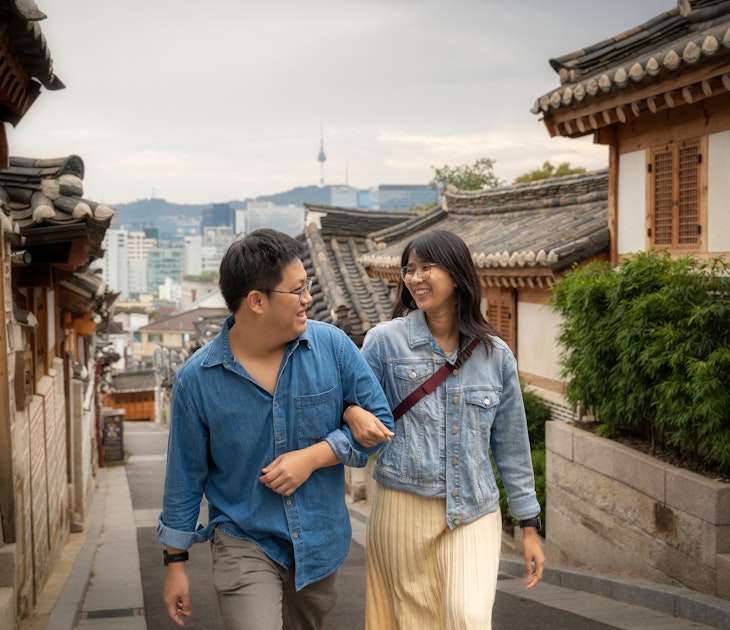
Budget Travel
Feb 17, 2024 • 6 min read
Stretch your budget in Seoul with these top money-saving tips and a guide to daily costs.

Mar 28, 2024 • 7 min read

Feb 27, 2024 • 6 min read
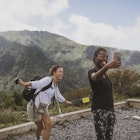
Feb 20, 2024 • 6 min read

Feb 18, 2024 • 4 min read
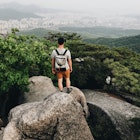
Feb 18, 2024 • 7 min read
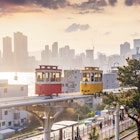
Feb 18, 2024 • 10 min read

Feb 17, 2024 • 10 min read
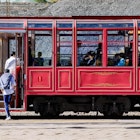
Feb 17, 2024 • 8 min read
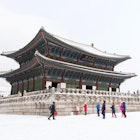
Feb 11, 2024 • 3 min read
- Destinations
- Travel Guides

How much does a trip to South Korea cost?

Faraway Worlds
South Korea
- South Korea travel costs
If you’re planning on travelling to South Korea, you’re probably wondering how much you need to budget for your trip. While your travel costs will depend on your travel style, generally speaking South Korea is best for travellers with some spending money.
Accommodation costs are generally affordable and food and drinks are reasonably-priced. Many of South Korea’s best attractions are very affordable or even free and, while some activities could set you back a fair amount, there’s plenty to do at lower price points too.
How much should I budget for a trip to South Korea?
A reasonable budget for two for a week in South Korea is around ₩1,508,000 .
The above cost is based on staying in good, mid-range accommodation and having a few meals out per week, while preparing some yourself . It makes allowances for a couple of sightseeing activities, but doesn’t take into account expensive activities like adventure sports or private tours.
Generally speaking, the longer you travel, the cheaper it costs per day, while fly-in, fly-out trips can be more expensive.
How much does accommodation cost?
You can expect to spend between ₩80,000-₩120,000 a night, per couple, on accommodation in South Korea. This will get you a private room with your own bathroom in a 3-4-star hotel or apartment rental.
Hostels are, of course, cheaper, but a private room with a shared bathroom will still cost around ₩50,000 per night. A bed in a dorm room also averages around ₩20,000 per night, per person, although there are definitely cheaper options out there.
Keep in mind that accommodation can be more expensive in Seoul, so budget accordingly if you'll be spending more time in the city.
How much should I budget for food and drinks in South Korea?
Budget to spend around ₩548,037 for two for a week in South Korea. This assumes you’re cooking some of the time and drinking some alcohol.
If you enjoy eating out, you can expect to pay around ₩61,500 for a nice dinner for two, including an alcoholic drink. A meal at a pub is likely to be around ₩32,943 for two, with cheaper meals available (especially for lunch) for around ₩11,255 each.
Assuming that you’ll be eating out some of the time, budget at least ₩100,363 a week for groceries. If you enjoy a few drinks, you’ll need to increase this amount – beer costs around ₩2,301 for a 500ml bottle and good bottle of wine is around ₩25,778 , from a shop, although there are cheaper options available. Milk typically costs around ₩2,358 for a two-litre bottle and you can expect to pay around ₩4,846 for a cappuccino from a local café.
How much does it cost to get around South Korea?
Getting around South Korea is easiest with a train. Transport costs fluctuate depending how much you travel, but budgeting around ₩155,000 for two per week is a good starting point. This should allow you to take a couple of intercity train routes. If you’re planning on doing any tours or using hop-on hop-off buses, you’ll need to up your budget a bit.
Inter-city trains connect major cities in Korea, and it's possible to be almost anywhere in the country within a few hours. Fares do depend on the class of ticket you book, so if you're planning to do a few day trips travelling first class, you may want to budget a bit more.
Buses and the subway are both very convenient if you're travelling in Seoul. Get the T-Money card from any convenience store in town, add money, and validate it every time you get on or off a bus, or enter and exit the subway.
What should I expect to spend on activities?
A lot of the best things to do in South Korea are free. However, there definitely are some attractions that cost money – entry fees to a museum or an art gallery are usually around ₩19,000 - ₩50,650 per person. If you want to do organised day trips or join smaller tour groups to learn more about some of the sites, budget around ₩108,000 per activity per person.
South Korea is a beautiful destination to visit and although it’s not cheap, it’s definitely possible to travel there for less. Cooking your own meals, carefully selecting accommodation or limiting meals out will definitely help you to reduce your travel costs. Slow travel is another great way to help your budget to stretch further, while exploring a place in more depth.
Travelling through South Korea is definitely possible on a budget – just pick your priorities and compromise on the rest or consider travelling in the off-season and avoiding school holidays to cut down on costs. And, if you’re on the luxury end of the scale or wanting to treat yourself, the sky’s the limit.
Share this article
Last Updated 5 May 2022

- Things To Do
- Entertainment
- Food Travel
- Travel Tips
- Travel News
Is South Korea Expensive?
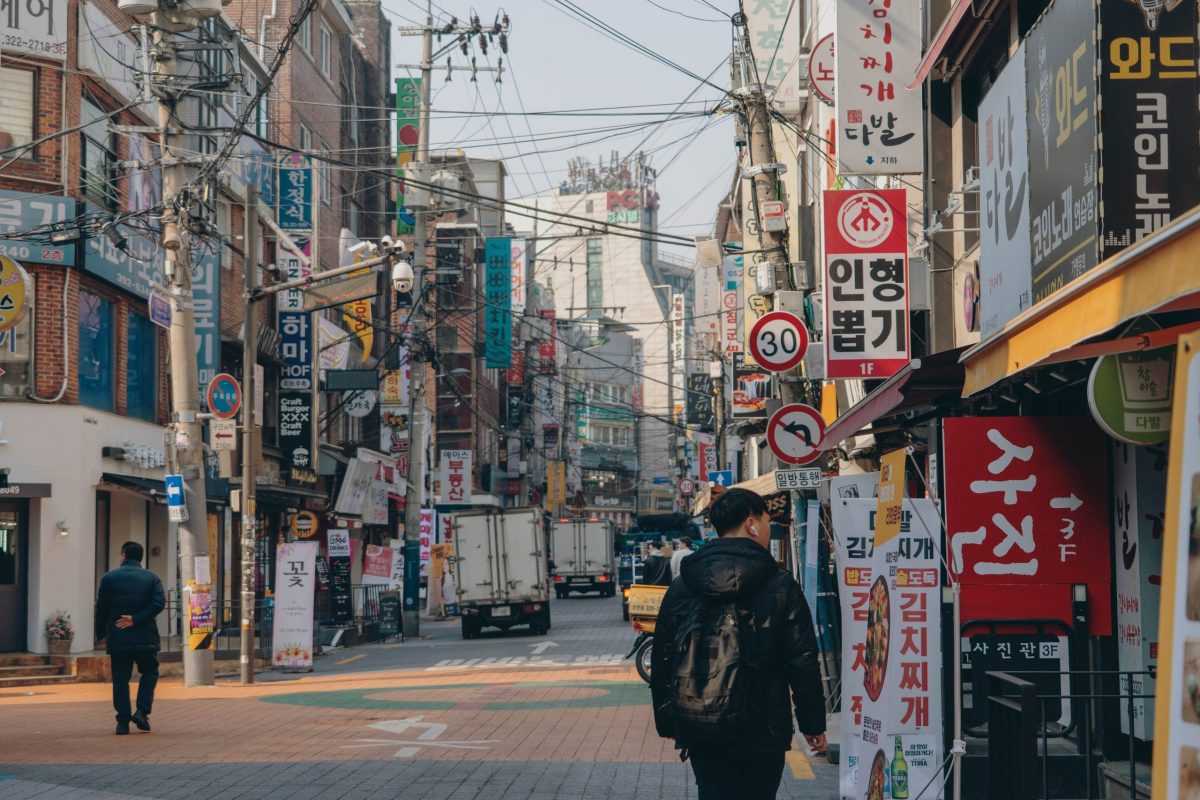
Introduction
Welcome to South Korea, a beautiful and vibrant country known for its rich culture, modern cities, and breathtaking landscapes. If you’re planning a trip to South Korea, one question that may be on your mind is: Is it expensive?
Well, like any other travel destination, the cost of living and travel expenses in South Korea can vary depending on your preferences and choices. In this article, we’ll delve into the different aspects of the cost of living in South Korea, including accommodation, transportation, dining, entertainment, shopping, healthcare, and insurance.
South Korea, particularly Seoul, is known to be one of the most developed and technologically advanced countries in the world. As a result, you can expect a relatively higher cost of living compared to some neighboring countries. However, with proper planning and budgeting, you can still have an enjoyable experience in South Korea without breaking the bank.
Whether you’re a budget traveler or someone who prefers a more luxurious experience, South Korea offers a wide range of options to suit various budgets. From affordable guesthouses and street food stalls to luxurious hotels and fine dining restaurants, there are choices for every traveler.
Exploring the cost of living in South Korea will not only help you plan your trip but also give you an idea of how much you might need to budget for your daily expenses. So, let’s dive in and discover the cost of accommodation, transportation, food and dining, entertainment and activities, shopping, healthcare, and insurance in South Korea.
Cost of Accommodation in South Korea
When it comes to accommodation in South Korea, you have a range of options to choose from. From budget hostels to luxury hotels and traditional hanok stays, there is something for every budget and preference.
In popular cities like Seoul, Busan, and Jeju Island, you can find a wide variety of accommodation options. As expected, the closer you stay to the city center or popular tourist attractions, the higher the price will be. However, even in these areas, you can find budget-friendly guesthouses, known as “minbak” in Korean, where you can get a private room at a reasonable cost.
The average cost of a budget hotel or guesthouse in South Korea ranges from 40,000 to 70,000 Korean Won (KRW) per night, which is around $35 to $60 USD. These budget accommodations often provide basic amenities such as Wi-Fi, TV, and sometimes breakfast.
If you prefer a more luxurious experience, South Korea boasts a selection of high-end hotels and resorts. These upscale accommodations offer spacious rooms, 24-hour room service, fitness centers, swimming pools, and other luxurious amenities. Prices for luxury hotels in South Korea can range from 200,000 KRW to several million KRW per night, depending on the location and the level of luxury.
For travelers seeking a unique experience, staying in a traditional hanok guesthouse is highly recommended. Hanoks are traditional Korean houses with beautiful architecture and cultural significance. These guesthouses provide a glimpse into traditional Korean lifestyle and often offer comfortable rooms with modern amenities. The price for a hanok stay typically ranges from 100,000 to 300,000 KRW per night.
If you’re planning a long-term stay in South Korea, renting an apartment or a studio can be a cost-effective option. The monthly rent for a small, furnished studio apartment in Seoul can range from 700,000 to 1,500,000 KRW, depending on the location and amenities.
It’s worth noting that booking accommodation in advance, especially during peak seasons, can help you secure better rates and availability. Online platforms like Booking.com, Agoda, and Airbnb offer a wide range of options for accommodation in South Korea.
In summary, the cost of accommodation in South Korea can vary depending on the location, type of accommodation, and the level of luxury. With options ranging from budget guesthouses to luxury hotels and traditional hanok stays, there is something to suit every traveler’s preference and budget.
Cost of Transportation in South Korea
Getting around in South Korea is convenient and efficient thanks to its well-developed transportation infrastructure. From public transportation to taxis and rental cars, there are plenty of options to suit your preferences and budget.
One of the most popular modes of transportation in South Korea is the subway system. Major cities like Seoul, Busan, and Incheon have extensive subway networks that cover most areas of the city. The cost of a subway ride in Seoul starts at 1,250 KRW (approximately $1 USD), with additional costs for longer journeys.
Another convenient and affordable option for getting around is the bus system. Buses in South Korea offer an extensive network, connecting various cities and towns. The cost of a bus ride typically starts at 1,200 KRW (approximately $1 USD) for short distances, with higher fares for longer journeys.
If you prefer a more private and convenient mode of transportation, taxis are readily available throughout the country. Taxis in South Korea are relatively affordable, with fares starting at around 3,000 KRW (approximately $3 USD) for short distances. It’s important to note that additional charges may apply for late-night rides or toll fees.
For those who prefer to drive, renting a car is a viable option. Renting a car in South Korea is relatively affordable, with daily rates starting at around 50,000 KRW (approximately $45 USD) for a small compact car. However, it’s important to consider factors such as traffic congestion in major cities and the cost of parking.
When it comes to intercity travel, South Korea has an efficient train network. The Korea Train eXpress (KTX) is a high-speed rail system that connects major cities, allowing you to reach your destination quickly and comfortably. The cost of a KTX ticket varies depending on the distance traveled, with prices ranging from around 20,000 KRW to 150,000 KRW (approximately $18 to $135 USD).
In addition to public transportation options, South Korea also offers various transportation cards that can provide convenience and cost savings. T-money and Cashbee are two popular transportation cards that can be used for subway, bus, and even taxi rides. These cards often offer discounted fares and can be easily topped up at convenience stores or subway stations.
Overall, the cost of transportation in South Korea is relatively affordable and offers a range of options to suit different budgets. Whether you prefer public transportation or opt for more private means of getting around, you can navigate the country conveniently and cost-effectively.
Cost of Food and Dining in South Korea
South Korea is renowned for its delicious and diverse culinary offerings, ranging from street food delights to traditional Korean cuisine and international dishes. The cost of food and dining in South Korea can vary depending on where and what you choose to eat.
Street food is a popular and affordable option in South Korea. You can find food stalls and carts lining the streets, offering a wide variety of tasty treats such as tteokbokki (spicy rice cakes), kimbap (seaweed rice rolls), and odeng (fish cake skewers). Prices for street food dishes typically range from 2,000 to 5,000 KRW (approximately $2 to $5 USD) per item.
If you’re looking for a sit-down meal, there are countless restaurants and eateries to choose from. Korean BBQ is a must-try experience, where you can grill your own meat at the table. Prices for Korean BBQ can vary depending on the type and quality of meat, but a typical meal can cost around 15,000 to 25,000 KRW (approximately $13 to $22 USD) per person.
Traditional Korean restaurants, known as “hanjeongsik,” offer set meals that include a wide variety of side dishes. These meals provide a unique culinary experience and are priced at around 10,000 to 20,000 KRW (approximately $9 to $18 USD) per person.
For those craving international cuisines, South Korea’s major cities have a wide range of options, including Western, Chinese, Japanese, and fusion restaurants. Prices for these restaurants can vary depending on the level of sophistication and location, with a typical meal costing around 20,000 to 40,000 KRW (approximately $18 to $35 USD) per person.
When it comes to fast food chains, South Korea has several international and local options to choose from, including McDonald’s, KFC, Lotteria, and Burger King. Prices for a fast food meal can range from 5,000 to 10,000 KRW (approximately $4 to $9 USD) per person.
If you enjoy cooking your own meals, you can visit local markets and grocery stores to purchase fresh ingredients. Local markets offer a wide variety of produce, seafood, and meat at affordable prices. Grocery store prices are generally comparable to those in Western countries.
It’s also important to note that South Korea has a vibrant café culture, with numerous coffee shops and trendy cafés scattered throughout the country. Prices for coffee and beverages at cafés range from 3,000 to 6,000 KRW (approximately $3 to $5 USD).
Overall, the cost of food and dining in South Korea can vary depending on your preferences and choices. From affordable street food to dining in upscale Korean or international restaurants, there are options to suit every palate and budget.
Cost of Entertainment and Activities in South Korea
South Korea offers a wide range of entertainment and activities to keep visitors engaged and entertained. Whether you’re interested in exploring historical sites, visiting theme parks, or enjoying the vibrant nightlife, there are options for every interest and budget.
One of the most popular activities in South Korea is visiting the numerous historical and cultural sites scattered across the country. From palaces and temples to traditional villages, entrance fees for these attractions are generally affordable, ranging from 3,000 to 10,000 KRW (approximately $3 to $9 USD) per person.
If you’re a fan of K-pop or Korean dramas, you might want to explore entertainment-related activities. Visiting entertainment agencies, attending live music shows, or even trying out a K-pop dance class can be a thrilling experience. Prices for such activities vary, with agency tours and live shows ranging from 10,000 to 30,000 KRW (approximately $9 to $27 USD) per person.
Theme parks are another popular attraction in South Korea, offering fun-filled experiences for individuals and families. The entrance fees for theme parks such as Lotte World and Everland range from 30,000 to 60,000 KRW (approximately $27 to $54 USD) per person, depending on the type of ticket and season.
South Korea is known for its vibrant nightlife, particularly in major cities. From trendy clubs and bars to karaoke rooms and music cafes, there are plenty of options for evening entertainment. Prices for drinks and cover charges at clubs can vary, but expect to spend around 10,000 to 30,000 KRW (approximately $9 to $27 USD) for a night out.
For nature enthusiasts, South Korea offers breathtaking landscapes and outdoor activities. National parks and hiking trails are open to the public, and the cost of entry is typically minimal, ranging from 2,000 to 5,000 KRW (approximately $2 to $5 USD) per person.
Transportation and activities packages are available for those who wish to explore multiple attractions and save on costs. These packages often include transportation and discounted entrance fees, making it convenient and cost-effective to visit various sites.
Lastly, keep an eye out for seasonal and cultural events happening throughout the year. From traditional festivals to cultural performances, these events offer a glimpse into Korean traditions and are often accessible at a reasonable or even free of charge.
In summary, the cost of entertainment and activities in South Korea can vary depending on your interests and choices. Whether you enjoy exploring historical sites, visiting theme parks, or experiencing the vibrant nightlife, there are options available to suit different budgets and preferences.
Cost of Shopping in South Korea
Shopping in South Korea is a delight for both locals and tourists, with a wide range of options to suit every shopper’s taste and budget. Whether you’re looking for trendy fashion, electronics, cosmetics, or unique traditional goods, South Korea has something for everyone.
One of the most popular shopping destinations in South Korea is the vibrant fashion district of Myeongdong in Seoul. Here you can find an array of shops selling the latest fashion trends, accessories, and beauty products. Prices for clothing and accessories in Myeongdong can vary, but expect to find affordable options starting from 10,000 KRW (approximately $9 USD).
For those looking for a more upscale shopping experience, South Korea is home to a number of high-end fashion boutiques and department stores. Areas such as Gangnam in Seoul offer a wide selection of luxury brands, designer labels, and upscale shopping centers. Prices for luxury items will vary, depending on the brand and product category.
South Korea is also known for its thriving cosmetics industry. The country is home to many popular beauty brands, and you can find a wide range of skincare and makeup products at competitive prices. Prices for cosmetics can vary depending on the brand and product, but there are plenty of affordable options available.
If you’re interested in traditional goods and souvenirs, markets such as Namdaemun Market and Insadong in Seoul are worth exploring. You can find a variety of items including hanbok (traditional Korean clothing), pottery, artwork, and other traditional crafts. Prices for traditional goods can vary depending on the quality and uniqueness of the item.
Electronics enthusiasts will also find South Korea to be a haven for tech gadgets. The Yongsan Electronics Market in Seoul is a popular destination for purchasing electronics, including cameras, smartphones, and home appliances. Prices for electronics will vary depending on the brand and specifications.
When it comes to grocery shopping, South Korea has a variety of supermarkets and convenience stores where you can find everyday items such as food, toiletries, and household goods. Prices for groceries in South Korea are generally similar to those in other developed countries, although some items may be more expensive due to import costs.
During your shopping spree, keep an eye out for sales and special promotions. South Korea is known for its frequent sales events, such as the annual “Black Friday” sale and various seasonal discounts. These promotions can provide significant savings on a wide range of products.
Overall, the cost of shopping in South Korea can vary depending on what you’re looking for and where you shop. From affordable fashion finds and cosmetics to luxury goods and traditional crafts, there are options to suit every shopper’s budget and preferences.
Cost of Healthcare and Insurance in South Korea
South Korea is known for its high-quality healthcare system, offering excellent medical services to both residents and visitors. The cost of healthcare in South Korea is relatively affordable compared to many Western countries, thanks to the country’s universal healthcare coverage.
All residents in South Korea are required to have health insurance, either through the National Health Insurance Service (NHIS) or through private health insurance plans. For visitors, it is recommended to have travel insurance that covers medical expenses during their stay in South Korea.
The cost of health insurance in South Korea depends on several factors such as income level, age, and whether you are enrolled in the national health insurance program or opt for private insurance. Generally, the cost of health insurance for employed individuals is calculated as a percentage of their income, with employers and employees sharing the cost.
For visitors who do not have health insurance, it is highly advisable to have travel insurance that covers emergency medical expenses. The cost of travel insurance will depend on factors such as the coverage amount, duration of stay, and the age of the individual.
When it comes to healthcare expenses in South Korea, the out-of-pocket cost for medical services is relatively low. The co-payment for outpatient visits with a general practitioner or specialist is typically around 30% of the total cost, while the co-payment for medications can range from 30% to 50%.
In general, the cost of medical services in South Korea is considered to be reasonable. For example, a basic doctor’s visit in South Korea can cost around 20,000 to 40,000 KRW (approximately $18 to $35 USD). However, it’s important to note that specialized medical treatments or procedures may incur higher costs.
South Korea is also renowned for its advanced medical technology and expertise in certain medical fields such as plastic surgery and dermatology. The cost of these specialized procedures and treatments can vary widely depending on the complexity and the clinic or hospital where the services are provided.
In case of emergency medical situations, it’s essential to go to the nearest hospital for immediate treatment. You can rest assured that you will receive quality care, and the cost of emergency medical services in South Korea is affordable compared to many other countries.
In summary, the cost of healthcare and insurance in South Korea is relatively affordable and provides access to high-quality medical services. Whether you are a resident or a visitor, having health insurance coverage is essential, and it’s recommended to have travel insurance to cover emergency medical expenses during your stay in South Korea.
South Korea offers a unique blend of rich culture, vibrant cities, and breathtaking landscapes. When it comes to the cost of living and travel expenses, South Korea can be considered relatively affordable compared to many Western countries. By understanding the costs associated with accommodation, transportation, food and dining, entertainment and activities, shopping, healthcare, and insurance, you can plan and budget for your trip accordingly.
Accommodation options in South Korea cater to a range of budgets, from budget-friendly guesthouses to luxurious hotels and traditional hanok stays. Public transportation, including subways, buses, and taxis, is convenient and reasonably priced, with options to suit different preferences. The cost of food and dining in South Korea is diverse, offering affordable street food and a wide range of restaurant choices, from budget-friendly local eateries to upscale dining experiences.
South Korea provides a plethora of entertainment and activities, from exploring historical sites to visiting theme parks and enjoying the vibrant nightlife. Shopping in South Korea is an experience in itself, with options ranging from trendy fashion districts to traditional markets, offering goods for every taste. The country’s healthcare system is highly regarded, with affordable costs for medical services and insurance coverage for residents and visitors alike.
In conclusion, while the cost of living and travel expenses in South Korea can vary depending on personal preferences, budgeting and planning can ensure an enjoyable experience without breaking the bank. Whether you’re a budget traveler or someone who prefers a more luxurious experience, South Korea offers a variety of options to suit your needs. With careful planning and consideration of the costs associated with various aspects of living and traveling in South Korea, you can make the most of your time in this vibrant and fascinating country.
LEAVE A REPLY Cancel reply
Save my name, email, and website in this browser for the next time I comment.
- Privacy Policy
- Advertising
- Affiliate Disclosure
Cost of a Trip to Seoul, KR & the Cheapest Time to Visit Seoul
The average price of a 7-day trip to Seoul is $1,705 for a solo traveler, $3,062 for a couple, and $5,741 for a family of 4 . Seoul hotels range from $47 to $201 per night with an average of $58, while most vacation rentals will cost $130 to $340 per night for the entire home. Average worldwide flight costs to Gimpo International Airport ( GMP ) are between $1,307 and $1,841 per person for economy flights and $4,101 to $5,777 for first class. Depending on activities, we recommend budgeting $37 to $75 per person per day for transportation and enjoying local restaurants.
See below for average , budget , and luxury trip costs. You can also look up flight costs from your airport for more tailored flight pricing.
The Cheapest Times to Visit Seoul, KR
On average, these will be the cheapest dates to fly to GMP and stay in a Seoul hotel:
- January 8th to March 18th
- August 20th to December 9th
The absolute cheapest time to take a vacation in Seoul is usually late October to early November .
Average Seoul Trip Costs
Average solo traveler.
The average cost for one person to visit Seoul for a week is $1,287-$2,473 ($184-$353 per day)
Food, Travel, and Sightseeing : $37 to $75 per day for one person’s daily expenses
Flights : $698 to $1,546 for economy
Lodging : $62 to $62 per night for one 2 or 3-star hotel room
or $55 to $67 per night for a 1-bed vacation rental
Average Couple’s Trip
The average cost for a couple to visit Seoul for a week is $3,462-$5,134 ($495-$733 per day)
Food, Travel, and Sightseeing : $74 to $150 per day for two people’s daily expenses
Flights : $1,396 to $3,092 for economy
Average Family Vacation
The average cost for 4 people to visit Seoul for a week is $4,356-$9,028 ($622-$1,290 per day)
Food, Travel, and Sightseeing : $148 to $300 per day for four people’s daily expenses
Flights : $2,792 to $6,184 for economy
Lodging : $124 to $124 per night for two 2 or 3-star hotel rooms
or $88 to $94 per night for a 2-bed vacation rental
Traveling Cheap to Seoul
How cheap can you make a vacation to Seoul? The cheapest trip to Seoul is about $134 per person per day for travelers willing to take standby flights, deal with inconvenience, and otherwise limit travel expenses. About 1% of rentals are available in the $0 to $100 range for an entire place, and vacation rentals can be booked for as low as $21 per night. These inexpensive rentals must be booked as early as possible and may not be in the most desirable areas. 1-star hotels are more likely to be available, with rooms starting at around $39.
Even cheaper trips are possible depending on where you live and whether you can drive. Check the cheapest times to fly for more saving ideas.
Budget Solo Traveler
The lowest cost for one person to visit Seoul for a week is $936-$2,052 ($134-$293 per day)
Food, Travel, and Sightseeing : $16 to $32 per day for one person’s daily expenses
Lodging : $39 to $47 per night for one 1-star hotel room
or $21 to $41 per night for a 1-bed vacation rental
Budget Couple’s Trip
The lowest cost for a couple to visit Seoul for a week is $1,746-$3,822 ($249-$546 per day)
Food, Travel, and Sightseeing : $32 to $64 per day for two people’s daily expenses
Budget Family Vacation
The lowest cost for 4 people to visit Seoul for a week is $3,414-$7,644 ($488-$1,092 per day)
Food, Travel, and Sightseeing : $64 to $128 per day for four people’s daily expenses
Lodging : $78 to $94 per night for two 1-star hotel rooms
or $29 to $62 per night for a 2-bed vacation rental
Overall it is very possible to travel to Seoul cheaply.
The Cost of a Luxury Seoul Trip
There is no true ceiling on the cost of a luxury trip, so our estimates are based on what most people do in Seoul.
Luxury Solo Traveler
The high-end price for one person to visit Seoul for a week is $3,010-$8,102 ($430-$1,157 per day)
Food, Travel, and Sightseeing : $67 to $158 per day for one person’s daily expenses
Flights : $1,989 to $3,324 for first class
Lodging : $92 to $201 per night for one 4 or 5-star hotel room
or $340 to $612 per night for a preferred vacation rental
Luxury Couple’s Trip
The high-end price for a couple to visit Seoul for a week is $5,468-$12,532 ($781-$1,790 per day)
Food, Travel, and Sightseeing : $134 to $316 per day for two people’s daily expenses
Flights : $3,978 to $6,648 for first class
Luxury Family Vacation
The high-end price for 4 people to visit Seoul for a week is $10,936-$22,862 ($1,562-$3,266 per day)
Food, Travel, and Sightseeing : $268 to $632 per day for four people’s daily expenses
Flights : $7,956 to $13,296 for first class
Lodging : $184 to $402 per night for two 4 or 5-star hotel rooms
or $476 to $857 per night for a preferred vacation rental
Seoul Hotel Prices
The cost of staying in Seoul is slightly lower than the average city. On average hotels are less expensive than vacation rentals. Luxury vacation rentals are more expensive in Seoul due to very high property costs. The graphs below show how much cost can vary depending on the type of experience you’re looking for.
Seoul Lodging Cost by Star Status
The average price for the class of hotel is on the (y) axis. The hotel class (out of 5 stars) is on the (x) axis.
Prices are based on Seoul hotel averages and may not reflect current prices. In some cases, we extrapolate prices to estimate costs, and hotels with your desired star rating may not be available.
Vacation Rental Prices
The percent of vacation rentals in the price range is on the left (y) axis. Price range is on the bottom (x) axis.
There are a healthy amount of vacation rentals serving all budgets in Seoul.
Flight Costs to Seoul
Averaging flights around the world, prices go from a high of $1,841 average in late July to a low of $1,307 in late October to early November. Median flight price is $1,309. These prices are based on millions of flights. For Seoul our data includes 138 originating airports, and 74 airlines. The area has average variance in price compared with other locations. Flying to Seoul from an airport like Henry E. Rohlsen ( STX ) in Christiansted, VI (the United States) for an average $9,536 trip fare will obviously cost a lot more than from an airport like Taegu International ( TAE ) in Taegu (South Korea) at an average of just $88.
Average Flight Cost by Season
Average flight cost by day of week.
The cheapest day to fly in is typically Wednesday, and the cheapest day to fly back is usually Wednesday. Click here to see data for the cost of flights from your airport. In Seoul, the difference between the cheapest and the most expensive week is about $535, so you can easily save about 41% simply by using our free flight guides and booking in advance.
Daily Expenses Budget
Daily vacation expenses vary more based on what you’re interested in doing. A fine dining restaurant with drinks around Seoul can easily cost $240 per person or more, while a standard nice meal might be about $16 per person. Private tours can cost $481 per day, but self-guided tours to see the outdoor sights can be free. Costs vary wildly, so recommendations are made based on the cost of living and averages we see for this type of vacation.
Other Seoul Guides
Travel costs nearby.
- Myeongdong, South Korea
- Namdaemun, South Korea
- Samcheong-dong, South Korea
- Daehangno, South Korea
- Itaewon, South Korea
- Hyehwa, South Korea
- Gyeongnidan-gil, South Korea
- Shinchon, South Korea
- Hongji, South Korea
- Apgujeong, South Korea
Travel Costs in Popular Places
- York, the United Kingdom
- Ubud, Indonesia
- Oklahoma City, OK, US
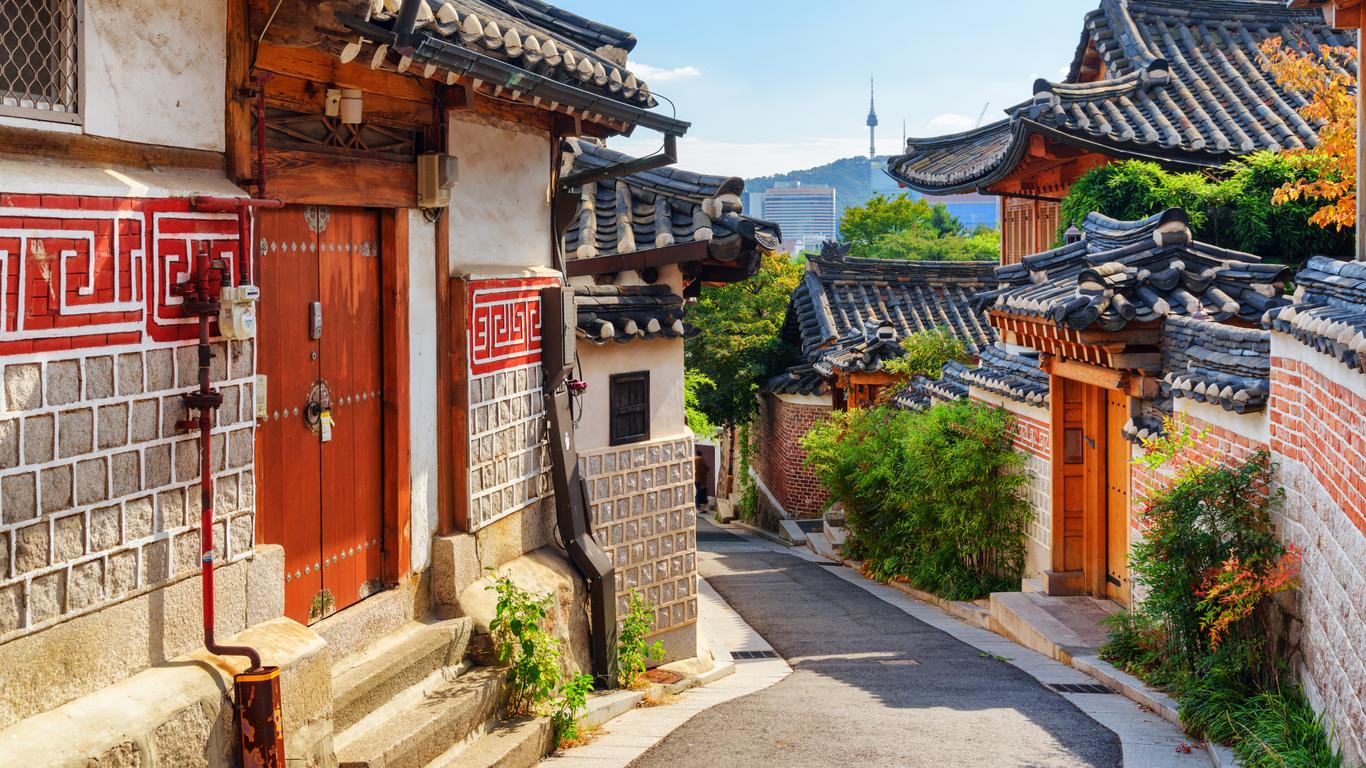
Find cheap flights to South Korea from $458
This is the cheapest one-way flight price found by a kayak user in the last 72 hours by searching for a flight from the united states to south korea departing on 10/1. fares are subject to change and may not be available on all flights or dates of travel. click the price to replicate the search for this deal., search hundreds of travel sites at once for deals on flights to south korea.
Save 22% or more Compare multiple travel sites with one search.
Track prices Not ready to book? Create a price alert for when prices drop.
Filter your deals Choose cabin class, free Wi-Fi and more.
Bundle and save Save money when you bundle your flight + hotel.
Best South Korea Flight Deals
Cheapest round-trip prices found by our users on KAYAK in the last 72 hours
Good to know
Faqs - booking south korea flights, which nearby cities are accessible to visitors arriving at the gimpo international airport (gmp) in south korea.
Travelers are able to explore a few additional sites close to GMP Airport. You can take a taxi, hire a car, or take public transit from the GMP Airport to the adjacent cities of Bucheon, Gwangmyeong, Goyang, and Incheon. Each of the aforementioned cities' central business districts are fewer than 19 miles from GMP.
If I want to be close to sporting events in South Korea, which airport should I use as my arrival point?
When visiting South Korea, American sports enthusiasts should think about flying into Gimhae International Airport (PUS). Busan Asiad Main Stadium, Gudeok Stadium, and Sajik Baseball Stadium are stadiums close to PUS that hosts international and domestic sporting events, particularly on weekends.
Are there any specific services or rules for bringing pets on the flight to KR0 from USO?
Yes. When traveling to South Korea on the USO-KR0 route, passengers do not need to worry about the security of their dogs. The majority of US airports, like Los Angeles International Airport (LAX) and JFK, that provide USA-South Korea flights permit visitors to enter the airport with their pets.
Which airport in the northwest of the United States has the most visitors going to South Korea?
The majority of Americans traveling from the country's northwest to South Korea prefer to fly through Seattle-Tacoma International Airport (SEA). Unfortunately, there are currently no direct flights connecting SEA with KR0. Passengers can only take indirect flights.
Are there nonstop flights to South Korea?
There are several nonstop flights to South Korea from US cities like Los Angeles, Seattle, San Francisco, Honolulu, Chicago, New York and other major cities, but only if you’re traveling to Seoul. Flying to other areas in Korea from the US will involve at least one stop, with common layover points including Seoul, Taipei and Hong Kong.
Is a visa necessary to visit South Korea?
United States citizens can visit South Korea for up to 90 days without a visa; however, you must present a passport that’s valid for the entire duration of your stay when you arrive in South Korea.
Where should I fly into South Korea to be convenient to Japan?
If you’ll be traveling on to Japan after spending time in South Korea, flying to Busan will set you up for a convenient onward flight. Busan is located on the southern coast of South Korea and is located only 519 mi away from Japan. Flights between Busan and Fukuoka are generally less than 1h long and operate via Air Busan, Korean Air and Jeju Air.
Which Seoul airport should I fly into?
There are two large airports in Seoul: Seoul Incheon Airport (ICN) and Gimpo Airport (GMP). Incheon is a little further away from Seoul than Gimpo, but you’re unlikely to find a flight from the United States that arrives in Gimpo, often making it the only choice unless you’re making a stop between the US and South Korea.
How long is the flight to South Korea?
An average nonstop flight from the United States to South Korea takes 17h 34m, covering a distance of 6497 miles. The most popular route is Los Angeles - Incheon with an average flight time of 12h 55m.
What is the cheapest flight to South Korea?
The cheapest ticket to South Korea from the United States found in the last 72 hours was $461 one-way, and $795 round-trip. The most popular route is Los Angeles to Incheon Intl and the cheapest round-trip airline ticket found on this route in the last 72 hours was $853.
Which airlines fly to South Korea?
Korean Air, Delta & Asiana Airlines fly the most frequently from the United States to South Korea.
What are the most popular destinations in South Korea?
The next most popular destinations are Busan (1%) and Daegu (0.5%). Searches for flights to Jeju City (0.2%), to Cheongju (0.1%) and to Ulsan (0.0%) are also popular.
How does KAYAK’s flight Price Forecast tool help me choose the right time to buy?
KAYAK’s flight Price Forecast tool uses historical data to determine whether the price for a given destination and date is likely to change within 7 days, so travelers know whether to wait or book now.
Top tips for finding cheap flights to South Korea
- Enter your preferred departure airport and travel dates into the search form above to unlock the latest South Korea flight deals.
- The majority of Americans who visit South Korea choose to fly through John F. Kennedy International Airport (JFK). This airport is well-liked since it serves as a hub for so many reputable airlines that fly internationally from the United States. Due to pricing competition, travelers departing from this airport for South Korea are likely to receive ticket discounts.
- If your flight from the US is planned to land in South Korea at night and you're taking the Incheon International Airport (ICN) from the JFK route, you might want to think about reserving a hotel next to the ICN Airport. Choosing the Incheon Airport Transit Hotel, located at Terminal 1, is one of the best considerations. This airport provides a complimentary shuttle service to and from ICN Airport.
- The best option for US parents who want to take their kids on holiday to South Korea is likely to be a flight on Korean Air 86, Asiana 221, or Korean Air 82 through JFK to ICN. Non-stop flights from the USA to South Korea are available year-round from this airport. There is a lower likelihood that your children will be exhausted before landing in South Korea from the USA thanks to the availability of direct flights, which make it possible for travelers to get there in the minimum period of time.
- The best spot for travelers to unwind while waiting for a flight to their intended destinations is in airport lounges. The majority of low-cost American passengers who want to unwind in an airport lounge on their way to South Korea opt to depart through Salt Lake City International Airport (SLC). Travelers on a tight budget can comfortably relax at Delta Sky Club at the SLC Airport, which provides first-rate amenities at a competitive price.
- Passengers suffering from mobility challenges need to think about departing from JFK Airport and landing at Jeju International Airport (CJU) when going to South Korea. Visitors with particular requirements and mobility issues can request free aid with their bags, medical support, plus wheelchair transfer from a cab to an aircraft at JFK and CJU Airports.
- When you’re booking your flight to South Korea from the US, there are a few different cities you can fly into. Seoul and Busan are the biggest cities in South Korea, making them popular choices to fly into. Flying into Seoul will give you better access to northern South Korea and Busan will give you better access to southern South Korea.
- While some hotels in South Korea may accept US Dollars, you can often get a better rate by using the country’s local currency: The South Korean Won. Visa and Mastercard are accepted by most businesses, though it can be handy to have some cash on hand for street vendors and other instances where cards aren’t readily accepted.
- For travelers looking to visit the border with North Korea, you’ll benefit by flying into Seoul. Most of the international flight traffic from South Korea to the United States comes through Seoul and flying there puts you in close proximity to the DMZ. From Seoul you can take the designated DMZ Peace Train straight to the Demilitarized Zone.
- If you’re looking to fly into a city where you can have equal access to the rest of South Korea, it can be handy to fly into Daegu. Not only is Daegu a popular destination and a major South Korean city, it is located conveniently towards the center of the country.
- Jeju Island is one of South Korea’s most popular tourist destinations outside of the major cities, and there are a few different ways to get there. You can take a flight to Jeju from the US, with a likely layover in Taipei or Seoul, or you can fly to Busan and take a ferry the rest of the way.
Top 5 airlines flying to South Korea
The flight crews were extremely professional, helpful, and courteous. Departure and arrival times were accurate. No delay. I will use K airline again. Thanks
We were seated at the back and that was very uncomfortable for me with the turbulence we experienced on our way to Chicago.
I enjoyed flying on Korean Air. The service was great and the food was yummy. They served white fish.
I enjoyed flying on Korean Air. The service was great and the food was yummy, especially the bibimbap and cold spicy noodles. The only thing that bummed me out on this red-eye flight was that my seat did not properly recline so I was not able to sleep.
On time and flight crew are always so happy to help and always smiling unlike other airlines.
Great crew, decent food Charging plugs were broken on both seats next to me. Only the USB port was available, and that charges, very, very slowly. Seat was also broken, it would not lock into position when reclining.
Korean Air had great service and the Bibimbap dish was the best airplane food I’ve ever had. It was a long flight so in between the two meals they served customers could get Shin ramen. The flight attendants let my children use a pair of nice headphones for the flight and had earbuds and slippers for all the adults. The flight was long but the time passed by relatively quickly because they have many great shows in their entertainment TV. I watched the BTS Love Yourself and Speak Yourself concerts 💜
Stewardess are nice. Food could have been better and should have a better dessert. They do not offer scotch or beer. You have to ask for it. I also was not happy that you do not serve ginger ale and or cranberry juice. This is my first time that an international flight do not have this. I go home overseas every year and when I travel through ANA, Delta, Qatar, JAL, Asiana Air, United Air. they all serve this two very famous drink. You do not have a great snack tray.
You did not put me on a Korean Air flight! so I do not have nothing to say
Wonderful cabin crew!!!!! Food was poor, in flight entertainment was just ok. They need to serve more water on a 15 hour flight--we were dehydrated and kept asking for water.
Plane and service were great. The entertainment is only for Koreans. Wish there were vegetarian options for food. All in all pleasantly surprised. Economy premium was quite good.
This form doesn’t work. Can’t type in, had to copy-paste. The crew constantly telling everyone about minor things is unnecessary. Did you put the belt on, push your bag more under the seat… The seat space was good for tall people, the food was decent for airplane.
Roomy seats for the given price! I couldn’t ask more!
Great airline, but there was no English entertainment (movies or shows)
Check-in was an absolute disaster, taking more than an hour and half because they offered no online check-in and Kiosks were not available to use. In-flight entertainment was exclusively Korean media with a selection of only 5 or 6 movies to choose from. Korean television shows were also available. The food was lackluster. My chicken and tomatoes had 3 small pieces of chicken next to a mountain of soggy wedge potato fries. The seats were more comfortable than other airlines I’ve flown with and the staff aboard was extremely pleasant and helpful.
One of our luggage items was damaged during our flight to Newark from Incheon. Although our email communication was not responded to, when discussing the matter with the staff at the Newark checkin before our return flight to Incheon, we were provided with a free replacement luggage item. This customer service was, overall, very satisfactory.
I would have enjoyed some hot tea, preferably green tea, but they only serve hot coffee.
10 Hours delay on departure of the return flight and in-flight Wi-Fi was not available entire flying time all that caused monetary loss to my business.
Some favorite food ran out of service and I have to eat what was left available. Also I had to drink cold red wind! Why could not have been kept in room temperature?
It was a good flight, with great crew and service. I will definitely fly with them again. Excellent experience and very friendly. Excellent value.
Flight attendants rude, they disappear for almost 3 hours not doing rounds to see what people needed. The laboratories were full of empty water cups, because they never come back to collect them.
Flew on an Airbus 350-900. Excellent aircraft properly cleaned and serviced. Flight crew was excellent plane departed and arrived on time. The A350 has excellent air circulation far better than the 777. I would recommend Asiana to anyone looking to fly in a clean comfortable environment. This is my second round trip flight from New York to Bangkok via Asiana and I will book Asiana again!
I could not choose my seat prior to check in
I had the most wonderful experience from CEB bag drop through deplaning. The staff, the aircraft, food, and cabin crew were all amazing. I want to give a kudos to Marky from Mactan Cebu's Asiana airport staff for his exceptional customer service and assistance.
JetBlue's check-in was great, but there was an in-flight attendant who was very rude and unkind. I didn't realize that the bathrooms were already locked 30 mins prior to landing and needed to use the restroom. Instead of politely asking me to return, she rudely told me, 'NO, bathrooms are locked! Go back to your seat!' The JetBlue flight was more than an hour delay, which made me almost miss my connecting flight with Asiana. I understand the reasoning, but the action they took to get a hold of maintenance was time consuming. It took them more than 30 mins to get a hold of maintenance and for maintenance to get started. The Asiana flight and crew were wonderful, in general. They waited for us who were delayed from the previous flight before they took off and were very kind to take my checked baggage's info. Seats were a little uncomfortable for such long flight, but service and flight attendants were great! However, my 3 checked baggages are missing! They're lost somewhere in the transition. I'm writing this review 3 days after my arrival to the Philippines, and my 3 checked baggages, where my wedding dress is, are all still missing! I and the CEB airport crew have sent multiple emails to both JetBlue and Asiana, and neither has responded to any of our emails. Although, I was able to get in contact with JetBlue's Interline Department who confirmed that the bags were turned over to Asiana without confirmation details.
The full flat bed was not that comfortable, hard and lumpy., too much space wasted with those bulky walls and divisions instead of making the bed 3-4 inches wider. The compartment where you put your feet is like a shoebox, poor design. Toilets of A350 are just too small, sink is too small
Aside from a LOT of turbulence the flight was perfect! The flight crew was superb and the food was delicious!
The seats (legroom) are tight and chairs cushion is stiff (not comfortable). The crew was courteous, professional and friendly. There was no food / snack for this flight (very short flight, but still would be nice to provide some snack for the enjoyment).
FA were very great, plane was A350 new and clean
The crew attended to my needs and the foods served are delivious.
On my way home I had a layover. The flight from ATL to CLT was amended 5x while I was waiting. I could have driven home sooner. Overall from Dallas, Tx to Charlotte, NC I started my trip at 4:30pm, I didn’t get home until past midnight. I know things happen, but 5x to make me run back and forth in an airport from different terminals is excessive. I also upgraded to comfort + , I didn’t feel it was worth it. There was no benefit
On my way home I had a layover. The flight from ATL to CLT was amended 5x while I was waiting. I could have driven home sooner. Overall from Dallas, Tx to Charlotte, NC I started my trip at 4:30pm, I didn’t get home until past midnight. I know things happen, but 5x to make me run back and forth in an airport from different terminals is excessive.
They did a fine job. Can't wait to use Delta in the future.
There was a loud squeaky sound the whole time we were flying.
Had a broken tray in business class. Crew just shrugged it off.
Seat back monitors and outlets were dead and not working.
Everything was great except for the seat. The backrest would not stay in the upright position.
I usually have a positive experience with Delta. Complimentary upgrades are always nice!
Flight delayed about 2 hrs so it made it a VERY late night
The crew, food, and entertainment were all good. But my screen had some sort of bug where if I turned it off, it would turn back on after 2-5 minutes. At full brightness. It made it very hard to get any shut-eye on the overnight flight. Also, the older Boeing plane, while nicely cared for (and no doors fell off 😅👏) doesn't have the nice air quality of newer planes. So I felt a bit greasy by the time we landed in Sweden.
Those seats were way too narrow. I had the middle seat, one person was a very skinny person and we still couldn’t avoid touching each other anytime one of us moved. The other person was larger and we were basically sitting in each others lap the entire flight. There was zero entertainment. The flight was long enough to justify tvs, but no. Gotta sit there in your infant seat and twiddle your thumbs.
The Flight attendant had an attitude and didn't allow anyone any time to prepare for landing despite being absent throughout the entire trip
Flight boarded without pilots. Sat on plane for 3 hrs. after over an hour late boarding. Plane never took off. Had to deplane near midnight. Line for rebooking was 3 hours + long. I had to leave.
The flight was great but board was a nightmare. The gate was changed 4 times during the layover period
The experience was great and much better than the flight going out. of course I was in first class but the service was excellent
Cold air blew constantly on my legs almost making me numb.
Ac was broken so we deplaned, waited 2 hours, taxiing for takeoff they said the plane would not fly so we went back to the gate and got a new plane which took another hour. In all a 4 hour delay for an 80 min flight.
Missed the flight because of them and up geting a rental car
Delayd flight out of atl as always miss my conection in dfw no flight untill next day
Comfort of seats, ease of boarding. Food selection could be better
Book Cheap South Korea Plane Tickets
Recent round-trip flight deals, search by stops, search by airline, search by price, recent one-way flight deals, last minute flights to south korea, last minute flight, train and bus deals, flights to south korea, return flight deals:.
South Korea - United States
Cabin classes:
Browse origins:.
- Flights »
- United States
Browse destinations:
- Worldwide »
- South Korea
- Travel Planning Guide
Travel Budget for Seoul Visit Seoul on a Budget or Travel in Style
- Seoul Costs

- Seoul Hotel Prices
- Best Hotels for First Time Visitors in Seoul
- Best Hotels for One Night in Seoul
- Best Family-Friendly Hotels in Seoul
- Best Romantic Hotels for Couples in Seoul
- Best Cheap Hotels in Seoul
- Best Luxury Hotels in Seoul
- Best Business Hotels in Seoul
- Best Hotels for a Weekend Getaway in Seoul
- Best Hotels for One Week in Seoul
- Is Seoul Expensive?
- How much does a trip to Seoul cost?
- 3 Days in Seoul: Travel Itinerary
- Is Seoul Worth Visiting?
- South Korea Costs
- Pyeongchang
- Busan (Pusan)
- Cheju (Jeju)
- How much does it cost to travel to Seoul? (Average Daily Cost)
- Seoul trip costs: one week, two weeks, one month
Is Seoul expensive to visit?
- How much do I need for a trip to Seoul?
- Accommodation, Food, Entertainment, and Transportation Costs
- Travel Guide
How much does it cost to travel to Seoul?
You should plan to spend around $107 (₩148,114) per day on your vacation in Seoul. This is the average daily price based on the expenses of other visitors.
Past travelers have spent, on average for one day:
- $30 (₩41,265) on meals
- $15 (₩21,287) on local transportation
- $108 (₩149,579) on hotels
A one week trip to Seoul for two people costs, on average, $1,501 (₩2,073,591) . This includes accommodation, food, local transportation, and sightseeing.
All of these average travel prices have been collected from other travelers to help you plan your own travel budget.
- Travel Style: All Budget (Cheap) Mid-Range Luxury (High-End)
- Average Daily Cost Per person, per day $ 107 ₩ 148,114
- One Week Per person $ 751 ₩ 1,036,796
- 2 Weeks Per person $ 1,501 ₩ 2,073,591
- One Month Per person $ 3,217 ₩ 4,443,410
- One Week For a couple $ 1,501 ₩ 2,073,591
- 2 Weeks For a couple $ 3,003 ₩ 4,147,183
- One Month For a couple $ 6,434 ₩ 8,886,820
How much does a one week, two week, or one month trip to Seoul cost?
A one week trip to Seoul usually costs around $751 (₩1,036,796) for one person and $1,501 (₩2,073,591) for two people. This includes accommodation, food, local transportation, and sightseeing.
A two week trip to Seoul on average costs around $1,501 (₩2,073,591) for one person and $3,003 (₩4,147,183) for two people. This cost includes accommodation, food, local transportation, and sightseeing.
Please note, prices can vary based on your travel style, speed, and other variables. If you're traveling as a family of three or four people, the price per person often goes down because kid's tickets are cheaper and hotel rooms can be shared. If you travel slower over a longer period of time then your daily budget will also go down. Two people traveling together for one month in Seoul will often have a lower daily budget per person than one person traveling alone for one week.
A one month trip to Seoul on average costs around $3,217 (₩4,443,410) for one person and $6,434 (₩8,886,820) for two people. The more places you visit, the higher the daily price will become due to increased transportation costs.
Independent Travel
Traveling Independently to Seoul has many benefits including affordabilty, freedom, flexibility, and the opportunity to control your own experiences.
All of the travel costs below are based on the experiences of other independent travelers.
Prices in Seoul are reasonable and comparable to your average travel destination. Hotels, food, and sightseeing are generally within normal price ranges.
Within Asia, Seoul is a somewhat more expensive destination compared to other places. It is in the top 25% of cities in Asia for its travel costs. While some cities in the region are more expensive, Seoul is generally more expensive than most.
For more details, and to find out if it's within your travel budget, see Is Seoul Expensive?
How much money do I need for a trip to Seoul?
The average Seoul trip cost is broken down by category here for independent travelers. All of these Seoul travel prices are calculated from the budgets of real travelers.
Accommodation Budget in Seoul
Average daily costs.
Calculated from travelers like you
The average price paid for one person for accommodation in Seoul is $54 (₩74,789). For two people sharing a typical double-occupancy hotel room, the average price paid for a hotel room in Seoul is $108 (₩149,579). This cost is from the reported spending of actual travelers.
- Accommodation 1 Hotel or hostel for one person $ 54 ₩ 74,789
- Accommodation 1 Typical double-occupancy room $ 108 ₩ 149,579
Hotel Prices in Seoul
Looking for a hotel in Seoul? Prices vary by location, date, season, and the level of luxury. See below for options.
Find the best hotel for your travel style.
Actual Hotel Prices The average hotel room price in Seoul based on data provided by Kayak for actual hotel rooms is $45. (Prices in U.S. Dollars, before taxes & fees.)
Kayak helps you find the best prices for hotels, flights, and rental cars for destinations around the world.
Recommended Properties
- BJ Hotel Budget Hotel - Kayak $ 26
- The Shilla Seoul Luxury Hotel - Kayak $ 212
Transportation Budget in Seoul
The cost of a taxi ride in Seoul is significantly more than public transportation. On average, past travelers have spent $15 (₩21,287) per person, per day, on local transportation in Seoul.
- Transportation 1 Taxis, local buses, subway, etc. $ 15 ₩ 21,287
Recommended Services
- Airport Private Transfer : Seoul Hotel to Incheon International Airport (ICN) Viator $ 78
- Incheon Airport Private Transfer between Seoul City Viator $ 98
Flights to Seoul
Rental cars in seoul, what did other people spend on transportation in seoul.
Typical prices for Transportation in Seoul are listed below. These actual costs are from real travelers and can give you an idea of the prices in Seoul, but your costs will vary based on your travel style and the place where the purchase was made.
- Subway Card ₩ 5,000
- Short Taxi Ride ₩ 7,000
- Metro Ride ₩ 1,350
- Seoul City Pass Plus ₩ 10,000
Food Budget in Seoul
While meal prices in Seoul can vary, the average cost of food in Seoul is $30 (₩41,265) per day. Based on the spending habits of previous travelers, when dining out an average meal in Seoul should cost around $12 (₩16,506) per person. Breakfast prices are usually a little cheaper than lunch or dinner. The price of food in sit-down restaurants in Seoul is often higher than fast food prices or street food prices.
- Food 2 Meals for one day $ 30 ₩ 41,265
Recommended
- Night Market Food Tour Viator $ 72
- Seoul Ultimate Food Tour Viator $ 65
What did other people spend on Food in Seoul?
Typical prices for Food in Seoul are listed below. These actual costs are from real travelers and can give you an idea of the prices in Seoul, but your costs will vary based on your travel style and the place where the purchase was made.
- Rice with Kimchi & Bacon ₩ 6,000
- Waffle ₩ 1,000
- Dippin' Dots ₩ 2,000
- Chicken Fried Rice ₩ 5,500
- Chicken Stick ₩ 2,000
- Drinking Yoghurt & Mi Chew ₩ 1,900
- Lunch Buffet ₩ 6,000
- Donut ₩ 1,000
Entertainment Budget in Seoul
Entertainment and activities in Seoul typically cost an average of $26 (₩36,419) per person, per day based on the spending of previous travelers. This includes fees paid for admission tickets to museums and attractions, day tours, and other sightseeing expenses.
- Entertainment 1 Entrance tickets, shows, etc. $ 26 ₩ 36,419
The Go City Seoul Pass offers great discounts on attractions in Seoul. With the Go City Explorer pass, you can choose to visit specific sights and attractions at a discount. Or, you can visit as many included attractions as you like with a multi-day All-Inclusive Pass. The average visitor saves 30% off of the regular admission prices.
Recommended Activities
- Mini Van Private Guided Tour in Seoul (Optional Layover) Viator $ 220
- Rare Chance : Korea's White House Walking Tour Viator $ 36
What did other people spend on Entertainment in Seoul?
Typical prices for Entertainment in Seoul are listed below. These actual costs are from real travelers and can give you an idea of the prices in Seoul, but your costs will vary based on your travel style and the place where the purchase was made.
- Palace Tickets ₩ 8,000
- Movie Ticket ₩ 8,000
- Kimchi Museum ₩ 3,000
Tips and Handouts Budget in Seoul
The average cost for Tips and Handouts in Seoul is $1.81 (₩2,500) per day. The usual amount for a tip in Seoul is 5% - 15% .
- Tips and Handouts 1 For guides or service providers $ 1.81 ₩ 2,500
Alcohol Budget in Seoul
The average person spends about $12 (₩16,662) on alcoholic beverages in Seoul per day. The more you spend on alcohol, the more fun you might be having despite your higher budget.
- Alcohol 2 Drinks for one day $ 12 ₩ 16,662
- Soju Tasting at Distillery - story of 3 pigs Viator $ 42
- Seoul Pub Crawl by Absolute Viator $ 20
Water Budget in Seoul
On average, people spend $2.02 (₩2,796) on bottled water in Seoul per day. The public water in Seoul is considered safe to drink.
- Water 2 Bottled water for one day $ 2.02 ₩ 2,796
Related Articles
Seoul on a budget.
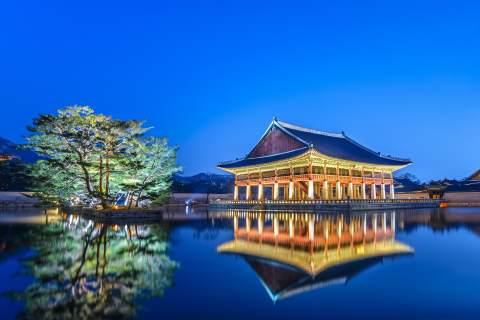
Neighborhoods
Food and dining, transportation, more related articles.
We've been gathering travel costs from tens of thousands of actual travelers since 2010, and we use the data to calculate average daily travel costs for destinations around the world. We also systematically analyze the prices of hotels, hostels, and tours from travel providers such as Kayak, HostelWorld, TourRadar, Viator, and others. This combination of expenses from actual travelers, combined with pricing data from major travel companies, gives us a uniqe insight into the overall cost of travel for thousands of cities in countries around the world. You can see more here: How it Works .
Subscribe to our Newsletter
By signing up for our email newsletter, you will receive occasional updates from us with sales and discounts from major travel companies , plus tips and advice from experienced budget travelers!

Search for Travel Costs
Some of the links on this website are sponsored or affiliate links which help to financially support this site. By clicking the link and making a purchase, we may receive a small commission, but this does not affect the price of your purchase.
Travel Cost Data
You are welcome to reference or display our travel costs on your website as long as you provide a link back to this page .
A Simple Link
For a basic link, you can copy and paste the HTML link code or this page's address.
Travel Cost Widget
To display all of the data, copy and paste the code below to display our travel cost widget . Make sure that you keep the link back to our website intact.
- Privacy / Terms of Use
- Activities, Day Trips, Things To Do, and Excursions
Update April 12, 2024
Information for u.s. citizens in the middle east.
- Travel Advisories |
- Contact Us |
- MyTravelGov |
Find U.S. Embassies & Consulates
Travel.state.gov, congressional liaison, special issuance agency, u.s. passports, international travel, intercountry adoption, international parental child abduction, records and authentications, popular links, travel advisories, mytravelgov, stay connected, legal resources, legal information, info for u.s. law enforcement, replace or certify documents.
Before You Go
Learn About Your Destination
While Abroad
Emergencies
Share this page:
South Korea
Travel Advisory July 24, 2023
South korea - level 1: exercise normal precautions.
Reissued with obsolete COVID-19 page links removed.
Exercise normal precautions in South Korea.
Read the country information page for additional information on travel to South Korea.
If you decide to travel to South Korea:
- Enroll in the Smart Traveler Enrollment Program (STEP) to receive Alerts and make it easier to locate you in an emergency.
- Follow the Department of State on Facebook and Twitter .
- Review the Country Security Report for South Korea.
- Visit the CDC page for the latest Travel Health Information related to your travel.
- Prepare a contingency plan for emergency situations. Review the Traveler’s Checklist .
Embassy Messages
View Alerts and Messages Archive
Quick Facts
Must be valid at time of entry
One page per stamp
No – From April 1, 2023, to December 31, 2024, the Korean Electronic Travel Authorization (K-ETA) is not required for US citizens traveling for short-term business or tourism purposes.
Embassies and Consulates
U.s. embassy seoul.
188 Sejong-daero, Jongno-gu, Seoul 03141, Korea Telephone: +(82) (2) 397-4114 (from within Korea, dial 02-397-4114) DSN:721-4114 Fax: +(82) (2) 397-4101 Email: [email protected]
U.S. Consulate in Busan
Lotte Gold Rose Building #612, Jungang-daero 993, Jin-gu Busan 47209, Korea Telephone: (+82) 51-863-0731 Email: [email protected]
The Embassy and Consulate are closed on weekends and on American and Korean holidays . Emergency After-Hours Telephone: +82 (2) 397-4114.
Destination Description
Learn about the U.S. relationship to countries around the world.
Entry, Exit and Visa Requirements
- You must have a valid U.S. passport to enter Korea. From April 1, 2023, to December 31, 2024, the Korean Electronic Travel Authorization (K-ETA) is not required for US citizens for stays of 90 days or less that are for tourism or business purposes.
- Visa required for all other purposes, including employment, teaching English, and for stays longer than 90 days.
Exceeding your authorized stay or not possessing a valid visa may result in detention and fines.
- In the event of an overstay, apply for a visa extension from the Korea Immigration Service (KIS) before attempting to leave the country. Also consult with KIS regarding changes in visa category.
Military Personnel/DOD and their families on orders:
- Consult DOD Foreign Clearance Guide , and follow all instructions.
- Enter Korea with DOD identification and travel orders.
- Do not transit other countries such as China without a passport and appropriate visas.
- Family Members/Dependents of Military Personnel/DOD on orders must present upon arrival passports valid for at least six months .
U.S. Government Executive Branch personnel on official business and DOD personnel assigned to the U.S. Embassy (Including family members/dependents):
- Employes assigned to Mission Korea should enter Korea with a diplomatic or official passport and a diplomatic or official Korean visa obtained through their sponsoring agency. Check with your sponsoring agency about other requirements.
- TDY visitors traveling to Korea for up to 90 days on diplomatic or official passports do not require Korean visas and do not require a K-ETA. TDY visitors must obtain country clearance using Department of State's eCC system or DOD APACS system .
HIV/AIDS Restriction: The Department of State is unaware of any such entry restrictions for visitors or foreign residents in Korea.
- Visit the Embassy of Korea website for current visa information. Please read our Customs Information page .
COVID-19 Requirements :
- There are no COVID-related entry requirements for U.S. citizens.
- Travel regulations and restrictions are subject to change, sometimes with little notice. You should review the information available on your nearest Korean Embassy or Consulate’s webpage before traveling.
Safety and Security
Public Demonstrations: Demonstrations and rallies are common in South Korea, particularly near the U.S. Embassy, Seoul City Hall, and areas surrounding military installations. You should avoid areas where demonstrations are taking place and exercise caution in the vicinity of any large gatherings, protests, or rallies. Even demonstrations intended to be peaceful can turn confrontational and escalate into violence.
North Korea (The Democratic People’s Republic of Korea, DPRK): An armistice agreement, monitored by the United Nations, has maintained general peace on the Korean peninsula since 1953. Tensions occasionally flare up because of provocative acts by North Korea, including ballistic missile and nuclear tests and limited armed incursions into ROK-held territory. Some provocations have escalated into geographically limited skirmishes. South Korea routinely conducts military training exercises and civil defense drills. North Korea often issues strongly-worded and threatening messages, frequently in connection with these exercises. Please see our Fact Sheet on North Korea .
Weather-related Events: Heavy rains and flooding may occur during the June - August monsoon season or the May - November typhoon season. See general information about natural disaster preparedness at the U.S. Federal Emergency Management Agency (FEMA) website.
Enroll in the Smart Traveler Enrollment Program ( STEP ): To receive security messages by email and make it easier to locate you in an emergency, register in STEP.
If the Embassy becomes aware of any specific and credible threat to the safety and security of U.S. citizens, we will inform you through our website, social media, and email.
Crime: For most visitors, South Korea remains a very safe country. Common crimes occur more frequently in major metropolitan areas, tourist sites, and crowded markets.
- Take routine safety precautions.
- Pay attention to your surroundings.
- Report any concerns to local police.
Violent crime is not common; however, remain vigilant:
- Exercise caution in crowded entertainment, nightlife, and shopping districts.
- If traveling at night, consider traveling in groups.
- Use legitimate taxis or public transportation only.
Victims of Crime: Call 112 for emergency assistance or to report a crime to local authorities. Call 02-397-4114 to contact the U.S. Embassy. We can:
- Help you find appropriate medical care;
- Assist you in reporting a crime to police;
- Contact relatives or friends on your behalf;
- Explain Korean judicial procedures in general terms;
- Provide an emergency loan for repatriation to the United States and/or limited medical support in cases of destitution;
- Help you find accommodations and flight arrangements to the United States;
- Replace a lost or stolen passport.
Sexual Assault: The Embassy regularly receives reports of sexual assault from U.S. citizens. Most cases involved young women assaulted by acquaintances they met on social media, dating, or messaging apps. Alcohol is often involved, and Korea’s low overall crime can create a false sense of security. Specialized hospital units and police are available in South Korea to assist victims, however services in English and responsiveness to the crime are not always consistent. In general, sex crimes are not punished as harshly in South Korea as in the United States and the road to prosecution is a challenging one for victims.
Domestic Violence: Victim’s assistance resources or battered women’s shelters exist in Seoul and other urban areas but may be limited in rural areas. Most are government administered and require a police referral. Call 112 for emergency assistance or 1366 to reach Korea’s 24-hour domestic violence hotline. Victims may also contact the Embassy, tel. (+82) 2-397-4114.
Lost or Stolen Passports: If your passport is stolen, file a report at the nearest police station.
Don't buy counterfeit and pirated goods, even if widely available. It is against South Korean law to purchase these goods and against U.S. law to bring them into the United States. The Computer Crime and Intellectual Property Division in the U.S. Department of Justice has more information.
Avoid fraud and scams: See Department of State and FBI websites for more information.
Tourism: The tourism industry is generally regulated and rules with regard to best practices and safety inspections are regularly enforced. Hazardous areas/activities are identified with appropriate signage and professional staff is typically on hand in support of organized activities. In the event of an injury, appropriate medical treatment is widely available throughout the country. Outside of a major metropolitan center, it may take more time for first responders and medical professionals to stabilize a patient and provide life-saving assistance. U.S. citizens are encouraged to purchase medical evacuation insurance. See our webpage for more information on insurance providers for overseas coverage .
Local Laws & Special Circumstances
Criminal Penalties: While in Korea, you are subject to local laws. If you violate Korean laws, you may be expelled, arrested, or imprisoned. Be aware that:
- Immigration violations can lead to arrest, fines, and deportation.
- There is little tolerance for illegal drugs.
- If you mail illegal drugs to/ from Korea, you will be prosecuted.
- Commercial disputes may lead to criminal charges being filed under local laws.
Be aware that some crimes are prosecutable in the United States, regardless of local law. For examples, see our website on crimes against minors abroad and the Department of Justice website.
Arrest Notification: If you are arrested or detained, ask officials to notify the Embassy. See our webpage for further information.
SPECIAL CIRCUMSTANCES
Dual Nationality and Military Conscription: Dual national males (including U.S. service members) may be subject to compulsory military service. If you have family ties to South Korea, consult the nearest Korean Embassy or Consulate or the Korean Military Manpower Administration regarding potential citizenship obligations before entering South Korea .
Passport Seizures and Exit Bans: If you are involved in a criminal investigation or commercial dispute, authorities may seize your passport and/or block your departure. While we may reissue a passport, we cannot lift an exit ban.
Exit Permits: Exit permits are not generally required. However, if a parent requests a travel restriction on his/her child, Korean authorities may prevent that child from departing even when traveling with the other parent. As of June 1, 2020, foreigners who are long-term residents of the ROK are required to obtain a re-entry permit four business days prior to departure from Korea. The permits are available online through an e-application at the www.hikorea.go.kr website.
International Child Abduction: See our website for information related to the prevention of international child abduction .
Working in South Korea: If working, including teaching or modeling, you must enter with the appropriate work visa. It is not possible to change your visa status without leaving the country. If you begin work without the appropriate visa, you may be arrested, fined, and/or deported. If you are working without a valid work permit and get into a contractual dispute with your employer, you have little legal recourse.
Students: See our Students Abroad page and FBI travel tips .
Women Travelers: See our travel tips for Women Travelers .
ROK National Security Law: Authorities may detain, arrest, and imprison persons believed to have committed acts intended to endanger the “security of the state,” including statements deemed to praise the political system and/or officials of the DPRK.
Customs Regulations: There is strict enforcement of regulations on importing and exporting items such as firearms, narcotics and prescription drugs, non-prescription health supplements, radio equipment, and gold. Importation of materials deemed to be obscene, subversive, or harmful to the public peace is also restricted.
- Amphetamines are illegal in Korea. Do not bring amphetamines or other prescription narcotics into the country without obtaining advance permission in writing from the Ministry of Food and Drug Safety. See the U.S. Embassy Seoul, Health Information page .
- Traveling with Pets: See Korea’s Animal and Plant Quarantine Agency website.
See the Korean Customs Regulations website for complete information.
LGBTI Travelers: Consensual same-sex sexual activity is not criminalized. Korea is a conservative country in regards to LGBTI issues. However, there are an increasing number of LGBTI-oriented clubs, festivals and NGOs advocating for LGBTI issues. The ROK National Human Rights Commission Act prohibits discrimination against individuals because of their sexual orientation, but there are no laws specifying punishment for persons found to have discriminated on this basis. Same-sex marriages are not recognized. Korean citizens can legally change their gender identity.
See our LGBTI Travel Information page and section 6 of the Department of State's Human Rights report for further details.
Mobility Issues: Korean law mandates access to transportation, communication, and public buildings. Cross walks typically have audio and visual signals. Older buildings and streets are generally less accessible than modern ones. Metro cars and buses in Seoul offer priority seating for the disabled and most metro stations have elevators. Metro platforms include Korean Braille information. Contact individual bus companies and subway associations for specific information. Foreign residents are eligible for disability assistance from local ward offices; assistance varies by ward.
Quality of Care : Western-style medical facilities are available in most large cities. However, not all doctors and staff, are proficient in English. A list of hospitals and medical specialists who speak English is available on our website. For emergency ambulance service dial 119. Ambulance services are widely available. For information on medical evacuation from South Korea, please see the State Department’s brochure on Air Ambulance/MedEvac/Medical Escort Providers .
We do not pay medical bills. Be aware that U.S. Medicare does not apply overseas. Verify your health insurance coverage before traveling overseas. See our webpage for information on insurance providers for overseas coverage . In most cases, health care providers will require payment in advance of treatment or will not release a patient until hospital bills are paid. We strongly recommend supplemental insurance to include coverage for medical evacuation.
Medication: Carry prescription medication in original packaging, along with your doctor’s prescription. Most prescription medications, except psychotropic types, can be obtained at Korean pharmacies (brand names often differ). Local pharmacies will require a prescription from a Korean doctor.
Update vaccinations recommended by the U.S. Centers for Disease Control and Prevention.
For further health information go to:
- World Health Organization
- U.S. Centers for Disease Control and Prevention (CDC)
Travel and Transportation
Road Conditions and Safety: Roads are well-paved, traffic signals functional, and most drivers comply with basic traffic laws. South Korea has a significantly higher traffic fatality rate than the United States. Causes of accidents include excessive speed, frequent lane changes without signaling, running red lights, aggressive bus drivers, and weaving motorcyclists. It is recommended that you photo document any traffic accidents.
Be aware that motorcyclists may drive on sidewalks, and drivers do not always yield to pedestrians in marked crosswalks.
Traffic Laws include:
- International driving permit (or ROK license) is required for all drivers.
- Left-hand turns prohibited except with green arrow.
- Seat belts and car seats are mandatory.
- Motorcycle passengers must wear helmets.
- Automobile drivers are presumed to have some fault in accidents involving pedestrians.
- Expect long waits at police stations while police investigate any incidents.
- Police may take your passport or detain you during an investigation.
- Even if negligence is not proven, criminal charges may be filed.
- Blood-alcohol content of 0.03% or higher is considered legally intoxicated.
- Police regularly set up DUI checkpoints. Drivers are required to submit to breathalyzer tests; refusal can result in cancellation of your license.
For information about driver's permits, vehicle inspection, road tax, and mandatory insurance, refer to our Road Safety page . You may also visit the Korea Tourism Organization (KTO) website.
AVIATION SAFETY OVERSIGHT: The U.S. Federal Aviation Administration (FAA) has assessed the Government of the Republic of Korea's Civil Aviation Authority as being in compliance with International Civil Aviation Organization (ICAO) aviation safety standards for oversight of the ROK's air carrier operations. Further information may be found on the FAA's Safety Assessment Page .
Maritime Travel: Mariners planning travel to South Korea should check for U.S. maritime advisories and alerts at the U.S. Department of Transportation’s Maritime Security Communications with Industry Web Portal . Information may also be posted to the U.S. Coast Guard homeport website and as a broadcast warning on the National Geospatial-Intelligence Agency’s website .
For additional travel information
- Enroll in the Smart Traveler Enrollment Program (STEP) to receive security messages and make it easier to locate you in an emergency.
- Call us in Washington, D.C. at 1-888-407-4747 (toll-free in the United States and Canada) or 1-202-501-4444 (from all other countries) from 8:00 a.m. to 8:00 p.m., Eastern Standard Time, Monday through Friday (except U.S. federal holidays).
- See the State Department’s travel website for the Worldwide Caution and Travel Advisories .
- Follow us on Twitter and Facebook .
- See traveling safely abroad for useful travel tips.
South Korea was cited in the State Department’s 2022 Annual Report to Congress on International Child Abduction for demonstrating a pattern of non-compliance with respect to international parental child abduction. Review information about International Parental Child Abduction in South Korea. For additional IPCA-related information, please see the International Child Abduction Prevention and Return Act ( ICAPRA ) report.
Travel Advisory Levels
Assistance for u.s. citizens, south korea map, learn about your destination, enroll in step.

Subscribe to get up-to-date safety and security information and help us reach you in an emergency abroad.
Recommended Web Browsers: Microsoft Edge or Google Chrome.
Check passport expiration dates carefully for all travelers! Children’s passports are issued for 5 years, adult passports for 10 years.
Afghanistan
Antigua and Barbuda
Bonaire, Sint Eustatius, and Saba
Bosnia and Herzegovina
British Virgin Islands
Burkina Faso
Burma (Myanmar)
Cayman Islands
Central African Republic
Cote d Ivoire
Curaçao
Czech Republic
Democratic Republic of the Congo
Dominican Republic
El Salvador
Equatorial Guinea
Eswatini (Swaziland)
Falkland Islands
France (includes Monaco)
French Guiana
French Polynesia
French West Indies
Guadeloupe, Martinique, Saint Martin, and Saint Barthélemy (French West Indies)
Guinea-Bissau
Isle of Man
Israel, The West Bank and Gaza
Liechtenstein
Marshall Islands
Netherlands
New Caledonia
New Zealand
North Korea (Democratic People's Republic of Korea)
Papua New Guinea
Philippines
Republic of North Macedonia
Republic of the Congo
Saint Kitts and Nevis
Saint Lucia
Saint Vincent and the Grenadines
Sao Tome and Principe
Saudi Arabia
Sierra Leone
Sint Maarten
Solomon Islands
South Africa
South Sudan
Switzerland
The Bahamas
Timor-Leste
Trinidad and Tobago
Turkmenistan
Turks and Caicos Islands
United Arab Emirates
United Kingdom
Vatican City (Holy See)
External Link
You are about to leave travel.state.gov for an external website that is not maintained by the U.S. Department of State.
Links to external websites are provided as a convenience and should not be construed as an endorsement by the U.S. Department of State of the views or products contained therein. If you wish to remain on travel.state.gov, click the "cancel" message.
You are about to visit:
US and South Korea to meet on American troop costs this week
- Medium Text

Sign up here.
Reporting by David Brunnstrom; Editing by Jamie Freed
Our Standards: The Thomson Reuters Trust Principles. New Tab , opens new tab
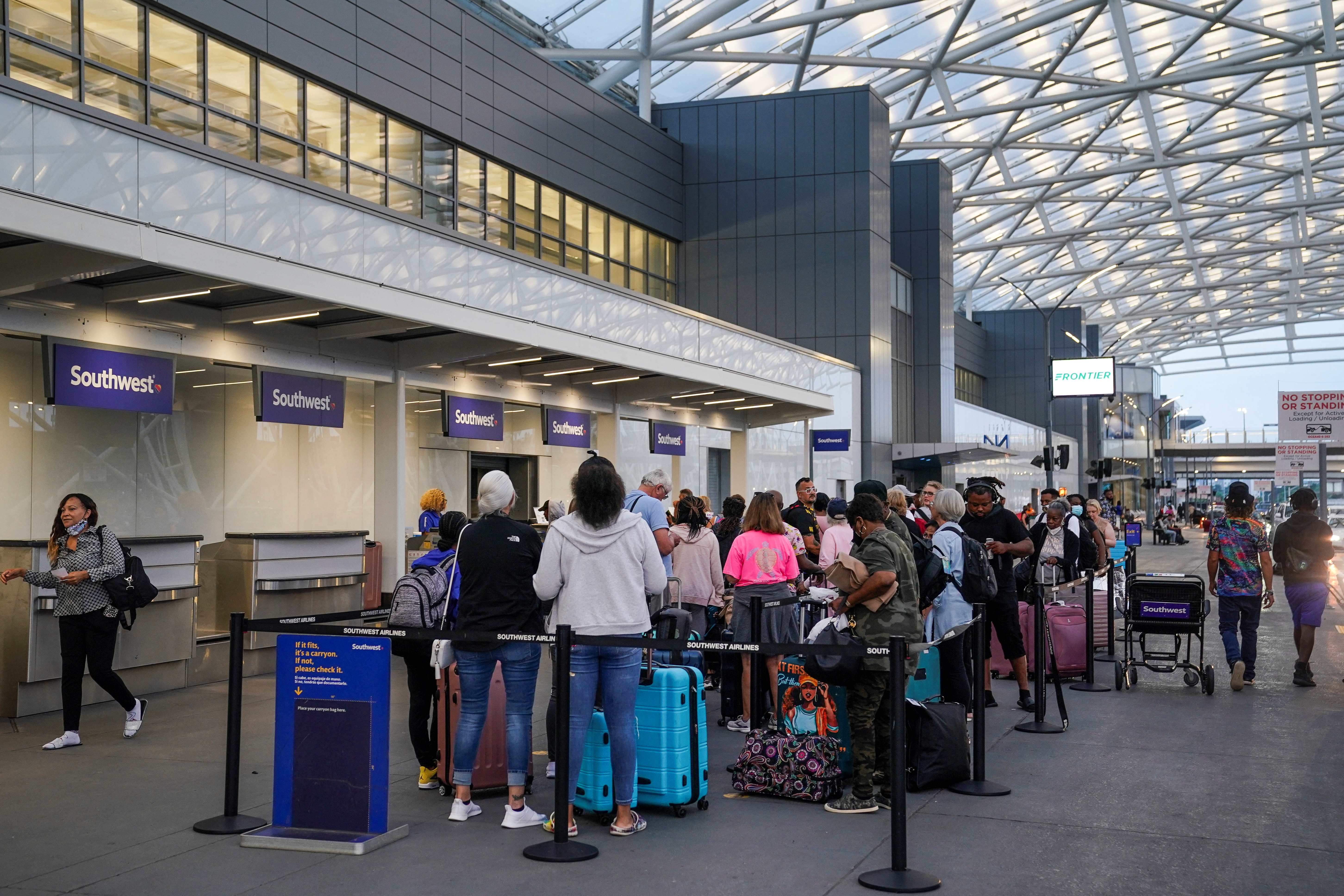
Business Chevron
U.S. less-than-truckload carrier Old Dominion Freight Line reported first-quarter revenue below above Wall Street estimates on Wednesday, as the company hauled less weight and shipments in the quarter.

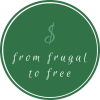
From Frugal to Free
21 Bargain Foods to Savor Abroad
Posted: April 23, 2024 | Last updated: April 23, 2024

Jetting off to foreign lands isn’t just a treat for the soul; it’s often a feast for the wallet, especially when it comes to indulging in local cuisine. Some dishes are not only authentic and delectable in their homeland but also astonishingly cheaper than what you’d shell out back home. Let’s take a gastronomic journey to discover 21 foods that offer the most bang for your buck abroad, complete with the average cost comparisons that’ll have you booking your next flight quicker than you can say “Bon Appétit!”

#1. Pho in Vietnam
In Vietnam, a steaming bowl of pho brimming with fresh herbs, rice noodles, and thinly sliced beef can cost as little as $1.50 on the bustling streets of Hanoi or Ho Chi Minh City. Back in the U.S., you’re looking at $10-$15 for a comparable experience, making the original a savory steal.

#2. Pizza in Naples, Italy
Where better to enjoy a pizza than in its birthplace? A traditional Margherita in Naples might set you back around €4 ($4.70), while in New York City, a similar quality pie hovers around $14. That’s a tasty saving for eating pizza in its prime locale.

#3. Sushi in Tokyo, Japan
Tokyo offers sushi aficionados conveyor belt restaurants where plates start at around 100 yen ($0.90) each. Contrast this with the average sushi roll in an American sushi bar, which can cost $6-$8, and Tokyo’s offering is a clear winner for your palate and pocket.
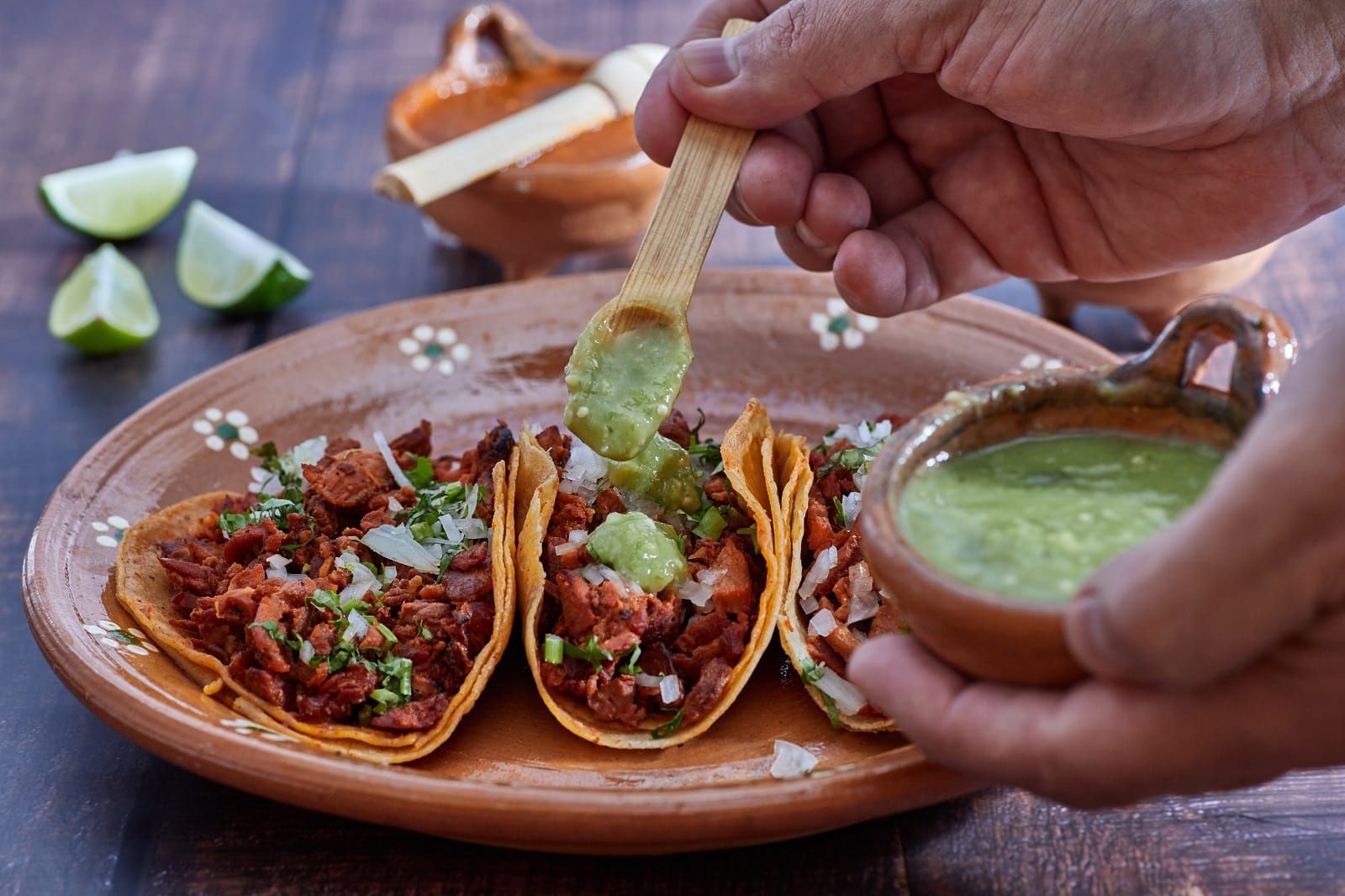
#4. Tacos in Mexico City, Mexico
In the heart of Mexico City, a street vendor might charge you around 20 pesos (just over $1) for a freshly made taco, packed with flavor and authenticity. In contrast, a taco of similar quality in Los Angeles could easily cost $3-$4.

#5. Pad Thai in Bangkok, Thailand
The streets of Bangkok are famous for their delicious and affordable Pad Thai, with servings costing around 40 baht ($1.20). To enjoy this iconic noodle dish back in the States, you’d likely pay $10-$15 at a Thai restaurant.
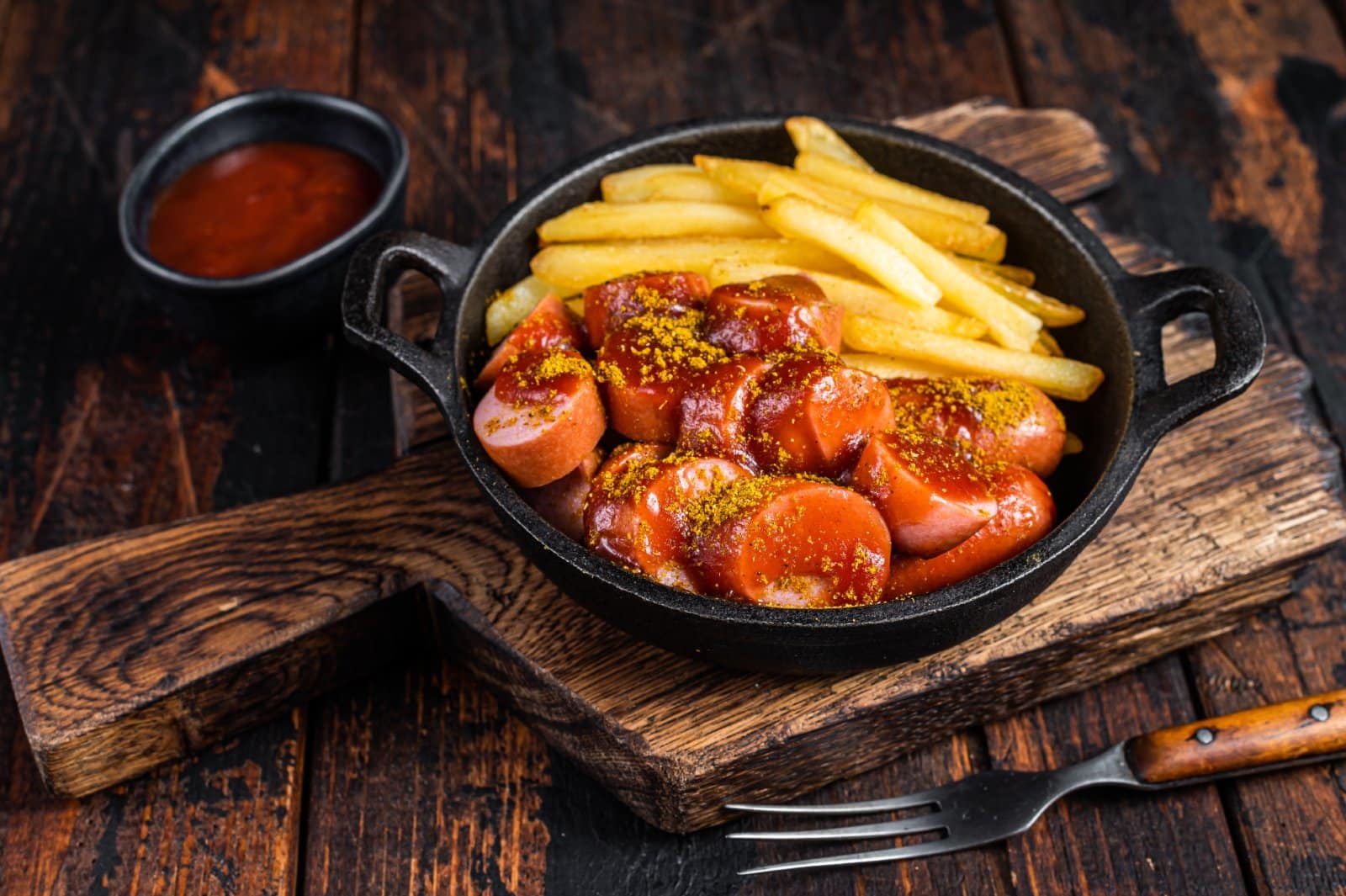
#6. Currywurst in Berlin, Germany
This beloved German street food, a steamed and fried pork sausage cut into slices and doused in curry ketchup, costs around €2.50 ($2.95) in Berlin. A similar dish outside of Germany could be upwards of $7, lacking the authentic Berlin flair.
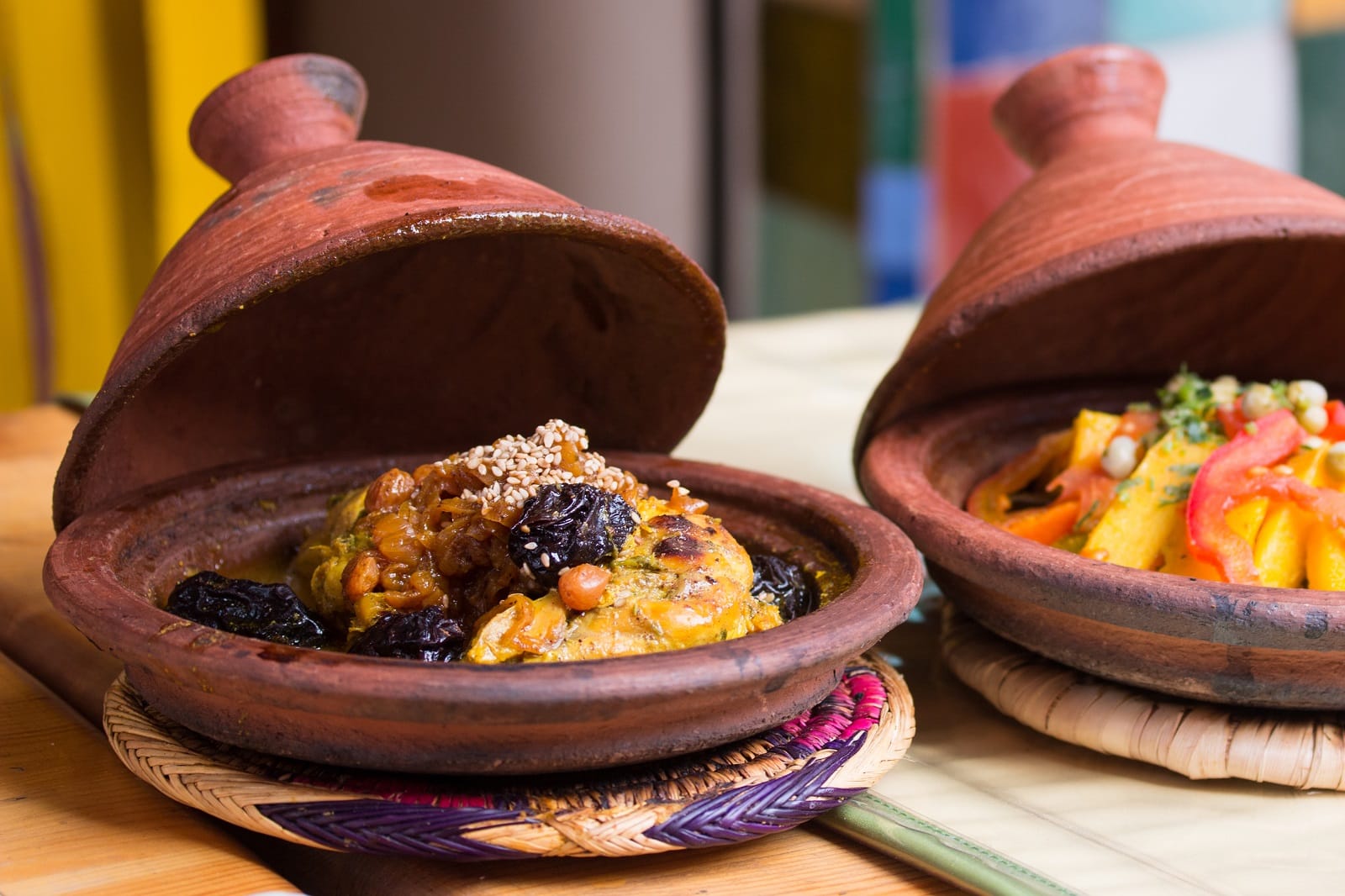
#7. Tagine in Marrakech, Morocco
Savoring a traditional Moroccan tagine in Marrakech might cost you about 30 dirhams ($3.30), a steal compared to the $20-$25 price tag you’d find for the dish in international Moroccan-themed restaurants.
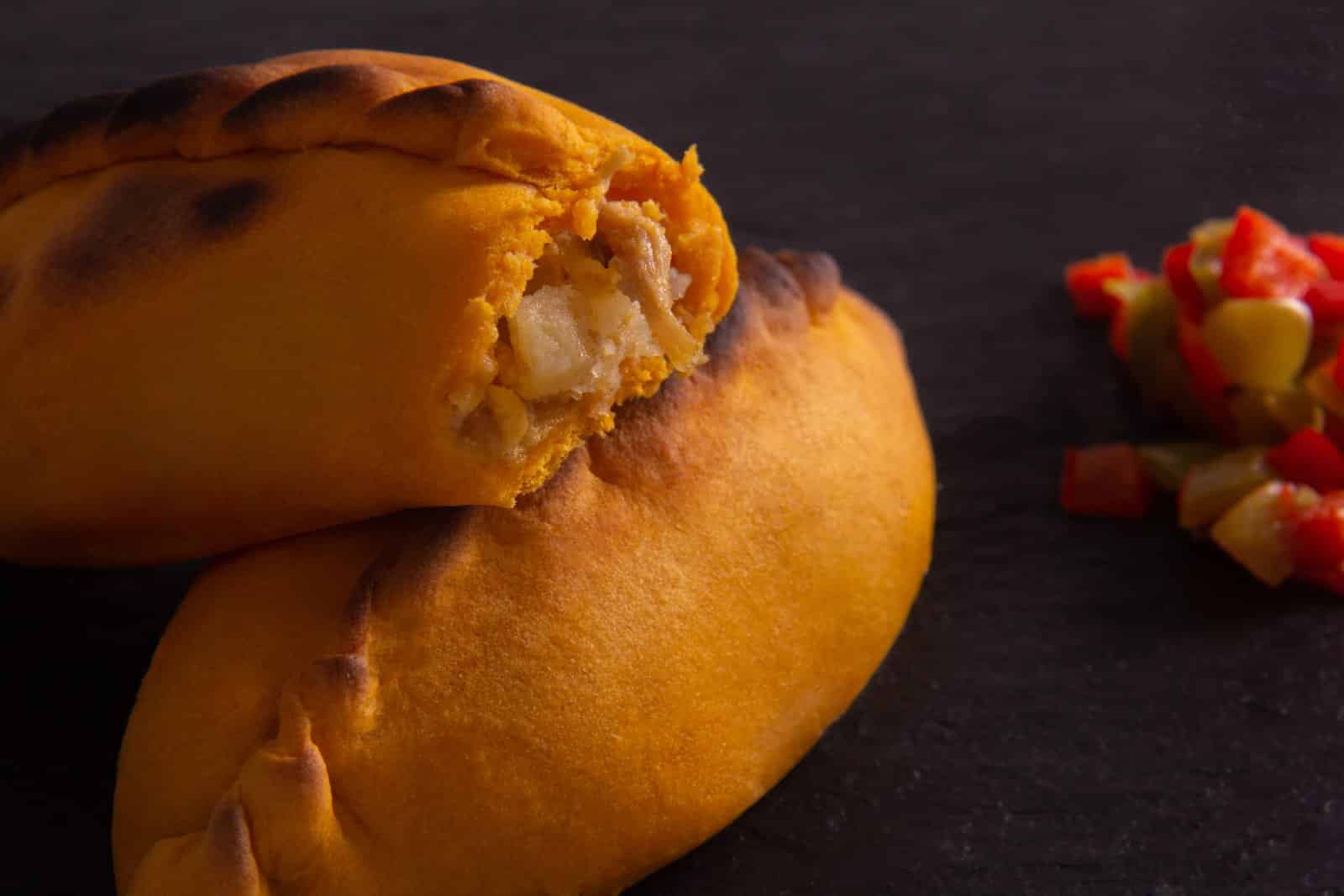
#8. Empanadas in Buenos Aires, Argentina
In Buenos Aires, you can bite into a delicious empanada for as little as 15 pesos ($0.15). Even with the most favorable exchange rates, you’d be hard-pressed to find anything that competes with that price back home, where empanadas can go for $2-$3 each.

#9. Poutine in Montreal, Canada
True Canadian poutine in Montreal goes for about CAD 7 ($5.60) at local eateries. In the U.S., Canadian-themed bars might serve up a less authentic version for around $10-$12.

#10. Baklava in Istanbul, Turkey
The sweet, syrupy layers of baklava in Istanbul are not only more authentic but significantly cheaper, with prices around 10 lira ($1.30) for a generous serving. Stateside, expect to pay upwards of $5 for a smaller, often less fresh piece.
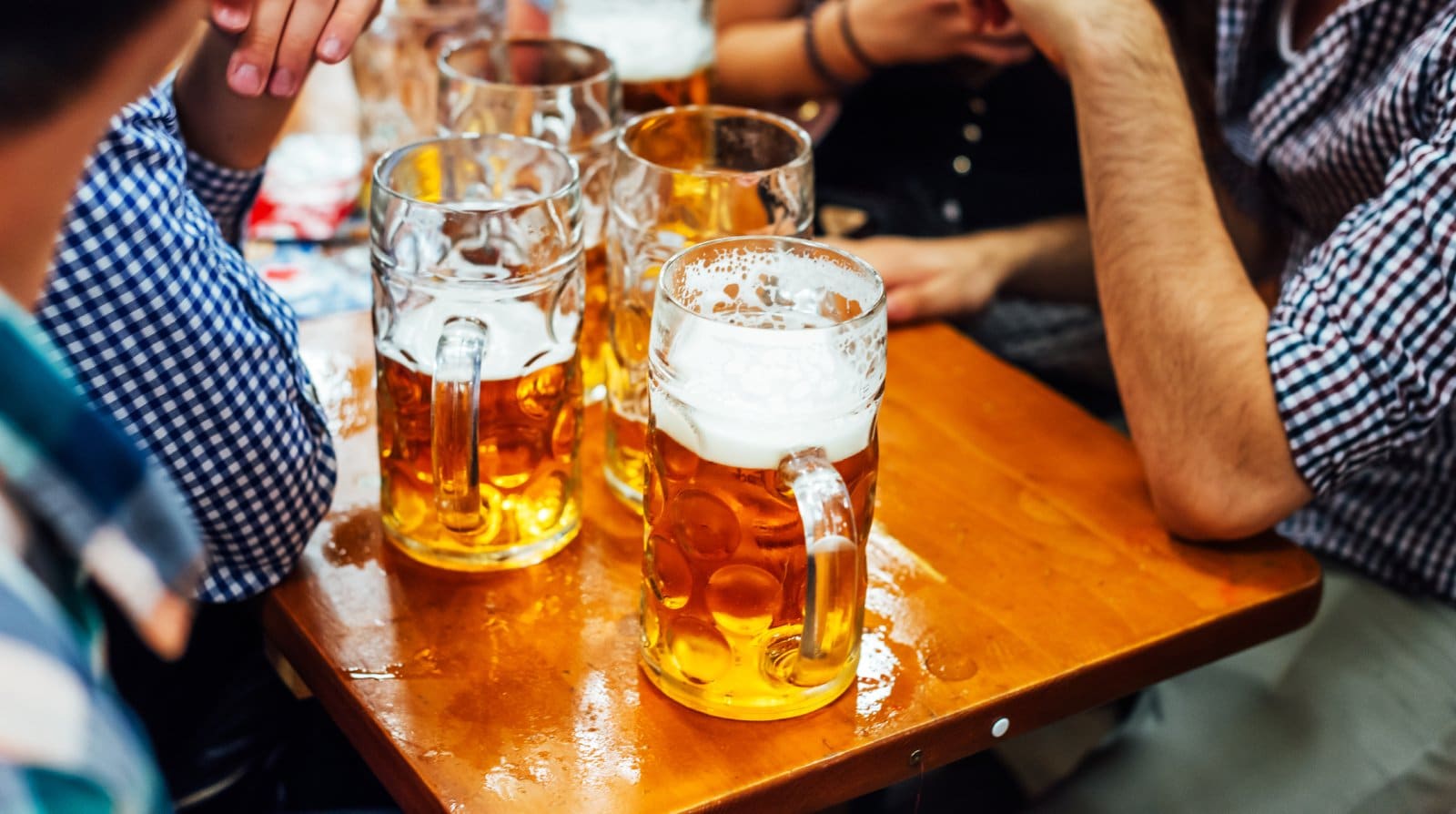
#11. Beer in Prague, Czech Republic
Prague is a beer lover’s paradise, where a pint of the local brew can be as cheap as 30 Czech koruna ($1.30). Compare that to the $5-$7 you’d pay in a U.S. bar for an imported beer of similar quality.
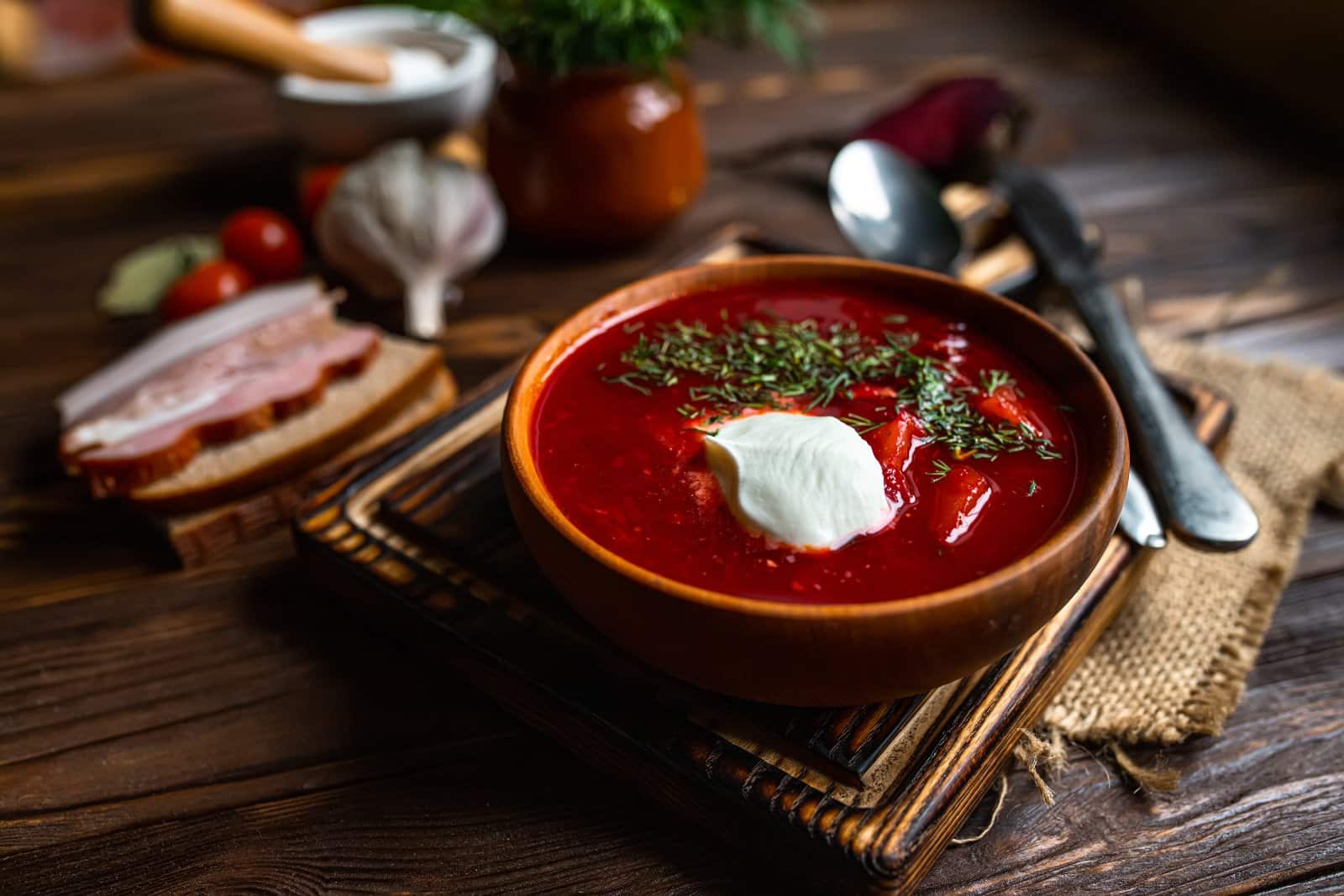
#12. Borscht in Kyiv, Ukraine
A hearty bowl of borscht in Kyiv costs around 50 hryvnia ($1.80), offering a warming, beet-based delight for a fraction of the international price, which can range from $8-$12.
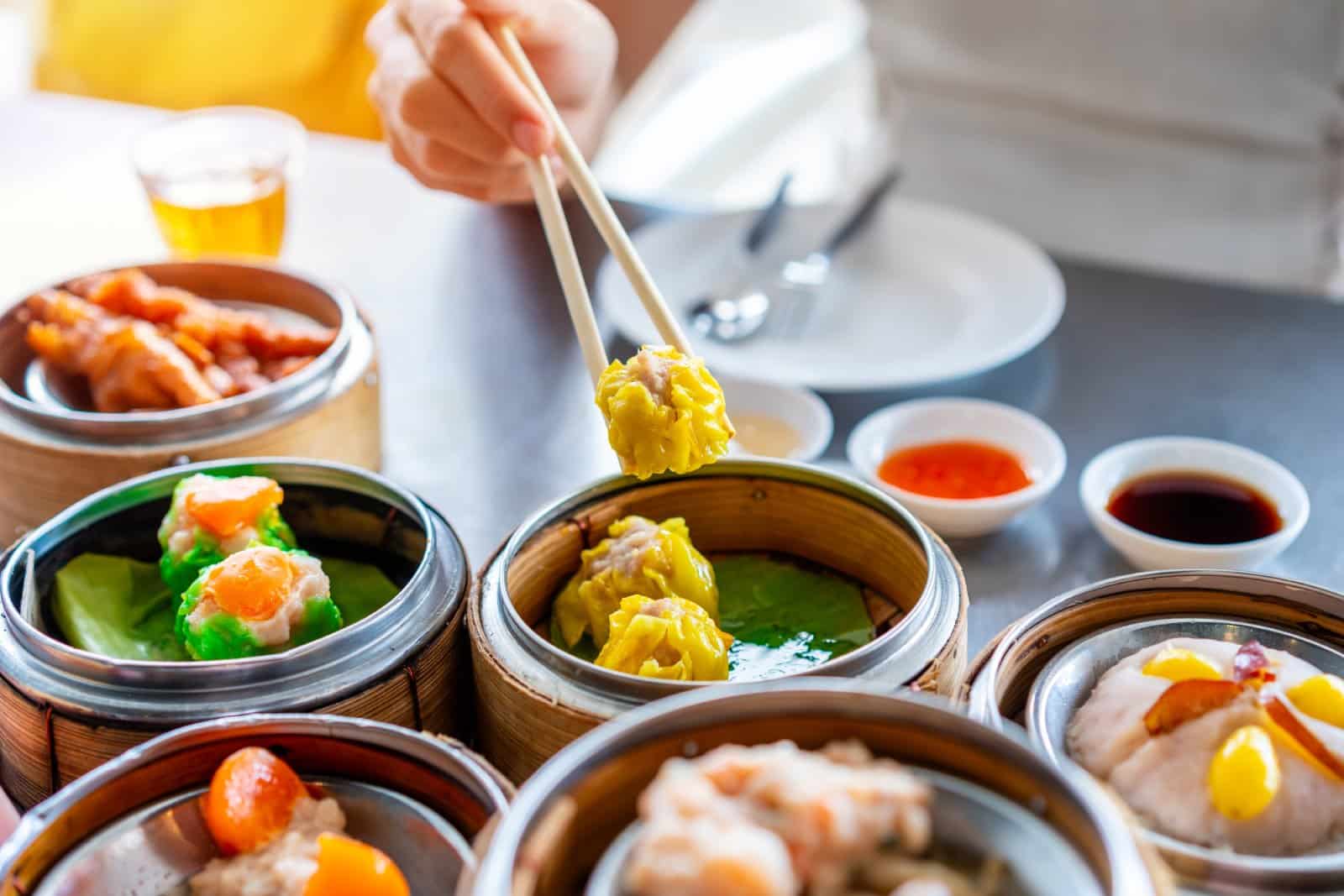
#13. Dim Sum in Hong Kong
Hong Kong’s dim sum teahouses serve up delectable small bites starting at just HK$12 ($1.50) per dish. In contrast, a dim sum dining experience in a Western country can cost $5-$10 per dish.
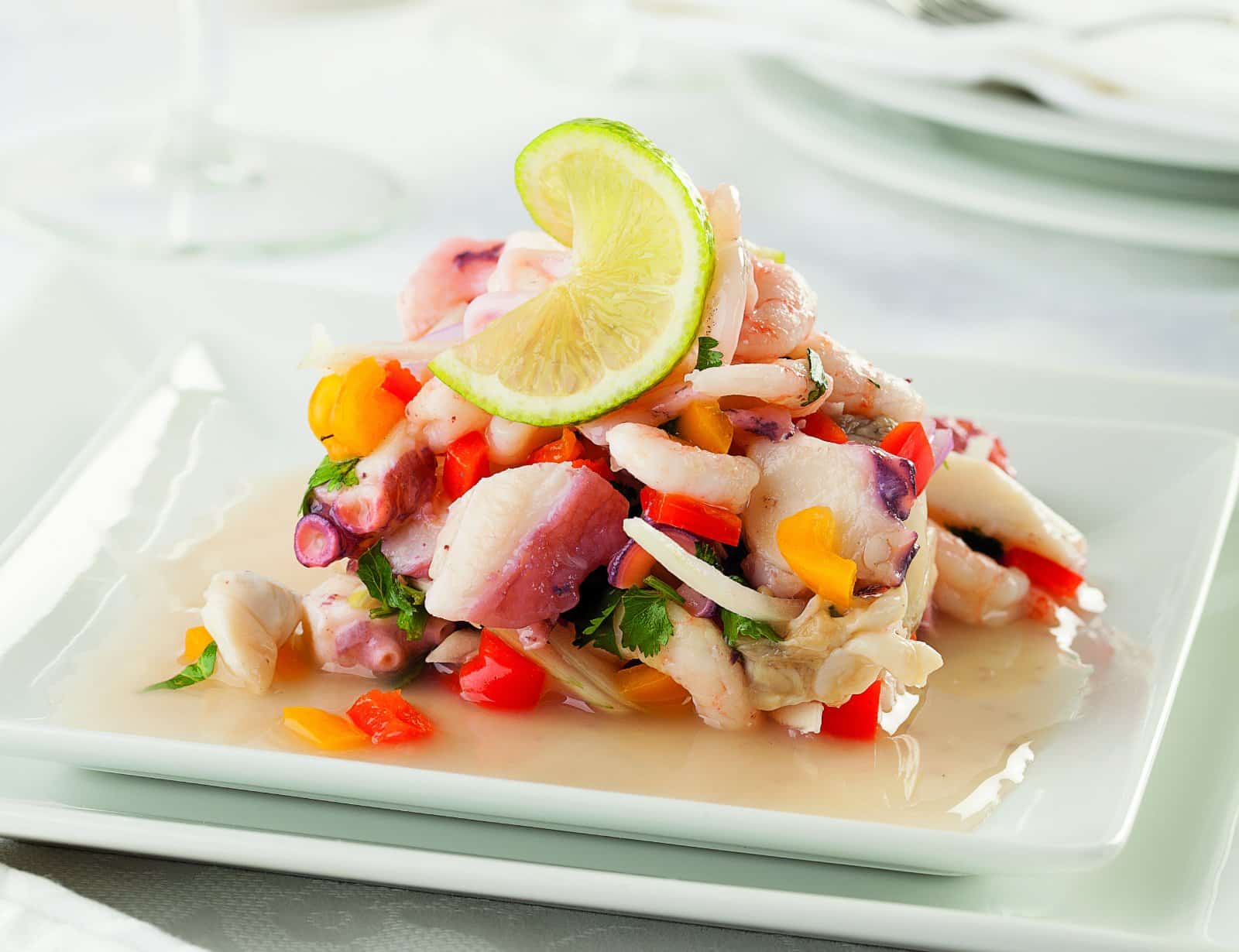
#14. Ceviche in Lima, Peru
In Lima, a fresh, citrusy serving of ceviche costs around 20 soles ($5.20), while enjoying this Peruvian specialty in a U.S. city can easily set you back $15-$20.
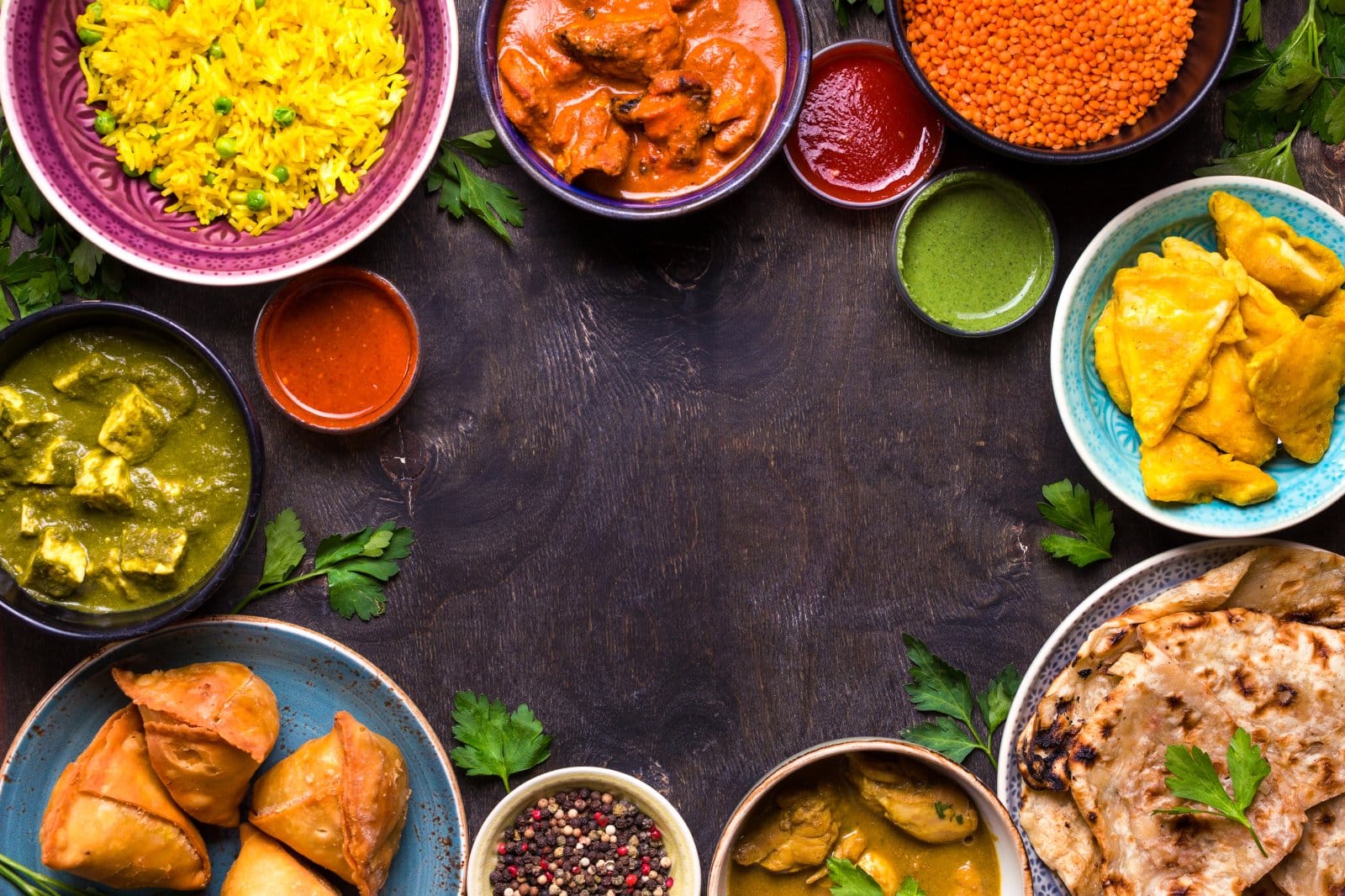
#15. Samosas in New Delhi, India
Sampling a spicy, freshly fried samosa from a street vendor in New Delhi will cost you about 10 rupees ($0.13). The same snack in an American Indian restaurant? Upwards of $3.

#16. Gelato in Rome, Italy
Enjoying a scoop of creamy gelato in Rome can cost as little as €2 ($2.35), a sweet deal compared to the $5 price tag you might encounter in U.S. gelaterias for an arguably less authentic treat.
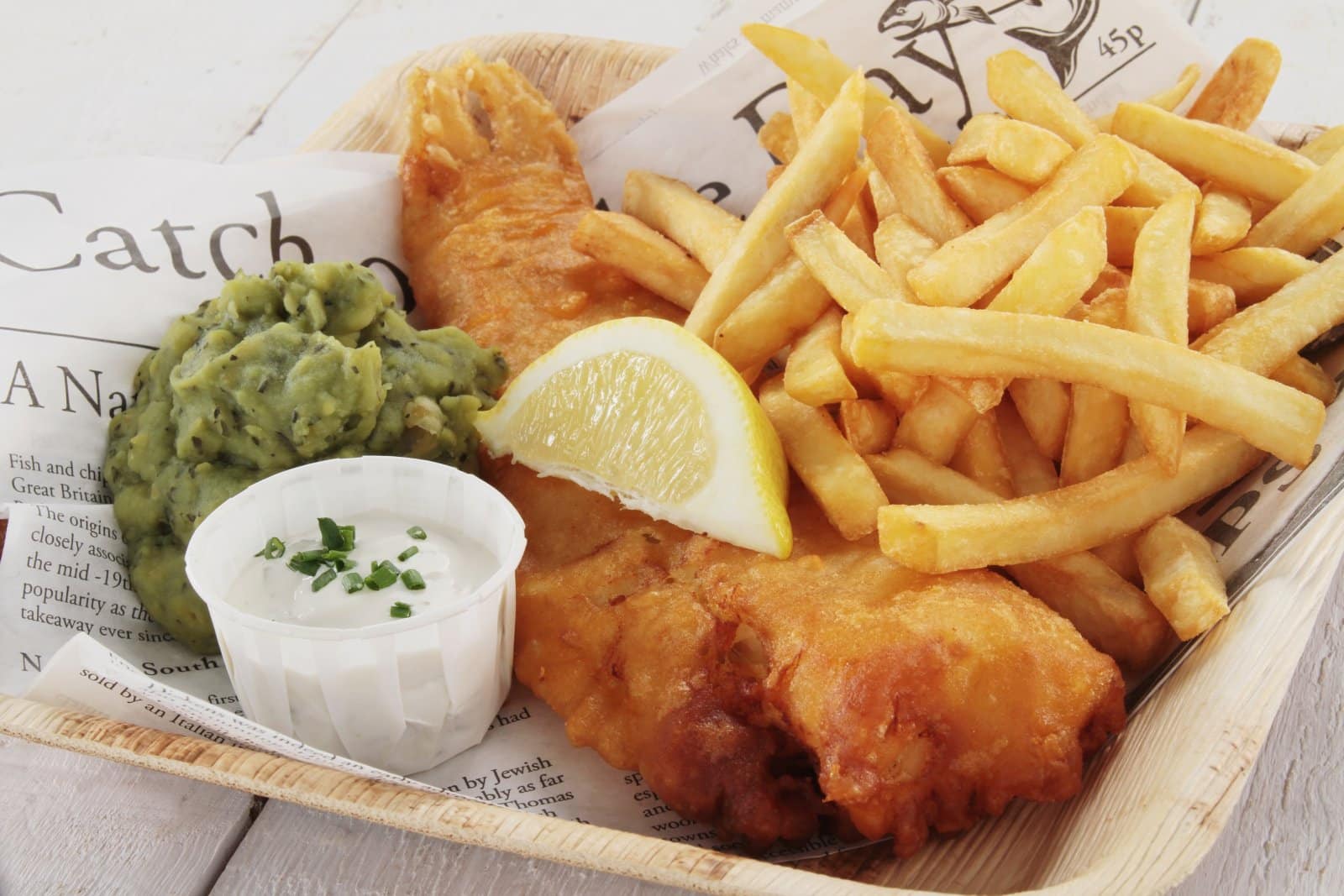
#17. Fish and Chips in London, England
A classic fish and chips meal in London can be found for around £8 ($11), which feels like a bargain compared to the $15-$20 you’d fork out in a British pub overseas, minus the atmospheric charm of the city.
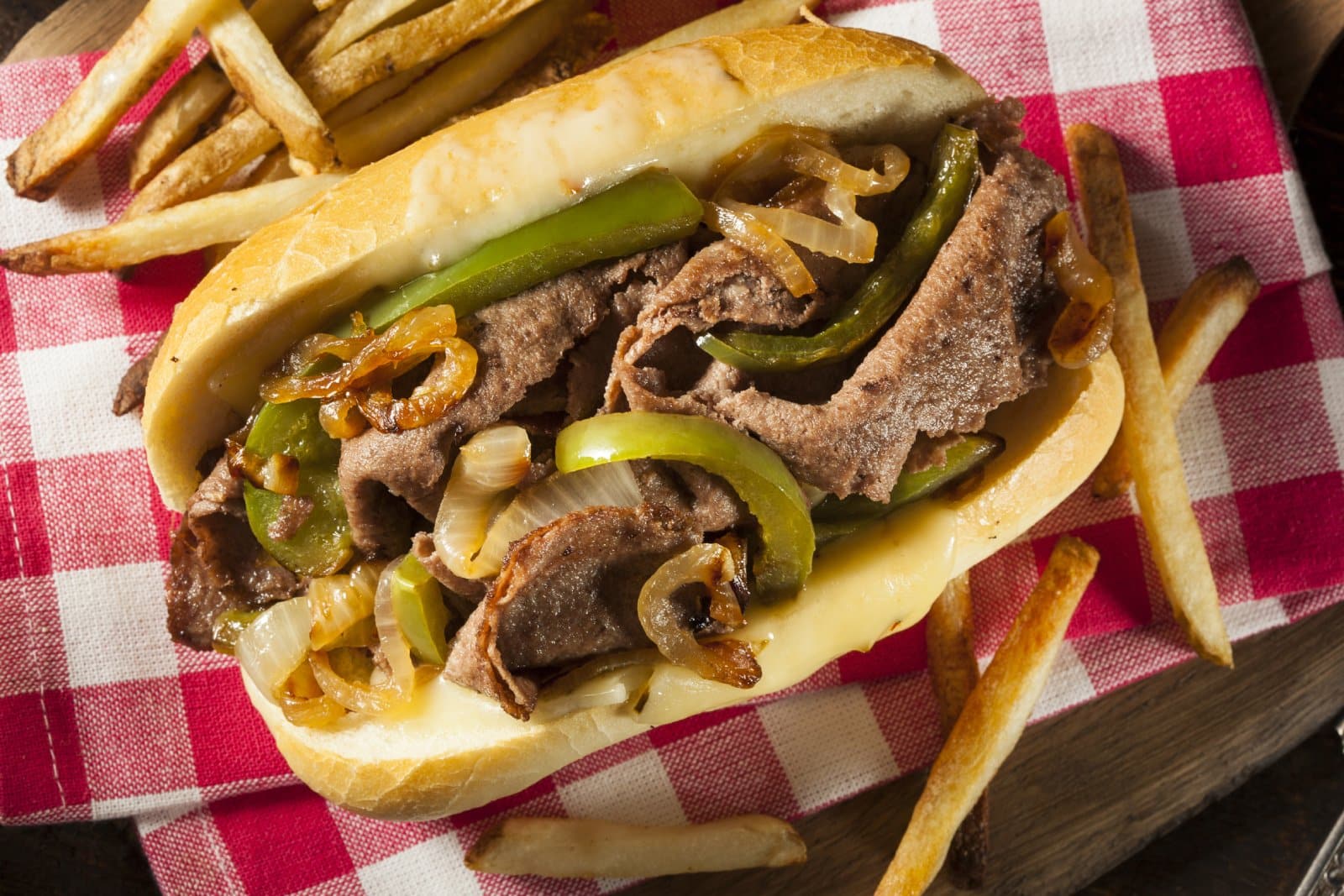
#18. Cheesesteak in Philadelphia, USA
For an authentic Philly cheesesteak experience, expect to pay around $8 in Philadelphia. Outside of its home city, especially overseas, the price—and authenticity—can vary greatly, often reaching $12-$15.

#19. Wine in Bordeaux, France
Sampling a glass of exquisite local wine in Bordeaux might only set you back €3 ($3.53), whereas a similar vintage could cost you over $10 in a wine bar back home.

#20. Croissant in Paris, France
There’s nothing like a buttery, flaky croissant from a Parisian bakery, where you can indulge for just over €1 ($1.18). In the U.S., a comparable pastry might be double the price, without the Parisian ambiance.

#21. Kimchi in Seoul, South Korea
Dive into a bowl of kimchi in Seoul for just a few thousand won (under $1), a significant saving compared to the $5-$7 you’d spend in a Korean restaurant abroad for a side dish portion.

The World is Your Oyster and Your Wallet’s Best Friend
Who says you can’t live the high life on a budget? These 21 foods prove that some of life’s greatest pleasures can come at a fraction of the cost, provided you’re willing to venture to their source. So, pack your bags and bring your appetite—it’s time to taste the world!
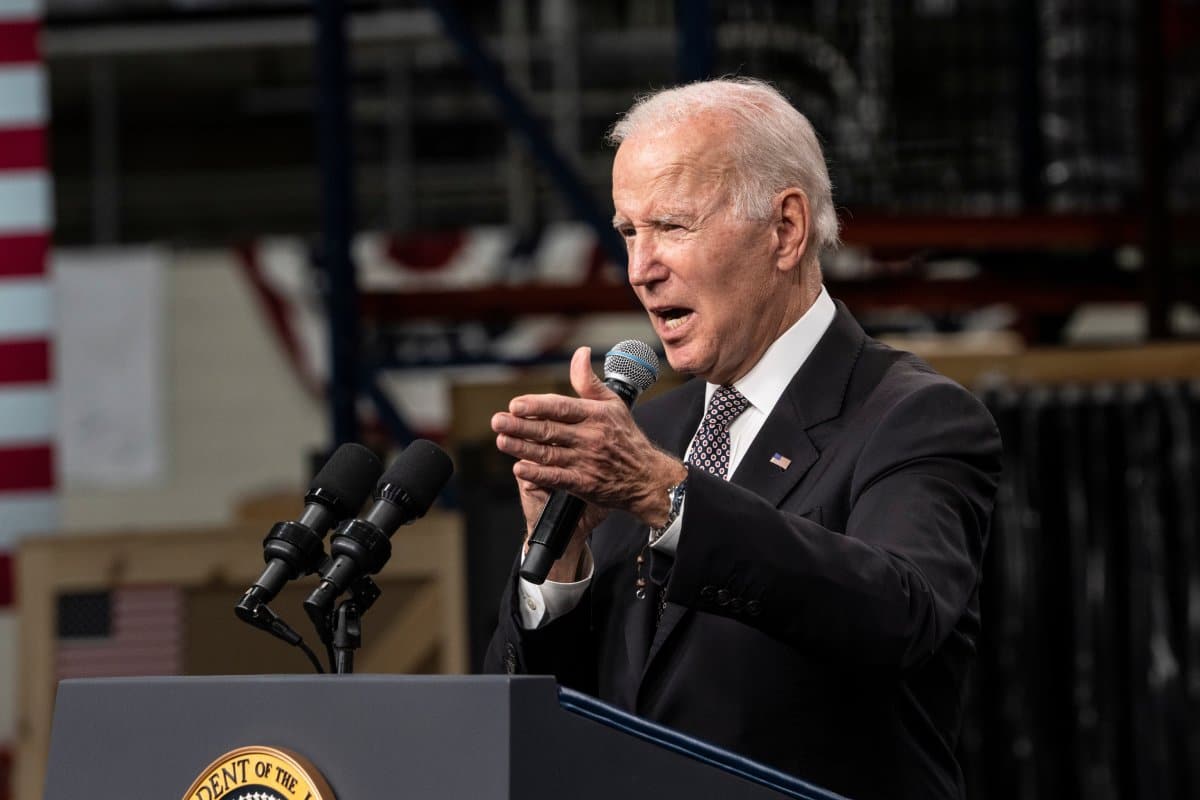
Biden’s New 401(k) Rule: Employers Frustrated as Retirement Planning Responsibilities Shift
The latest Biden administration rule on 401(k) plans is reshaping how employers manage retirement plans. It’s a complex scenario requiring a fresh understanding of fiduciary duties and provider relationships. This rule aims to protect employees but also imposes new responsibilities on employers. Biden’s New 401(k) Rule: Employers Frustrated as Retirement Planning Responsibilities Shift

Elon Musk: New Immigration Bill ‘Enables Illegals to Vote’
Elon Musk is calling for prosecutions after the text for a new senate bill on immigration was released. Musk accused the new bill of “enabling illegals to vote.” Elon Musk: New Immigration Bill ‘Enables Illegals to Vote’
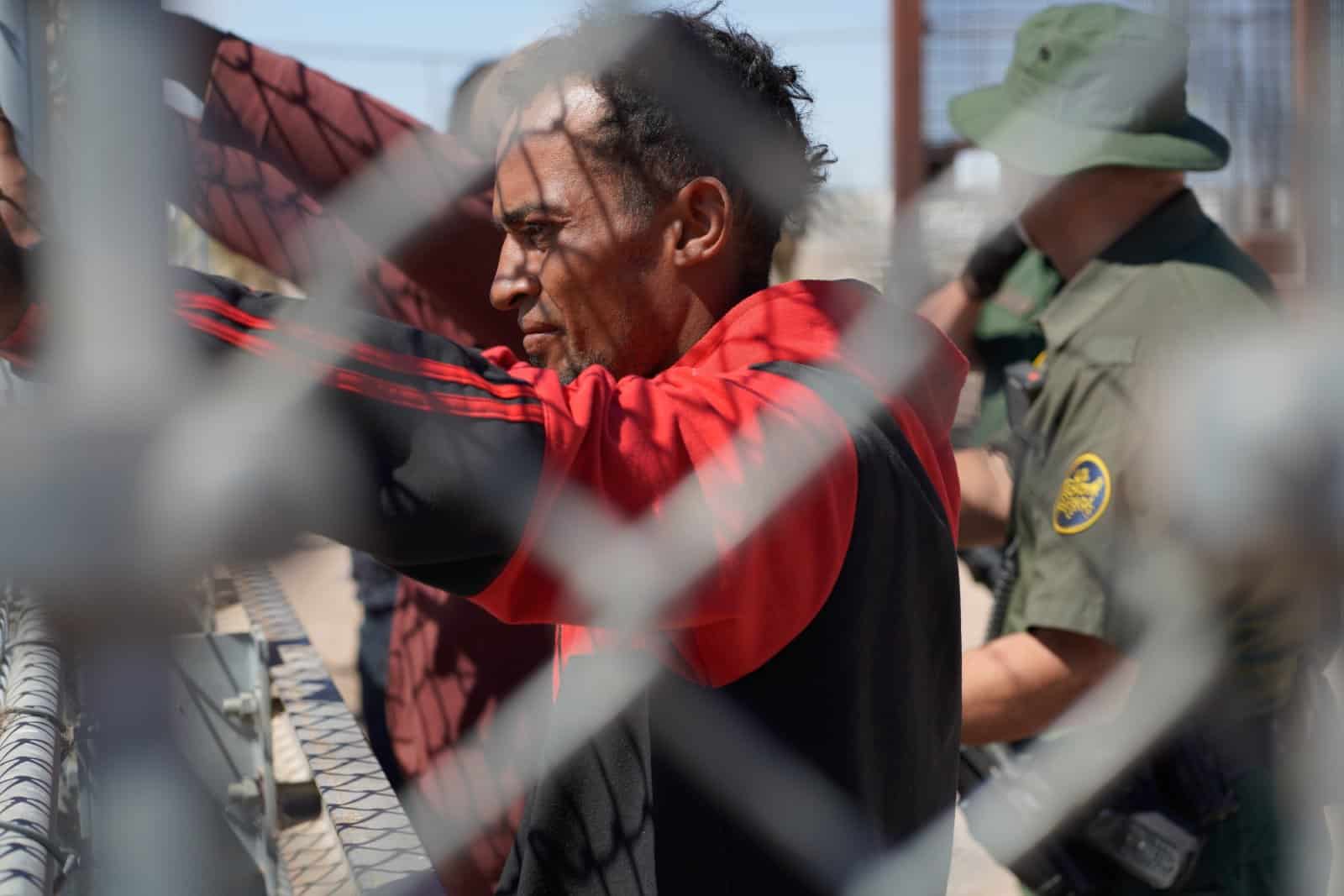
Colorado Officials Reject Sanctuary City Status, Warn Against ‘Dangerous Game’
With increasing numbers of migrants arriving in Colorado, public officials have rejected any notion of the state becoming a sanctuary for migrants and asylum seekers. Colorado Officials Reject Sanctuary City Status, Warn Against ‘Dangerous Game’

Disney Challenges DeSantis’ “Don’t Say Gay” Rule With a Hefty Lawsuit
Disney is set to appeal its refusal for a lawsuit against Ron DeSantis, who stripped the company of its rights for disagreeing with the Governor’s views on the teaching of sexual orientation in classrooms. Disney Challenges DeSantis’ “Don’t Say Gay” Rule With a Hefty Lawsuit
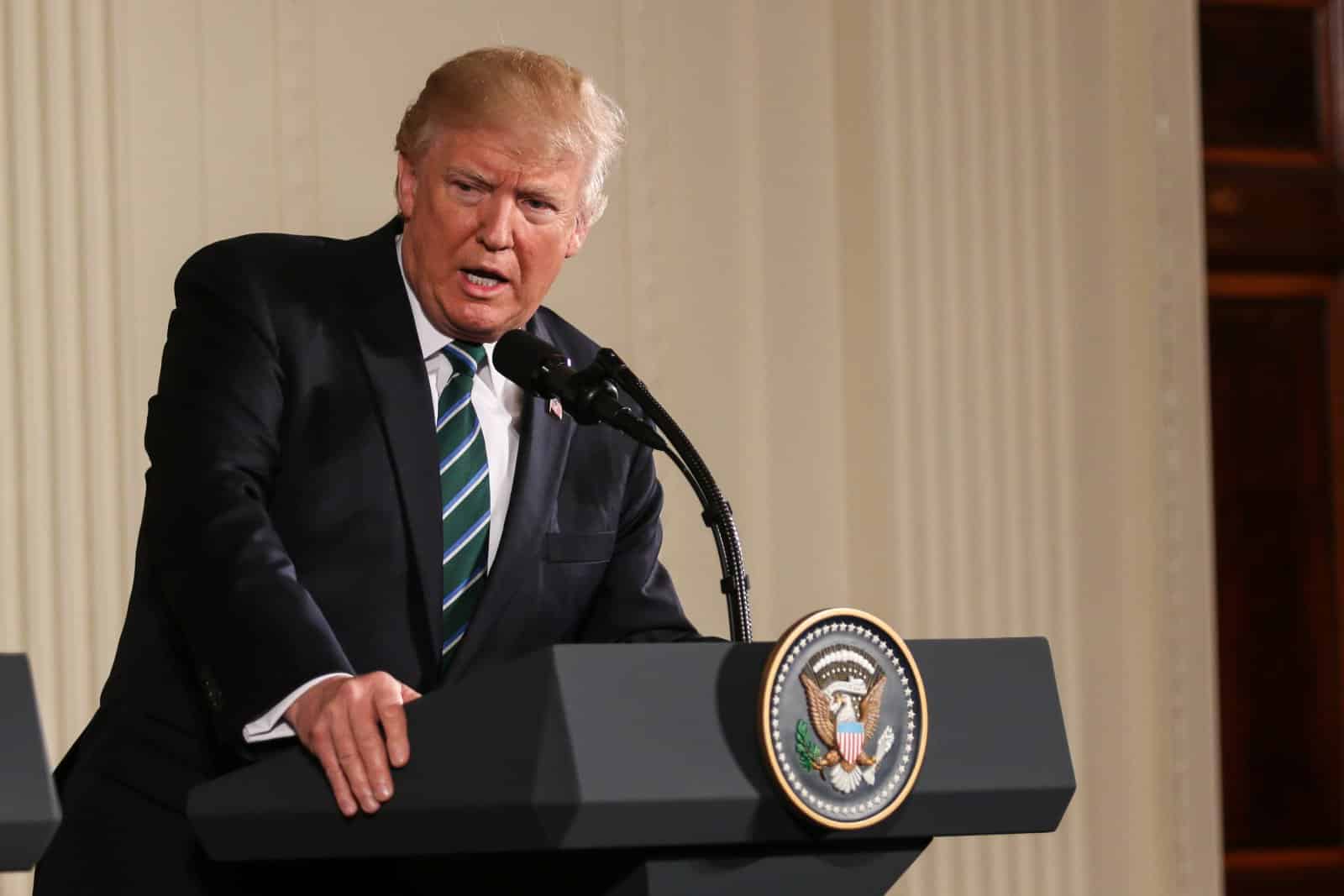
Trump on the Attack as 21 Million Americans Flock to Obamacare, Biden Pushes Forward
An unprecedented surge in health plan enrollments has reignited former President Donald Trump’s commitment to dismantling the program should he secure the GOP nomination once again. Trump on the Attack as 21 Million Americans Flock to Obamacare, Biden Pushes Forward
The post 21 Bargain Foods to Savor Abroad first appeared on From Frugal to Free .
Featured Image Credit: Shutterstock / natalia_maroz.
The content of this article is for informational purposes only and does not constitute or replace professional financial advice.
For transparency, this content was partly developed with AI assistance and carefully curated by an experienced editor to be informative and ensure accuracy.
More for You
North Korea Throws Down Gauntlet to US and Allies
Harvard psychologist shares 5 toxic things 'highly narcissistic' people always do in relationships
Fmr. U.S. Supreme Court Justice on presidential immunity
18 Funny Examples of ‘If It’s Stupid and It Works, It’s Not Stupid’
Why You Should Think Twice Before Pouring Boiling Water Over Ant Hills In Your Yard
Frightening map shows the best parts of the United States to withstand a nuclear apocalypse
Carbine vs Rifle: What Exactly Is the Difference?
We Ordered 7 Fast-Food Breakfast Sandwiches to Find the Best One
Egyptian Child Mummies Reveal High Prevalence of an Ancient Sickness
Should you leave your laptop plugged in all the time?
What Does It Mean if You Remember Your Dream When You Wake up
Meet 2024's ‘American Idol' Top 10 Contestants
I moved my family from California to Austin, Texas, and regretted it. Here are 10 things to consider before making an expensive mistake.
Supreme Court Justice Ketanji Brown Jackson says it’s ‘cruel and unusual’ to criminalize homelessness
U.S. Speaks Out About 'Mass Grave' Found in Gaza
Map reveals best places to live in the US if nuclear war breaks out
Taco Bell brings back beloved menu item for limited time only
Popular Ice Cream Brand Announces Layoffs After Filing for Chapter 11 Bankruptcy
Dealership Employee Reportedly Wrecks Ferrari F40 in Tunnel
Rock & Roll Hall of Fame 2024 inductees
We've detected unusual activity from your computer network
To continue, please click the box below to let us know you're not a robot.
Why did this happen?
Please make sure your browser supports JavaScript and cookies and that you are not blocking them from loading. For more information you can review our Terms of Service and Cookie Policy .
For inquiries related to this message please contact our support team and provide the reference ID below.

IMAGES
VIDEO
COMMENTS
1 EUR: 1,450 KRW. 1 GBP: 1,675 KRW. 1 AUD: 875 KRW. Yes, this does make calculating the prices of things rather tricky when you're in South Korea! For me, I kept in mind that 10,000 KRW is roughly 8 USD (€7, £6, or 11.50 AUD) and it made figuring out the prices of things far easier.
All of these South Korea travel prices are calculated from the budgets of real travelers. Category ... While meal prices in South Korea can vary, the average cost of food in South Korea is $28 (₩38,176) per day. Based on the spending habits of previous travelers, when dining out an average meal in South Korea should cost around $11 (₩15,270 ...
The cost of petrol in South Korea is around $1.32 per liter, diesel about $1.14. Rental costs do get cheaper if you rent the car over multiple days, but not by much. Renting a car in advance may also yield discounts. In conclusion, however, renting a car is not a good way to travel around South Korea cheaply.
Asia / South Korea /. For a trip to South Korea, you should plan for daily costs anywhere between $43 to $280. If there's two of you traveling, your daily expenses could range from $87 to $559. These price ranges are based on the average daily spending of $110 (₩147,903) per person which comes from the travel expenses of other visitors.
Luxury Solo Traveler. The high-end price for one person to visit South Korea for a week is $2,421-$9,507 ($346-$1,358 per day) Food, Travel, and Sightseeing: $68 to $138 per day for one person's daily expenses. Flights: $1,333 to $3,303 for first class. Lodging: $102 to $202 per night for one 4 or 5-star hotel room.
Average Trip to South Korea Cost in 2024. An average one-week trip to South Korea for two people will cost around $4,900: Average Accommodation Cost: $100 per night. Average Flight Cost: $1,300 per person. Food, Drink & Activities: $100 per person, per day. Transportation: $200 total.
Here's the full breakdown of our South Korea travel costs. We both shared the same card and cash, but for this breakdown, we'll show you roughly how much the same trip would cost for one person too. Our full South Korea travel costs for 2 people (2 weeks) Korean E-Visa - 20,600₩ (£14)
South Korea Travel Costs. Accommodation - A bed in a hostel dorm with 4-6 beds costs 20,000-25,000 KRW per night, while a bed in a dorm with 8 or more beds costs around 14,000-20,000 KRW. A single private room is around 40,000 KRW, while a double private room is 70,000 KRW.
On average, a two week trip to South Korea costs about $1,541 per person. This is based on the previous expenses of actual travelers, and includes accommodation, food, activities, local transportation, and more. For two people, a two week trip costs $3,081. A one month trip to South Korea costs about $3,301 per person on average, based on the ...
My South Korea trip budget for 3 weeks was 1,300,000 KRW (£860 / $1,100). Korea budget travel is possible at 60,000 KRW (£41 / $51) per day. This figure is based on a budget travel style of staying in dorms, eating cheaply where possible, and doing activities independently rather taking day tours.
Normal Option. If you're on a normal budget, you can spend around $250-$400 per person for a day trip to Korea. This budget includes public transportation, breakfast and lunch, self-guided tours, and admission to some attractions. A regular budget trip of 5 days would cost $1,200. This would break down to $600 for lodging, $300 for food, $400 ...
Cost To Travel In South Korea In 2024. This part of the South Korea travel guide will help you understand some of your expected costs to travel to Korea. The costs to travel to Korea include flights, accommodation, food, drinks, transportation, activities, sim cards, visas, souvenirs, travel insurance, and lots more.
South Korea's cost of living is on the rise, but it's definitely still possible to visit on a budget. Between its vast and affordable transit system, wide range of dining options and abundance of low-cost activities and attractions, South Korea can prove a relatively inexpensive travel destination.. To maximize your savings, here's a guide full of helpful pointers to visiting South Korea on a ...
A lot of the best things to do in South Korea are free. However, there definitely are some attractions that cost money - entry fees to a museum or an art gallery are usually around ₩19,000 - ₩50,650 per person. If you want to do organised day trips or join smaller tour groups to learn more about some of the sites, budget around ₩108,000 per activity per person.
However, even in these areas, you can find budget-friendly guesthouses, known as "minbak" in Korean, where you can get a private room at a reasonable cost. The average cost of a budget hotel or guesthouse in South Korea ranges from 40,000 to 70,000 Korean Won (KRW) per night, which is around $35 to $60 USD.
At its narrowest points, South Korea is just 140mi (225km) wide, and 200mi (322km) from top to bottom. But it feels even smaller than it looks due to its superb public transport system. South Korea is similar in size to my home country of Ireland, yet is far easier to traverse due to something Ireland badly lacks - bullet trains.
Average Couple's Trip. The average cost for a couple to visit Seoul for a week is $3,462-$5,134 ($495-$733 per day) Food, Travel, and Sightseeing: $74 to $150 per day for two people's daily expenses. Flights: $1,396 to $3,092 for economy. Lodging: $62 to $62 per night for one 2 or 3-star hotel room. or $55 to $67 per night for a 1-bed ...
Accommodation prices in South Korea vary depending on the city, neighborhood or tourist season. For example, the average price of accommodation in Seoul (April 2024) ranges from 50856 KRW (37 USD) per night in a hostel to about 181846 KRW (132 USD) in a 3-star hotel. The price of a night in a luxury hotel is an expense from 327900 KRW (239 USD ...
The cheapest ticket to South Korea from the United States found in the last 72 hours was $461 one-way, and $795 round-trip. The most popular route is Los Angeles to Incheon Intl and the cheapest round-trip airline ticket found on this route in the last 72 hours was $853. Which airlines fly to South Korea?
How expensive is Seoul, South Korea 서울? In this budget travel guide, I break down my spending over one day in Seoul. I show the type of costs you can expect ...
Food Budget in Seoul Average Daily Costs. Calculated from travelers like you. While meal prices in Seoul can vary, the average cost of food in Seoul is $30 (₩41,265) per day. Based on the spending habits of previous travelers, when dining out an average meal in Seoul should cost around $12 (₩16,506) per person.
Enroll in the Smart Traveler Enrollment Program (STEP) to receive security messages and make it easier to locate you in an emergency. Call us in Washington, D.C. at 1-888-407-4747 (toll-free in the United States and Canada) or 1-202-501-4444 (from all other countries) from 8:00 a.m. to 8:00 p.m., Eastern Standard Time, Monday through Friday ...
A community for discussion about travel in South Korea Members Online ... You could go way lower than that by eating at local restaurants for modest dishes (eg: bbq gets expensive, fancy seafood boil things gets expensive, drinking gets expensive). Typical stews are about $15 at local restaurants, gimbap and snacks could be $3-$5 but coffee ...
The South Korean and American flags fly next to each other at Yongin, South Korea, August 23, 2016. Picture taken on August 23, 2016. Courtesy Ken Scar/U.S. Army/Handout via REUTERS/File Photo ...
Provided by Elpasony. #21. Kimchi in Seoul, South Korea. Dive into a bowl of kimchi in Seoul for just a few thousand won (under $1), a significant saving compared to the $5-$7 you'd spend in a ...
April 16, 2024 at 3:01 AM PDT. Listen. 2:04. South Korean authorities issued a rare warning to participants in the foreign-exchange market after the won briefly depreciated to the 1,400 mark ...